First edition 2025 is published and en route to readers. On the cover...Giuseppe Garibaldi!
This is an awesome edition! Full of wonderful articles, commentary and images!
- Call with your questions or comments at 866-677-7466 or email help@flprimo.com.
|
The Latest News…From an Italian American Perspective:
Note: Content on the PRIMO web site is different from the print edition of PRIMO magazine. To read the latest articles in the newest print edition of PRIMO, please subscribe today.
Please remember to update your browser in order to view all material on our web site.
  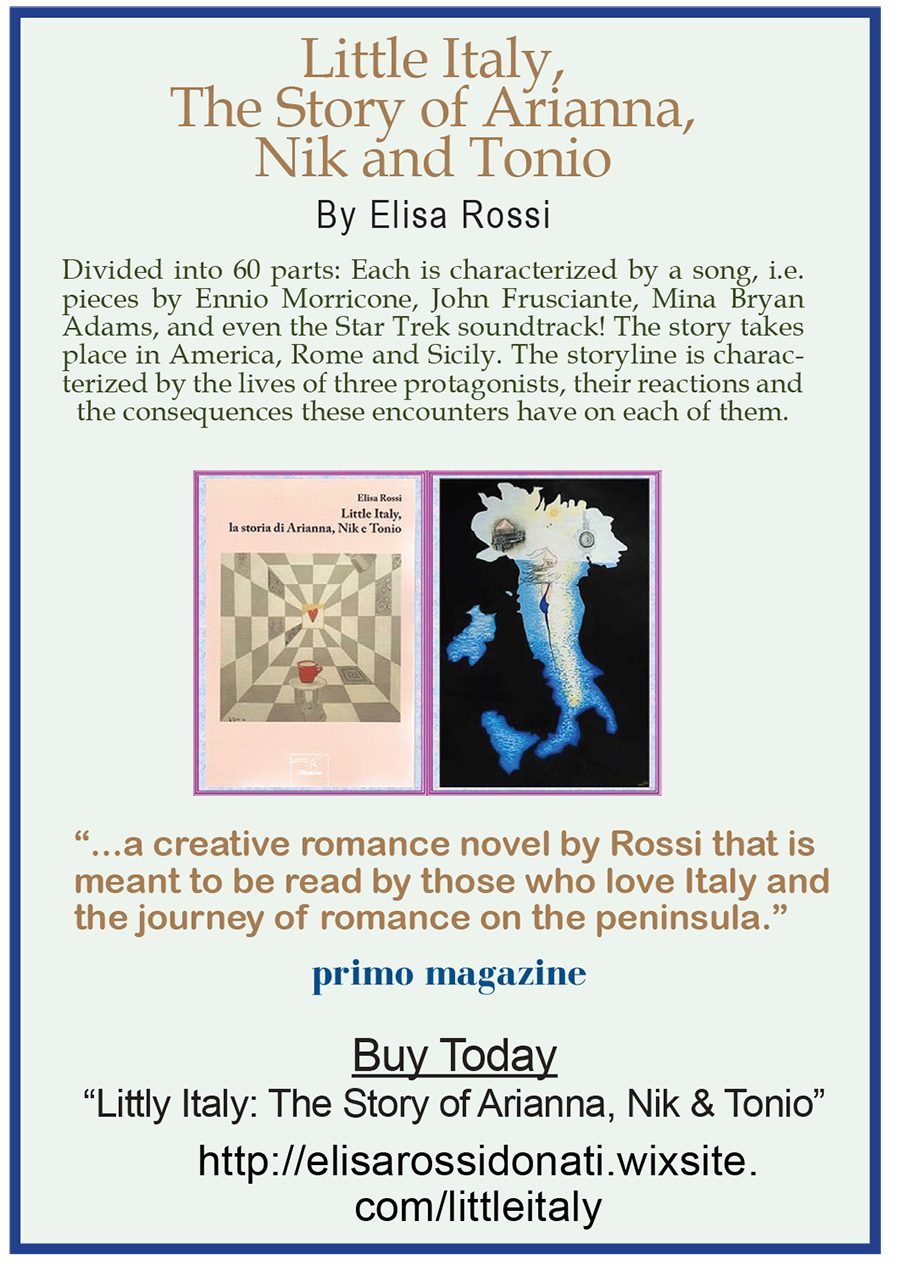  
CUOMO’S COMEBACK CONTINUES
Never Mind Defeat in the Democratic Primary for NYC, Former Governor Andrew Cuomo Stays in the Race
By Truby Chiaviello
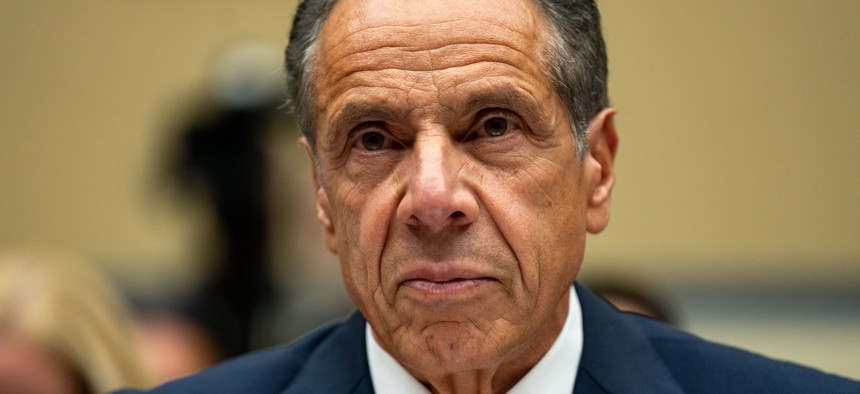
Round two…
Andrew Cuomo, having lost the Democratic primary for mayor of New York, in a stunning upset by state assemblyman, Zohan Mamdani, vows to stay in the race.
Cuomo now runs under the “Fight & Deliver” independent line. The former three term governor of New York embarks on a high-stakes gamble to possibly reshape the city’s electoral dynamics, for better or worse.
You can’t blame Cuomo. Zohan Mamdani ran as a full blown socialist Fidel Castro might have admired. He promised the impossible - rent freeze, free child care, free bus service, government run grocery stores - you name them.
How this upstart was able to beat a scion of a New York family political dynasty relied on new election laws. In 2021, the New York legislature changed the primary date from the first Tuesday after Labor Day, in September, to late June - more specifically, June 24th, this year. With temperatures in the upper 90s, where folks were either on vacation or inside keeping cool, turnout was minimal. Mamdani was able to gain the nomination with just 432,305 votes out of 4.7 million registered voters in New York. Is Mamdani’s victory representative of the people’s will? No, says Cuomo.
Cuomo’s campaign team argues this primary election represented only a small, highly motivated segment of the electorate—just 20 percent! - roughly one million of the five million registered New Yorkers. Cuomo’s strategy hinges on appealing to the larger, less engaged moderate and older voter base who might not participate in low turnout primaries. From his perspective, this group could deliver him a path to victory outside the Democratic Party machinery.
Cuomo’s messaging clearly positions him as a centrist alternative to Mamdani. The backlash is underway. Social media is abuzz with political professionals and amateur observers denouncing socialism and Mamdani. Cuomo hopes to appeal to moderate Democrats, independents, and even center-leaning Republicans, portraying himself as the candidate of experience and practical governance, not a socialist radical.
Mamdani’s path forward will require substantial resources and strategic organization, a Super‑PAC network, and high-dollar donors. He needs to mobilize voters city‑wide. According to initial polling, Mamdani enjoys a 15-point lead over Curtis Sliwa, the Republican nominee, and Mayor Eric Adams, running as an independent. That’s if Cuomo bows out. With Cuomo in, however, Mamdani’s edge collapses—underscoring how precarious is his entire operation.
The implications for Cuomo’s legacy are profound. His 2021 resignation left his political future uncertain, and this independent run could either affirm his resilience or confirm his irrelevance. If he fails, he risks becoming the classic cautionary tale of a once-dominant force who couldn’t adapt. Should he win, he would not only stage a political comeback but also alter how national figures are judged in a fractious age of third-party candidacies and changing primaries.
VICTORY IN NEVADA
State Governor Joseph Lombardo Vetoes Bill to End Columbus Day
- Robert M. Ferrito, Sons of Italy, Praises Lombardo
- “We urge you to continue supporting Italian Americans and our heritage in this battle…”
By Truby Chiaviello
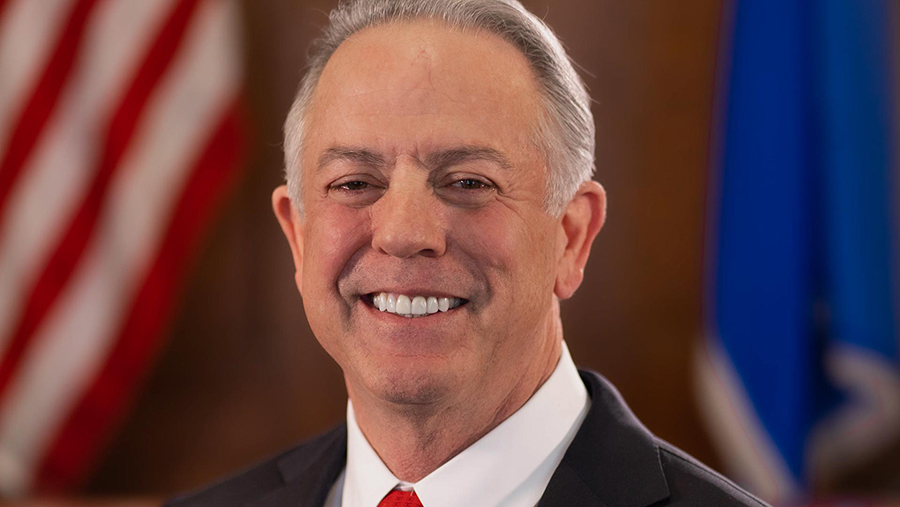
In a significant win for Italian Americans, Nevada Governor Joseph Lombardo vetoed Bill Draft Request 19-7 last week—a measure that would have formally replaced Columbus Day with Indigenous Peoples Day in the state’s calendar. The decision was met with praise from the Italian American community, especially from the Commission for Social Justice (CSJ), the anti-defamation arm of the Order Sons and Daughters of Italy in America (OSDIA).
Robert M. Ferrito, National President of CSJ, sent a letter to Governor Lombardo on June 9, 2025, thanking him for his principled stance and affirming the importance of Columbus Day as a cornerstone of Italian American identity.
“For centuries, Christopher Columbus has been the symbol through which we Italian Americans have celebrated our ethnicity,” Ferrito wrote. “In fact, it is so symbolic that Columbus Day was first proclaimed a national celebration by President Benjamin Harrison in response to the 11 Italian immigrants lynched in New Orleans in 1891—the largest lynching in United States history.”
Ferrito highlighted how Columbus Day is not just about the historical figure but what the day has come to represent: resilience, recognition, and the journey of Italian Americans in the United States. He noted that in 1942, during World War II, the U.S. government chose Columbus Day to formally lift the “enemy alien” designation placed on Italian immigrants.
The CSJ emphasized its full support for honoring Native American communities but opposed doing so by eliminating or replacing a day deeply meaningful to another cultural group.
“With only 12 recognized federal holidays, that leaves 353 possible days to recognize the contributions of Native Americans,” Ferrito wrote. “Though we are in full support of this, it is equally unjust to take away from Italian Americans a day that represents their roots, history, and contributions to this country.”
In his letter, Ferrito echoed the philosophy of Dr. Martin Luther King Jr., stating, “Injustice anywhere is a threat to justice everywhere.” He urged the governor to continue supporting diversity “by addition, not by subtraction or substitution.”
Ferrito concluded by applauding Governor Lombardo’s decision:
“We urge you to continue supporting Italian Americans and our heritage in this battle that has been unjustly thrust upon us, and we also urge and fully support you to recognize the contributions Native Americans made to this great nation… on a day other than Columbus Day.”
The CSJ, established in 1979, retains a mission to fight against anti-Italian discrimination.
Editor’s Note: This article was posted on June 16, 2025. Pictured, Governor Joseph Lombardo, of Nevada. The web site for the Order Sons and Daughters of Italy in America is www.osia.org
RUSSO & RULLI
Basil M. Russo Is Joined by U.S. Rep. Michael A. Rulli In Opposition to Italy’s Dual Citizenship Restrictions
- Italy’s New Law Must Be Quashed
- A New Era in Bipartisanship
- From Different Political Parties, Both Are Committed to Fight Together for Italian America
By Truby Chiaviello

Russo and Rulli.
What sounds like a good title for a TV cop series are the names of principals for a new era in political bipartisanship in the Italian American community.
Saving Columbus Day and Columbus Monuments are not the only items on the agenda. Now comes a call for serious push back against Italy in its rash revision of dual citizenship rules that hurts Italian Americans.
Fighting for Italian Americans to reclaim dual citizenship rights is, once again, Basil M. Russo. He remains one of the great leaders of our community. He is the president of the Conference of Presidents of Major Italian American Organizations (COPOMIAO). He serves as president of the Italian Americans Sons and Daughters of America (ISDA). He presides over the Justinian Forum of the Italian American Bar Association, not to mention the Italian American museum of Cleveland, a museum he founded. He’s a retired judge. He’s a retired city council member of Cleveland; once that city chamber’s majority leader.
Russo is a Democrat.
Now…enter…Michael A. Rulli. Winner of the special election in June 2024 to serve as U.S. Representative of Ohio’s 6th Congressional District. He was reelected to that post in November with an astounding 66 percent of the vote. He serves on the DOGE caucus. He co-chairs the Italian American Congressional Delegation.
Rulli is a Republican.
At the annual meeting of the Conference of Presidents of Major Italian American Organizations, held on June 7, 2025, at the Italian American Museum, New York, Basil Russo enthusiastically introduced Representative Michael A. Rulli as a new force for Italian Americans. The congressman, from Youngstown, Ohio, delivered the gathering’s keynote address.
Representative Rulli spoke with a passion consistent with his Italian blood. He announced his unwavering commitment to restore dual citizenship rights for millions of Italian Americans. He called for the permanent federal recognition of Columbus Day.
The COPOMIAO summit brought together leaders from across America. A new resolution was unanimously adopted to strengthen the organization’s campaign to reverse recent legal restrictions from Italy on dual citizenship.
The resolution authorizes an expanded, bipartisan lobbying effort in both the United States and Italy, along with a broader public awareness campaign. Russo emphasized that unless the law is amended to restore eligibility for great-grandchildren and future generations, COPOMIAO will apply sustained political and grassroots pressure until justice is achieved.
“This can’t be the final word on dual citizenship for Italian Americans,” said Russo. “Our roots and our motherland are the cornerstones of our identity. We will not allow this bond to be permanently broken.”
Congressman Rulli is COPOMIAO’s newest ally in this fight. He voiced strong opposition to the restrictions. He remains committed to discussions with members of the Italian Parliament. He pledged to continue pressing for reform.
“Italian Americans deserve a living, legal connection to their heritage,” added Rep. Rulli. “I stand with the millions whose ancestry goes beyond arbitrary generational cutoffs, and I’ll continue working with Italian leaders to reverse this unjust law. At the same time, we must codify Columbus Day—not just to honor our origins, but to celebrate the exploration, resilience, and contributions that define our community.”
Rulli also pointed out that Columbus Day was established in the aftermath of the largest mass lynching in American history, aimed at Italian immigrants. “To deny us even one day of recognition is not just wrong—it’s deeply offensive,” he said.
The urgency stems from a sweeping change issued by the Italian government on March 28, 2025. An emergency decree, known as the “Citizenship Package,” was enacted with immediate effect. This legislation restricts eligibility for Italian dual citizenship to only the children and grandchildren of Italian citizens. Great-grandchildren and all generations beyond are now excluded.
The law, championed by Foreign Minister Antonio Tajani, was officially confirmed by the Italian Parliament on May 20, making the restrictions permanent.
Those who had already obtained dual citizenship or submitted applications to Italian consulates before the March 27 cutoff are unaffected. Yet, for many others—those of whom spent years gathering, translating, and notarizing family documents—they are now left at a standstill.
A recent national referendum in Italy sought to overturn the law. Due to low voter turnout, including the willful absence of the prime minister, Giorgia Meloni, for the plebiscite, the measure failed to pass.
Editor’s Note: The web sites for COPOMIAO https://copomiao.org
Congressman Rulli’s web site is https://rulli.house.gov
“THEY’RE AT IT AGAIN!”
Members of Massachusetts Legislature Make Another Effort to Quash Columbus Day
- Italian American Alliance Mobilizes to Keep Columbus Day
- Italian Americans Are Asked to Help!
By Truby Chiaviello
The Massachusetts State House held a hearing today regarding two bills, H3292 (sponsored by Rep Christine Barber (D), Somerville) and S2113 (sponsored by Sen Joanne Comerford (D), Northampton) which, if approved, would replace Columbus Day with Indigenous People's Day in Massachusetts.
The hearing was abruptly announced - on Monday.
Members of the Italian American Alliance and other Italian American activists had to move fast to resist another of many attempts by a select number of legislators to quash Columbus Day in Massachusetts.
“They’re at again!” says Tommy Damigella, vice president of the Italian American Alliance (IAA) and chair of that organization’s “Save Columbus” committee.
A veteran of successful fights to save Columbus Day in Massachusetts, New Hampshire, and elsewhere in America, Damigella says, “The bills, H3292 and S2113 must receive favorable recommendation from the Joint Committee on State Administration and Regulatory Oversight in order to move forward in the current legislative session. This hearing is a part of that process.”
The movement to stop Columbus seems forever ongoing by antagonists of the holiday in the legislature. Yet, other elected officials are seeking common ground in Massachusetts. State Representatives Jeffry Turco (D), of Revere, and David DeCoste (R), of Norwell, have introduced a bill - H3411 - to establish Indigenous People's Day on August 9th of each year.
The IAA supports a bill to set aside August 9th as the day to celebrate Indigenous People, says Damigella. This is the date the United Nations established to recognize and honor the native and aboriginal people of the world, including the 574 Indian tribes the U.S. government currently recognizes.
“It is vital to make our voices heard,” says Damigella.
The IAA has provided the email addresses of committee members for Italian Americans to contact in order to express support for Columbus Day in Massachusetts.
James.Eldridge@masenate.gov
Antonio.Cabral@mahouse.gov
Chynah. Tyler@mahouse.gov
Sal.DiDomenico@masenate.gov
Becca.Rausch@masenate.gov
john.velis@masenate.gov
peter.durant@masenate.gov
Estela.Reyes@mahouse.gov
Jennifer.Armini@mahouse.gov
Dennis.Gallagher@mahouse.gov
Leigh.Davis@mahouse.gov
carmine.gentile@mahouse.gov
Hannah.Bowen@mahouse.gov
Colleen.Garry@mahouse.gov
Hannah.Kane@mahouse.gov
Michael.Chaisson@mahouse.gov
Editor’s Note: The web site for the Italian American Alliance are: https://www.theitalianamericanalliance.com
EVVIVA TRUMP!
Italian American Leaders Back President Trump’s Unconditional Support of Columbus Day
- COPOMIAO Gives Full Backing
- Celebrate Indigenous Peoples on a Different Day
By Truby Chiaviello
The Santa Maria. The Nina. The Pinta. The White House!
Italian American leaders join President Trump’s call to save Columbus Day and the legacy of Christopher Columbus in America.
The Conference of Presidents of Major Italian American Organizations (COPOMIAO), has voiced strong support for President Donald Trump’s pledge to fully restore Columbus Day as the America’s sole federally recognized holiday on October 13.
President Trump’s announcement, made on Truth Social, declared his intention to eliminate the dual observance of Columbus Day and Indigenous Peoples’ Day at the federal level. Instead, he committed to honoring only Christopher Columbus, the Italian navigator, long celebrated by generations of Italian Americans.
Under the leadership of Basil M. Russo, COPOMIAO has spent the past five years at the forefront of national advocacy and legal efforts to defend Columbus statues and holidays. The organization emphasized that the holiday remains a vital symbol of Italian American identity, heritage, and historical contribution. President Trump’s declaration is resoundingly approved by COPOMIAO.
Basil Russo, president of COPOMIAO, explained that the organization continues to champion Columbus Day, while recognizing the importance of honoring Indigenous peoples. The group has consistently advocated for such celebrations to take place on alternative dates, such as Native American Heritage Day, observed the Friday after Thanksgiving and first designated by President George W. Bush in 2008, or August 9, which the United Nations recognizes as Indigenous Peoples’ Day.
“Pitting groups against each other—whether through dual recognition or the outright replacement of Columbus Day—was never a true solution,” said Basil Russo. “It was a political maneuver to appease one constituency at the expense of another. We remain committed to protecting Columbus Day while promoting the celebration of all cultures.”
In October 2024, COPOMIAO took a groundbreaking step by partnering with the Native American Guardian’s Association (NAGA) to host a cultural celebration at the Columbus Day Parade in Chicago. The collaboration was widely praised for fostering dialogue and unity between the two communities.
Critics of Columbus statues and holidays often point to associations with colonialism and oppression. However, Columbus’s image was historically embraced by Italian immigrants as a symbol of acceptance and inclusion in American society. His legacy became especially significant following the 1891 lynching of 11 Italian immigrants in New Orleans—the largest mass lynching in U.S. history. In response, President Benjamin Harrison declared the first national Columbus Day in 1892 to ease tensions and honor the contributions of Italians to America.
The inaugural Columbus Day parade in New York City drew more than a million participants and inspired a century of celebrations, monuments, and parades across the country. For many, Columbus Day remains a proud expression of Italian American resilience, identity, and cultural legacy.
Editor’s Note: The web site for COPOMIAO is: https://copomiao.org/. The web site for the Native American Guardians Association is: https://www.nagaeducation.org/ The Truth Social Media site for President Donald Trump is: https://truthsocial.com/@realDonaldTrump/posts/114411157925493893
REVIEWS
Three Books and a Movie
Stories to Savor: New Mysteries, Bold Adventures and a Film Worth Watching

THE CASE OF THE AMOROUS CADDY
A Sergeant Markie Mystery
By Anthony Celano
Published by Boulevard Books
www.boulevardbooks.org.
Available at Amazon.com.
Anthony Celano does it again. His Sergeant Markie mystery series never ceases to entertain readers. The author gives us his latest installment, in “The Case of the Amorous Caddy.” The novel is a gripping plunge into obsession, deception, and murder, all set against the unlikely backdrop of a Staten Island country club. A former NYPD detective with over two decades of law enforcement experience, Celano writes with the confident precision of someone who knows his subject inside and out. His second career, as a novelist, is proving just as compelling as his first.
The story centers on Dennis Bumper, a cabdriver and part-time golf caddy. His quiet, mundane existence takes a dark turn when he falls for a married woman. His infatuation sets off a chain reaction of violence and deceit. As the bodies pile up, Detectives Al Markie and Oliver Von Hess step in to investigate. Celano handles the transition deftly, giving readers a close-up look at the inner workings of a homicide case without ever bogging down the narrative. The detective duo is sharply drawn, particularly Markie, whose methodical approach and dry wit anchor the latter half of the book.What sets “The Case of the Amorous Caddy” apart from standard crime fare is its layered character work. Celano doesn’t simply sketch out heroes and villains; he builds flawed, fascinating people whose decisions—however misguided—are rooted in recognizable emotion. Bumper’s inner world is rendered with unsettling clarity. You don’t like him, but you can’t look away. The Staten Island setting adds another dimension of interest. It’s a borough rarely spotlighted in crime fiction, and Celano uses it to great effect—painting a vivid picture of working-class grit rubbing elbows with country club polish. The juxtaposition lends a tension all its own, and the author’s eye for detail brings the neighborhoods, bars, and golf greens to life.
Although the novel is dark, it’s not without humor, especially in the repartee between Markie and Von Hess. Their camaraderie feels lived-in, and their banter provides welcome relief from the increasingly grim plot. Celano balances tone expertly, keeping the narrative taut and emotionally grounded from start to finish. In “The Case of the Amorous Caddy,” Anthony Celano delivers a smart, unsettling, and finely crafted noir that lingers long after the final page. It’s a cautionary tale about delusion and desire—and a reminder that beneath the quiet surface of ordinary life, danger often lurks in the most unexpected places. Another awesome offering by crime investigator-turned-crime author, Anthony Celano.
NCIS AGENT JERZY SHORE
By George Vercessi
Available at Amazon.com.
George Vercessi’s “NCIS Agent Jerzy Shore” blends the intrigue of a military cold case investigation with the layered introspection of a seasoned sleuth. A retired Navy captain himself, Vercessi draws from a deep well of military experience to craft a novel that is richly atmospheric.
The main character, Jerzy Shore, is a unique presence in the world of crime fiction. A cold case investigator with the Naval Criminal Investigative Service (NCIS), Shore is not your average gumshoe. He brings to his cases a meticulous attention to detail, a reflective mind shaped by years of service, and an unexpected interest in Feng Shui—an element that, while quirky, adds dimension and quiet humor to his character. Shore’s intellectual demeanor sets him apart from more hard-boiled investigators; his approach is less brute force, more surgical precision. The case at the heart of the novel involves the mysterious death of Midshipman Jeff Resnick at the U.S. Naval Academy decades prior. Officially ruled an accident, the circumstances surrounding Resnick’s demise have never fully added up. When Shore reopens the case, it’s not just professional curiosity that drives him—it’s a moral imperative. The deeper he digs, the more he uncovers layers of institutional silence, personal secrets, and dangerous resentments that have festered over time.
Vercessi’s writing style is measured and deliberate. He avoids sensationalism in favor of a slow-burning narrative that rewards patient reading. The pacing allows readers to appreciate the nuance of military culture and protocol, especially within the Naval Academy’s storied traditions. A highlight of NCIS Agent Jerzy Shore is its vivid setting. Vercessi anchors the story in Alexandria, Virginia, weaving in real landmarks like Landini Brothers restaurant and the Old Town dock. These touches not only ground the story in a recognizable locale but also deepen the reader’s immersion. The book is part mystery, part military drama, part character study. Readers who enjoy introspective detective fiction with a strong sense of place will find “NCIS Agent Jerzy Shore” deeply satisfying. Vercessi’s novel is a thoughtful and well-crafted mystery anchored by a memorable protagonist and enriched by the author’s firsthand knowledge of the naval world. It’s a smart, grounded entry into military crime fiction—and a promising start to what could be a compelling series.
THE LOVE OF SAN DEMETRIO
By Louis G. Bruno, Jr.
Published by Sea-Hill Press
Available at Seahillpress.com. https://www.seahillpress.com
www.byloubruno.com. https://www.byloubruno.com
“The Love of San Demetrio” by Louis G. Bruno, Jr. is a poignant exploration of family, heritage, and self-discovery. Published in 2023, this 218-page memoir traces the migration of the Bruno and Pichelli families from San Demetrio, Italy, to Midland, Pennsylvania, and other parts of the United States. Bruno masterfully intertwines personal anecdotes, especially his cherished childhood in Midland. He conveys a recollection of delivering newspapers, swimming in the public pool, games of chase and curb ball. So enamored by playful summers, he chose to resettle in Florida, from his home state of Pennsylvania. He offers readers a deeply intimate portrayal of the Italian American experience.
Bruno delves into his ancestry to uncover stories to add to his understanding of familial love and sacrifice. This journey leads him back to San Demetrio, a commune inside the Abruzzo region. The book is dedicated to his late uncle Rudy and to anyone seeking assurance of parental love. Bruno’s writing is both evocative and accessible, painting vivid pictures of both the Italian village and the American steel town. His descriptions of Midland during the mid-20th century are particularly compelling, capturing the essence of a community shaped by hard work, resilience, and patriotism. Readers will find themselves immersed in the sights, sounds, and emotions of the era, fostering a deep connection to the characters and their experiences.
One of the book’s strengths lies in its exploration of generational dynamics. Bruno adeptly illustrates how stories and perceptions evolve over time. The differing accounts from various relatives add layers of complexity to the family narrative, highlighting the subjective nature of memory and the importance of seeking truth. This theme resonates universally, prompting readers to reflect on their own family histories and the stories that shape their identities. “The Love of San Demetrio” is a heartfelt memoir that delves into the complexities of family, identity, and the immigrant journey. Louis G. Bruno, Jr. offers readers a deeply personal yet universally relatable story that encourages reflection on one’s own heritage and the enduring power of love across generations. Whether you have Italian roots or simply appreciate well-crafted family narratives, this book is a rewarding and enriching read. “The Love of San Demetrio” is required reading for Italian Americans.
THE ITALIANS
A Film Directed by Michelle Danner
Released April 11 on amazon.com
Google, Itunes
Acting coach to the stars, not to mention an actress in her own right, Michelle Danner, gets behind the camera for her new movie, “The Italians.” The film is a comedic take on an Italian American family, the Vitalis, in present-day California. The story begins when Nico (Matthew Daddario) introduces his non-Italian girlfriend, Lily (Abigail Breslin), to his traditional family. The film’s director, Danner, also plays the main character, Angelina Vitali, the family’s matriarch. The character’s adherence to Italian customs leads her to scrutinize Lily’s suitability for her son. A vegetarian, atheist, and actress—Lily is not immediately embracded by Angelina, her husband, Vincenzo, played by Rob Estes, and her extended Italian family.
About playing an Italian American matriarch, Danner said, for The Movie Elite, an online publication, “The character I played was a composite of my mother, my grandmother, my great grandmother, my sister; nothing like me though, which is interesting enough because I would never react like that if my son would bring home his girlfriend or fiancé or whatever.” The film’s ensemble cast includes Lainie Kazan, as Lucia, the feisty grandmother whose interactions with Angelina highlight generational differences.Olivia Luccardi’s portrayal of Geena, the “nice Italian girl” Angelina hopes Nico will favor, injects additional humor and complexity into the plot.
The screenplay by Lisa Phillips Visca captures the nuances of Italian American family life. The situations, though exaggerated for comedic effect, remain grounded in authenticity. The film’s pacing ensures that the audience remains engaged, seamlessly transitioning between moments of laughter and poignant reflection. The cinematography, by Federico Verardi, conveys the warmth of family gatherings and the chaos that often accompanies them. The use of traditional Italian music interspersed with a contemporary score enhances the cultural backdrop, immersing viewers in the family’s world. “The Italians” is a heartwarming and entertaining film that skillfully navigates the intricacies of family dynamics and cultural identity. “The Italians” offers both humor and depth. Danner says, “I would like people to enjoy, to watch with their families, to go hug their families, to forgive because the movie’s about forgiveness.”
What the Church needs now…
WE NEED A POPE WHO WILL SPEAK FOR PERSECUTED CHRISTIANS
Every Year, More Catholics and Protestants Are Getting Killed for Practicing Their Faiths
- This Has to Stop
- The Next Pope Must Stand Up for Them
By Truby Chiaviello

As the Catholic Church prepares to elect a new pope, much of the discussion centers around symbolic gestures: Will he be African? Asian? Italian? Will he be young? Pastoral? A reformer?
Symbolism alone cannot meet the demands of the moment. The Church needs a pope who will speak boldly and consistently for the millions of Christians being persecuted, attacked, imprisoned, and murdered across Africa, Asia, and the Middle East.
It is a global crisis hiding in plain sight.
In Nigeria, entire Christian villages have been razed by Boko Haram and Fulani extremists. In Pakistan, Christians are jailed and even executed under blasphemy laws. In India, Hindu nationalists attack churches and pastors with near-total impunity. In China, underground Catholics and Evangelical Protestants, alike, are subjected to surveillance, harassment, and re-education camps. In Sri Lanka, bombings have turned Easter Mass into a massacre.
These are not isolated incidents. They are part of a worldwide trend of rising violence against Christians of all denominations—Catholic, Orthodox, Protestant—often ignored by Western governments and underreported by mainstream media.
Years ago, I wrote about a Northern Virginia-based organization called Save the Persecuted Christians (STPC), whose mission was to raise awareness of these atrocities. They documented the scope of the violence, advocated in Congress, and tried to galvanize public opinion. But even then, it was an uphill battle.
The reality is sobering: Christianity remains the most persecuted religion in the world today.
And yet, too often, Vatican leadership has offered only muted responses. General calls for peace, yes. Occasional mentions of suffering, yes. But clear, forceful, sustained advocacy for persecuted Christians? Rare.
The next pope must change that.
He must be willing to name the persecutors—whether they are extremist groups, authoritarian regimes, or radical nationalists. He must be willing to stand alongside the victims, not just in prayer but in diplomatic advocacy. He must remind the world that martyrdom is not a relic of ancient Rome, but a present reality for millions of the faithful today.
A pope from Africa or Asia might understand this reality firsthand. Whatever his background, he must have the courage to speak without fear.
For too long, the blood of modern martyrs has been shed in silence. As the Church chooses her next shepherd, she must remember those who suffer unseen: the hidden faithful, the imprisoned pastors, the orphaned children of bombed-out parishes.
They are the heart of the Church. They deserve a voice. They deserve a pope who will speak on their behalf.
Editor’s Note: Save The Persecuted Christians is non-profit organization devoted to rescuing Roman Catholics, Orthodox and Protestants. Their web site is www.savethepersecutedchristians.org
The Legacy of Pope Francis
WHEN THE LATIN MASS LEFT, SO DID HALF THE PARISH
- Top Down Approach from the Vatican Under Francis Wrecked Local Parishes
- Traditionis Custodes’ Assault on the Latin Mass Proved Disastrous
- Saint Mary, Mother of God in Washington, D.C., Negatively Affected. Why?!
By Truby Chiaviello
It’s hard to lead a parish through poverty, crime, and dwindling attendance.
Harder still when the one source of growth and hope—our weekly Latin Mass—is taken away. That was the experience at my parish, St. Mary Mother of God, the only church in Washington, D.C., that had offered the Traditional Latin Mass for decades. Until it was removed.
In 2021, Pope Francis issued Traditionis Custodes, a motu proprio aimed at severely limiting the use of The Latin Mass.
In response to the Vatican’s urging, our bishop - Archbishop Wilton Gregory - ended the Latin Mass at St. Mary’s. The result? Half our parishioners left. Donations dropped. Our already struggling finances worsened.
Saint Mary Mother of God is one of the oldest parishes in Washington. The church was founded by German immigrants over 175 years ago. Located at 727 Fifth Street in Northwest Washington, Saint Mary’s remains a Gothic beacon of God’s love for much of the neighborhood in and around Chinatown. Through the worst of times, including the Covid-19 pandemic, the summer riots of 2020 and the January assault on the U.S. Capitol that turned the neighborhood into a prison-like fortress, Saint Mary’s survived - thanks in large part to the The Latin Mass.
Yet, after Pope Francis’ decree, the vibrant Catholic culture that had rooted itself in our pews for the Tridentine Rite—the young families, the altar boys, the Gregorian chant—vanished almost overnight.
Many of us asked: Why?
Pope Francis was sincere in his concerns about unity and liturgical harmony. Granted. This is the reason he put forward for restricting The Latin Mass. However, with little to no pastoral discernment at the local level, the pope’s decision had deep unintended consequences. Especially in struggling urban parishes like mine.
A man devoted to the Society of Jesus, Jorge Bergoglio spent much of his priesthood as a teacher of the humanities at various schools managed by the Jesuits. Sometimes, he was called to missionary work in the countryside of Argentina. What he lacked was experience in parish life. He had strong ties to certain churches; yet, he never really lived as a diocesan priest.
Jorge Bergoglio showed his talents on a larger scale when he became a provincial, then archbishop, and finally pope. He never served as a long-term pastor of a single parish. He never had to balance a checkbook with declining offertory. He never had to convince families to stay in the neighborhood despite crime on the streets and needles in the alleyways. He never had to find ways - such as offering The Latin Mass - to inspire worship.
That’s what happened at St. Mary’s.
Many parishes throughout the United States experienced the same set back, as did Saint Mary’s, when The Latin Mass was eliminated by Pope Francis. The Tridentine Rite was never divisive at my parish. It was stabilizing. It drew the faithful from across the city and beyond, many of whom became regular donors, volunteers, and evangelists. We offered one Mass on Sunday in The Tridentine Rite. The other Masses were of the Novus Ordo.
Saint Mary’s offered Mass to appeal to a diverse population. We offered a Mass in the Cantonese language to appeal to Chinese immigrants. We offered the latest Mass - 7:30 p.m. - in the city, the one I attend, because so many of us must work on the weekends. That Latin Mass coexisted peacefully with the Novus Ordo Mass. For us, it was a lifeline—not a liturgical luxury.
What hurt was not just the loss of a Rite. What hurt was the sense that no one—not the chancery, not Rome—asked what this would mean for us. Sure, the archbishop asked for input. We were allowed to make our case one evening. Yet, we knew that the proverbial dye was already case. The Vatican never considered the real-world effects on real parishes with real people.
We remain Catholic. We remain loyal. Yet, we also remain hurt.
If the Church is to grow again, especially in cities and among younger generations, it must listen to those in the trenches—parish priests, lay leaders, and yes, the people in the pews. A top-down approach to liturgy won’t revive the Church. A pastoral one might.
Until then, we carry on. Half in number, but no less faithful.
Editor’s Note: This is part of a series on the legacy of Pope Francis. Coming up: Pope Francis - A Piedmontese Papacy. We will also take a look at the viable candidates to replace Pope Francis. The web site for Saint Mary Mother of God is https://saintmarymotherofgod.org
That’ll hurt…
VANDAL OF DC COLUMBUS MONUMENT GETS 10 DAYS IN JAIL
Zaid Mohammed Mahdawi Must Also Pay $1,500 Fine
Angry with Israel…He attacks Columbus!
By Truby Chiaviello

Don’t mess with Columbus.
That’s one way to interpret the conviction and punishment of Zaid Mohammed Mahdawi.
On April 4, Mahdawi, 26, of Richmond, Virginia, was sentenced to 10 days in federal prison for defacing the Christopher Columbus monument at Columbus Circle, in Washington, D.C.
He also got hit with a fine of $1,500 by U.S. District Judge James E. Boasberg, not to mention six months of supervised release and 80 hours of community service.
The incident occurred on July 24, 2024, during a protest against Israeli Prime Minister Benjamin Netanyahu’s visit to Washington, D.C.
Mahdawi was the lead demonstrator to embrace vandalism. He removed and burned the American flag. He climbed the Columbus monument, located in front of Union Station, to spray paint, in red, “HAMAS IS COMIN” along with an inverted red triangle.
The evidence against Mahdawi was considerable. The U.S. Park Police posted video footage, on their social media site, showing Mahdawi’s concerted efforts at graffiti and other acts of vandalism. The National Park Service estimated the cost of cleaning and repairing damage done to the Columbus Monument by Mahdawi was $11,282.23.
Mahdawi pleaded guilty on January 23, 2025, to misdemeanor charges of destruction of government property. In response to the sentencing, U.S. Attorney Edward R. Martin, Jr. stated, “Politically motivated destruction or defacing of federal property is not protected speech; it is a crime.”
This case was investigated by the FBI’s Washington Field Office, with assistance from the U.S. Park Police’s Intelligence and Counterterrorism Unit, the FBI Richmond Field Office, and the U.S. Attorney’s Office for the Eastern District of Virginia. Assistant U.S. Attorney Sarah Martin and Special Assistant U.S. Attorney Brendan Horan prosecuted the case.
The sentencing underscores the legal consequences of vandalizing federal property, particularly in the context of politically charged demonstrations. Authorities have emphasized that such actions, regardless of the motivations behind them, will be met with appropriate legal repercussions.
ABRUZZO AND MOLISE IN WASHINGTON
The Abruzzo and Molise Heritage Society Brings Italian Americans Together
An Interview with Society President Chris Renneker

If you live in Washington, D.C. and surrounding communities in Maryland and Virginia, the Abruzzo and Molise Heritage Society offers membership for Italian Americans with families who came the Abruzzo and Molise regions. PRIMO spoke with Chris Renneker (pictured), president of the society, about the current makeup and future activities of his organization.
Please tell us where your family came from in Italy.
My family comes from Abruzzo and Foggia by way of New Philadelphia, Ohio.
What is the mission of the Abruzzo Molise Heritage Society of Washington DC?
The goal of the society is to promote the heritage of Italy, in particular Abruzzo and Molise, and to tell the stories of immigrants from those regions into the DC area. We feature general Italian content and events that specifically highlight the unique characteristics of our regions.
How many members?
We have about 250 members. We have members across the world but the bulk of the membership is in the Washington DC metro area. We are open to people of all backgrounds whether or not they have any connection to our regions in particular.
What events do you have planned for 2025?
So far this year we have featured the former conservator for the Smithsonian American Museum of Art and had a very interesting presentation on the La Transumanza, which is a UNESCO world heritage herding culture unique to our regions. We will have an event in May featuring card games of Italy, a anniversary event in september, and our annual wine tasting in November. Our in-person events take place at Casa Italiana in Washington DC.
We have in the past also hosted online events that started during covid that we will be resuming again this year. We will be featuring a film discussion on the bocce documentary "Breaking Balls."
When was the organization founded; what is the historical background for the Abruzzo Molise Heritage Society?
We were founded in the year 2000 and are currently celebrating our 25th anniversary.
What insights can you share with us about the heritage of Abruzzese and Molise, here in the United States?
Abruzzo and Molise were once a single province called the Abruzzi. In absolute terms, not many people from our regions emigrated to the United States; but among those who did, a very large amount of them moved to Washington D.C., Philadelphia and, west from there, the mountain communities in Pennsylvania, Virginia, and West Virginia. Many of these immigrants worked in coal mines throughout the region.
Please tell us about yourself; what do you currently do in Washington?
I am an Examining Attorney in the United States Patent and Trademark Office. I became the president of the society last year, after having served on the boards and various committees for several years.
Editor’s Note: To learn more about the Abruzzo and Molise Heritage Society, please log on to: https://www.facebook.com/abruzzomoliseheritagesociety
HIGH VOLTAGE SCI-FI
“The Electric State” Charges Ahead on Netflix
- The Russo Brothers New Science Fiction Epic
- Stunning Visuals, Engaging Story, Great Special Effects
By Rami Chiaviello

“The Electric State” - directed by Joe and Anthony Russo - is a sci-fi epic both visually stunning and emotionally powerful. The story engages the audience to reconsider a relationship with technology that controls our lives. By blending remarkable special effects, detailed world-building, and masterful storytelling, the Russo’s once again create a film enjoyable for viewers of all ages. Released on Netflix, the film’s charm and excitement entices subsequent viewings.
Based on the novel by Simon Stålenhag “The Electric State” takes place in an alternate history, one where robots advanced far earlier in our timeline, resulting in a brutal conflict between humanity and artificial intelligence. At the center of this conflict is Ethan Skater (Stanley Tucci), CEO of tech conglomerate Sentre, whose Neurocaster System changes the tides of battle. By allowing people to upload their consciousness into drones, humanity defeats the robots, banishing them to the “exclusion zone,” a vast swath of desert in the heart of the American southwest. However, the success of Neurocaster results in humanity opting to live their lives virtually, detached from the real world in favor of a digital existence.
“The Electric State” follows Michelle (Millie Bobby Brown), an orphaned teen searching for her deceased brother, Christopher (Woody Norman). Accompanied by a mysterious robot companion named Cosmo, Michelle embarks on a dangerous journey across ravaged America. Along the way, she teams up with a smuggler named Keats (Chris Pratt) and a rag-tag group of malfunctioning, yet charming robots, who ultimately aid her on her quest. As the film progresses, Michelle’s mission leads to a confrontation with Sentre, something that will ultimately determine the future of humanity.
One of the film’s biggest strengths is its world building. The setting is a landscape both eerie and beautiful. Sprawling wide shots are full of abandoned technology, degrading scrap, and the decay of a once thriving society. The film provides a clear visual language about the effects of war. The world has become a desolate and hollow shell of its former grandeur. There is a great attention to detail. Rust and soot on old abandoned military drones, dirt and grime scattered along the roads and buildings, highlight a society that no longer takes pride in their communities. This contrasts with the sleek, clean and highly advanced design of Sentre’s vast data centers; large protruding fortresses of machine, metal, and wires, now fully encapsulating the skyline of the world’s once iconic cities.
The special effects are another highlight of the film. They are so seamless, that it's not fully clear where the practical effects end and the computer-generated effects begin. This is a testament to the technical prowess and storytelling behind the film. Each robot is crafted with an immense amount of care and respect to the world the filmmakers build. The robots are the clear highlight of “The Electric State,” blending technical mastery and masterful design, creating characters that are instantly appealing. Standouts include Herman (voiced by Anthony Mackie), a witty construction robot and the primary comic relief, and Mr. Peanut voiced by Woody Harrelson. Mr. Peanut (yes, the Planter’s mascot) is not your traditional Hollywood “product placement,” rather, he’s a fully fleshed out character with clear goals and motivations. Hebecomes a central the film’s theme, asking key questions about freedom, artificial intelligence, and what it means to be alive.
Beyond the stunning visuals, “The Electric State” carries a strong emotional and thematic core. The relationship between Michelle and Cosmo is at the heart of the film, enforcing themes of family, loss, and acceptance. The film argues that the symbiotic relationship that exists between the digital and real world is not a force for progress, but a force that has fractured and ultimately regressed the human spirit. The film asks the viewer to consider their relationship with technology, ultimately advocating for a rejection of technology, and a prioritization of human relationship over artificial advancement.
“The Electric State” is a fun, family-friendly adventure with strong special effects, detailed world-building, excellent performances, and an emotional central message. The film is more than a sci-fi, dystopian road trip, but an exciting piece that delivers a heartfelt story about connection, memory, and what it means to be alive.
Editor’s Note: Log on to Netflix to see “The Electric State.” The web site for AGBO is: https://www.agbo.com
STANLEY TUCCI HONORED AT RUSSO BROTHERS ITALIAN AMERICAN FILM FORUM
- Russo Brothers Give Hollywood A Night To Celebrate Italian Americans In Film
- Italian American Leaders and Hollywood Icons Convene for a Landmark Event in L.A.
- Second Renaissance Award Establishes Ongoing Annual Event to Rival Other Awards Ceremonies in Hollywood
By Truby Chiaviello

Italian Americans owned the night.
The Russo Brothers Italian American Film Forum hosted its annual awards ceremony at the AGBO studio center in downtown Los Angeles, bringing together prominent figures of Hollywood and the Italian American community nationwide. The highlight of the evening was the presentation of the prestigious Renaissance Award to acclaimed actor Stanley Tucci.
Now in its second year, the Renaissance Award is rapidly becoming a significant event in Hollywood, celebrating the contributions of Italian Americans in the film industry. While the ceremony currently focuses on contemporary and emerging talent, there is potential for future editions to honor pioneers in cinematography, sound, film editing, and special effects—an area where Italian Americans have historically made remarkable contributions but often lacked due recognition.
The evening commenced at 6 p.m. with guests arriving in elegant business attire, enjoying an exquisite selection of hors d’oeuvres, including bites of eggplant parmigiana, Sicilian rice balls, and ziti pomodoro, complemented by glasses of Prosecco.
At 7 p.m. sharp, attendees were escorted into the screening room for the main event. The ceremony was led by AGBO partners Chris Brearton and Donald Mustard, who delivered opening remarks on AGBO’s vision and paid tribute to Tucci’s illustrious career. Angela Russo-Ostot, head of AGBO’s creative department and manager of the Russo Brothers Italian American Film Forum, took the stage to discuss the initiative’s mission: supporting aspiring filmmakers in telling Italian American stories through short films. She acknowledged the crucial role of her parents, Basil M. Russo and Patricia Russo, in supporting the forum. Basil Russo, president of the Italian Sons and Daughters of America (ISDA), has been instrumental in securing funding and resources for the program.
The forum provides grants to emerging filmmakers, who receive mentorship from Joe and Anthony Russo. This year’s selected films covered a diverse range of topics, from historical accounts of Italian anarchists at the turn of the century to a young woman’s pursuit of competitive fencing. The standout film of the evening was “My Kind of People,” written and directed by Joe Picozzi. This 10-to-15-minute film follows a young Italian American who, after taking a DNA test, discovers his lineage is not exclusively Italian but includes Irish and other European roots. Blending comedy with poignant themes, the film highlights how cultural values and family bonds transcend biological origins. The audience was treated to a screening of the film, which received high praise.
Following the screening, the Russo Brothers took the stage to acknowledge last year’s Renaissance Award recipient, Louis D’Esposito, co-president of Marvel Studios, who was warmly applauded by the audience. The brothers then introduced this year’s honoree, Stanley Tucci, with a video montage showcasing his most memorable performances. As Tucci took the stage, he received a standing ovation.
In his acceptance speech, Tucci reflected on his journey in film and television, recalling the challenges of breaking out of stereotypical roles often offered to Italian American actors. He expressed deep gratitude to his parents and family, as well as to his Calabrian heritage, which has profoundly influenced his life and career. He also praised the Russo Brothers for their dedication to uplifting Italian American voices in Hollywood.
Tucci was presented with the Renaissance Award, a beautifully crafted Murano glass design, symbolizing the excellence and artistry of Italian culture.
The celebration continued with a lavish buffet featuring classic Italian dishes, homemade gelato, and an elegant selection of wines. The Luke Carlson Quintet provided live Italian music, adding to the festive atmosphere.
Beyond the awards and screenings, the annual event serves as an important gathering for Italian American leaders, filmmakers, and cultural advocates. The gathering provides a unique opportunity for guests to meet, exchange ideas, and collaborate on initiatives aimed at preserving and promoting Italian American heritage in film and beyond.
The evening concluded with the Russo Brothers thanking their parents and recognizing the members of ISDA in attendance. A special tribute was given to Ciro Poppiti, who had just completed a tour of duty in the Middle East. His first stop upon returning to the U.S. was this significant event, underscoring the deep sense of pride and community that defines the Italian American experience.
As the Renaissance Award continues to grow in stature, the event holds the promise of becoming a landmark celebration in Hollywood, ensuring Italian American contributions to cinema receive the recognition they deserve.
Editor’s Note: The web sites for AGBO and the Italian Sons and Daughters of America are: https://www.agbo.com and https://orderisda.org
RUSSO BROTHERS LEGACY CEMENTED IN HOLLYWOOD
- Joe and Anthony Russo Honored at TCL Grauman’s Chinese Theater
- Directors of Marvel Blockbusters Have Their Hands, Feet in Cement
- All-Star Ceremony Highlights Russo Brothers Reach in Hollywood
By Truby Chiaviello

They remain together…in stone.
Joe and Anthony Russo, the visionary directors behind some of the biggest films in cinematic history, were honored today with a handprint ceremony at the historic TCL Grauman’s Chinese Theatre in Hollywood. The event marked a monumental milestone for the filmmaking duo, who have not only shaped the Marvel Cinematic Universe (MCU) but have also left an indelible mark on the film industry through their production company, AGBO.
Today’s ceremony was attended by family, friends, and Hollywood collaborators, reinforcing just how influential the Russos have become in international film and television.
The presence of Kevin Feige, Marvel Studios president, and Louis D’Esposito, Marvel Studios co-resident, was a testament to the Russo Brothers’ pivotal role in the MCU’s Infinity Saga. The duo directed four of the most defining Marvel films—“Captain America: The Winter Soldier,” “Captain America: Civil War,” “Avengers: Infinity War,” and “Avengers: Endgame”—the latter becoming one of the highest-grossing films of all time. Altogether, the films directed by the Russos have generated almost $7 billion today. This puts the Cleveland natives in the running of the highest grossing filmmakers in history; in what has become a tight race with James Cameron, Stephen Spielberg, and George Lucas.
Feige and D’Esposito’s attendance underscores a successful partnership with the Russo Brothers in making Marvel’s biggest hits. The Russos are scheduled to direct two coming Marvel films - “Avengers: Doomsday” and “Avengers: Secret Wars.”
Also in attendance were Christopher Markus and Stephen McFeely, the Russo Brothers’ longtime writing partners and the architects behind the scripts for their Marvel blockbusters. Their presence highlighted the creative collaboration that shaped the most emotionally resonant moments of the MCU.
The ceremony wasn’t just a Marvel reunion—it was also a celebration of the Russos’ 30 year journey from television to blockbuster filmmaking.
Actors Chris Pratt was there to introduce the Russo Brothers, commending the pair for their Midwestern values and Italian focus on family. He was later joined by actresses Alison Brie, and Yvette Nicole Brown.
Chris Pratt starred in Marvel’s “Guardians of the Galaxy,” “Avengers: Infinity War/Endgame.” He is set to star in the Russo-produced film “The Electric State,” joined by Brie and Brown, directed by the Russos for several episodes of “Community.”
Adding to the significance of the event, the Russos were joined by their parents, Basil and Patricia Russo, who beamed with pride as their sons cemented their place in Hollywood history. Basil Russo remains the most prominent Italian American leader and advocate in the United States as he presides over the Conference of Presidents of Major Italian American Organizations and the Italian Sons and Daughters of America. He and Mrs. Russo’s attendance was a reminder of how Joe and Anthony’s upbringing shaped their storytelling themes of loyalty, power, and identity.
Their sister, Angela Russo-Otstot, a key executive at AGBO, was also present. As president of the studio’s creative department, she has played an integral role in the Russos’ career, helping steer projects like “Citadel” and “The Electric State.”
Two other principals at AGBO, partners Donald Mustard and Chris Brearton were on hand to take part in the ceremony with a photograph of Joe and Anthony Russo in front of Grauman’s Chinese Theater. The entire staff of AGBO were present for the ceremony. They were featured in a large group photograph with Joe and Anthony Russo.
Perhaps the most touching aspect of the event was the presence of the Russos’ wives. Pictured with Anthony was wife Ann and with Joe, wife Alicia. Joe and Alicia’s daughters, Ava Russo, has already made a name for herself in Hollywood by portraying Lila Barton, the daughter bow and arrow ace, Hawkeye, in the MCU. Seeing multiple generations of the Russo family standing together made the event a truly full-circle moment.
With their handprints now immortalized alongside Hollywood legends, the Russo Brothers’ place in film history is secure. While their work on the MCU defined a generation of storytelling, their focus has now shifted to AGBO, where they continue to innovate with high-stakes action and character-driven narratives.
The event wasn’t just about celebrating their past—it was a recognition that the Russo Brothers are far from done shaping the future of entertainment.
Editor’s Note: The web sites for AGBO https://www.agbo.com/about, and Marvel Studios https://www.marvel.com/movies
INAUGURATION DAY – A VERY ITALIAN EVENT
The Oath of Office Follows the Roman Model
The Italian Spirit is Conveyed Inside and Outside the U.S. Capitol
“To inaugurate is to practice augury, an ancient ritual the Romans formalized…”
By Gerardo Perrotta

While the inauguration of President Donald Trump was unfolding with all its renowned pageantry, I could not stop noticing how much the entire celebration unfolded within a significant Italian artistic frame.
The music, the decorations, and the orderliness of the January 20th event made for a spectacle to behold. The newscasters and reporters who commented on the behaviors of the participants, not to mention the coverage of speeches, dinners, and parties all added to make the inauguration a drama for a worldwide television audience.
Political sensitivities aside, the main objective of the day is not only to ensure a peaceful transfer of power, but also to show the nation, and the world, that here, in America, this inaugural occasion is sacrosanct.
To inaugurate is to practice augury, an ancient ritual the Romans formalized by looking at birds to predict the future. Today, we interpret what may come from the will of the people by counting ballots on Election Day. In Italian, “auguri” means congratulations and good wishes, which is certainly the intent of the entire inauguration feast.
For my part, I could not help but see how much Italian art and history was embedded in the tapestry of the day. Maybe it was fortuitous that the frigid weather forced the event indoors, in the great rotunda of the U.S. Capitol, wherein the splendor of many rich Italian artistic details enveloped the event.
The word Capitol comes from Ancient Rome’s Capitoline Hill; believed to be the seat of Jupiter’s temple, a symbol of sovereignty. The imposing American edifice, home of the U.S. Congress, welcomed the politically powerful accompanied by the potentates of commerce.
From the outside, the U.S. Capitol attracts attention for its Palladian symmetry. The iconic Michelangelesque dome is topped by the majestic “Statue of Freedom,” originally sculpted by Thomas Crawford in his studio in Rome. The original plaster model of the statue, made in Italy, is in the Capitol visitor center as the centerpiece of Emancipation Hall.
In the inside, the Rotunda, where the presidential oath took place, recalls the Pantheon, only that our Washington Rotunda is surrounded by paintings depicting the birth of America and the statues of men and women who promote its ideals.
Above the rotunda is the crown (cupola) frescoed by the great Costantino Brumidi (born in Rome) depicting George Washington’s Apotheosis and the unique trompe-l’oeil frieze of “American History,” started by Brumidi and completed by Filippo Costaggini and Allyn Cox. Brumidi decorated numerous areas throughout the halls, known as the “Brumidi Corridors.” On the House wing of the Capitol there are also the famous doors of Louis Amateis (a native of Torino) depicting various allegorical figures of American ingenuity.
Another form of Italian artistry on display was the voice of Mr. Christopher Macchio, a tenor, who sang the national anthem, with much operatic vigor and fervor, unifying the audience to honor the country.
Lastly, among the sartorial elegance of many in attendance, Vice President J. D. Vance’s apparel for the inaugural was tailored by a nonagenarian Italian immigrant tailor, Romualdo Pelle, from Cincinnati (originally from Formia). Una bella figura!
The presence of the Italian Prime Minister Giorgia Meloni, as the only major European government representative gave some prominence of the Italian accent to this most treasured, traditional, and unique American event.
So went Inauguration Day in a Renaissance setting. The oath taken augurs for a more perfect union through the efforts of many to become “indivisible with liberty and justice for all.” After all, E Pluribus Unum equals U.S.
God bless America!
Editor’s Note: The author, originally from Calabria, resides in Cincinnati, where he worked as a chemist and, is, today, an expert in stamp collecting.
Call to Action
SUPPORT AN ITALIAN AMERICAN MUSEUM ON THE NATIONAL MALL
National Italian American History Museum Legislation Introduced in U.S. House of Representatives
Call Your Representatives in Congress
Tell Them To Support Our Italian American Museum on the National Mall, in Washington, D.C.
By Truby Chiaviello

The time has come for an Italian American Museum on the National Mall in Washington, D.C.
No place is better suited to celebrate the contributions of Italian Americans than on the vast estate of American prominence.
The U.S. Capitol. The Washington Monument. The Lincoln Memorial.
The Italian American Museum!
Congressman Tom Suozzi, of New York’s 3rd District, has introduced legislation in the U.S. House of Representatives to establish a National Italian American History Museum in Washington, D.C. The initiative, spearheaded by Italian American leaders and organizations, aims to create a permanent institution dedicated to showcasing the history, contributions, and cultural legacy of Italian Americans in the United States.
Basil M. Russo, a key advocate for the project, has called upon the Italian American community to rally in support for the bill by reaching out to their Congressional Representatives.
In a recent announcement, Russo emphasized the importance of grassroots involvement to secure cosponsors for the legislation.
“It is now our responsibility to encourage as many U.S. Congressional Representatives as possible to sign on as cosponsors of the legislation,” Russo stated. “Each of us, either by letter or email, should forward the attached letter to every Representative in the state in which we reside, with a note encouraging them to support this legislation by signing on as a cosponsor.”
The effort requires widespread participation from the Italian American community. Given the strong cultural and historical ties that many legislators share with their Italian American constituents, gaining support for the bill should be an achievable goal.
The proposed museum will serve as a national institution to document and educate the public about the rich history of Italian immigrants and their descendants in America. From their early struggles and contributions in labor, politics, business, and the arts to their lasting influence on American society, the museum would provide a comprehensive look at the Italian American experience.
Russo reminded supporters that the initiative was unanimously endorsed at the annual meeting of the Italian American leadership last year. With momentum now building in Congress, the next crucial step is securing bipartisan backing.
“This is a relatively simple task, and many Representatives will be happy to do so as a way of ingratiating themselves with their Italian American constituents,” Russo noted. “Let’s get this important ball rolling! Each one of us needs to do our part.”
For those looking to take action, now is the time to contact your Congressional Representatives and urge them to support this historic initiative. The establishment of a National Italian American History Museum in Washington, D.C., would be a landmark achievement in recognizing the profound impact of Italian Americans on the nation’s history.
Editor’s Note: Basil M. Russo serves as president of the Conference of Presidents of Major Italian American Organization. The organization’s web site is https://copomiao.or
ANARCHY’S ASSASSINS
Accused Killer, Luigi Mangione, Moved by Anarchy Revolution, Say Authorities
By Truby Chiaviello

You’re not alone if you killed for anarchy.
Such may be the historical fate of accused assassin, Luigi Mangione.
Now awaiting trial inside a Brooklyn jail, for the murder of Brian Thompson, CEO of United Healthcare, Luigi Mangione has time to consider Italians of the past who killed for anarchy.
Revolution was the core motivation for several Italians who assassinated monarchs and prime ministers many years ago. Anarchy in Europe was sought through premeditated murders in Italy, Spain, and Switzerland.
Italy’s killers wanted to move the pendulum of political upheaval. They rejected law and order. They hated the deliberations of parliaments. They condemned rule by divine right.
Blood runs hot in young Italian men; especially those who are hellbent to right purported wrongs. Assassins of Italy’s past were not much older, or younger, than Luigi Mangione is today. One was 26, the same age.
Radicalized by anarchic propaganda, these Italian men are, forever, villainous models of discontent. Their deeds of destruction still resonate with today’s youth.
Here are some notable incidents involving Italian anarchists who committed assassinations or acts of terrorism:
LUIGI LUCHENI
Luigi Lucheni was 25 years old when he assassinated Empress Elisabeth of Austria (Sisi) on September 10, 1898, in Geneva, Switzerland. His weapon of choice was a sharpened file.
Lucheni was born in Paris, but grew up in Parma. He was raised in several orphanages, after his mother abandoned him in Italy. At the time of the assassination, Lucheni was a veteran of the Italian army. He served on the front lines in the war in Ethiopia. Lucheni was working odd jobs in Italy and Switzerland when he was motivated by anarchist propaganda of the deed. He intended to kill any sovereign to make a statement against monarchy.
Lucheni did not have enough money to buy a stiletto. Instead, he fashioned his murder weapon from a file, originally used for industrial purposes. The homemade instrument was four inches long when sharpened. He attached a piece of wood for a handle.
The empress came to Geneva to visit Baroness Julie Rothschild. Walking along the quay, where anchored the royal yacht, the empress was to pass Lucheni. He jumped out from the crowd of onlookers to attack her from behind; stabbing her in the chest. He fled into the crowd where he was immediately captured by police. The empress was alive and well minutes after the attack. Her tight corset was believed to have stunted the blow. She was escorted to the royal yacht only to collapse aboard the vessel. The tip of Lucheni’s weapon had pierced the woman’s heart. She died an hour later. At trial, Lucheni pleaded with the judge to give him the death penalty. He wanted to die a martyr. Instead, he was given a life sentence as punishment for the murder of the Austrian empress. He died in 1910, in jail, from suicide by hanging.
GAETANO BRESCI
Gaetano Bresci was 30 years old when he assassinated King Umberto I of Italy on July 29, 1900, in Monza, Italy. He had previously immigrated to the United States from Coiano, a village within the commune of Prato in Tuscany. Bresci was living in Paterson, New Jersey when, across the Atlantic, Milan was overtaken by bread riots. General Bava Beccaris ordered soldiers to shoot the protesters. Some 80 people were killed and 450 others were wounded. Bresci was committed to avenge the Bava Beccaris massacre by assassinating Italy’s king.
Bresci’s weapon of choice was a .32 Smith and Wesson revolver he purchased in Paterson. He was working n the city, at the Hamil & Booth Mill, a silk manufacturer. A labor organizer and community activist, Bresci was a one of the founders of the anarchist newspaper, “La Questione Sociale,” in North Jersey.
Bresci was in Italy when King Umberto attended an event sponsored by the Italian Gymnastics Federation, inside Stadio Gino Alfonso Sada, in Monza. Bresci had positioned himself within a crowd of spectators who were outside to cheer Italy’s ruler. At the close of the event, the king made his way from the stadium to the royal carriage when Bresci shot him at close range in the shoulder, lung and heart. “I think I’m hurt,” said the king to a member of his entourage, minutes after the attack. He was taken to the Royal Villa of Monza where he died that night. Bresci was captured immediately after the assassination. He shouted to the crowd, “I did not kill Umberto! I have killed the King! I killed a principle!” He was found guilty of murder and sentenced to life in Santo Stefano, an island prison off the coast of Italy. He died after he hung himself from a makeshift noose he tied in his jail cell on May 22, 1901.
MICHELE ANGIOLILLO
Michele Angiolillo was originally from Foggia, Italy. He was 26 when he assassinated Spanish Prime Minister Antonio Cánovas del Castillo, on August 8, 1897. The murder took place in Santa Águeda, a spa town in the Basque region of Spain.
Michele worked as a printer’s apprentice when he came into contact with anarchist literature and propaganda. Radicalized, he sought revenge for the harsh treatment of anarchists in Spain, particularly the Montjuïc trials where many were tortured and some were executed. He went to Spain to stalk the prime minister, there. The towns and cities of the country were laid on a path to murder. It was in Santa Agueda when the opportunity arose for Michele. It was during the day when Prime Minister Canovas was found, alone, sitting in the garden of the resort. Michele approached the head of state to ask for an autograph. The prime minister smiled, nodded, and saw, not a pad and pen from Michele, but, rather, a revolver to fire into him a fatal round at point-blank range. The prime minister was hit in the head and shoulder and died immediately. Michele waited in the garden for the police to arrest him. He expressed no regret for the murder. For punishment of the crime, he was executed by strangulation on August 20, 1887. His last word was “Germinal,” a reference to the French Revolutionary Calendar.
From the late 19th to the early 20th century, Italian anarchists engaged in numerous acts of violence.
Milan suffered several attacks in 1899, after parcel bombs were delivered to protest the jailing of an anarchist in Greece. The rise of the Informal Anarchist Federation (FAI) in the 21st century, has claimed responsibility for various attacks involving bombings and assaults, marking a resurgence of anarchist terrorism in Italy.
Sacco and Vanzetti remain the most popular anarchists found guilty of murder in the United States. Although not directly involved in assassinations, Nicola Sacco and Bartolomeo Vanzetti were Italian anarchists convicted of murder in 1921, amidst a climate of anti-anarchist and anti-Italian sentiment in
America. Their case was associated with broader anarchist violence, including the Galleanists' campaign, which included bombings and assassination attempts.
The youngest of anarchists to attempt murder was Anteo Zamboni. He was just 15 years old when he tried to assassinate Benito Mussolini in Bologna on October 31, 1926. His revolver misfired, hitting the mayor instead. Zamboni tried to escape the scene of the crime, only to be captured and killed by a fascist mob.
Angelo Pellegrino Sbardellotto was another anarchist who also tried but failed to assassinate Mussolini. He was executed by a firing squad on June 17, 1932. His final words were, "Viva l'anarchia!"
These and other incidents highlight the Italian anarchist movement's strategy of "propaganda by the deed" aimed at challenging state authority and social order through severe violence. The actions were often in response to perceived state oppression, particularly against anarchists and labor movements. Now, awaiting trial, is Luigi Mangione, who, authorities claim, was under the same spell of anarchy, as were other accused and convicted assassins of Italy’s past.
Editor’s Note: The poster, above, shows some of the assassins, mentioned in this article, along with Luigi Mangione; beginning, upper left, Gaetano Bresci, Luigi Luchini (profile view), Michele Angiolillo and, right corner, Angelo Pellegrino Sbardellotto.
A COLLABORATION OF CONTRASTS
Two Italians Team Up for Medical Innovation
Coming to America…Soon…Improved Ultrasound Diagnoses
Dr. Louis Mazzarelli and Fulvio Renoldi Bracco
By Alfonso Guerriero

A cross-Atlantic collaboration is set to redefine medicine in America.
Dr. Louis Mazzarelli, one of the world’s top radiologists, based in Connecticut, is developing cutting edge diagnostic tools with Fulvio Renoldi Bracco, vice-president and CEO of Bracco S.p.A., in Milan. Their mission to improve imaging accuracy and ultimately, patient outcomes.
At DelMonico’s in New York, Dr. Mazzarelli was the headline speaker for an event organized by Northwest Imaging Center. The gathering, attended mostly by physicians, was hosted by the Bracco Group. Dr. Mazzarelli talked for nearly two hours about the benefits of new scanning technology for the body. The world-renowned radiologist emphasized the use of gas-filled microbubbles as contrast agents for ultrasound imaging.
This method will improve the accuracy of diagnoses for a variety of medical conditions, ranging from renal disease to neurological disorders to orthopedic conditions to cancer detections. With years of expertise in radiology and ultrasound imaging, Dr. Mazzarelli focused on the growing utility of contrast-enhanced ultrasound (CEUS) to diagnose liver lesions, vascular diseases, and other medical conditions.
Dr. Mazzarelli has dedicated his research to the advantages of ultrasounds. “One of my objectives for these lectures is to talk about the benefits and limitations of contrast-enhanced ultrasound compared to the more popular MRIs,” remarked Dr. Mazzarelli. He said, “Most people are more aware of the positive results of MRIs than the groundbreaking research involved with CEUS.”
The cost of healthcare in the United States keeps growing. Dr. Mazzarelli offers CEUS as a viable way to reign in expenses. He claims CEUS are much cheaper than MRIs and CAT Scans, “especially in settings where advanced imaging equipment is not readily available.”
Dr. Mazzarelli provided several case studies in his presentation: all with positive outcomes. One attendee from Montefiore Medical Center said, “Dr. Mazzarelli’s groundbreaking research is an exemplary model for the healthcare industry in America.” This technology, more common in Europe, is now gaining traction in the United States. As Dr. Mazzarelli continues to advocate for its broader adoption, CEUS is poised to play an even more critical role in the future of medical imaging.
Early this year, Dr. Mazzarelli visited the Bracco headquarters, in Milan. There he had a private meeting with Fulvio Renoldi Bracco to discuss the future growth of CEUS in the United States.
Renoldi Bracco is part of the Bracco family, with deep roots in Italy’s pharmaceutical and healthcare industry. The Bracco Group, founded in 1927, by Elio Bracco, is focused on imaging agents used in radiology. He joins Dr. Mazzerelli to pursue the goal of improving patient care in America with new scanning technology.
The two are men of contrasts.
Dr. Mazzarelli was born in New York City. His Italian father emigrated from Pomigliano D’Arco in the Campania region to America. Lou’s father worked as a tailor to make ends meet while his mother and father raised him and his sister in Queens and Long Island. After graduating from Yale with a degree in biology, Dr. Mazzerelli decided to specialize in diagnostic radiology at New York Presbyterian Columbia Medical Center. He serves as a senior radiologist at Yale New Haven Health in New London, Connecticut.
Renoldi Bracco, born in Milan, graduated from Bocconi University with a political economics degree. His grandfather, Fulvio, was considered one of the great pioneers of Italian industry. For almost 100 years, the Bracco family has been dedicated to medical research. The family’s Italian roots continue to influence their mission.
As president and CEO of the Bracco Group, Diana Bracco indicated, “The company’s heritage is one of the pillars on which Bracco was built, and the history of the company is inevitably entwined with that of Italy and Italian communities where we work, both in Italy and abroad.” The Bracco Group operates in over 90 countries, worldwide, to improve patient care.
For the Bracco Group, Dr. Mazzarelli’s research on contrast-enhanced ultrasound underscores its transformative impact on diagnostic imaging. With its non-invasive nature, CEUS will advance diagnostic accuracy with minimum risks. Dr. Mazzarelli’s research, along with Bracco’s involvement, will make a significant impact in the lives of many patients in the future.
Editor’s Note: 1/18/25 - Pictured is Dr. Louis Mazzarelli, left, and Renoldi Bracco. The web site for the Bracco Group is https://www.bracco.com/en-us/we-are-bracco. To read more about Dr. Louis Mazzarelli, please log on to https://www.lmhospital.org/physicians/louis-j-mazzarelli
THE CASE AGAINST LUIGI MANGIONE
Evidence and Charges Abound Across Jurisdictions
- A Multitasking Criminal, Say Police
- Have Gun Will Travel
- Is He a Terrorist?
By Truby Chiaviello
Call him a renaissance man…of crime.
Forger. Gun Maker. Murderer. Terrorist.
Luigi Mangione has done it all, according to authorities.
Just 26 years old, the Ivy League graduate is accused of orchestrating the crime of the century. Now sitting in a jail cell in Brooklyn, awaiting trial, Luigi Mangione is the man, police say, pulled the trigger on, December 4, 2024, to kill UnitedHealthcare CEO Brian Thompson.
Justice moves forward.
Mangione was arrested on December 9th in Altoona, Pennsylvania.
The authorities have laid out their cases, supported by evidence and corresponding charges. Pennsylvania, New York, and the federal government want Mangione behind bars for crimes, they say he committed in their respective jurisdictions. The young man could face the death penalty at the federal level, if found guilty. What follows is the evidence and legal strategies employed in Pennsylvania, New York, and federal jurisdictions.
The prosecution has presented a series of compelling pieces of evidence to implicate Mangione:
1. Ballistics Evidence
- A black 3D-printed pistol, with sound suppressor, a metal slide, and plastic handle, capable of firing 9 mm rounds, was found on Mangione when arrested in Altoona. The pistol had one loaded Glock magazine with six 9-mm full metal jacket rounds. There was also one loose 9-mm hollow point round in Mangione’s possession.
- The 9-mm rounds matched the shell casings recovered at the crime scene in Midtown Manhattan where Thompson was fatally shot, according to ballistics testing by NYPD.
2. Fingerprint Evidence
- Mangione’s fingerprints were found on a water bottle and a protein bar wrapper near the location where Thompson was murdered.
- Prosecutors argue that this places Mangione near the scene of the crime, even in the absence of eyewitnesses.
3. Manifesto
- Investigators found a handwritten manuscript in Mangione’s belongings. The 262 word declaration excoriates the U.S. healthcare system and corporate executives. Prosecutors claim the manifesto serves as a motive for targeting Thompson.
4. Fake Identification
- At the time of his arrest, Mangione was carrying a fake New Jersey driver’s license under the name, “Mark Rosario.” Prosecutors allege this same alias was used to check into a Manhattan hostel, on November 24, 2024.
5. Lack of Alibi
- Mangione has been unable to provide a credible alibi for the time of the murder, further strengthening the prosecution’s case.
6. Cash Money
- Upon his arrest, Luigi Mangione was found carrying approximately $10,000 in cash - $8,000 in U.S. dollars and $2,000 in foreign currency. Prosecutors believe the suspect used cash to avoid the possibility of police tracking his whereabouts from credit card transactions.
7. Faraday Bag
- Mangione was found carrying a Faraday bag when he was arrested in Pennsylvania. Faraday bags are specialized containers to block electromagnetic signals for cell phones and other electronic devices to avoid being tracked by authorities.
8. Surveillance Video and Photographs
- Cameras captured a hooded figure before, during, and after the murder of Thompson.
- One photo taken by a surveillance camera at a youth hostel in Manhattan shows a person who resembles Mangione.
- Prosecutors claim the video and photographs prove Mangione was in Manhattan at the time of the murder.
Charges in Pennsylvania
The case begins in Pennsylvania, where Mangione was apprehended. Prosecutors have charged him with:
- Possession of an Illegal Firearm: The 3D-printed weapon, currently banned under Pennsylvania law, forms the basis of this charge.
- Forgery and Fraudulent Identification: The possession of a fake ID violates state forgery laws.
Although Pennsylvania’s charges are secondary to the murder case, they serve as an anchor for Mangione’s initial detention to ensure he faces accountability for related crimes.
Charges in New York
New York, the location of the murder, is handling the most severe charges. Prosecutors in this jurisdiction have charged Mangione with:
- First-Degree Murder and Terrorism: For the premeditated killing of Brian Thompson. Mangione stalked and shot his victim with the intention to torment and frighten the executive class to punish and to force change in the health care system.
- Criminal Possession of a Weapon: For possessing and using an illegal firearm in the commission of a crime.
- Forgery: For the use of a fake ID to secure accommodations in New York before the murder.
New York prosecutors are building their case around Mangione’s alleged presence in the city, relying heavily on the ballistic evidence and the fake ID to link him to the crime.
Federal Charges
Federal authorities have stepped in to charge Mangione under statutes to address crimes crossing state lines. These include:
- Interstate Travel to Commit Murder: Federal prosecutors allege Mangione traveled from Pennsylvania to New York with the intent to kill Thompson. He rode on a bus at the final phase of a route that originally began in Atlanta, Georgia.
- Criminal Possession of a Weapon: The 3D-printed gun and suppressor fall under federal laws governing unconventional and unregistered firearms.
While federal authorities could charge Mangione with crimes to align with domestic terrorism, they have not done so yet in this case. The decision to use terrorism-related charges will depend on the interpretation of Magione’s motives and actions. Federal charges retain severe penalties, including the potential for the death penalty.
Prosecutors’ Strategy
Each jurisdiction appears to be working, in tandem, to build an airtight case:
- Pennsylvania ensured Mangione was detained to lay the groundwork with evidence from his arrest.
- New York focuses on proving Mangione’s role in the murder, connecting him to the crime scene through forensic evidence and motive.
- Federal prosecutors are emphasizing the planning and premeditation of murder for Mangione to cross state lines.
Defense Challenges
Reasonable doubt is the ultimate goal for Mangione’s defense team. They are expected to argue the prosecutor’s case is weak, based entirely on circumstantial evidence. No direct witnesses place Mangione at the crime scene, although, in one surveillance video, a pedestrian is seen rushing by the suspect at the time of the murder.
Mangione’s attorneys will likely challenge the ballistics evidence. They are apt to criticize the methods of evidence gathering to claim the finger prints taken near the crime scene are unreliable.
The defense will have to quash the motive offered by prosecutors. They will attempt to diminish the manifesto as nothing more than a diatribe of frustration by a precocious young man, rather than the intention of a murderer.
As for the fake id, the defendant’s attorneys may claim this item, along with American and foreign cash, a Faraday bag, was used for unrelated purposes by Mangione.
The case against Luigi Mangione spans multiple jurisdictions to encompass forensic evidence, documents, and allegations of premeditation. With charges ranging from forgery in Pennsylvania to first-degree murder in New York and at the federal level, Mangione faces a high-stakes legal battle. The outcome of this case could set significant legal precedents for crimes involving unconventional weapons and ideological motives for many years to come.
“HEROES DON’T SHOOT MEN IN THE BACK”
Ignoble Are The Alleged Crimes Of Luigi Mangione
“The real danger here lies in the glorification of murder for political or ideological purposes.”
By Truby Chiaviello

We have a new hero. According to social media.
And his name is Luigi Mangione.
Arrested for the murder of Brian Thompson, UnitedHealthcare CEO, Mangione has become the poster boy for today’s discontented.
Never mind his pedigree.
Luigi Mangione, in line to inherit part of a family fortune, estimated at or near $100 million, is considered a modern day Robin Hood. He is a defender of the poor, the vanquisher of corporate greed.
And his means of reckoning? Shoot a man in the back.
No circumstances justify murder, and certainly not murder committed in such a cowardly fashion. The facts of the case are damning for Mangione. The evidence keeps piling up against him. He is accused of stalking and killing Thompson, in Midtown Manhattan, on December 4th.
Such deeds are not heroic.
Heroes face challenges head-on. They act with moral conviction and strength, not through sneaky, malicious acts. To lionize Mangione for his alleged murder of Thompson, as many have done, is to dangerously redefine what Americans consider noble and just.
UnitedHealthcare, like many corporations, has been accused of prioritizing profits over people. Americans across the political spectrum have voiced frustration with our healthcare system, from exorbitant costs to the hoops patients must jump through for necessary care.
Thompson, as CEO, represented the face of this system for many. However, anger at policies, however justified, cannot excuse a descent into lawlessness. Murder is never the answer.
Shooting someone in the back has long been considered a cowardly act. It symbolizes weakness and fear—an unwillingness to confront one’s adversary face-to-face.
Brian Thompson was a husband, a father, and a human being. Whatever you may think of his corporate decisions, his death is a tragedy for his family and friends. To shoot someone in the back denies them the dignity of defense, conversation, or resolution.
The real danger here lies in the glorification of murder for political or ideological purposes. Social media remains a powerful tool for public discourse; yet, at time, the platform may amplify extremism and oversimplify complex issues.
Americans must embrace a tradition of justice that is fair, impartial, and based on principles to ensure equality and dignity for all, even those we disagree with.
Americans must embrace heroes who face challenges with integrity and courage. We must hold in high esteem those who take the hard road of advocacy, organizing, and pushing for reform—not the easy, destructive path of violence.
The frustration with our healthcare system is valid. But the answer is not to destroy—it is to build. Build coalitions, build awareness, and build systems to prioritize people over profits. That’s the real hero’s journey, one that requires real courage.
Let us not mistake cowardice for bravery or destruction for justice. Heroes don’t shoot men in the back.
GIVE MANGIONE A FAIR TRIAL
Italian Americans Must Advocate Fair Treatment for Luigi Mangione
Stereotypes of Italians Could Be Cause of Radicalization of The Accused
We Must Advocate for All…The Good and The Bad
By Christopher Binetti, Ph.D.
The mainstream media sure loves to plaster Luigi Mangione’s name everywhere.
Arrested for the murder of UnitedHealthcare CEO, Brian Thompson, Luigi Mangione is being scapegoated. His image and name are shown as a clear ethnic dog-whistle. Everyone, including many Italian Americans, believe that Italian Americans are inferior to other ethnic groups. We are seen in the media, in academia, in politics, as more emotional, less rational, more violent, and more likely to be criminals. Since our civil rights are being denied by just about everyone in American society, Italian Americans must internalize the lie that we are less-evolved, inferior creatures.
Luigi Mangione might have internalized many of these stereotypes. I am not saying Mangione, if found guilty, lacked free will or ultimate responsibility. Rather, I am worried that when we do not stand up for our civil rights, you will see more radicalization of this sort from young Italian Americans.
Radicalization, of the Left or Right, is deeply troubling. The same media that chooses to deny the marginalization of Italian Americans, is, now, playing up Mangione’s ethnicity in Italophobic fashion. I worry this case is a modern-day Sacco and Vanzetti, where two Italian immigrants were executed by the state without due process. One was innocent and one was guilty, but even guilty radicals deserve a fair trial. President Obama once commuted the sentence of a Puerto Rican leftist radical terrorist on the notion that when some ethnic groups murder, there should be limits to their punishment. Mangione is now charged as a terrorist; yet no one defends him as they might others of a different ethnicity accused of the same crime.
I argue with Italian American civil rights activist groups who choose not to advocate for guilty, evil, or bad Italians. Remember Joe Giudice, husband of Teresa Giudice, star of the “Real Housewives.” He was deported to Italy, after he was convicted here of bankruptcy fraud. He and his parents moved from Italy to the United States when he was one years old. Had he been another ethnicity, who lived in America for almost his entire life, would he have been deported? No Italian American organization came to his defense. Now comes the case of Mangione. He has pled not guilty and deserves a fair trial, which, I am afraid, he is unlikely to get. He was overcharged by New York District Attorney Alvin Bragg, who would have been much less harsh in his accusations had Mangione been a minority. There is no pushback by the ACLU or other civil rights/civil liberties groups because Mangione is an Italian American. Simply put: We have less civil rights than other ethnic groups.
I was called a slur last week - an ethnic slur - by another Italian. He was not too worried about losing his job over it, even after I showed my outrage. Even he thought that we were inferior. Being Italian, Sacco and Vanzetti were killed without a fair trial because they were viewed as inferior. Mangione is deemed inferior because he’s Italian. By portraying him as extremely ethnic, the media is tainting his jury pool. We need civil rights for Italian Americans or else this will keep happening. One day an innocent Italian American will be jailed and executed if we don’t stand up for our rights.
We must advocate for all Italian Americans; even those accused of criminal acts. We must ensure that Mangione receives a fair trial. He pled not guilty. He may raise an insanity defense. This is his right. He should be treated no worse than anyone else.
We need civil rights, and we need them now to prevent both the continued radicalization of young Italians and the double standard at their trials.
Editor’s Note: Dr. Christopher Binetti is a political scientist and historian. He can be reached by phone at 732-549-2635 and 732-887-3914 and by email at cbinetti@terpmail.umd.edu. His opinion is not entirely shared by PRIMO.
SHADES OF THE UNABOMBER
Luigi Mangione Parallels Ted Kaczynski in Background and Ideology
- He Gave Four Out of Five Stars to Unabomber’s Manifesto
By Truby Chiaviello

The murder of Brian Thompson, CEO of UnitedHealthcare, one of the country’s largest and most important corporations, ends the year on a horrifying note.
The sole suspect, in the crime, is an Italian American.
Luigi Mangione has been arrested and charged with the murder of Brian Thompson.
A young man, of wealth and privilege; from a family who are leaders in the Italian American community of Maryland, Mangione is shown with a bright, confident face by way of print, television, and digital media. He has brown, curly hair, dark eyebrows, and a wide, carefree grin.
Luigi Mangione is identified by police as the hooded figure, shown in public surveillance videos, who stalks, then shoots Brian Thompson on a sidewalk in Midtown Manhattan.
Mangione is 26 years old. Count this, one of many similarities he shares with Theodore “Ted” Kaczynski, aka, The Unabomber; the code name given by the FBI to the anonymous killer who used homemade bombs as his weapons of choice.
When Ted Kaczynski was the same age as Mangione, he embarked on a path toward domestic terrorism. He abruptly resigned his post as a professor, at 26, one of the youngest ever, at the University of California, Berkeley. He left the city, in 1969, to settle in a remote area, eventually in a forest in Montana, where he planned and carried out the murders of three people and the injury of 23 others.
In both background and ideology, Mangione and Kaczynski have much in common. They were prodigies who graduated with top grades from Ivy League schools: Mangione, University of Pennsylvania and Kaczynski, Harvard. They were gifted and ambitious in academia. Mangione obtained a Master’s in Computer Engineering while Kaczysnki earned a Ph.D. in mathematics.
Although he was not born yet when the Unabomber was captured and identified as Ted Kascynski, Mangione knows well the killer’s story. He went so far as to read Kascynski’s manifesto, “Industrial Society and It’s Future.”
On Goodreads, a book review platform on the Internet, Mangione ranked Kaczynksi’s essay, four of five stars. A scouring critique of technology and modern society was the 35,000 word composition originally submitted by the Unabomber in 1995. Advised by Attorney General, Janet Reno, the work was immediately published by national newspapers in hope a reader, somewhere, might know the author’s identity from his writing style and content. Kaczynski’s younger brother, Dave, thought the essay belonged to Ted. He contacted the FBI with his suspicion that Ted was the Unabomber. Some months later, Kaczynski was arrested and charged by federal agents.
As he wrote on Goodreads, Mangione imparts sympathy for Kaczynski. He acknowledged that many might consider the writer, “a lunatic.” Yet, Mangione shares a quote, from another person, to underscore the mission of the Unabomber, that, “violence is necessary to survive.”
Arrested in Altoona, Pennsylvania, Mangione is said to have carried with him, what police describe, a written manifesto. The essay was similar to the Unabomber’s, in tone, but much shorter in length. One detective, who read the manuscript, says Mangione critiqued attributes of modern society, with health care, a main focus.
Mangione was an avid participant on social media platforms. On his Twitter page, he posted an X-ray image of his lower back detailing an operation he underwent to alleviate chronic pain. Friends claim that Mangione became more withdrawn and less approachable after the procedure.
Kaczynski’s mother, Wanda, thought that medical treatment was the cause of her son’s social decline and eventual criminality. She said, in a newspaper interview, after his arrest, that Kaczynski was a happy, responsive baby, only to become cold and distant when he returned home from the hospital after treatment for hives. She and her husband, Ted’s father, Theodore, were not allowed to visit their son while he was under the care of doctors and nurses. She was convinced the time away from his parents made Ted inherently distrustful of people and society.
From 1978 to 1995, three people were murdered and 23 others were severely injured from bombs made by Kascynski. His targets were engineers, professors, and businessmen in technology, resource management, and aviation.
Kascynski lived in a cabin without running water or electricity in a forest in Montana. With no background in pyrotechnics, he, nevertheless, was able to construct explosives with chemicals and items of everyday usage.
Like the Unabomber, Mangione is alleged, by police, to have made the weapon to murder Brian Thompson. The assailant’s gun, as shown in surveillance videos, is said, by law enforcement, to match the design and configuration of a gun found on Mangione, when he was arrested in Pennsylvania. Investigators believe the gun was made by Mangione with use of a 3D printer.
For almost 20 years, the FBI was unable to identify the Unabomber. He was a shadowy figure on a sporadic mission to kill and maim. Witnesses to the crimes were practically non-existent. Over the years, however, and after thousands of hours of investigative work, federal agents were able to come up with a composite sketch of the face and figure of what they believed was the Unabomber. The illustration depicted a man who looked to be 35 years old, wearing aviation sun glasses, and a hooded sweatshirt.
Ghostly similar is the identity of Mangione. The alleged assassin police say, is shown in surveillance videos on the streets of Manhattan, stalking and killing his victim. Like the Unabomber, he too is dressed in a hoodie.
BOOK REVIEWS
An Astounding Assemblage of Books About…
Murder in New York, Empire in Africa, Italian Culture in America, Italians in Northwest America, Rebellion in Sicily, Sandwich Making in a Child’s Kitchen

THE CASE OF THE HUNTED WOMAN
A Sergeant Markie Mystery
By Anthony Celano
Published by Boulevard Books Available at Amazon.com
https://www.amazon.com/Case-Hunted-Woman-Anthony-Celano/dp/194250084X
The criminal world is diverse, dynamic, and dangerous. That’s the key premise to Anthony Celano’s captivating new novel, “The Case of the Hunted Woman: A Sergeant Markie Mystery.” New York is the primary setting for an entertaining web of violent intrigue. The story takes readers through much of Queens, Staten Island, and Manhattan. The boroughs are linked together, in this instance, to murder, conspiracy, and corruption. Judge Fatima Bradford West, a rising figure in the city’s political machine, is shot and killed while leaving an Italian restaurant with her husband, Amos, an attorney and real estate developer. On the case is the ever likable protagonist, Al Markie, veteran homicide detective. He and his partner, Oliver Von Hess, piece together clues and witnesses while a squad commander undermines their investigation.
The villain is Sarah Ince, a young ex-convict who had set a plan in motion to rob the judge that sent her to prison. For the deed, she enlisted a low level hood who accidentally kills the judge. Forced to hide her involvement in the crime, she murders the accomplice. The Mafia is subsequently recruited by a precinct official to find her whereabouts. The search intensifies after a romantic affair is discovered between her and the son-in-law of a top mobster, Ruffy Shea. The characters, and their respective motives, are many in this incredible novel. Only Amos West, the judge’s surviving husband has, arguably, the most justifiable reason to track down Sarah. To exact revenge, he hires Fishnet, a retired detective and recurring character in the Markie series.
The author, Anthony Celano, worked as a detective for the New York Police Department for 22 years. Then, he worked for an additional 17 years as principal of a private investigation firm he founded in Midtown Manhattan. “The Case of the Hunted Woman” is the fifth in his series of well-conceived mysteries to bear the name of central character, Al Markie. Celano is commended for his well-rounded approach to crime fiction. Although a dedicated member of law enforcement, the author, nevertheless, conveys the various lawbreakers in his novels with empathy and, when the time arises, compassion. He understands how mortal sin can arise from both good and bad intentions. “The Case of the Hunted Woman” is another fascinating crime novel by Anthony Celano. We look forward to reading more in the series of Markie mysteries from this exceptional author.
************************************
BUT WE BUILT ROADS FOR THEM
The Lies, Racism and Amnesia That Bury Italy’s Colonial Past
By Francesco Filippi Translated by Domenic Cusmano
Published by Baraka Books https://www.barakabooks.com/catalogue/italy-built-roads/
Italy wanted to be another empire since the fall of Rome. That’s the premise of the fascinating new book by Francesco Filippi, “But, We Built Roads for Them.” Only after unification could national Italy muster the manpower and resources necessary to acquire colonies. Or, so, the politicians thought. Italian leadership underestimated what it took to subdue foreign lands. The British, French and Germans had the organizational expertise, that Italy lacked, to retain African colonies. They also were more savvy in diplomacy. Treaties and protectorate agreements between Italy and some African kingdoms, most notably Ethiopia, were rife with misunderstandings. So much so that Italy looked deceitful and, even, buffoonish, on the international stage.
Francesco Filippi has become famous for his work to critique and, even, condemn Italy’s past. Historical misdeeds are a cancerous affliction to adversely affect the country’s current affairs. He writes: “Today, Italy needs to recover the overseas part of its history. This is urgent, as it may well serve to reconstruct, not only a more complete and self-aware understanding of its past, but it will also help address the new challenges.” Italy saw Africa a land of dreams in the late 19th century. The hope was to acquire territory to allow Italians to resettle in African colonies rather than migrate to South and North America. The first possession was Eritrea followed by a failed attempt at Ethiopia. Libya came under Italian rule after Italy won a war against Turkey. The desert landscape of these African nations limited opportunity for average Italians. Farming was practically impossible as was trying to mine in the harshest of environments. The New World, across the Atlantic, was far more attractive for Italians than were colonies in North and East Africa.
Many Italian landmarks are named for people and events in pursuit of empire. From folklore to films, references of Italian colonialism seek to convey a noble cause. No doubt, the author wants to extinguish the statues and street names, not to mention, censor or qualify films and literature, tied to empire. “But We Built Roads for Them” is an extraordinary book about imperial ambitions gone astray. The author rightly admits that Italy was far less the exploitative empire in comparison to Britain and France. Nevertheless, a critical look at the past is most instructive for a better future, according to the author. “But We Built Roads for Them” is excellent!
************************************
ITALIAN CULTURE IN AMERICA
The Immigrants 1880 to 1930, From Discrimination to Assimilation
By Ralph G. Giordano Published by Academic Press
Available at Amazon.com https://www.amazon.com/Italian-Culture-America-Discrimination-Assimilation/dp/1680538381
A one-stop source of Italian American history and influence is now available to readers in Ralph G. Giordano’s staggering compilation of records, events, figures and important insight in the titled opus, “Italian Culture in America: The Immigrants 1880 to 1930 from Discrimination to Assimilation.”
An architect by profession, Giordano conveys in his new book the assimilation of Italian immigrants and their lasting impact on American society. The author identifies numerous innovations and cultural elements introduced, mastered, and invented by Italian immigrants to encompass technology, finance, entertainment and, of course, food and wine. The book presents the depth of the Italian American experience in 11 chapters. Throughout the 50-year period of Italian mass migration, there developed, in the United States, a prejudicial fear of newcomers from Italy. Giordano explains two primary causes of bigotry to include the alarm of the Protestant majority toward new waves of Roman Catholic. The second, overlooked by most other scholars, has to do with the type of work done by Italian immigrants. Giordano writes about, “the menial work performed across the nation by Italian immigrants...often discounted and frowned upon; yet the work was indispensable for America to continue as a functioning society.”
The most notorious events to cloud the assimilation of Italian Americans are well-covered in Giordano’s book. The mass lynchings of Italians are consistently documented. Giordano conveys, not just the hanging of 11 Italians in New Orleans in 1891, but, also, the lesser known, hanging of five Italians in Tallulah, Louisiana, and the hanging of two Italians in Tampa, Florida. He points out how a significant number of Italian children were brought to America in bondage. He writes: “Sometimes, a padrone, or an agent would canvass the docks of port cities such as Naples or Marseilles looking for stray children. The agent would entice the children with all sorts of promises; yet in effect The Pilot inferred the child was kidnapped.” The Italian American experience begins with the arrival of our ancestors in the late 19th and early 20th centuries. The process of assimilation of Italians remains one of the great stories of American history. Giordano is praised for delivering an outstanding tome of research and relevance in “Italian Culture in America: The Immigrants 1880 to 1930 from Discrimination to Assimilation.”
************************************
IMAGES OF AMERICA: ITALIANS IN THE PACIFIC NORTHWEST
By Tessa Floreano
Published by Arcadia Publishing Available at Amazon.com https://www.amazon.com/Italians-Pacific-Northwest-Images-America/dp/1467160466/ref=sr_1_1?crid=50KA0SSWY8NY&dib=eyJ2IjoiMSJ9.EJOXfzGSXzsrTpZrMayqGQ.fN80SYyFioBXeV5S0sT5L3dzNi99hixJ97cBRDfMtgQ&dib_tag=se&keywords=IMAGES+OF+AMERICA%3A+ITALIANS+IN+THE+PACIFIC+NORTHWEST&qid=1724972822&s=books&sprefix=images+of+america+italians+in+the+pacific+northwest%2Cstripbooks%2C318&sr=1-1
What do Mother Cabrini, Enrico Fermi, and Alessandro Malaspina have in common? Besides being Italian, the three of them, not to mention a million others from Italy, thrived in the Northwestern states of America. “Italians in the Pacific Northwest,” by Tessa Floreano, conveys the inspiring story of Italians who explored, pioneered, and settled in Idaho, Oregon, and Washington. The engrossing account of the great contributions made by Italians remain, alive and well, today, in this briskly, dynamic region of the United States.
As they did elsewhere in the country, Italians tended to settle in big cities in the Northwest. Key destinations were Seattle and Portland, where, the latter, composed the appellation, Garlic Gulch, to describe an area in the city for Italians to dominate there beside new arrivals from Eastern Europe. What’s particularly appealing about the book are the many vintage photographs to highlight how Italians helped build the region. Thousands of businesses were created by immigrants from Italy. In addition to creating wealth, Italian entrepreneurs, such as Joe Desimone, wanted to make long-lasting contributions to their adopted country. The author writes: “Giuseppe ‘Joe’ Desimone...sold his vegetables at the Pike Place Market, but eventually, he bought the market in 1941, solidifying his success...When Boeing was looking to move out of Seattle in the 1930s due to lack of space for an airport, Desimone sold the company some prime farmland for $1 if it agreed to stay in Seattle.” The book contains a photograph of Mr. Desimone receiving an award from Clairmont Egtvedt, the president of Boeing.
The imprint of Italians can be seen throughout the Northwest, today, in the many Catholic parishes and fraternal organizations they founded. The author writes about the first organization for Italian women that began in this area of the country. “In 1952, Lucy Salle, an active member of the Italian colony in Seattle, was installed as an officer of Fedele 1469, the first female-only chapter of the Order of the Sons and Daughters of Italy in America (OSDIA), which was co-founded by her mother, Emilia Colarossi.” “Italians in the Pacific Northwest” is an absorbing exposition about the continuing legacy of Italians in Idaho, Oregon, and Washington. Tessa Floreano is given high marks for providing a record of how Italians helped to build the economy and culture of this vital region for the United States. A great book!
************************************
THE STRUGGLE FOR SICILIAN INDEPENDENCE
By Giuseppe Scianò
Edited and translated into English by Gaetano Cipolla
Available at Amazon.com
Many Italian Americans eagerly mark the milestone of the Risorgimento, without knowing the negative details of Italian unification. From 1861 to 1871, war was fought on the Italian peninsula to defeat and merge into one nation the disparate kingdoms, states, and communes.
Touted the great achievement of Italian history, the question begs: If the Risorgimento was so good for Italy, how come so many Italians emigrated, out of the newly formed country, to America and other lands, West. Giuseppe Scianò provides the answer, by way of his homeland, in this fascinating new book, “The Struggle for Sicilian Independence.” Here is an incredible record of how the Risorgimento led to state sanctioned persecution of Sicilians and subsequent decline of Sicily. The book was edited and translated to English by Gaetano Cipolla, founder and principal of Arba Sicula, the non-profit organization devoted to all things Sicilian. Scianò offers a stark reevaluation of the major figures of the Risorgimento—Garibaldi, Victor Emanuel II, and Cavour, from a Sicilianist’s perspective. Out-manned and out-gunned by the Kingdom of the Two Sicilies, Garibaldi triumphed in every major battle. At the cusp of outright annihilation, he was able to miraculously win. According to Scianò, Garibaldi’s victories had more to do with his enemies’ treachery than a mastery of warfare. British agents used bribery and other methods to ensure the general’s march went unhindered. A unified Italy was to check France in the Mediterranean.
Southern Italian regions were, thus, conquered for, what became, a nation to ally with the British Empire. The results were devastating for Sicily. The author writes, “Lacking such participation, the contributions of the Mafia, the Camorra, and the ‘Ndrangheta became essential. The clever British Secret Services had already established connections with them for some time, and now they set out to exploit them to create a noisy and weighty consensus...legitimized first the occupation and then the destruction of the Kingdom of the Two Sicilies in the eyes of international public opinion.” Giuseppe Scianò was a Sicilian political activist and intellectual who passed away in 2022. He conveyed a manuscript to Professor Cipolla for translation to English. The record he leaves, in “The Struggle for Sicilian Independence,” is one to profoundly change our understanding of the Risorgimento.
************************************
HOW TO MAKE A SANDWICH
Words & Pictures By Lorena M. Proia
www.lorenaproiabooks.com https://www.lorenaproiabooks.com/
Rae, the little protagonist in Lorena M. Proia’s wonderful children’s book, “How to Make a Sandwich,” is, no doubt, career oriented. One day, she wants to be an artist, the next, a scientist, then a doctor, and so on. It is when she gets hungry and wants to be a chef that a mystery ensues. Between two pieces of bread, she seeks to add the turkey, the lettuce, the cheese and tomato; only for the first ingredient to disappear. Her sandwich is incomplete. Who stole the turkey?
Hence, “How to Make a Sandwich,” can be seen as a colorful detective story. Rae realizes the primary suspects might be her parents, but, more likely, either her cat, Nero, or her dog, Phebe. Not so much as uncovering the crime, the story centers on how the little detective should react. Should she hold a grudge or forgive the infraction? Lorena M. Proia is an excellent illustrator. She conveys the characters in beautiful watercolors to please any child reader. A graduate of Rochester Institute of Technology, with a Bachelor of Fine Arts, she was set be a graphic artist. Instead, after college, Lorena found herself working for a high-tech firm. The outlook of an artist was lost amid the constant pressures of a growing business. What returned her to the fascination of shapes and colors, she claims, was her interactions with her dog, Phebe. The antics of the Australian Shepherd, the first dog she ever had, reignited in Lorena, to take up drawing again.
On her web site, the author explains the unique name of the canine. She was inspired, she says, by a character in Shakespeare’s play, “As You Like It.” The name of the role of a shepherdess in the story by the great bard was spelled Phebe, not Phoebe. Since her dog was meant to watch over sheep, Lorena thought the name was most appropriate. No doubt, the dog in “How to Make a Sandwich,” is modeled after the author’s pet. She pays glorious tribute to the animal in a beautiful illustration in the story’s arc. Lorena conveys the sandwich as a metaphor for family. The character, Rae, lectures her pet cat, “You always start with the bread. The bread is like the parents. The bread keeps the sandwich safe and happy.” Other ingredients come into play, especially the turkey, “most important pare of the sandwich just like love is the most important part of a family!” The most enlightening of reads are children’s books. “How to Make a Sandwich” is perfectly suited for children of all ages.
DISCLAIMER SOUGHT FOR “THE GODFATHER”
Italian American Leadership Forum Proposes Wording to Deem Material as “Offensive” Before Showings of the Film
- Letter to AMC CEO Kristin Dolan
- “Viewer Discretion is Advised”
By Truby Chiaviello

Still considered one of the best movies ever made, “The Godfather” reaches a new generation of viewers via stream and cable.
Italian American organizations remain vexed at the film’s consistent popularity. Now comes a new generation of moviegoers to enthusiastically embrace the saga of Vito Corleone, as shown on smartphones, laptops, and other high-tech devices.
The fear among Italian American defenders is for a negative view of Italian Americans to reach permanent status in the collective psyche of the country. “The Godfather” leads the way in films to glorify the Mafia. The Italian American Leadership Forum (IALF) throws their proverbial hat in the ring to fight Italian American stereotypes.
Founded in 2023, IALF is the newest group in Italian American advocacy. The organization sent a letter to AMC Networks CEO, Kristin Dolan, demanding a disclaimer prior to each and every showing of “The Godfather,” with the following words:
“The stereotypes and cultural clichés depicted in this work of fiction may be viewed as offensive and should not be considered an accurate reflection of any particular race or ethnicity. Viewer discretion is advised.”
IALF took up the cause after AMC agreed, earlier in the year, to a statement prior to showings of “Goodfellas,” to disavow that film’s content, considered offensive by some.
Disclaimers are nothing new. Expressing partial repudiation of content, in screen text, prior to the airing of “The Godfather,” or other films goes back decades. After protests by Italian American organizations, in the 1970s, NBC was moved to provide a disclaimer when airing “The Godfather” and “The Godfather, Part II.” Television viewers tuned in to see white text on a black background with accompanying audio: “‘The Godfather’ is a fictional account of a group of ruthless criminals. It would be erroneous and unfair to suggest that they are representative of any particular ethnic group.”
In a press statement, dated May 31, IALF claimed, “while appreciating the artistic value of the Godfather films,” they “requested the disclaimer to remind viewers that the fictional plot represents a very small segment of the Italian American population. The IALF stressed, however, that the disclaimer can be applied widely to other films featuring offensive stereotypes.”
Michael G. Polo, chairperson of IALF, not to mention, also, national president of the Order Sons and Daughters of Italy in America, said, "This is a moment for the Italian American community to come together and address harmful stereotypes. It's important for viewers to recognize that these films portray a fictional and limited view of Italian American life. Our request aims to ensure that the rich diversity of Italian American culture is accurately represented."
The disclaimer proposal to AMC Networks by IALF was joined by the group’s founding organizations: Columbus Citizens Foundation, National Organization of Italian American Women, Order Sons and Daughters of Italy in America, Supreme Lodge, Order Sons and Daughters of Italy in America Foundation and Order Sons and Daughters of Italy in America Commission for Social Justice, UNICO National and UNICO Foundation.
The text of the letter to Kirstin Dolan, of AMC, follows:
Dear Ms. Dolan,
I hope this message finds you well. As the chair of the Italian American Leadership Forum (IALF), I represent an association founded by the oldest and largest Italian American organizations in the country. Representing the needs of an estimated 18 million Americans of Italian heritage, the IALF serves as a platform to discuss, debate, and act on significant public policy issues affecting our community.
First and foremost, we would like to express our gratitude to AMC Networks for considering the addition of disclaimers to certain films, such as "Goodfellas," that include racial or cultural stereotypes. Your proactive approach in addressing these concerns is commendable.
However, we believe the language used in the current disclaimers could be improved. We propose the following language, which we feel more accurately addresses the potential impact of these films:
"The stereotypes and cultural clichés depicted in this work of fiction may be viewed as offensive and should not be considered an accurate reflection of any particular race or ethnicity. Viewer discretion is advised."
We request that this disclaimer be applied broadly across all organized crime movies shown on your network, including the Godfather trilogy, as well as any films that might be viewed as offensive by other ethnic groups. This suggestion is not meant to undermine the artistic value of these films but to remind viewers of their fictional nature and to protect communities from harmful stereotypes.
Thank you for your attention to this matter. We look forward to your response and hope you will consider our proposed changes.
Sincerely,
Michael G. Polo Chair, Italian American Leadership Forum
Editor’s Note: The web site for the Italian American Leadership Forum is www.ialforum.org. The web site for AMC Networks is https://www.amcnetworks.com/
WHY CELEBRATE VERRAZZANO?
The Quincentennial of the Discovery of New York and America’s East Coast Inspires All of Us
By Dr. Stefaan Missinne
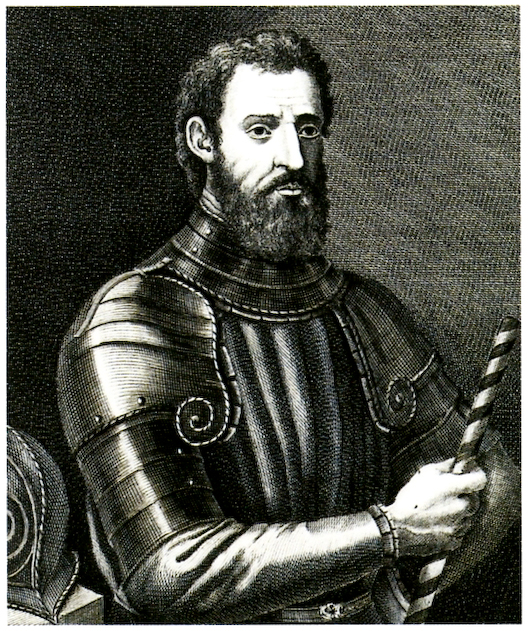 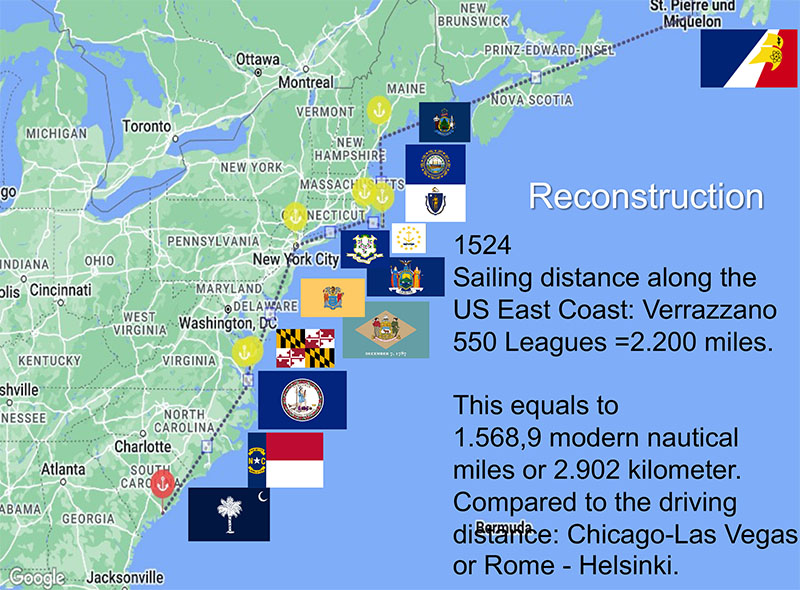
Who is this Giovanni da Verrazzano to first set foot on the East Coast of the United States, to discover New York on April 17, 1524?
A famous bridge in New York, streets in different U.S. cities and states, a brandy, a car route in Wilmington, North Carolina, avenues, a school, parks, monuments, nursing centers, a record label, a university program, a college, a commissioner's film, a capital fund, a wine and wine cellar, barges, a hotel, a castle in Tuscany and even a restaurant on the Pacific Highway in Washington are named after him. Are these reasons to celebrate this discoverer?
Celebrating the 500th anniversary of the discovery of New York and the East Coast by Verrazzano is most worthy. We understand why his name is so often used for public projects and landmarks. This is a milestone in American history to make people recognize the historical roots they didn't even know they had. Such historic moments do not happen every day. This teaches us to appreciate and cherish the past.
When celebrating Verrazzano, an astronaut of his time, in the service of a young French King, one becomes aware of ourselves and the people who are near and important to us.
Verrazzano was astonished to find land not on a map. He was a Christian. He wrote a travelogue. This historic paper was bought by an American banker in Rome in 1909 for $3,000 USD (now equal to $100,000). This literary birth certificate of New York is now at the J. Pierpont Morgan Library in Midtown Manhattan.
Verrazzano describes where he was and where he had contact with native Americans. He was mostly welcomed. His story, full of puns, is fascinating. He is unlike any other explorer of his time.
Verrazzano was only human. He was mistaken. He thought he had discovered an open sea route to China. It was the Pamlico Sound.
The Tuscan navigator writes about the plants, the animals, the tranquility, and the aura of the unknown land on the American East Coast which he compares with paradise, Archadia.
He sailed in a small ship with a crew of 50 along the shoreline from South Carolina to North Carolina to Virginia, Maryland, Delaware, New Jersey, New York, Connecticut, Rhode Island, Maine, New Hampshire, Maine to Newfoundland in Canada. A distance comparable to from Chicago to Las Vegas, from Rome to Helsinki.
Many people are stuck in their personal past to think of their ancestors. Even though their past does not equal the future to come. But, knowing the past, helps to cope with the future. Celebrating 500 years of American history may strengthen self-confidence and increase motivation to do and achieve even more.
There are American families of Italian and French descent. They and many of their relatives will appreciate being able to celebrate this milestone.
Should important decision-makers fail to let this historic discovery pass without celebrating it, this seems to me a bygone opportunity to fill the hearts of those with familial connections to their ancestors in faraway Europe with pride and joy.
Editor: Dr. Missinne is from Vienna, Austria. He is the author of a new book, from Cambridge Scholars Publishing, to be released in March, 2024 titled: “A Reassessment of Verrazzano´s Travelogue. https://www.cambridgescholars.com/.
Primo Review
CABRINI
The Early Life of Mother Cabrini Makes for an Excellent Film
By Truby Chiaviello

Look no further than the first scene in “Cabrini,” to be the most harrowing of any in recent memory.
Set in Manhattan near the turn-of-the-century, the film shows a boy pushing a cart, with his dying mother inside. He rushes through the streets of New York shouting for help in Italian. No one is able to understand him. Dressed in ragged clothes, the boy is considered a loud nuisance, until a policeman chases him away. That night, in an obscure side street, the boy grasps the tragedy of loss, only to take refuge underground with the other motherless children.
The scene is representative of the state of destitution that Italian immigrants faced in America until the arrival of Sister Frances Xavier Cabrini, better known as Mother Cabrini.
A feature film about the life of America’s first saint is a most worthwhile endeavor.
Distributed by Angel Studios, “Cabrini” is set for release on March 7 in theaters across the country.
Roman Catholics and Italian Americans will find “Cabrini” an excellent film about a woman who, arguably, did more than anyone to relieve the suffering of millions of people in America.
A film built around the experiences of a key character must have as its star a person who can carry the story from beginning to end. Such is the Italian actress, Cristiana Dell’Anna. Originally from Naples, Cristiana brings an uncanny resemblance to Mother Cabrini. Petite and exotic, the beautiful actress starred in the Italian TV series, “Gomorrah,” about organized crime in Naples, before cast opposite Toni Servillo in the feature film, “King of Laughter,” about the imposed censorship of comedic playwright Eduardo Scarpetta.
In “Cabrini,” Cristiana captures the varied emotions of a nun who must overcome a host of obstacles in building orphanages, hospitals and care centers for the poor and dispossessed. The film never shies away from the spirit of anti-Italianism, still with us, today, that contributed to much of the needless misery of many Italian immigrants.
“Cabrini” is directed by Alejandro Monteverde, a pioneering filmmaker, from Mexico, who espouses a Catholic interpretation of contemporary events. His film, “Bella,” in 2006, about abortion, won rave reviews as did his film, “Sound of Freedom,” in 2023, about child trafficking. For “Cabrini,” Monteverde continues his record of making outstanding films. However, unlike his earlier fare, in “Cabrini,” he had to leave the present for a time and place of more than a century ago. He had to rely on exceptional set and costume designs to bring the past to new life for today’s audiences.
In “Cabrini,” viewers are introduced to Sister Cabrini in her convent in central Italy. Disappointment casts a dark shadow over her and the other novices after the Vatican refuses another request by her to begin a missionary in China. Sister Cabrini then travels to Rome, where she has to practically barge her way in to see Pope Leo XIII, played by the always exceptional Giancarlo Giannini. Impressed by the nun’s vigor, the pope offers to meet with her alone for afternoon tea. There, the pontiff insists she begin her mission, not in the Far East, but, rather, in Lower Manhattan, where Italian immigrants face incredible squalor.
Scenes to follow are mostly centered inside the muddy, overcrowded streets of New York’s Five Points, an enclave of poverty, in 1890, made famous from the photographs of Jacob Riis, as shown in the anthology, “How the Other Half Lives.” Monteverde captures the level of despair of the tenements, almost unimaginable by today’s standards. It is here where the group of nuns establish their first orphanage.
Mother Cabrini seems to be the only one in New York who wants to help poor Italian immigrants, according to the film. Scenes are replete with her meeting those who were originally tasked to assist the newcomers to find them either incompetent or uncaring. The parish priest of the Five Points she encounters consumes a pot of spaghetti while he expresses the hopelessness of the situation. An Irish physician, who treats the orphans under her care, is beleaguered to the point of ambivalence. Most unnerving is the reaction to Mother Cabrini by New York’s archbishop, Michael Corrigan, played by actor David Morse. When she seeks help to raise funds for an orphanage, he orders her not to solicit the Irish or Anglo communities. She is limited to the Italians who are mostly penniless.
“Cabrini” conveys the incredible determination of the titled character. What’s most shocking is how anti-Italianism works to delay or prevent Mother Cabrini from providing care to the needy. The character, Mayor Gould, played by John Lithgow, seeks to stop the nun’s efforts at every turn. A Google search shows no one by that name ever elected top post in New York. He is a fictional, yet symbolic, character, likely named after Jay Gould, the railroad baron, who financed the corruption of Tammany Hall. He, like others, however, will meet his match in Mother Cabrini.
New York was not the only location where Mother Cabrini was called to help. Hers is a cross country journey of hope from New York to Chicago to Denver, Seattle and New Orleans, among other cities and regions. To truly capture the drama of her contributions is to take several feature films; or, better yet, a television series. “Cabrini” can only provide us the story of Mother Cabrini, at the outset of her missionary work, in New York.
“Cabrini” is a film most welcomed in today’s cinematic world beset by too many offerings of senseless violence, sex and debauchery. Here is a story of a true American hero who accomplished incredible feats. “Cabrini” allows us to relish the miracles of God’s grace in the guise of Saint Frances Xavier Cabrini.
“Cabrini” is excellent!
Editor’s Note: To learn more about the film “Cabrini,” including a listing of showtimes, as set for release on March 7, please log on to the Angel Studios web site at https://www.angel.com/movies/cabrini
Primo Review
“SUBURRA”
A Cinematic Rarity is Now Available in DVD and Blu-Ray
- The film, to inspire the Netflix TV series, of the same title, was an obscurity…until now
- Niche distributor, Unearthed Films, has copies ready for sale
By Truby Chiaviello
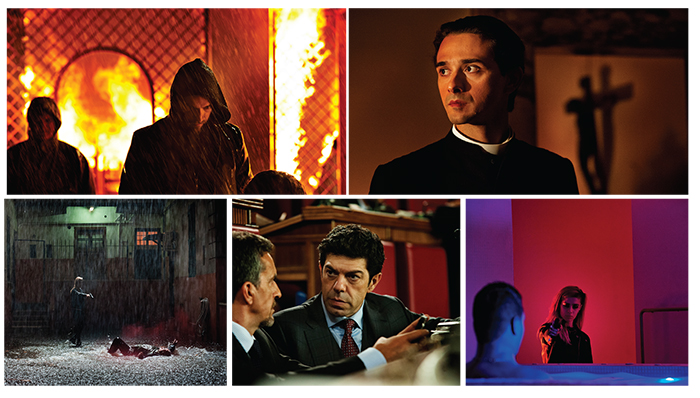
You’re wrong to think the suburbs was exclusively an American phenomena.
Actually, Italy is where the first suburbs began.
Credit Cicero for the concept.
In first century B.C., the great statesman came up with the word to describe a new class of patricians who lived at the outskirts of the capital city. They were “suburra,” he said, meaning “underneath the city.”
Hence, the film by Stefano Sollima, from 2015, is aptly titled. “Suburra,” is a present-day neo-noir saga of corrupt politicians, greedy priests and brutal gangsters, with their eyes on the prize, the suburbs of Rome, or, more specifically, Ostia.
The plot centers on a new law to be passed in the Italian parliament to allow for the development of resorts and casinos in the seaside sprawl west of Rome. Ostia is to become the new Las Vegas.
“Suburra,” shares its name with the TV series on Netflix based on the film’s story and characters, yet stretched out over several years’ worth of episodes. Although critically acclaimed when released in 2015; the movie was, all but, impossible to view.
Until now, that is.
Unearthed Films, a distributor of horror and exploitation films, based in Los Angeles, has acquired the rights to distribute “Suburra.” According to Stephen Biro, president and CEO of Unearthed Films, “Suburra” posed some challenges to acquire because of the film’s relative obscurity, in contrast to the popularity of its spun-off TV series. Beginning on September 26th, however, copies of “Suburra,” the feature length film, will be available for purchase on Blue Ray and DVD at the Unearthed Films web site: www.unearthedfilms.com.
Fans of the TV series will cherish the film. Much of the action in “Suburra” is set in Rome, a city not normally associated with organized crime unlike Naples, Palermo and Coscenza. Only, within the last two decades, Rome has become a key destination for black market intrigue.
“Suburra” is based on the 2013 novel of the same title by Carlo Bonini and Giancarlo De Cataldo. Story and characters cover the exploits of Mafia Capitale, the name given by the Italian press to describe a class of professional criminals in Rome in 1999. A key character in the film is Valerio, a.k.a., “Samurai,” played by Claudio Amendola. He is representative of a new breed of Roman racketeers and enforcers, who got their start, not as petty criminals, but, rather, as neofascist operatives.
In the film, Samurai fronts as the owner of a gas station; yet, he serves as point man for Mafia clans in Naples and other cities in the South. With financial backing from the Vatican bank, he sets his sights to turn Ostia into Europe’s Sin City.
The scheme relies on a member of parliament, Filippo Malgradi, played by Pierfrancesco Favino, to head a committee to try and change the land development law. Meanwhile, a local thug, who goes by the acronym “Numero 8,” played by Alessandro Borghi, is hired by Samurai to beat up and torture small property owners to force them to sell at below market value.
After a workday ends in parliament, Malgradi, who, on the surface, a family man, with a wife and child, spends the night at a nearby hotel. His mistress, Sabrina, is there with her friend, a minor, waiting to takes drugs and have sex with him. From the balcony of the hotel room is a view of Saint Peter’s basilica, while, inside, the girl dies from an overdose. Fearing a scandal, Malgradi abandons Sabrina alone with the corpse. She contacts a young mafiosi, Spadino Anacleti, played by Giacomo Ferrara, to dispose of the body.
Knowing it was Malgradi who was with the women the night before, Spadino confronts the member of parliament to blackmail him. In response, Malgradi recruits a colleague with ties to the Mafia. He hires Numero 8 to scare Spadino away from the blackmailing scheme. Instead, Spadino is killed by Numero 8. This sets off a chain of brutal events. Spadino’s older brother is the local crime boss, Manfredi Anacleti, played by Adamo Dionisio. Word goes out to the street for information leading to the the identity of the killer. Another character, Sebastiano, played by Elio Germano, is a friend of Sabrina’s. From her, the assassin is revealed for Sebastiano to inform Manfredi with hopes to erase a debt his late father owed the mobster.
Such is the web weaved in “Suburra.” The vendetta by Manfredi is to undermine the project in Ostia. As a Mafia war ensues, alliances are formed to extract violence and treachery.
“Suburra” thrives on the interactions of nefarious characters, superbly played by the ensemble cast. The direction is tightly presented to highlight creative action and violent sequences. Lighting and styling conveys an ancient city in a dystopian aura of neon colors.
“Suburra” shares a notoriety first established by “Gomorrah,” the Italian TV series to depict Camorra crime families in Naples, as based on a film, of the same title, released in 2008. As most scenes are shot on location, “Suburra” will do for Rome, what “Gomorrah” did for Naples. Parts of the city, far away from tourist itineraries, are explored. Not just the seedy underbelly, the middle class and working class sections of Rome convey a dynamic city overlooked by most observers.
“Suburra” is an excellent display of Italian talent in front of and behind the camera. The story and characters grasp the attention of the audience from the first scene to the last. What transpires is mesmerizing and thrilling.
For those fascinated with Italy, not to mention excellent cinema, “Suburra” is a film for the ages.
Editor’s Note: You can purchase copies of “Suburra” by accessing the web site for Unearthed Films at www.unearthedfilms.com. Photographs by Emanuele Scarpa. This article was posted on 9/21/23.
Primo Essay
LIFE: ODE TO ITALIAN
How Learning Italian Changed My Perception of the World
By Susan Collina Jayne
The room was large and modern; the leather sofas, soft and inviting. The Italian and Chinese artifacts were as rare as the central heating in the harsh Beijing winter. The guests didn't wear designer clothes or expensive jewelry, but they were intelligent, confident, and healthy. I didn't really belong but was a family friend of the host's mentor. The Italians were too polite to assume I didn't speak their language or to ask why I was there. When we sat down to dinner, I wondered if the small roast would feed all eight of us. As the meal began, they switched to English.
There were many times in my work abroad that I was treated generously by Italians that I knew only vaguely. Even though I had seen many other beautiful countries, had too many other memorable meals, known other charming people, it was the sound of Italian that became associated with comfort, kindness, and ease when a near-death experience ruined my previous career and my life. So when I was forced into a disability retirement, I took a long vacation to Italy. I didn't contact my tangential friends, but traveled alone to lick my wounds. I spent a lot of time lost in the incredible countryside, backing up tiny streets in medieval towns, and retracing my steps for long distances after missed connections. I was delighted, entranced, frightened, confused, and frequently disoriented. I made a fool of myself daily, if not hourly, but I forgot much of the humiliation and fear of the previous couple of years.
When I returned home, I began studying Italian. A clever man, whom I respected, told me I might eventually be able to make myself understood in the language, but that I would never really understand it. What he couldn't know was that studying Italian would change my perception of the world and make me tougher.
To learn Italian, I attended Berlitz courses and grammar courses at the local community college available in the Washington D.C. area, and all the language tapes I could stand, Italian films were the next front. That's when the real education began. You must go beyond, “La Dolce Vita,” “Divorce Italian Style,” “The Postman,” and “Life is Beautiful,” and you must watch each one many times. Initially, it is surprising how different Italian films are from French ones, and how similar to American ones. Then you begin to see the differences. Are Italian and American lives really that different? Maybe, maybe not, but our histories certainly are. Perhaps it was just that I was so desperate to hear the language that I endured films more violent, sexually explicit, sillier, or, in other ways, more difficult than I would have endured in English.
Some great films describe the ambiguous, divided loyalties of the mid-19th century unification movement: “Papa Re,” “San Michel had a Rooster” and “I Gattopadro” (The Leopard). The injustice of the sharecropping system broke my liberal heart in “Tree of the Wooden Clogs.” The comedy “La Guerra” and the tragedies “Two Women,” “Love and Anarchy,” “General della Rovere,” “Open City” and my favorite, “Night of the Shooting Stars” tell of Italy's 20th century wars. The difficult post-war reality is documented in the neo-realist films such as the “Bicycle Thief”; sex, honor, and class warfare in “Swept Away,” “Stromboli,” and “Seduced and Abandoned.”
The uniqueness of Italian humor is illustrated in “The Icicle Thief,” “Palombella Rossa,” “Johnny Stecchino,” “The Gold of Naples” and my favorite, “Big Deal on Madonna Street.” I even learned to appreciate Toto, definitely an acquired taste. Still there are some comedies too silly, such as “A Lobster for Breakfast” as well as tragedies too tough such as “Seven Beauties,” “Battle for Algiers,” and, for personal reasons, “Henry IV.”
Because my ears were open and my emotions more accessible, I came to love what I had previously felt was caterwauling, Italian opera. I can cook some pretty good Italian meals, niente. Modern Italian films, opera, and literature have taught tougher lessons about the darkness of the human heart that can not be cured by therapy, chemicals, or religion. (Good wine helps, of course.) I understood, at last, about the destruction of the innocent and of innocence caught between forces that can not or will not be explained. Maybe these are not French concepts, certainly not American ones.
There I go again intellectualizing while the point is, that for once, I did not approach learning a language as a purely intellectual activity. I've found that while I still admire clever people, I no longer trust them. Perhaps, I could have mastered these harsh lessons without leaving home. Maybe it was a matter of timing, but the comfortable sound of Italian gave me the courage to face unacceptable realities. I faced them just to hear the language. I learned to understand the use of humor to approach dangerous ideas or people; the value of the outlandish gesture, the complexity of Sophia Loren's walk and of Toto's facial expressions.
A passion for life, for enjoyment, for making the smallest thing important or elegant is Italy’s most profitable export. That is simply marketing unless you understand that after the wars are over, the dictators are dead, slavery and share cropping gone or reshaped by modern technology, there remains the evil within us and the arrogance, ambition, ignorance, impotence, cowardice, cruelty, and simple carelessness worthy of Caesar, Stalin, Lucretia Borgia or Marie Antoinette. So you had better enjoy that last bite of pasta or the last rose of summer. Of yes, the roast in Beijing in 1986 was large enough for each of us to have one slice and for a couple of slices to be sent home to the cook's family. That is a more advanced Italian lesson.
Editor’s Note: The writer lives in New Orleans where she pens a number of articles, essays and commentaries for PRIMO and other publications.
WE SUPPORT RUSSO
There Is No Turning Back for COPOMIAO Under Leadership of Basil M. Russo
- The Time is Now to Fight for Columbus, Not Break Away from COPOMIAO
- PRIMO Endorses Russo and the Proud Members of COPOMIAO
There’s no going back.
That was the message given, loud and clear, by Basil M. Russo, at the annual meeting of the Conference of Presidents of Major Italian American Organizations (COPOMIAO) convened on June 17th in New York.
Praise be the warrior.
Judge Russo seeks to face off against those who choose to tear down Columbus statues and dismiss Columbus Day; never mind the venue, be it in the courts, in the public square, even, in the White House.
The fighting spirit is cherished in Italian America.
Rocky Marciano comes to mind. So, too, Vince Lombardi. Who doesn’t love Joe DiMaggio?
Winners are most welcome. The call to battle is heard. Victory is ahead.
Too bad not all Italian American organizations feel this way.
Just prior to the meeting in New York was the breaking away from COPOMIAO by several key member organizations. They went ahead to develop a brand new organization to compete against COPOMIAO; now listed, the Italian American Leadership Forum, with the following members: Columbus Citizens Foundation; National Italian American Foundation, Order Sons and Daughters of Italy in America, Supreme Lodge OSDIA, OSDIA Commission for Social Justice, OSDIA Foundation and the National Organization of Italian American Women.
The question begs…Why?!
The reason, Columbus!
What to do against a plethora of woke culture attacks against the founder of the New World? Basil Russo wants to fight.
Litigation is now being sought at the U.S. Supreme Court to reverse the elimination of Columbus Day in Philadelphia by Mayor Jim Kenney. PRIMO Magazine, along with all members of COPOMIAO, are listed as plaintiffs in the lawsuit. However, a key organization, who once belonged to COPOMIAO, did not want to be included.
The leadership of COPOMIAO by Basil M. Russo is wholly endorsed by PRIMO. We support his aggressive strategy to turn the tide against Columbus haters. We discourage any move by other national Italian American organizations to break away from COPOMIAO.
Now is not the time for the old ways of quiet resolve.
(More like, quiet desperation.)
The breakaway organizations seem to want to go back to the past of passive pride and celebration. They seem to yearn for the days of Italian advocacy within a forum of circumspection and careful consideration.
Di addio al passato!
Deliberateness does no good in the face of rushed executive orders by mayors who tear down Columbus monuments. Equivocation is nothing more than defeatism in the face of district attorneys who choose not to prosecute rioters who destroyed Columbus statues in Saint Paul, Baltimore, Richmond and elsewhere.
The legacy of Columbus is to be loudly defended, not quietly demurred.
We praise the Italian Americans who show up at the school board meetings to demand Columbus Day remain in school calendars. We salute those who stood in front of the Columbus Monument at Marconi Plaza to protect the statue from vandals. We cherish the attorneys who take our antagonists to court. We praise the front line warriors of Italian America in Syracuse, Chicago, Boston, Pittsburgh, Philadelphia, New Haven and elsewhere. They all deserve nothing less that the full support of national Italian American organizations.
Judge Russo understands this. His tenure as president of COPOMIAO has been nothing less than extraordinary.
Judge Russo has made every effort to reach out to Italian American organizations, both large and small, to stand together to defend the legacy of Columbus in America. As such, COPOMIAO has grown under his watch to unprecedented levels in membership. His summit meetings remain three for the record books: More than 400 Italian American groups in attendance. Under his watch, the organization members met Italy’s first female ambassador to the United States, Mariangela Zappia, and Pope Francis in Rome. He led COPOMIAO to spearhead a national drive to change the White House proclamation on Columbus Day. He gave orders for COPOMIAO to sponsor the first-ever Italian American Future Leaders Conference in Ft. Lauderdale to begin transferring the mantle of leadership to a new generation.
Now is not the time for dissension. Now is not the time for a “different approach.”
The days of silence are behind us.
PRIMO stands with Basil Russo and the proud members of COPOMIAO to fight onward for Columbus, to fight onward for our Italian American legacy.
Editor’s Note: The web site for the Conference of Presidents of Major Italian American Leaders is https://copomiao.org/members/
Op-ed
INCLUDE ITALIAN AMERICANS AS MEDITERRANEAN IN US CENSUS
- A Letter to the OMB to Change How Italian Americans are Categorized
(The following is an edited letter by Dr. Binetti to OMB on the U.S. Census future ethnic delineation of Italian Americans)
My name is Christopher R. Binetti and I am writing to you today as an Italian American with a Ph.D. in political science; as the President of the Italian American Movement, a 501c3 non-profit organization to advocate for Italian American civil rights. I am asking, on behalf of my organization, myself and my Italian American people, that the recommendations in the comments of the IALDHEF and COPOMAIO/NIABA submissions be enacted by the OMB. I agree with both sets of comments; in both spirit and logic. I now offer additional recommendations in lieu of my personal experiences as an Italian American.
As IALDHEF rightly advises, the minimum categories should be eliminated. I see any continued embrace of racialized categories as deeply problematic for Italian American and other Mediterranean ethnicities. However, I recognize, as does the COPOMAIO/NIABA, that you are unlikely to ever eliminate racialized minimum categories. Hence, I support the recommendation by COPOMAIO for OMB to create a new category titled, "European Mediterranean.”
I agree that Mediterranean groups, as now currently proposed to become the "Middle Eastern and North African" category, have the right to form their own group; as long as it does not relegate Italian Americans to the "white" or "European" category of U.S. Census. A Mediterranean group to include "Middle Eastern and North African" ethnicity, while not preferable over a "European Mediterranean" delineation, is vastly preferable to the possibility of Italians and other Mediterraneans being stuck in a "white" or generic ”European" category.
We want to avoid the deprivation of civil rights among Italian and other Mediterraneans, i.e., Greek, Spanish, Portuguese, etc., by being forced into a "European" or "white" category. Hence, we would rather be in a larger Mediterranean group, if that was our only option, to avoid being stranded inside the “European” or “white” category.
All of this is consistent with the comments of the IALDHEF and COPOMAIO. If you simply created a "European Mediterranean" category to house those ethnic groups, tied together by the Mediterranean region, originally denied a category by your initial proposal, the Italian American Community, including the Italian American Movement, would be ecstatic.
As a side note, I suggest the OMB ask different Jewish ethnic groups how they wish to be identified. We did not deal with this in our COPOMAIO comments because I was tasked with whom to include in our definition and forgot the Sephardim, Mizrahim and Askenazim subsets of Jewry. These groups should be asked by OMB if they prefer to be with us in the "European Mediterranean”category, or, instead, the "Middle Eastern and North African" category, or the "European"/"white" category. They should not be denied this choice simply because I forgot to write them in our joint comment.
My letter might be confusing to outsiders; who do not understand Italian Americans. We are not "white.” The perception by others of our "whiteness" comes without the real privilege of such a distinction. Instead, we suffer real-world consequences by being defined as “white.”
I am challenged with four diagnosed disabilities. However, being Italian is a bigger social disability than my actual afflictions. I have a PhD in Political Science from the University of Maryland, a Masters Degree from Rutgers-Newark in Political Science; and before that, six published peer-reviewed scholarly articles, three years of independent teaching experience at a community college and I am a volunteer Political Commentator at PRIMO, the nation’s largest independent Italian American magazine. I am on the General Council of the Northeastern Political Science Association. I am now running for State Senate, independent of my duties as President of the Italian American Movement. Nevertheless, I still had to go back for a second Master's Degree at Rutgers-Newark in History because I lost my job due to the pandemic and could not get a new one; not even an adjunct job in New Jersey and New York.
I am absolutely convinced that I unable to gain academic employment because I am an Italian American. Hence, the reason I am currently suing New Jersey is because the state’s policies make it virtually impossible for a highly-qualified Italian American, like me, to get an academic job. I support affirmative action and DEI for all current groups and seek Italians and other Mediterraneans to be included.
After I sued New Jersey for systemic ethnic discrimination, I experienced retaliation against me as an Italian American seeking justice. There was a compensation arbitration committee for lawyers organized under the New Jersey Supreme Court desperately seeking laypeople. I showed interest, but was never contacted. I am almost certain that the State was retaliating against me for being an Italian standing up for justice for his own people. I had my State Senator refuse to represent me. He ceases to communicate with me. He did not appoint me to the New Jersey Italian Heritage Commission. I complained about him to the ethics committee in Trenton, but was told that such retaliation is mandated by New Jersey law. This experience motivated me to run for State Senate against the man who has blocked every chance at bettering myself or the Italian American community.
The Division on Civil Rights is an agency under the Attorney General of New Jersey. It has systemically discriminated and retaliated against me and other Italian Americans. The DCR does not keep statistics on Italian Americans. When I once filed an OPRA request (similar to a FOIA request), I was given the record for the only case that the DCR handled in 10 years regarding anti-Italian discrimination; and of course, the DCR ruled against the Italian.
The DCR and the State of new Jersey can get away with this only because Italian Americans are declared "white" and not as the minority we are. When our statues are torn down, in violation of the law, people do not call it a hate-crime. When our politicians or broadcasters are fired, while other groups' politicians and broadcasters are not for committing the same offense, no one seems to care. When CUNY violates its promises to include Italian Americans in affirmative action, no one cares. When the Super Mario Brothers celebrate ethnic slurs against Italians, or the Simpsons supports mob stereotypes, or Italian actors only get to be stereotyped characters, the "social justice warriors" do not support us.
Within our community are the so-called "Redeemers" who want to liquidate our ethnicity. They support affirmative action only for other people. Since academia only hires "Redeemers,” the government thinks that the 80-90 percent of us who support affirmative action for all, including Italian Americans, are the minority when, in fact, we are the majority!
As the Supreme Court is threatening affirmative action for all, the OMB should recommend that affirmative action be available to any ethnic group (detailed category) that is severely underrepresented in employment or school admissions. This is almost certainly constitutional. There is no discrimination if all individuals in all detailed categories are treated similarly.
As a final thought, I want to ask you to consider my story and hopefully, after reflecting on this, you will give us the hope of salvation of "whiteness" that is the "European Mediterranean" category. With this category, we can get affirmative action and DEI. With this category, we can unify our community, convince the "Redeemers" that we do not have to give up our ethnicity to get jobs. Many Italians are pro-Colombo, while others support a type of out-spoken Catholicism. Still others want more support for the Italian language in America, which scares Anglo-whites. Ninety percent of the Italian American Community supports affirmative action (and DEI) for Italian Americans. If you grant us this "European Mediterranean" category, you are freeing Italians from now-urgent and brutal choice of being an unemployed academic with great credentials like me or giving up one's authentic self and ethnic identity to become a "Redeemer". I will never give up my Italianness. Help us end this terrible choice forever!
Sinceramente,
Dr. Christopher R. Binetti,
President of the Italian American Movement
Editor’s Note: Some of the views espoused by the writer may not be shared by PRIMO. The writer can be emailed at cbinetti@terpmail.umd.edu.
Primo Interview
GO WEST, YOUNG MAN
Eugene DiCesaris Journeys to the Prairies and Hills of the Wild West in His New Book, “Clayton Sharp: Messenger of Warning.”
“…the Western has always appealed to me largely because of its emphasis on individualism, the sprawling beauty of the landscape, the diversity of cultures and lifestyles, and the ultimate struggle between right and wrong.”
 
Please tell us where your family came from in Italy.
My family came from several locations in Italy: my father's paternal line came from the Ferentillo area, and his mother's line came from Sicily, primarily from the San Cataldo/Caltanisetta region. Mom's paternal line was mostly in northeastern Italy--Udine, and the such, with her mother's genealogy located near and around Naples. Parenthetically, I've never been to Italy, but my wife and I are hoping to go next year. We're really excited about this, and are starting to learn some Italian.
What led you to write a Western?
I grew up watching westerns in the late fifties and early sixties. It seems--and I think I’m only slightly exaggerating--that there must have been a thousand cowboy programs on TV during that stretch. Also, living behind a large diary in Artesia for a few years when I was kid, lent the "flavoring and coloring" if you will. Nothing like the smells of cows, horses, droppings, and hay to whet a kid's developing sense of realism. Seriously though, the Western has always appealed to me largely because of its emphasis on individualism, the sprawling beauty of the landscape, the diversity of cultures and lifestyles, and the ultimate struggle between right and wrong.
As the title indicates, the key protagonist is Clayton Sharp. An interesting trait is his Mormon faith; where you show him in scenes of prejudice and persecution because of his religion. An overlooked negative of American history was the persecution of Mormons. What led you to make the main character a Mormon?
The idea for the story didn't start out the way it was eventually written. Honestly, I had no idea where to begin. I didn’t use an outline. I had no idea what time frame the story would be set within. Who would be my characters and how many should I have? What would be the plot? I decided to begin with Clayton (at first, he was actually named Ephraim, but that seemed cumbersome) riding into a dumpy town in what would become the opening chapter, and suddenly it all simply coalesced. I decided to write about what I knew, or in other words, to write through the lens of Mormon history. You see, though I was Catholic when I was a kid, my parents separated when I was ten and my church-going habits abruptly came to an end. For sixteen years I didn't step foot into a church, but when I was twenty-six, I made friends with a few people who were Latter-day Saints. They told me about their church, and of course, encouraged me to join, which I did a while later, remaining a Latter-day Saint for thirty years until I went back to Catholicism in 2010 when I was fifty-six. Still, I'd come to love LDS history--especially the westward pioneering aspect of it--and found my book naturally developing into a tale I had become very acquainted with, influenced by my personal reading, and also from teaching the many church classes I had been privileged and called to conduct. Persecution was very real in LDS history, and one simply cannot dismiss it as occasional happenstance. In a very real way, the violence thrusted upon the LDS people served not only as a great sifter of the weak from the strong, but also served as an incredible bonding glue to solidfy the faithful to their beliefs. My book practically wrote itself when I decided to go in this direction. Clayton exemplified both sides of this history: at first, the reader learns Clayton used to persecute Mormons himself, but then, converted to the very faith he earlier despised. If nothing else, I think that clearly demonstrates how fluid, and subject to reassessment, our own perceptions can be at times.
The book provides engaging insights into the Wild West. What was the message you are trying to convey to readers?
I guess I was just trying to write an entertaining story. I didn't want to come off preachy, but I did want to show that people can and do change if circumstances and peripheral observers will allow. Also, I tried to portray the vast openness of the prairies, along with its mixture of beauty, peace, loneliness, and potential for danger.
What did you find most challenging and most rewarding in writing “Clayton Sharp”?
The most rewarding aspect of the book was that I actually wrote it! It was my beautiful wife, Eva, who suggested I try my hand at writing again. (I had made a fling of it years earlier, but got nowhere and basically gave up.) Without her loving encouragement, the book simply wouldn't exist. The most daunting challenge of writing the book, I guess, was in trying to develop a serious storyline readers would find interesting and thought-provoking, while at the same time, writing it in such a way where I could employ a little humor and light-heartedness.What are your plans for the future? Any other books in the making?
The second book in this series, "Clayton Sharp: Life or Death," is scheduled for release a few weeks from now in mid March. I'm really excited about this project because I think I actually have a stronger storyline, a wider array of compelling characters, and fast-moving action scenes that, I hope, will keep the reader turning the pages!
Editor’s Note: 3-6-23, pictured is the author, Eugene J. DiCesaris with his wife, Eva. His book, “Clayton Sharp: Messenger of Warning,” is available at the following link on Amazon.
ITALY’S LITTLE AFRICAS
African Communities Arise in Rome and Naples
- Most are from North Africa
- Most Come to Start Businesses
“The entrepreneurial dreams of immigrants convey a certain sense of rebirth in Italy.”
By Laura Ghiandoni

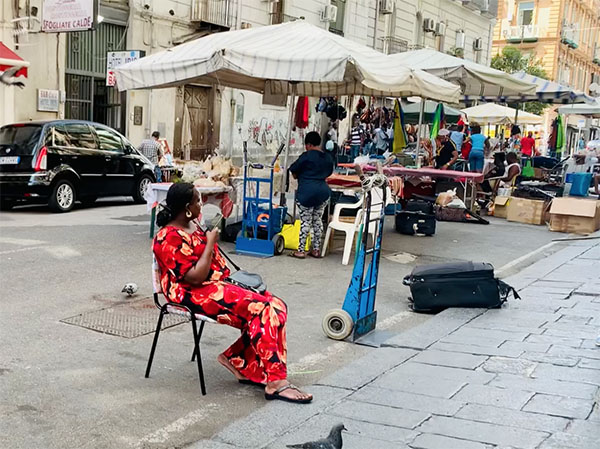

There are about 1 million Africans who, after leaving their homeland, have chosen Italy as a nation to seek a better life. Discovering these communities means going beyond stereotypes. Wonderful stories of redemption will color an undergrowth of migration little known to most Italians.
It is worth taking a look at the numbers released by Italy’s Ministry of Labor and Social Policies. The Moroccan community holds first place for the number of inhabitants with 429,000 people, followed by the Egyptians, 141,000, the Tunisian and Nigerian communities, 100,000 and 98,000, respectively.
The numbers, even if essential, tell of protagonists who embrace the momentum towards private initiative. The entrepreneurial dreams of immigrants convey a certain sense of rebirth in Italy.
First up is the Moroccan community. Some 65,000 individual companies in the industrial and commercial sectors were started by immigrants from Morocco. Their businesses are found in all parts of Italy, especially in the regions of Piedmont, Lombardy and Emilia-Romagna.
The second position goes to the Egyptian community, where some 20,000 companies have been set up in the construction sector. The third place goes to the Tunisian community with 16,000 companies engaged in both industry and construction.
The employment figures speak for themselves: There is a substantial difference between female and male employment, the former accounting for less than a third of the latter. Dr. Laila Maher stands out among the few Moroccan female entrepreneurs with a pharmacy she owns in the territory of Rome. “The role of Moroccan women in Italy is mostly still limited to childcare,” says Dr. Maher, recipient of a medal from the president of the Italian Republic for becoming the first Arab woman in the business and social sector. “Integration?” she asks rhetorically. “It is something that works if both parties commit themselves. The question of the country’s language is fundamental: Sometimes Moroccans do not speak Italian even after many years in the country.”
Dr. Maher, after the excellent results obtained with the pharmacy, is expanding her activity in other sectors such as imports, exports and alternative energies. "Before the 90s most people came for study or tourism,” she says, “but after the 90s illiterate people arrived, who cannot write in Arabic and do not learn Italian. For these people, it is often impossible to understand what they can and cannot do in Italy.”
While active women such as Dr. Maher are an exception among Moroccan immigrants, the Nigerian community offers a completely different perspective. Some 16,000 companies in Italy are currently owned by immigrants from Nigeria. Women make up 40 percent of the managers employed in Nigerian businesses. Vivian, who has been in Naples for about 10 years, tells us what it means to arrive in Italy to open her business. "In Italy it is not easy to start your own restaurant,” she explains. “There are an infinite number of laws and procedures to be respected, many security measures today are also linked to the Covid-19 epidemic.” She resides in Naples’ San Lorenzo district, a small African enclave of stalls and street traders. "Most Africans feel a lot of nostalgia for their country. They come to eat at my restaurant to savor the flavors of home. Here, we all feel like brothers and sisters. In Naples, there is the culture of hospitality. I like it.” Although satisfied with her new life in Italy, she acknowledges a consistent. obstacle. What is it? The language: "I still have difficulty speaking Italian well; I can't express myself.”
Korie Chidimma is a nurse who specializes in transplants and dialysis treatments in Rome. She currently serves as president of the association titled, “Break Your Bread for the Less Privileged.” We meet her in the parish of Saint Ambrose after the celebration of Mass. "We volunteer at the Policlinico Umberto I to promote the health of those who do not speak Italian,” Korie says. "When Nigerian patients arrive in the emergency room or in the hospital ward, we help them understand medical prescriptions and book medical examinations.”
Not mastering the Italian language will be a key reason for difficulty in becoming a well-integrated immigrant. According to the latest Ipsos survey, Italians perceive Nigerians as one of the largest groups of foreigners currently in the country. Yet, they remain a modest community to represent only two percent of the total population.
According to another survey, carried out by MigrAction, a majority of Italians, in 2019, were convinced that all foreigners represented over 30 percent of Italy’s population. In fact, the figure is just seven percent. Hence, newspapers and media tout a distortion of the Italian perception regarding the presence of foreigners. Italy joins other European countries to restrain from offering new policies to better manage the integration process. In addition, various disputes between Italy and several African countries has pushed for more enforcement measures to block migration.
The internal dynamics of the world of immigration was introduced by Souad Sbai, president of the association of Moroccan women titled, Acmid. “The immigrant in Italy has no opportunity to arrive legally,” she says. “Even those who want to visit Italy or stay for tourism purposes have difficulty to get a visa.” Also for this reason, some immigrants risk traveling by sea to land in Lampedusa, an island off the coast of Sicily. The reconfirmation of the controversial agreement between Italy and Libya, for the reduction of migration flows, was signed in July, 2021. This treaty guaranteed the Libyan Coast Guard to help stop illegal migration. The arrangement costs Italy some 10.5 million euro while migrants in Libya are locked up in prison-like "centers” to suffer mass violence and torture.
Other laws protecting migrants have been stationary in recent years. Starting with the Ius Solis, a rule to allow citizenship for those born in Italy with one parent who might be foreign and the other an Italian citizen. Even the "International Convention on the Protection of the Rights of Migrant Workers and Members of Their Families,” signed in 1990 by 20 United Nations member countries, has never been signed by Italy. As European countries become increasingly reluctant to welcome foreigners. The resilience, strength and courage of migrants becomes increasingly evident to all. Such qualities lead to the growth of nations whose economic stability has been widely demonstrated. Stories that Old Europe tends to forget, while on other coasts they are much easier to be remembered.
THE HISTORY OF MY NAME
One’s Identification Derives from a Host of Factors
- Many Italian families had to change their last names because they sounded “too ethnic”
By Alfonso Guerriero

When I was growing up, I never liked my name.
It was always mispronounced. Anytime a teacher called attendance he/she/they always butchered my name. Every morning, I would slowly sink into my chair and brace for the inevitable; “Alfanzo Gurer’…I mean, “Gua-ri-ero.”
The awkwardness brought on by adults sounding out my name was usually followed by some hesitation, “How…How do you say your name?”
No doubt, my forename and surname did not sound very American. I was not John Peterson, Peter Smith or George Washington.
One day in elementary school, a classmate of mine called out, “Hey Al.” Uncertain to who he was addressing, I did not turn around. When he tapped me on the shoulder, I realized he was calling - me - Al.
I immediately liked the moniker. It was quick and concise. My identification now arose from just two letters and one syllable, instead of the multisyllabic and very ethnic-sounding, Alfonso.
Retrospectively, the acceptance of my new nickname was a way to deflect the unwanted attention, that I firmly believed, my birth name attracted. It was not until my mid-twenties, when I joined the American Society of Geolinguistics, that I began to realize: We all have beautiful names and we should be proud of their origins.
In America (and most likely other parts of the world), first and last names that sound “too ethnic” will push a family away from their ancestral roots to choose a different name. Such decisions are made, in part, because of the assimilation process. This notion forced me to ponder the question: Did my name automatically make me Italian-American, or American (without the hyphen) Italian? The duality of cultures through my name was truly an awakening.
I am my father’s namesake. Hence, I am identified as Alfonso Junior (Jr.). The etymology of Alfonso is Germanic, brought over by Visigoth invaders to Spain after the fall of the Roman Empire. In German, Alfonso derives from hildis-funs (always ready) in English. In the 6th century, the Visigoths became the rulers of the Iberian Peninsula. The name became popular, pushing aside many of the current Latin names that were already utilized by the Romans.
Popular names have influenced families for centuries. In this case, many Spanish nobles named their sons Alfonso. It was the name of several kings of Aragon (a region in Spain) from the 11th to the 15th centuries. During this period, the name Alfonso was brought over to Southern Italy.
The Hohenstaufen family from Germany ruled much of the territory below Rome in the 12th and 13th centuries. A daughter from the German family married a Spanish prince from Aragon consolidating the two noble clans. They reigned for more than 500 years in Southern Italy. An influencing figure in the region was King Alfonso V (1442-1458), nicknamed the Magnanimous. The monarch’s popularity encouraged my paternal family to adopt his name for generations.
My great-grandfather's first name was Alfonso. My father was the second son and was, thus, named after his maternal grandfather. He had several cousins named Alfonso and a female cousin named Alfonsina. My paternal uncle named his last son, Alfonso, and, years later, my brother named his first-born, Alfonso. Alfonso is not only popular in my family, but, today, is a popular first name and surname in Portugal, Spain, France, Italy and parts of Latin America. A number of variants have arisen to include: Alfonzo, Alonzo, Alfonsi, Alfonseca, D'Alfonzo, Fonzo, Fonsato, Fonsatti and many more.
The name’s long and distinguished history even applies to food and wine. There are olives called Alfonso. In Spain, as well as in Italy, there is a delicious red wine called Principe Alfonso. Although the last King of Spain, Alfonso XIII, abdicated in 1931, his legacy lives on with a cocktail named, The Alfonso.
My last name is equally interesting. Many think it is Spanish (Guerrero) or Portuguese, but it is spelled with an i--- Guerriero. In Italian, guerriero, (or in Spanish) means "warrior,” as derived from guerra, “war” in Latin.
There are several ways how European last names developed.
Prior to the Modern Age, some English surnames derived from the father’s trade like Miller, Baker or Carpenter. My last name may have originated from this category since guerriero was a hired soldier during Ancient Rome. His identification may have begun as a nickname—to describe a personality trait of a belligerent (argumentative) person.
Surnames may have also arisen from patronymic descriptions. The father's Christian name applied to his offspring, such as Peterson, the son of Peter, or Fitzgerald, the son of Gerald. This is like Spanish last names that end in ez, which means the "son of.” Hence, Gonzalez was the son of Gonzalo, Ramirez, the son of Ramiro, and so forth.
Place can be another factor. For example, Leonardo da Vinci, the famous Renaissance painter, really means Leonardo from the town of Vinci. Italian locative surnames include Tarantino, Romano and Abruzzo. This method of naming should not be confused with surnames derived from monikers.
English surnames that began as nicknames are Armstrong, Goodfellow, Lowell and Darling. As the European population expanded, last names became just as important for common folk as for aristocracy.
The subject of names continues to fascinate me with a popular story about my paternal grandfather.
He was a captured soldier in World War II, in Addis Ababa, Ethiopia. Every morning, roll was called to make sure everyone was accounted for in the prison barracks. His name was Liberato Guerriero, translated to mean, liberated warrior or soldier.
One day, the officer did his usual rounds. He called out my grandfather, who immediately stood at attention and said, “Present!” The officer followed by saying, in a sardonic tone, “We should all be Guerriero, Liberato,” liberated soldiers.
The jailer’s remark is a valuable reminder of the profound meaning behind our names. Never mind the mispronunciation that triggers a level of discomfort in ourselves especially when we are young. We should all embrace our names.
Editor’s Note: Alphonso Guerriero is a professor at Baruch College in New York. He has written an outstanding book about the history of Italian monikers and nicknames, titled, “From Fra Angelico to Frankie One Eye.” The book can be purchased at www.lulu.com. Pictured is the author, who shares his name with King Alfonso V, a type of olive and wine.
Primo Review
GRAY IS THE NEW BLACK
- “The Gray Man,” Exciting, Engaging, Excellent
By Rami Chiaviello

Joe and Anthony Russo extend their meteoric rise to the top of the Hollywood heap of A #1 film directors.
Released July 22 on Netflix, “The Gray Man” serves as the Russo Brothers’ first big budget foray since their temporary exit from the Marvel Cinematic Universe. Few films will be as successful as “Avengers: Infinity War” and “Avengers: Endgame.” These two productions by the Russos remain the highest grossing films in Hollywood history. Will Joe and Anthony return to Marvel? Rumor has it the announced film adaptation of Marvel’s “Secret War” comic book will be directed by the brothers Russo. We await this exciting possibility. For now, our focus is rightly on the “The Gray Man” to serve as the latest and greatest from the cinematic duo for fans to cherish.
“The Gray Man” is another outstanding picture by the Russos. They teamed up again for a screenplay by Marvel veterans Christopher Markus and Stephen McFeely. Adapted to the big screen was the novel, of the same title, by Mark Greaney.
“The Gray Man” follows Ryan Gosling as the main character, known by his alias, “Sierra Six,” the CIA’s most skilled mercenary. When he acquires incriminating evidence against the agency’s top brass, a bounty is placed on his head for a team of international assassins to collect. Lloyd Hansen is a sociopath-for-hire mercenary played by Chris Evans to lead the manhunt. The two male stars share top billing status with actress Ana de Armas, as Dani Miranda, a CIA agent who allies with Six.
“The Gray Man” stars an international cast of supporting players to include Regé-Jean Page as Denny Carmichael, a CIA chief who orders the hit on Six, Indian actor Dhanush as one of the hired assassins, Billy Bob Thorton as Donald Fitzroy, the rogue agent’s mentor, Jessica Henwick, as Suzanne Brewer, Carmichael’s second-in-command and Alfre Woodard as Margaret Cahill, ex-CIA agent who helps Six.
Cast members excel in their respective roles, only for Gosling and Evans to especially shine. Both stars reinvent themselves in “The Gray Man.” Gosling effectively, and surprisingly, sells himself as the stoic, hardened and witty expert assassin in a grueling physical performance. Meanwhile, Evans does a complete 180-degree turnaround. He goes from hero Captain America to sinister villain. The actor, no doubt, had lots of fun playing a complete sociopath. His take on the character is addicting to watch. His chemistry with Gosling provides an exciting viewing experience. I also appreciate seeing Billy Bob Thorton return to the blockbuster realm. He does a great job playing the veteran CIA operative.
“The Gray Man” moves fast. The film offers only a few moments for the audience to catch its breath. The film jumps from action set piece to set piece, with each and every one as exciting, well-paced, well-choreographed and beautifully shot as the other. The film’s budget of nearly $200 million was well spent. With “The Gray Man,” the Russos have perfected what makes a modern-day action blockbuster so exciting to watch. Sweeping camera movements combine with well-timed cuts to hone in on the precision, grace and force of every punch, kick and fall. The highlight for viewers will be the well-timed convergence of hunters and hunted in the city of Prague. This scene is undoubtedly one of the most exciting of the year in cinema. The elegance and beauty of the final confrontation between Six and Hansen will have viewers on the edge of their seats. The action of the film is accentuated from an excellent score by Henry Jackman, a frequent collaborator with the Russos, whose electrically captivating sound, full of heavy, rapid beats, serves as the melodic spirit for the film’s ferocity.
“The Gray Man” is a fun, enthralling, well-paced, tight blockbuster to feature the most exciting action set-pieces this year. The Russo Brothers lead an expert cast and crew for an outstanding film to what hopefully will be their first of an exciting new spy franchise.
“The Gray Man” is awesome.
Editor’s Note: “The Gray Man” can be seen on Netflix at https://www.netflix.com/title/81160697. The writer is a part-time actor, playwright and rising Pre-Med junior at California State University in Los Angeles.
IF IT’S AMERICA, IT’S COLUMBUS
Columbus Monument Corporation, Syracuse, Uses National Data to Make Their Case
The Legacy of the Genoese Explorer Proves Formidable in All 50 States
- From Columbus, Georgia to Columbia, Oregon
By Truby Chiaviello
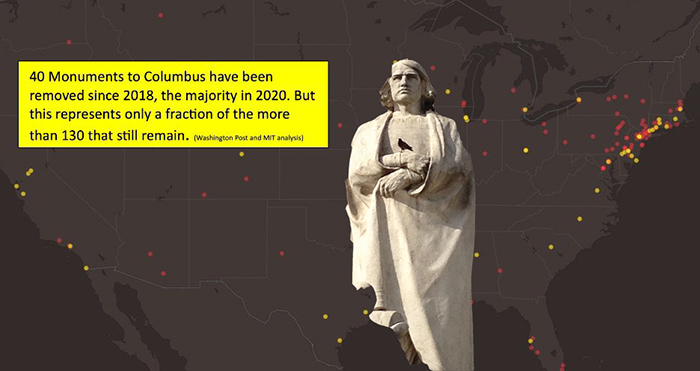 
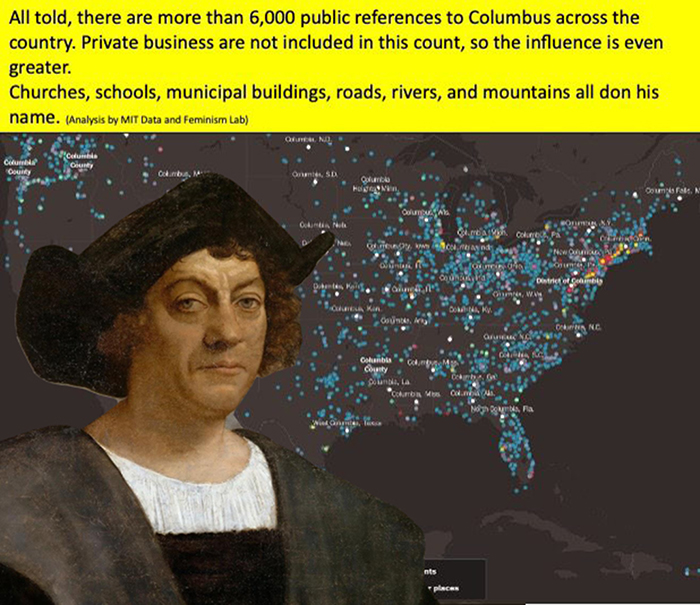
The battle for Columbus continues.
In Syracuse, the Columbus Monument still stands, inside Columbus circle there; but Mayor Ben Walsh moves on with his appeal after a stunning legal victory, back in March, by the Columbus Monument Corporation to keep the edifice in place.
“Ben Walsh is out of touch with the majority of Americans,” claims the Columbus Monument Corporation in a recent email blast. The organization continues to make their case to the general public; this time with impressive data, compiled nationally on the status of Columbus in the guise of monuments, statues and name bearing municipalities and landmarks.
“Ben Walsh said he does not like the message that the historic Columbus Monument Syracuse sends to his constituents. In 1934, the message at the monument’s unveiling was that European immigrants were thrilled to call Syracuse their home, and Syracuse was happy to have them as citizens. Indeed, that same message rang throughout the United States. And it still does. Most Americans continue to honor the explorer, and refuse to scrub his name from thousands of places.”
The year 2020 remains one of the most divisive in American history. Many Columbus monuments and statues were either removed by official decree or torn down by rioting mobs in the wake of George Floyd’s tragic death by police in Minneapolis. In several unique graphic displays, pictured, by the Columbus Monument Corporation and PRIMO Magazine, only “40 monuments to Columbus” were removed, while 130 Columbus monuments “still remain, making Columbus one of the most venerated figures among US monuments and memorials. Only Abraham Lincoln and George Washington enjoy greater presence in American statuary.”
It was Chicago to rank as the worst in a display of mob pressure in 2020. Demonstrators and rioters assembled, one summer evening, in front of Mayor Lori Lightfoot’s private residence, to threaten her and her neighbors with possible property destruction, to force her to remove three Columbus monuments there in the city. Yet, as the Columbus Monument Corporation has noted, Chicago is one of several cities, today, to consider returning Columbus Monuments to previous locations.
“More than 6,000 places in the U.S. take their name from Christopher Columbus,” claims the Columbus Monument Corporation. “There are streets and avenues and traffic circles, along with lakes and rivers and mountains - defining features of the nation’s civic and natural geography.”
Columbus Day remains a day of celebration for thousands of Syracuse residents when they “gather at the historic Columbus Monument to pay tribute to those generations…who fought for and defended the very special freedoms afforded to immigrants when they came and made this their home,” reads a press statement by the Columbus Monument Corporation. “If that is a ‘bad message,’ as Walsh suggests, then he is really out of touch with the majority of Americans and with his own city.”
“James Madison once said that democratic communities are subject to the ‘turbulence and weakness of unruly passions.’ That is why a democracy is purposely designed to slow things down, protecting it from the mania of the moment. Walsh bought into that mob mania, and illegally attempted to destroy Syracuse’s Columbus Monument. Fortunately, his constituents were there to slow him down, and stop what could have been a tragic blow to Syracuse’s history and heritage. Now he continues to waste your tax dollars on this folly, paying expensive lawyers and consultants.”
“Ask Ben Walsh to stop dividing us with his petulant denial of the Supreme Court's ruling to leave Syracuse’s Columbus Monument untouched. Tell him to join us in creating a fully inclusive Columbus Circle without insulting turn-of-the century immigrants and their descendants.” Forward this email (article) to him at BWalsh@syrgov.net
Editor’s Note: The web site for the Columbus Monument Corporation is: https://columbusmonumentsyracuse.com
4-9-22
THE DEATH OF THE PRISONER OF EF ACADEMY
Italian Student, Claudio Mandia, Endured Days of Solitary Confinement, Before Killing Himself, at a Boarding School in New York
- ISDA, Basil M. Russo and George Bochetto join forces with Claudio’s parents to reform the system
By Truby Chiaviello

The Italian Sons and Daughters of America (ISDA), whose president, Basil M. Russo, president of the Conference of Presidents of Major Italian American Organizations, uniter of Italian Americans to save Columbus Day, announced, yesterday, the joining of forces with U.S. Senate candidate and attorney, George Bochetto, to ensure justice is done over the suicidal death of Claudio Mandia.
Now underway, in New York, is a criminal investigation to suggest a dark tale of sadistic shunning of an Italian student at one of America’s most exclusive boarding schools.
On February 17th, Claudio Mandia, a 17-year-old student from Battiglia, Italy, hung himself inside an isolation room, after days spent in solitary confinement, on the campus of EF Academy in Thornwood, New York.
“The facts surrounding this young man’s death are unconscionable, and require important reforms in certain areas of our educational system,” Judge Russo wrote in a press statement issued April 8th. “This sad story has caused enormous outrage in Italy, with all the Italian newspapers covering the story.”
Judge Russo learned of Claudio’s tragic death from Fabrizio Di Michele, the Consul General of Italy in New York.
“I assured him that the Conference of Presidents, and the entire Italian American community, would support Italy’s efforts to promote the necessary reforms to ensure that situations such as this never again occur in U.S. schools,” Judge Russo stated.
Described as an outgoing and generous teenager, enamored by all things American, Claudio began life as a student at EF Academy when he was 15 years old. Like many young people of foreign birth and rearing, he was fascinated by the cultural phenom that is the United States. What could be better than to attend school in America? There, in Westchester County, alongside kids his own age, from all over the world, Claudio embraced life as a teenager in America.
Scheduled to graduate in May, Claudio planned to attend university in Italy this fall. He sought to obtain a degree, before embarking on a career to help his father, Mauro, at Fiad, the family’s successful frozen pizza export business.
Lapses in judgment are not uncommon in youth. Needed are the steady, tolerant hands of adult mentors for discipline and direction. A system of harsh rebuke and mental violence can often lead to tragedy.
Such was the case of Claudio at EF Academy.
A little more than a month after the New Year, Claudio admitted to school officials that he cheated on a mathematics exam. Abruptly pulled from his second period class on February 14th, Saint Valentine’s Day, Claudio was told by school officials of his expulsion from EF Academy. He was escorted to his dormitory room to collect his belongings. He was then taken to a separate wing on school grounds for a period of solitary confinement.
The system of punishment at EF Academy was to come to Claudio in two parts.
The first was harsh. An official expulsion from school. Apology, not accepted. No mitigation. No graduation. A black mark to remain forever on a boy’s academic record.
The second was sinister. A shunning by school officials. A grueling, imposed exile on school grounds. Young Claudio was to undergo bleak isolation inside solitary confinement. He was to suffer the extremes of banishment. He was to lose his way in desperation. He was to take his own life.
Departure from campus was originally scheduled for Claudio on Thursday, February 17th. Hence, for almost four days, he was shut inside an isolation room at school.
An ISDA article, issued on April 8th, conveys an indictable assessment of Claudio’s treatment at EF Academy. The young Italian was banned from nearly all direct contact with classmates, staff, faculty, any and all persons on campus. Trash had accumulated before meals were no longer delivered on the last day of confinement, according to ISDA. Parents Mauro and Elisabetta had repeatedly contacted school officials to demand an end to Claudio’s punishment. They wanted him released for needed care and attention.
On Thursday, February 17th, at approximately 10 a.m., having not heard from Claudio for days, Martina Mandia (Claudio’s younger sister) and a friend met with a counselor at EF Academy. They entreated the adviser to check on Claudio. When acceded to their pleas to enter a silent room, there he found Claudio’s dead body hanging from the ceiling.
Questions of anti-Italian bias may be warranted. According to the April 8th article by ISDA, another Italian student a EF Academy had also been expelled within the last year. He too “had attempted suicide on EF’s campus shortly after being notified of his expulsion. Further, EF Academy was explicitly directed by Mauro and Elisabetta to immediately cease their horrific treatment of Claudio and provide him the attention and care he desperately needed. Nonetheless, EF Academy abandoned Claudio in a barren room, told him not to leave, forced him to skip meals, failed to provide him adequate mental health services, and neglected to supervise him after delivering the life-altering news of his expulsion.”
ISDA underscored legal aspects of Claudio’s untimely death by reporting “minors accused of criminal acts in New York State are prohibited by law from being placed in solitary confinement.”
The ISDA article went on to convey how “New York law provides that ‘any person twenty-one years of age or younger . . . shall not be placed in segregated confinement for any length of time.’ Claudio was placed in segregated confinement for nearly 4 days for cheating on an exam. EF Academy subjected Claudio to worse treatment than minors his same age receive after being convicted of a criminal act. EF Academy’s treatment of Claudio was inhumane, inexcusable, and is now the subject of an intense criminal investigation.”
Led by Judge Russo, ISDA will join forces with Claudio’s parents, Mauro and Elisabetta Mandia, and their attorney, renowned trial lawyer and defender of all things Italian, George Bochetto, of the law firm Bochetto & Lentz, P.C.
As declared in the ISDA article of April 8th, actions will be taken “to not only hold EF Academy accountable for this tragedy but also to effect reform in the laws governing private boarding schools’ treatment of students to prevent a catastrophe like this one from ever happening again.”
Now running for the U.S. Senate in Pennsylvania, Mr. Bochetto, said, while on the campaign trail, “I was appalled upon learning of the circumstances leading up to this horrific and unnecessary death, and am equally appalled at the lack of legal oversight of private boarding schools in New York by its Department of Education. I will fight for sweeping changes to N.Y. law and will assist the family in holding EF Academy fully responsible on all levels for its inhumanity.”
Editor’s Note: The web site for the Italian Sons and Daughters of America is https://orderisda.org/. Endorsed by PRIMO Magazine, George Bochetto, running for the U.S. Senate in Pennsylvania, has a web site at https://bochettoforsenate.com/. The Conference of Presidents of Major Italian American Organizations has a web site at https://copomiao.org/
ITALIAN MISSIONARIES KILLED IN 2021
- Priests and lay people targeted
- Murder of Catholic Evangelists Continues to Increase Worldwide
As Pope Francis said, last year, “How many generous persons suffered and died...for the name of Christ! Theirs was a witness borne out of love of Him whom they had long contemplated.”
By Truby Chiaviello
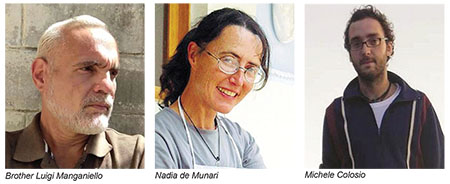
We’re not there...yet.
The threshold to claim worldwide Catholic persecution from the number of fatal assaults per year has not, thus far, been breached. The vocations of Christ can be assessed as no more dangerous than those of any other profession, or trade, in the secular realm. Yet, with each passing year, we get closer to the point of alarm. Priests, nuns and lay people, who serve the poor and sick in the world’s most remote regions, are increasingly victims of lethal violence. The brutal nature of such crimes stands in stark contrast to the inherent passivity of the victims. From all accounts, slain Catholic missionaries have done nothing to warrant such attacks.
While we all were making arrangements for the festivities of this past New Year’s Eve, Agenzia Fides, the Vatican’s official news service, was busily publishing their annual report of Catholic missionaries killed in the line of duty. It was 42 years ago when such a roster was first published. The number of slain priests, nuns and lay ministers were relatively modest for many years. Some 115 missionaries were killed between 1980 and 1989. Since then, however, the number of casualties has doubled to roughly 250 this past decade.
In 2021, the Catholic Church gained 14 million new adherents. Much of the Church’s growth occurred in Africa, Central and South America. The total number of Catholics today is 1.3 billion. Many new parishes require priests and lay people to leave their homes to relocate to foreign regions to serve the faithful. Italy remains a stalwart source of Catholic activism and evangelism. Many young Italians take up the call to help the poor and needy. They serve as parish priests in Sudan to catechize and convert. They serve as nuns in Pakistan to teach children to read and write. They serve as the laity in Brazil to help treat the sick and wounded.
The dedication of missionaries will come, not from recognized praise or adulation, but, rather, from the satisfaction of doing God’s work. Most survive the demands to spread the faith. However, as Agenzia Fides reports, some do not. In 2021, there were 22 missionaries, who had their lives cruelly taken. Three of them were Italians.
Brother Luigi Manganiello was 49 years old when he was murdered on January 5th, 2021. He was the son of immigrants from Avellino who had resettled in Puerto Cabello, Venezuela, where he was born. Brother Manganiello belonged to the Institute of the Brothers of the Christian Schools, founded in 1679 by Saint Jean-Baptiste de La Salle. A lay congregation of teachers, they are known today as De La Salle Brothers to manage parochial schools in almost every country. Brother Manganiello was one of the administrators of a school run by the order in Barquisimeto, a small city in Venezuela. He was asleep in his room, inside the school, when a group of thieves snuck in to steal his laptop computer. Awakened by the intrusion, Brother Manganiello confronted the burglars only to lose his life when one of them struck him in the head with a blunt object.
Elsewhere in South America is the case of another slain missionary. Nadia de Munari was born and raised in the village of Schio, in Italy’s Vicenza province. At 50 years old, she was part of Operation Mato Grosso, a lay missionary group founded by the Italian Salesian priest, Ugo De Censi. The organization trains young people to be teachers or child care workers to serve the poor in Peru. Nuevo Chimbote was a small town with schools run by Operation Mato Grosso. Miss Munari was a kindergarten teacher there. When she was absent for early morning prayers on April 21st, a friend went to her room to discover her, face down, in a pool of blood, on the floor. The unconscious woman was taken to a nearby hospital where she died later in the day. Many bruises, scars and deep lacerations covered her body. The weapon used against her was a machete. The homicide has yet to be solved with no suspects or motives.
Not all slain missionaries were employed by the Church or a Catholic related organization. Some, such as Michele Colosio, were baptized to be called by faith to serve independently, according to the Vatican’s news source, Agenzia Fides. At 40 years old, Mr. Colosio had, some years back, given up a career as a radiologist to help the poor in Chiapas, Mexico. Mr. Colosio was originally from Borgosatollo, a small commune in Brescia. He had the notion for a farm to be partly owned by Mexico’s poorest residents to generate income in Eco-tourism. Last year, on the night of July 11th, he was in Chiapas to get supplies when two men on a motorcycle drove by to shoot four rounds from a revolver to kill him. The motive might have been a contract killing, one of many to stem from land disputes in the region.
Those who lose their lives in the service of God remind us of the demands of faith. As Pope Francis said, last year, “How many generous persons suffered and died...for the name of Christ! Theirs was a witness borne out of love of Him whom they had long contemplated.”
La Capitale Americana 1-17-21
TYGERIAN LACE STUNS DC FASHION SCENE WITH HER NEW “ALL SEASONS” COLLECTION
- A Bold Presentation for an Interactive Audience
- Form-Fit Follows Function
“If I can’t wear it, I don’t want to make it”
By Dima Chiaviello


Tygerian Lace Burke is a local designer in Washington D.C.
Originally from Fort Washington, Maryland, Mrs. Burke has been native to the DMV area for years to splash onto the DC fashion scene with a remarkable presentation. She showed her collection on January 15th at the Foundry Gallery on 8th Avenue, N.W., within a short walk to the main campus of Howard University.
Some 35 looks with a total of 52 individual pieces were displayed on what was an icy cold night prior to a snowstorm. The collection mainly included dresses and gowns, a color scheme consisting of red, orange, pink and black. Sheer paneling, floral applique, embroidery, sequins and, of course, lace, were all seen within Tygerian Lace’s 2022 Collection.
The DC fashion scene was taken by her presentation, as many masked faces arrived to get a glimpse of Mrs. Burke’s first show in the area. Due to the rise of COVID cases in Washington, the collection was unable to present a fully-fledged runway show. “We had to pivot,” says Mrs. Burke, “COVID pushed all designers to grow…we were able to be very creative.”
Mrs. Burke opted to use mannequins and a handful of models to unveil the collection. This allowed the presentation to become interactive with the audience, with people able to look up close at the intricacies within each garment. Attendees were seen talking and conversing with models, as well as the designer herself, giving them an inside look into the creation behind the collection, making the night all the more special.
The presentation is undeniably bold with nothing about each look silent or lost; each garment stands on its own as vivid. When asked about the inspiration behind the bold choices she made, Mrs. Burke said, “I’m getting older. As you get older, you’re not scared, I don’t have to live by a certain identity for the brand, it’s more so a feeling.” This idea is reflected within the clothes that the designer created for the show. “It’s time to live life and be bold, especially after the pandemic, you need something that makes you happy.”
Each garment is eye-catching, nothing is simple, yet still wearable. The collection makes its mark as universal for any woman, confidence intertwined with every ensemble, effortlessly feminine.
Every season was represented, from some looks incorporating fur, long sleeves, as well as shawls; meanwhile, others bear it all, with mini dresses and garments reminiscent of swimwear represented. The fit is another intricacy of the collection. “The complexity of the fit is what makes it nice…if I can’t wear it I don’t want to make it,” said Mrs. Burke.
On each one of the models, who physically represented parts of the collection, were garments to form-fit, but not in an over-sexual way. It felt as if the clothes were highlighting their bodies, instead of trying to show them off, which is an amazing accomplishment on par with the designer. Even on the mannequins, it’s clear that aspects of sexuality within the fit were done with the feminine intuition, defining what sexiness means for the brand.
So, what’s next for Tygerian Lace? When asked, Mrs. Burke said she wants the opportunity to network. “I’m so small and still building a brand,” she said. “Even though I’m from the area, I’ve lived in North Carolina for so long that I built a network there. Coming here and this being my first show, it’s building those relationships.”
It’s safe to say there is definitely a future for Tygerian Lace in DC, bringing fresh ideas and incredible designs to the area, her mark is made.
Editor’s Note: Pictured: Fashion Designer Tygerian Lace Burke stands next one of her creations; a group shot with her models; attendees at the gala. To view the latest from Tygerian Lace, please log on to her Facebook page at https://www.facebook.com/tygerianlace/
1-11-22
Primo Endorsement
GEORGE BOCHETTO FOR THE U.S. SENATE
Attorney Proved His Mettle to Save Columbus Statues in Philadelphia
- He Will Fight for All Pennsylvanians as He Has for All Italian Americans
- An Inspiring Story of an Orphan Who Fought His Way Through Law School
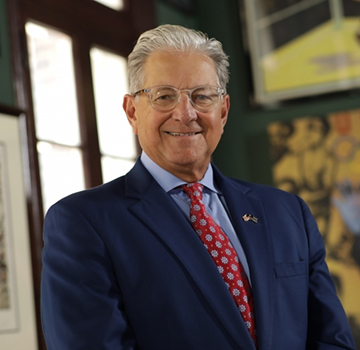
We need fighters who will win for us in Washington.
We need George Bochetto.
Some candidates might claim they will battle against special interests. Yet, once elected, they usually come to Washington to just cower against the mighty lobbyists who, all but, dominate our nation’s capital.
Not so with George Bochetto.
He has proven his mettle. We know he will fight for us in every round, every day of every session in the United States Senate.
Mr. Bochetto said, today, at the launch of his campaign, “I’m running for the U.S. Senate because I believe in hard work. I believe in respect for our laws. And I believe the leaders we elect should know how to face a challenge, rise to the occasion and fight relentlessly for our beliefs.”
We Italian Americans know well what Mr. Bochetto can do inside the ring. He stood up to Mayor Jim Kenney of Philadelphia and the woke mob there who wanted to tear down the Columbus statue at Marconi Plaza. He fought valiantly and effectively for all Italian Americans, not just in Philadelphia, but, also, in Pittsburgh and elsewhere in Pennsylvania and in other parts of the country. George Bochetto will do for all voters in Pennsylvania what he has done for all Italian Americans. He will fight and win for us in the United States Senate.
“The outcome of this election will fundamentally change our Commonwealth and our country for the better, or for the worse,” said Mr. Bochetto.
We know these are harrowing times. Americans have had to suffer through the spread of coronavirus, its bans, mandates and regulations. Many small businesses in Pennsylvania and throughout the country have been decimated by government overreach in combatting the pandemic. The American Dream seems lost as families are burdened by the artificial assaults of high inflation, high gas prices and high taxes. The crisis of the supply chain has vacated the shelves of grocery stores, not seen in the United States since the Great Depression. Americans are at a loss as to what has happened to their country. They find infuriating how elected leaders do nothing to stop mass riots, higher crime rates and the disturbing increase in homicides in Philadelphia and in so many other cities.
For things to improve, we need a champ in the United States Senate. We need George Bochetto.
When it looked as though all hope was lost in 2020, when Mayor Jim Kenney was going to have his way to tear down the inspiring Columbus statue at Marconi Plaza, it was George Bochetto who came through with a knockout blow. He threw a hard right punch in legal research and advocacy, working pro bono, for Philadelphia’s Italian American community. Thanks to him, the Columbus statue stands today, where it belongs, at Marconi Plaza.
In June, 2020, during the height of civil unrest, workers at the Delaware River Waterfront Corporation (DRWC) at Penn’s Landing in Philadelphia boarded up the lower section of the Christopher Columbus monument there to conceal the navigator’s name. The DRWC, which maintains the monument, said that the 106-foot historical obelisk did not align with their “mission to create and maintain a safe and welcome space for all.”
It seemed another hopeless lost cause for Italian Americans. Yet, once again, George Bochetto came to the rescue. More than just utilizing his legal expertise, he conveyed a mastery in negotiation to effectively represent the America 500 Anniversary Corporation. The settlement he fostered is a win for Italian Americans. Today, the “chalkboards” plastered across the base of the Columbus Monument have been rightly removed.
George Bochetto is not an outside celebrity who now only resides in the state to take advantage of an open senate seat there. Mr. Bochetto has lived in Pennsylvania for much of his adult life to raise his family, start and maintain a successful law practice and contribute to the betterment of his state.
In George Bochetto, Pennsylvania voters will have someone who understands the struggles they face. He knows, more than anyone, what it is like to be the underdog. His story is most inspiring. Abandoned by his natural parents at the doorsteps of an orphanage, he had to rely on the care of the Sisters of Mercy. Without parents, without family, he had to find his own way. He never gave up no matter how hard and unfair might be his unique circumstances. He found his calling in the boxing ring and in the halls of academia. He was an outstanding student who fought his way through law school to become one of Pennsylvania’s top attorneys.
“How we choose to move Pennsylvania forward is up to each one of us,” says Mr. Bochetto. “With your support, and our shared belief in the principles that keep our families safe and our economy prosperous, I believe our best days are yet to come."
Mr. Bochetto will crisscross his home state of Pennsylvania to meet with voters to earn their support and their vote.
He’s got ours. And we urge all Pennsylvania voters to support his candidacy and vote for George Bochetto for the United States Senate.
Editor’s Note: To learn more about George Bochetto and his run for the United States Senate, please log on to his YouTube channel here. We will follow up with reports on his senatorial campaign.
Primo Review
“HOUSE OF GUCCI”
- A Failed Attempt at Oscar Bait
- Too Many Flaws Riddle This Film by Ridley Scott
By Rami Chiaviello

“House of Gucci” is the most disappointing movie of 2021. The film, as directed by Ridley Scott, dramatizes the tumultuous inner conflicts of the Gucci family in the 1980s and 1990s. The struggle for power over the Gucci brand was a key event in international fashion. Lady Gaga stars as Patrizia Regganni, former wife of Maurizio Gucci, played by Adam Driver. Others in the film are Jared Leto as Paolo Gucci, Al Pacino as Aldo Gucci, Jeremy Irons as Rodolpho Gucci and Salma Hayek as Pina, a psychic who guides Patrizia.
With such a talented cast and director, it’s incredibly surprising how much “House of Gucci” fails in nearly every aspect of it’s identity. The film suffers from lackluster performances, bland dialogue, rushed pacing, an uninteresting visual style and frustrating creative choices. The film attempted to emulate a sleek, fast-paced, savvy style present in other bio-dramas such as “The Social Network,” “Steve Jobs,” and “The Founder.” In “House of Gucci,” however, a lack of charisma, heart and intelligence, present in those other films and crucial to their success, dooms this tale of an Italian fashion empire.
The first flaw noticed is the film’s dichotomous pacing. Scenes between characters seemingly last forever while nothing of substance is shown. Yet, in what remains an odd contradiction, the film goes through key events very quickly. In the beginning, for instance, Patrizia is introduced to Maurizio, only for the very next scene to have Maurizio attempt to convince his father, Rodolpho, to allow him to marry her. The speed of progression never allows the audience enough time to fully understand the characters.
The most glaring issue is the writing. “House of Gucci” suffers from one of the weakest screenplays, I’d argue, ever written for a production of this caliber. Nearly every line of dialogue is uninteresting and dull. The conversation between Rodolpho and his son, Maurizio, is vacuous. It feels incredibly slow, because it’s incredibly uninteresting. The film’s lackluster screenplay coupled with a frenetic, fast-paced progression exhausts the audience. We move from one event to another, but the journey is incredibly miserable.
Much of the buzz for “House of Gucci” was its stellar cast. Lady Gaga won an Oscar for her musical performance in the 2018 remake, “A Star is Born.” She is perfectly cast as Patrizzia. Adam Driver, a two-time Academy Award nominee, also, has an incredible likeness to Maurizio. Jared Leto, Jeremy Irons, Al Pacino and Salma Hayek are all incredibly talented with dozens of accolades. However, their performances in this film are less than desirable. Actually, I empathize with the actors involved, as it must have been incredibly difficult to make this lackluster screenplay work. Nevertheless, each actor and actress, with the notable exception of Lady Gaga, is simply phoning in their performances. When watching “House of Gucci,” the real-life characters seem to disappear when the actors portray them. You aren’t watching Maurizio Gucci or Rodolpho Gucci, you’re watching Adam Driver and Jeremy Irons with silly Italian accents. Lady Gaga, however, does shine in her role. She comes across as charming and enigmatic to make her character work.
What else could go wrong is answered in the film’s poor creative choices. Visually, there is nothing present as either stunning or compelling. The camera doesn’t elevate the story. This is both strange and sad, since Ridley Scott, over the course of his long and distinguished career, has cultivated one of the greatest visual styles among contemporary directors. The material, here, seems to box him in without the creative space to really explore a unique directorial style. The film is riddled with creative choices that are puzzling such as the editing that is both choppy and disorienting. Most baffling is the lack of a memorable original score. Instead, licensed music is a frequent accompaniment to be glaringly out of place. In one scene, Maurizio Gucci, after being cut out of his father’s business, works for his father-in-law’s trucking company. After cleaning a rig, he sprays one of his coworkers for a “fun” spray battle to ensue. It’s a ridiculous scene, made even more ridiculous by the choice to score the action with an Italian cover of “I’m A Believer” by The Monkees. While the most egregious example of this odd music choice, the film is riddled with moments like this.
Of all the issues with “House of Gucci,” none is more frustrating than the choice of narrative. The tragedy of the Gucci family is not conducive to light fare. Their tale is a reminder of how greed, jealousy, anger and power can tear a family, a brand and a business apart. This is especially true when an outside force is responsible for much of the destruction. “House of Gucci” is told through the perspective of Patrizia, who infamously ordered a contract killing of her ex-husband Maurizio. There is no issue with her viewpoint as narrative, except when this film conveys her, not as a coldhearted murderess but, rather, a glamorized victim. Meanwhile, those whom she destroyed are portrayed as pompous buffoons oblivious to her manipulations and deceptions. The Gucci family were no saints, mind you, but they deserved to be treated better.
“House of Gucci” is a sad reminder that just because you have the best pieces, doesn’t guarantee you’ll win the game.
Editor’s Note: Film locations for “House of Gucci” were mostly in Northern Italy; highlights include Florence, Como, Lake Como, Rome, Aosta Valley, parts of the countryside in Tuscany and Lazio regions, and, of course, Milan. “House of Gucci” is still playing in movie theaters throughout the country. You can learn more about the film by logging on to https://www.houseofguccimovie.ca/home/
UNITED WE STAND
Historic Gathering of Italian American Organizations Convene in Washington, D.C. to Counter The Continuous Assaults Against Columbus; and Other Controversies
- Judge Basil M. Russo Leads an Unprecedented Effort to Unify the Italian American Community to Preserve Our Heritage in an Era of Political Correct Hostility and Misinformation
- “We need to insist that Italian Americans be recognized as a distinct and important community within our country.”
By Truby Chiaviello

Kneeling Left: Charles Marsala, President of the American Italian Federation of the Southeast; Kneeling Right: George Bochetto, Bochetto/Lentz Law Firm.
Sitting Row Left to right: Berardo Paradiso, President of the Italian American Committee on Education; Anthony Ficarri, National Commandere for the Italian American War Veterans of the United States; Cav. Dr. Gilda Rorro, NJ Italian Heritage Commission; Marianna Gatto, Executive Director for the Italian American Museum of Los Angeles; Basil M. Russo, President of the Italian Sons and Daughters of America and the Conference of Presidents of Major Italian American Organizations; Rosemary De Luca, Secretary for the Conference of Presidents of Major Italian American Organizations; Gina Biancardi, President of the Italian Cultural Foundation at Casa Belvedere; Dr. Frank N. DeFrank, Immediate Past National President for UNICO National; Dr. Daniel L. Stabile, National President for the National Council for the Promotion of the Italian Language in American Schools, Inc. and Professor Santi Buscemi, Italian American Legal Defense Fund, Inc. 2nd Row Standing Left to Right: Robert DiBiase, Chair of the New Jersey Italian Heritage Commission; Gabriele Delmonaco, President for A Chance In Life (Boys’ & Girls’ Towns of Italy); Andre DiMino, Communications Director for Italian American One Voice Coalition; Dr. Joseph Scelsa, President of the Italian American Museum; Pietro Segalini, Senior Vice President for the National Council of Columbia Associations; Richard A. DiLiberto, Jr., Chairman of the Delaware Commission on Italian Heritage and Culture; Joseph Sciame, President of the Sons of Italy Foundation; Kathleen Strozza, Trustee for the UNICO Foundation; Patricia Santangelo, President, Italian Heritage and Culture Committee of the Bronx and Westchester; Joseph Rosalina, Vice President for the Italian Sons and Daughters of America; Mary Ann Re, DC Liaison and Ron Onesti, President for the Joint Civic Committee of Italian Americans
Back Row Left to Right: Patrick O’Boyle, American Delegation of the Sacred Military Constantinian Order of Saint George; John Viola, National Columbus Education Foundation; Dom Amara, Chair for the Italian American Alliance; Truby Chiaviello, Publisher for PRIMO Magazine; Thomas Damigella, Italian American Alliance; Francis M. Donnarumma, President for the National Italian American Bar Association; Robert Ferrito, President for OSDIA Commission for Social Justice; James Rosapepe, Vice Chairman for the Italian American Democratic Leadership Council and Frank Maselli, Chair of the American Italian Renaissance Foundation. Not pictured: Stephanie Longo, Associate Producer for the Italian American Podcast
Italian Americans go on offense.
That’s one key message conveyed in an unprecedented meeting on December 4th, at the Omni Shoreham Hotel, in Washington, D.C., to unify Italian American organizations throughout the United States, under the vigorous leadership of Judge Basil M. Russo, president of the Conference of Presidents of Major Italian American Organizations (COPOMIAO).
“When I was elected to serve as president of the COPOMIAO last year, I established two goals for myself,” said Judge Russo. “The first goal was to create a spirit of national unity within the Italian American community so that we could have a meaningful voice in influencing America’s collective culture.”
Judge Russo knows well the workings of law and politics, two key areas of importance for fairer treatment of Italian Americans in a host of current controversies, most notably the adversarial effort among schools and municipalities to eliminate Columbus Day and Columbus statues. Many years of service for state courts in Ohio came after an active tenure in Cleveland politics for Judge Russo. He was elected majority leader of the Cleveland City Council and once ran for mayor of that city. He has devoted himself to the Italian American community when he retired as the managing partner of Russo, Rosalina & Co, LPA, a law firm he helped found. As president of the Italian Sons and Daughters of America, since 2014, he established partnerships with the National Italian American Foundation and other organizations for programs to help engage and inspire Italian Americans of different ages and subsets. Now, as president of the COPOMIAO, comes his most significant effort: To unify the Italian American community to overcome daunting challenges.
“For decades our community sat silent while other ethnic and racial groups achieved their goals,” said Judge Russo. “To correct this situation, we have held three historic National Italian American Summit Meetings this year which have finally created a strong bond among all of major organizations.”
In the age of the Internet, social media and smart phone technology, political controversies have become interconnected for a response that’s international, even global. The time has come for greater unity, not just between Italian Americans, but between Italian Americans and Italians.
“The second goal I set for myself was to establish a meaningful relationship between the Italian American community and Italy,” said Judge Russo. “With each passing generation, Italian Americans and the land of their ancestors’ birth, have drifted farther and farther apart. If we are sincere about preserving our heritage for future generations, we need to work with Italy to promote mutual programs that create a stronger bond between Italy and the U. S. We also need to work to perpetuate the Italian language, as well as our Italian American traditions and customs. The ambassador’s reception was an important first step in doing so.”
The night before the December 4th meeting, Italian American leaders were invited by Italy’s ambassador, Mariangela Zappia, to convene at her official residence, the beautiful Villa Firenze. Stronger ties with the Italian government were called for in speeches by her and Judge Russo. The necessity for Italian and Italian American leaders to work together to preserve our beloved Italian heritage was specifically proclaimed.
A closer relationship with Italy will be one of many key attributes, along with a unified front of Italian American organization, to counter and overcome the hostilities in the years ahead.
Editor’s Note: To read the latest news and updates of the Conference of Presidents of Major Italian American Organizations, please log on to their web site, https://copomiao.org/ To read the latest activities at the Embassy of Italy, please log on to https://ambwashingtondc.esteri.it/ambasciata_washington/en/
ITALIAN AMERICAN LEADERS FORGE A STRATEGIC PARTNERSHIP WITH ITALY’S AMBASSADOR TO THE UNITED STATES
A Historic Meeting Convenes at the Villa Firenze, The Ambassador’s Official Residence in Washington
- Part of an Extended Weekend of Membership Activities for the Conference of Presidents of Major Italian American Organizations
- “How do we keep this flag, two flags, the American flag, of course, and the Italian flag…how do we keep this link alive,” said The Honorable Mariangela Zappia, Ambassador of the Italian Republic to the United States of America
- “This landmark meeting is the culmination of a yearlong effort, which has united a once-fragmented Italian American community around common goals that include the preservation of our history, heritage, institutions and businesses,” said The Honorable Basil M. Russo, president of the Conference of Presidents of Major Italian American Organization
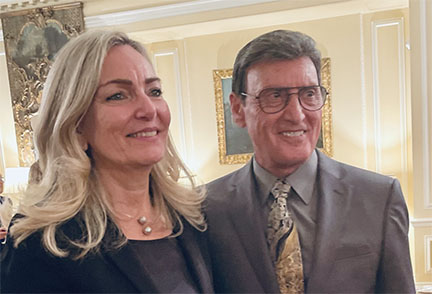
A delegation of Italian American leaders met with Mariangela Zappia, Italy’s first female ambassador to the United States, to cement a partnership designed to strengthen cultural relations, foster new trade and bolster advocacy on issues of mutual concern.
The much-anticipated meeting in Washington, D.C. was organized by Ambassador Zappia and The Honorable Basil M. Russo, current president of The Conference of Presidents of Major Italian American Organizations (COPOMIAO).
“This landmark meeting is the culmination of a yearlong effort, which has united a once-fragmented Italian American community around common goals that include the preservation of our history, heritage, institutions and businesses,” Judge Russo said. “Hon. Mariangela Zappia has represented Italy at NATO and the UN, and now she stands with Italian America to promote our initiatives and policies — and COPOMIAO, in turn, is here to do the same for Italy.”
“The Embassy, and Italian institutions on both sides of the Atlantic, greatly appreciate all that you do, each day, to promote our language, culture, and traditions — in short, our heritage — in this exceptional country,” noted Ambassador Zappia, in welcoming Judge Russo and the COPOMIAO delegation. “The entire Italian diplomatic network in the U.S. is proud to work with you, side-by-side, to continue enhancing and promoting our beautiful Italy…Italian identity is strong and apparent in all aspects of daily life in this wonderful country: from food to art, culture to music, architecture to politics.”
The meeting was held in the evening of Friday, December 3rd, inside the ambassador’s official residence, the Villa Firenze, in Northwest Washington. Speeches made by Ambassador Zappia and Judge Russo preceded a buffet dinner for the delegation.
Leaders of various advocacy and philanthropic organizations attended the gathering to forge ties between Italy’s ambassador, the Italian embassy staff and the Italian America community. Proponents of different Italian American causes had the chance to meet together to network and exchange ideas.
The struggle to preserve our Italian American legacy continues.
As 2021 comes to a close, Italian Americans look back on what was the second of two consecutive years of assaults and accusations against Christopher Columbus. Statues depicting Columbus, not to mention monuments dedicated to the Genoese explorer, some modest in scope and size, were removed from parks and public land. From cities and towns to colleges and elementary schools, efforts went almost unabated to either remove Columbus Day, or replace with Indigenous Peoples' Day.
Italian Americans have come together to fight back. Over the past 18 months, lawsuits were filed in Philadelphia, West Orange, New Jersey, Chicago and elsewhere to claim civil rights violations when local officials decided to erase most, if not all, depictions and celebrations of Columbus. Many advocacy groups, most notably the Italian American One Voice Coalition, gathered throughout the year in public forums at school boards and city council meetings to speak up to successfully retain official recognition of Columbus Day and to stop the holiday’s deletion in school calendars.
In forging closer ties with Italy, through Ambassador Zappia and embassy staff, Italian Americans may have an ally to provide important resources to help change the current political correct narrative in America against Columbus and other historical figures.
The evening gathering at the Villa Firenze was part of a two-day event to include a meeting of members for the Conference of Presidents of Major Italian American Organizations. Inside the famously elegant Omni Shoreham Hotel, beside Rock Creek Park, in Northwest Washington, leaders, who represented groups, both local and national, convened on Saturday, December 4th.
Judge Russo presided over a meeting to begin at 10:00 a.m. with a round table introduction of participants. Each attendee was asked to give a brief speech on what made him or her interested in getting involved to preserve their Italian American heritage. Many spoke of being inspired by a parent or close relative to retain and promote their Italian legacy.
Those in attendance were noted for achievements in law, medicine, business and academia. When time came to speak, however, many of them were unable to hold back tears. They emotionally recalled how a parent or grandparent, who emigrated from Italy, poor and dispossessed, beamed with pride to see their son or granddaughter graduate with a medical degree, pass a bar exam or earn a doctorate.
The meeting’s purpose was to change the legal status of the organization to allow for more advocacy on the part of the Conference of Presidents of Major Italian American Organizations. As Italian American media companies were invited to join, PRIMO Magazine was one of several, including Fra Noi and the Italian American Podcast, to officially become their newest members.
The year ahead will, no doubt, present more challenges and conflicts for Italian Americans. Many are called to rise and defend our collective legacy. Under the leadership of Judge Russo, members of The Conference of Presidents of Major Italian American Organizations will move forward with continued vigor and persistence to rightly defend our place in America.
Editor’s Note: Pictured: Ambassador Mariangela Zappia and Judge Basil M. Russo, inside the Villa Firenze with members of the Conference of Presidents of Major Italian American Organizations, a picture of the Italian ambassador’s official residence, Villa Firenze, in Northwest Washington, D.C., and the Omni Shoreham Hotel, near Rock Creek Park, where a national meeting was convened for the Conference of Presidents of Major Italian American Organizations. To read the latest news and updates of the Conference of Presidents of Major Italian American Organizations, please log on to their web site, https://copomiao.org/
HISTORY OF ITALIAN AMERICAN DISCRIMINATION AT THE CITY UNIVERSITY OF NEW YORK (CUNY)
Third of a Three Part Article
1991-2021
- Dr. Joseph V. Scelsa, Director of The John D. Calandra Italian-American Institute Takes CUNY to Court
- Many Cases Settled in Arbitration; Others Lost in Federal Court
- Current Status Show Signs of Little Progress
By Santi Buscemi
In calls for meetings by the City University of New York (CUNY) to decide moving the John D. Calandra Institute from Manhattan to Staten Island, one key participant was never notified: Dr. Joseph V. Scelsa, director of the John D. Calandra Italian-American Institute.
A number of New York state legislators contacted Dr. Scelsa about his absence at university meetings. His reaction was of shock and dismay. He had never been informed by the university that any such meetings were scheduled. This led state senator Nicholas Spano to write to the CUNY trustees about his anger over the way the Calandra Institute and Dr. Sclesa were being treated. To him and others, it was clear that Chancellor Anne Reynolds’ office was intent on removing Dr. Scelsa and destroying the institute. Dr. Scelsa received support from the Italian American Legal Defense and Higher Education Fund (IALDHEF). He recruited his friend, Philip Foglia, former assistant district attorney for the Bronx and Queens, who was then in private practice, to file an injunction against the university.
On September 9, 1992, in the federal courthouse on Foley Square, the opposing parties presented their cases before Hon. Constance Baker Motley. After three weeks of testimony, Judge Baker Motley found CUNY guilty of discrimination and issued an injunction against the university. “CUNY is seeking to curtail the independence of the Institute,” she wrote, “and put Dr. Scelsa on a short leash, one where he lacks room to bite his master, CUNY.” She also wrote that, “it is clear that the question of discrimination involved related not only to Dr. Scelsa but to Italian-Americans as a group.” As to the future of the Calandra Institute, Judge Baker Motley ruled that it must stay in Manhattan, which was “central to its function. CUNY has known since the latter half of the 1970’s,” she continued, “that Italian-Americans are underrepresented in both faculty and non-faculty. The only rational way to explain this disparity is discrimination.”
In 1993, with the assistance of Governor Mario Cuomo’s office, the U.S. Department of Labor’s complaint was resolved. Italian American faculty and staff who complained of discrimination at CUNY were allowed to go to arbitration; of the 40 who chose to do so, all were successful. In addition, it was decided that the Calandra Institute would stay in Manhattan, becoming a research institution with state funds budgeted for that purpose. Affirmative Action status was extended to Italian Americans and a distinguished professor of Italian studies was hired at CUNY. Finally, the university agreed to create a panel to regularly monitor and report the progress of Italian Americans at the university. When CUNY had not fulfilled its commitment as outlined above, the IALDHEF filed and won a second suit in the New York Supreme Court in 1999.
Dr. Scelsa took a leave of absence in 1998 as director of the Calandra Institute to begin work on establishing the Italian-American Museum. Three years later, the museum became a reality and a great success. Located on the grounds of the old Banca Stabile building at the intersection of Mulberry and Grand Streets in the heart of New York’s Little Italy, the museum is currently experiencing a major renovation and expansion and will re-open in 2022.
Unfortunately, despite several legal and political victories, it seems little progress has been made in granting Italian Americans the justice they deserve at CUNY. In reports compiled by the John D. Calandra Italian-American Institute, evidence is presented to show that Italian Americans at CUNY have lost ground. For example, at the senior colleges, the percentage of Italian American full-time classified staff dropped from 8.69 percent in 1978 to 8.07 percent in 1993 to 3.31 percent in 2020. This contrasts markedly with gains made by other Affirmative Action groups, which saw a rise from 31.02 percent in 1978 to 55.79 percent in 1993 to 72.35 percent in 2020. Similar statistics were reported for part-time classified staff. It is important to note that the information for these studies came directly from CUNY’s own Office of Compliance and Diversity.
When Affirmative Action for Italian Americans at CUNY was first established, the Italian American student population was 25 percent. It is now 8 percent.
In 2006, Dr. Vincenzo Milione, the administrator assigned to oversee the affirmative action program at the John D. Calandra Institute met with Italian American state legislators to show how an Italian American Affirmative Action program could be implemented in the same way as other Affirmative Action programs for other minorities. Dr. Milione had filed suit against the university to claim he was demoted over a report on Italian American discrimination. His case was dismissed as was his appeal in federal court. In 2007, Maria Fosco, former director of administration and community relations at the Calandra institute, filed suit in federal court to claim she was reassigned to a different position after she informed the public about under-representation of Italian Americans at CUNY. She too lost her case and appeal in federal court. In that same year, Jeanne Coyne filed suit in federal court to claim discrimination after she was passed over for a full-time faculty position at the College of Staten Island. She was an adjunct professor there for many years and assisted Dr. Milione in his efforts.
Although an expert panel to review the status of Italian Americans at CUNY was established in 1992, an analysis for its review was not completed until 2007 and the next five-year review was not conducted until 2014.
In an article titled, “The 80th Street Mafia,” Dr. Joseph V. Sclesa explained his drive to seek justice for Italian Americans at CUNY: “My strong conviction for justice is derived from my heritage and from those Italians who believed in justice for all. Was it not the Italian Cesare Beccaria who, with his short thesis ‘On Crimes and Punishment’ in 1764, humanized the courts of Europe in their administration of the law and who is credited with having ended torture and laid down the philosophy and framework for the Fifth Amendment to our Constitution, which guarantees ‘equal protection’ under law for all citizens?’”
Author’s Note:
In 1974, I was appointed Chairman of the Department of English at Middlesex College in Edison, New Jersey, a post I held for twenty-seven years. My responsibilities included hiring and supervising faculty as well as making recommendations for promotion and tenure. When I called my father to tell him the good news and to explain the nature of my job, he broke into tears. Then he said: Non ti scordare gl’italiani (Do not forget them). I have not and will not ever forget them, nor will I ever tire of honoring their parents and grandparents, who came to this country, as mine did, to make a better life for their children.
Santi Buscemi is Professor Emeritus at Middlesex College in Edison, NJ. He is a translator of Italian and Sicilian literature, primarily the works of Luigi Capuana.
Days of Halloween
CASTLE BALSORANO
The Abruzzi Castle is a Pilgrimage Site for Fans of Bad Italian Horror Films
- The setting was supposed to be an eerie Scottish manor. Yet, when the castle appeared, audiences shouted “Balsorano!”
By Reem Nourallah
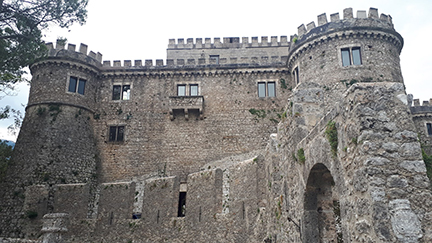
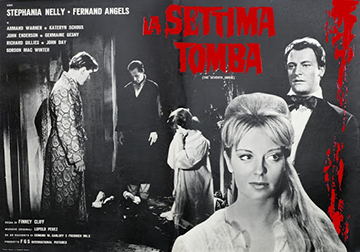 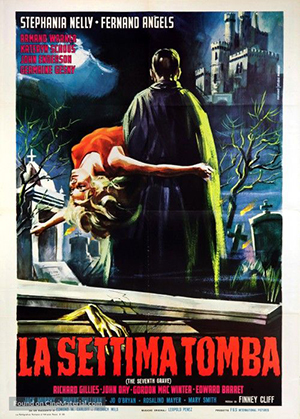
You don’t have to travel to Italy to see ghosts at Castle Balsorano.
Instead, you can view the many poltergeists of the Italian fortress on television; or perhaps on YouTube or by way of video streaming.
Castle Balsorano was constructed in the 15th century as a gift from the king of France to the Piccolomini warrior clan who fought for him. Originally from Siena, the Piccolomini, all but dominated for centuries the L’Aquila province of Abruzzo. Their noble status ended in the 19th century while their castle lived on to be named after the nearby village.
Castle Balsorano was the reliable setting for many Italian horror and exploitation films of the 1960s and 1970s. If a film was supposed to be set inside a dark and foreboding Hungarian castle, then it was Castle Balsorano, in Italy, to host actors and film crews. If Frankenstein was to be reanimated, Castle Balsorano got the call. If a psychotic recluse sought to torture uninhibited youth, first stop was Balsorano.
By some counts, twenty-two films were shot in and around Castle Balsorano. Do we recommend you watch them? Remember, this is Italy. If you think films with titles such as “The Devil’s Wedding Night,” “Bloody Pit of Horror” and “Seven Golden Women Against Two” are of the same quality churned out by Hollywood, think again. Italian filmmakers loved Gothic, but on the cheap. It was more sex than fright that producers sought to give audiences.
Castle Balsorano was the setting for some of Italy’s worst films.
“Terror in the Crypt” comes to mind. The film was made in 1964 on a shoestring budget. What attracted producers was not only the Gothic environs; but that Castle Balsorano was large enough for cast and crew to sleep there and they could save money on hotel accommodations.
Balsorano was no secret to Italians. “The Seventh Grave” was shown in theaters in 1965. The setting was supposed to be an eerie Scottish manor. Yet, when the castle appeared, audiences shouted “Balsorano!” The film was one of the worst from Italy. The director, Garibaldi Serra Caracciolo, had no experience. He did not follow the 180 degree rule of filmmaking. Scenes were jumbled together after the script girl made several errors and the film was released without scene continuity.
Rumor had it that Balsorano hosted wild parties and orgies. Truth be known, time inside the castle was anything but glamorous or tantalizing. The fortification lacked central heating or air conditioning. If a film was made in winter, then cast and crew worked in frigid conditions. The opposite was in summertime when large bricks soaked up the Italian sun to turn the castle into an oven. Filming was done quickly. Scripts were unfinished. The writers had to conceive plots and characters while the cameras rolled. A week was all it took to get a film made in Balsorano.
Strange, that considering its long line of horror and exploitation films made there, no owner has taken advantage of Balsorano’s celluloid notoriety. The castle has been up for sale for some years but no one wants to buy her. Horror fans go out of their way to see the famous locale. Yet, they are greeted by a locked entrance to an obscure park. The castle is now closed to visitors.
The joy of Italian horror was its Gothic celebration. The cobwebs, the shadows, the somber stonework. No matter how bad was the film, Castle Balsorano never let down fans. She was then, and now, a haunting yet beautiful hidden treasure of Italy’s medieval past and filmmaking infamy.
Editor’s Note: You can learn more about Italian horror films throughout the decades in PRIMO’s “Italian Horror Cinema: The Most Influential Horror Films from Italy” at http://www.onlineprimo.com/books.html
HISTORY OF ITALIAN AMERICAN DISCRIMINATION AT THE CITY UNIVERSITY OF NEW YORK (CUNY)
Second of a Three Part Article
1977-1991
- Italian American Employment at CUNY Dwindles in the Wake of Affirmative Action Status
- The Founding of The John D. Calandra Italian-American Institute
- The Founding of the Italian-American Legal Defense and Higher Education Fund
- Retaliation by CUNY Begins Against Dr. Joseph V. Scelsa and the Calandra Institute
By Santi Buscemi
For many talented and well-qualified Italian American professors, CUNY Chancellor Robert Kibbee’s decision to extend to them Affirmative Action status in 1976 came too late.
New York City’s budgetary problems prompted CUNY to retrench many of its faculty; a move to severely impact Italian Americans and to make their underrepresentation even worse. At the Borough of Manhattan Community College, for example, 36 percent of the Italian American faculty were retrenched. Italian American representation for the entire university system fell from 4.3 percent to 2.6 percent.
In December, 1977 and January, 1978, Senator John D. Calandra, head of the Italian American caucus in the New York State Senate, held a hearing at CUNY. He published a report titled, “A History of Italian-American Discrimination at CUNY.” He found no progress regarding the status of Italian Americans at CUNY. He recommended, among other measures, the establishment of an Italian American institute to guide the university on Italian American affairs, cultural and international services.
What came to be known as “The Calandra Report” had as one of its stated objectives, “to provide counselors sensitive to the needs of Italian students in each borough….” Funds for the institute’s creation were included in the New York State budget of 1979 and 1980, Eighteen new counselor positions were devised to provide services to the Italian American community. It was not until 1984 when the institute was incorporated into CUNY. A year after Senator Calandra passed away in 1986, the institute was renamed, in his honor, as the John D. Calandra Italian-American Institute.
Two studies issued by the institute in 1982 concluded that guidance services for Italian American students “were meager.” They also “found that CUNY special programs such as SEEK and College Discovery [aimed at helping students who are new to the college experience and need financial assistance] gave little attention to Italian American undergraduate students.” They found that the number of assistantships and scholarships for Italian American graduate students, “was disproportionately low…” The studies recommended a specialized counseling program for Italian Americans as originally supported, in a separate study, by Dr. Joseph V. Scelsa. They complained that “counselors were hired as Higher Education Officers rather than as counseling faculty with academic rank and the possibility of tenure.”
In 1986, on the tenth anniversary of the Kibbee directive, Chancellor Joseph S. Murphy reaffirmed CUNY’s Affirmative Action status for Italian Americans. A year later, Professor Richard Gambino, a Calandra Institute Faculty Fellow, completed a report titled, “Italian-American Studies and Italian-Americans at the City University of New York: Report and Recommendations.” He declared that, despite Affirmative Action status for Italian Americans at CUNY, their representation in the faculty and administration had not improved. In 1978, Italian Americans were five percent of the faculty; by 1985, that figure had not changed.
A committee of Italian American leaders met with Chancellor Murphy in 1988 to discuss the status of Italian Americans at CUNY. In attendance were William Fugazy, president of the Coalition of Italian-American Organizations, City Council Majority Leader Peter Vallone, State Senator Guy Vallella, Assemblyman Eric Vialicino and Dr. Scelsa, Director of the Calandra Institute. They discussed the creation of an Italian Studies program to include the appointment of a distinguished professor. They then brought up the findings by Professor Gambino to show no increase of Italian Americans were among CUNY faculty and administration after Affirmative Action status. In fact, the number of Italian Americans employed at the university had decreased. Their dismay extended to how CUNY could only count one Italian American president among its 23 colleges over its 140 year history. Because of a lack of progress and the unlikelihood of a political solution, the group formed the Italian American Legal Defense and Higher Education Fund (IALDHEF) on July 22, 1988.
During later meetings between legislators and Chancellor Murphy’s representatives, CUNY agreed to find space for the institute, to appoint a distinguished professor of Italian American studies and to join with legislators to form the Advisory Committee on Urban Public Higher Education. They offered advice on the needs of Italian American students and faculty. At the committee’s first meeting, Judge Vincent Massaro, the group’s chairman, requested CUNY’s Affirmative Action plans for all of its 21 colleges as filed with the Equal Employment Opportunity Commission. By September 1991, only nine of the 21 reports were submitted, none of which addressed the concerns of Italian Americans. Chairman Massaro asked Dr. Scelsa to serve on the committee, and at its next meeting, the group created three sub-committees: 1) Affirmative Action, 2) Italian-American Studies, and 3) the Calandra Italian-American Institute. Dr. Vincenzo Milione was appointed assistant director of research at Calandra to serve as a resource for the Affirmative Action sub-committee. His group made the following recommendations:
• During the summer of 1991, the Chancellor’s office “conduct a utilization analysis to determine the level of participation of Italian-Americans in all CUNY faculty and staff positions, at every level and in all categories”;
• CUNY establish a “Ph.D. in Italian, which incorporates an Italian-American literature component”; and
• The status of the Calandra Institute be elevated so as to reflect its “academic as well as its administrative…scope and function,” as well as the fact that “it provides services to the entire university community.”
The committee’s report stated that the “purpose of the Institute is to promote higher education among Italian-Americans, a major ethnic group in the United States and the single largest European ancestral group in New York State, in New York City and at CUNY.” They recommended the director of the institute be appointed to the faculty of CUNY, “with the appropriate administrative title of Full University Dean.”
Referencing these recommendations, the IALDHEF presented its case to the vice-chancellor, but this individual never responded. The group then filed a complaint with the U.S. Department of Labor, charging CUNY with discrimination against Italian Americans. Since there was no response from the university, the Department of Labor issued 22 class action complaints, one for each of CUNY’s campuses.
What was to come next was a time of retaliation by CUNY. In 1992, the university targeted Dr. Scelsa for removal at the Calandra Institute to relocated the institute from Manhattan to Staten Island to diminish its importance.
Editor’s Note: The next article will focus on how Dr. Joseph V. Scelsa and his supporters took CUNY to court. The author currently serves as vice-president of the Italian-American Legal Defense and Higher Education Fund. Pictured is the late state Senator John D. Calandra who spearheaded greater representation of Italian Americans at CUNY. Several of the 21 colleges of CUNY are pictured, including John Jay, specializing in criminal justice in Manhattan, Brooklyn College off Flatbush Avenue and CUNY School of Medicine in Harlem.
HISTORY OF ITALIAN AMERICAN DISCRIMINATION AT CUNY
First of a Three Part Article
1960-1976
Affirmative Action Granted to Italian Americans at CUNY After Years of Struggle for Equal Status
By Santi Buscemi, Vice-President, Italian-American Legal Defense and Higher Education Fund
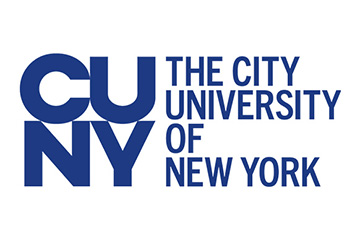 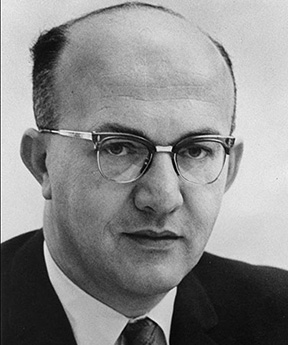
The history of Italian-American faculty and administration at the City University of New York (CUNY) spans more than a half century of struggle to obtain equitable treatment regarding hiring, tenure, and promotion. Despite several important legal decisions, including the granting of affirmative action status to Italian Americans at the university, as well as victories in landmark civil rights court cases, little progress has been made in increasing representation of this group in CUNY’s professional ranks. In short, the university continues to discriminate against Italian Americans.
By the 1960s, the children and grandchildren of Italians, who had immigrated to the New York area during the massive wave of immigration between the 1880s and the 1920s, had started entering the professions, including college teaching in considerable numbers. The overwhelming majority of these new professionals were the descendants of “contadini,” landless peasants of the south of Italy, who had worked on the estates of the “latifundi,” or propertied class, who maintained a stranglehold on the economy of the “Mezzogiorno.” Well after the Risorgimento and deep into the 20th century, little had changed despite the incorporation of the Kingdom of the Two Sicilies into a united Italy under the House of Savoy, a process begun in 1860 with Garibaldi and his Thousand and completed with the annexation of Rome in 1870.
The New York metropolitan area was home to the largest Italian American community in the United States. As members of this group obtained greater and greater education, it was only natural that many of those interested in college teaching sought employment at CUNY, one of the fastest growing centers for higher learning in the nation. During the 1950s and 1960s, the vast majority of these scholars entered the profession as instructors and assistant professors. At first, there was no formal bond among these young professors, and they met together only socially, if at all. When it became clear, however, that the university was denying promotion and tenure to Italian Americans, they formed the Association of Italian-American Faculty at the City University of New York (later referenced as the “Italian-American Faculty Association”), to combat discrimination at the university. Led by Dr. Richard Bossone, its goal was to gain Affirmative Action status for Italian Americans at CUNY.
In 1971, they met with representatives of the school chancellor but, failing to receive any significant response, they filed a Writ of Mandamus designed to force CUNY to obtain statistical information on the recruitment, hiring and promotion of Italian Americans at the university. According to Dr. Joseph V. Scelsa, “information provided over the next 12 months overwhelmingly confirmed earlier suspicions of discrimination.”
That same year, Dr. Joseph Valletutti, executive director of Americans of Italian Descent, Inc, writing in an article published in The Challenge, formally charged CUNY with de facto discrimination against Italians. Dr. Valletutti reported that, as of 1970, only two of the 21 members of the Board of Higher Education were Italian Americans, a serious underrepresentation, since one in five New Yorkers were of Italian descent. The article indicated there were no Italian Americans on the chancellor’s staff; none of CUNY’s many deans were Italian American; less than six percent of the university’s faculty were members of this group.
One of the most egregious cases of discrimination involved Dr. Joseph Lombardo of Queens College, whose appeal for redress spanned six years (1965-1971). After the New York State Human Rights Division ruled in his favor, the university agreed to grant him his well-earned full professorship, retroactively to 1965, with a cash settlement. Dr. Lombardo’s struggle is important, for the stalling tactics CUNY used against him characterize the actions it would use against other Italian Americans who attempted to assert their rights.
In the fall of 1972, Dr. Richard Bossone led the Italian-American Faculty Association in an effort to support the promotion of several Italian American professors and to add an Italian American to the Board of Trustees, recommending a candidate from Staten Island to fill a vacancy. Unfortunately, this request was ignored by Mayor Lindsay, who chose a non Italian American.
In the fall of 1973, the New York State Assembly held a hearing chaired by Assemblymen Antonio Olivieri and Anthony De Falco, that found CUNY deficient in allocating resources for Italian American students while student groups representing other ethnicities were funded as a matter of course. Indeed, Italian Americans were even excluded from the SEEK program, which provides financial and academic support for talented students.
In 1974 and 1976, the Italian-American Faculty Association compiled two key reports that, according to Dr. Frank Elmi, indicated significant “underrepresentation of Italian-American faculty and administration as well as neglect of Italian-American students.” The reports also showed that, “…despite the fact that Italian Americans constitute 25 percent of the population of New York City and despite the progressively increasing number of Italian Americans earning doctoral degrees, the representation of Italian Americans at the City University of New York was at a low 5 percent…”
The problem of equal treatment of Italian American students also surfaced in these reports. The first of these identified a clear and urgent need for improved counseling: “…Italian-American students constitute a large if not the largest proportion of failures in CUNY despite the fact that their parents are paying through their tax dollars for the support of [academic, extracurricular, and counseling] programs.” A 1975 CUNY study, by Profs. Fucillo and Krase, pointed to the same problem as it relates to Brooklyn College. It provided empirical information as “to the alienation and neglect of Italian-American students at Brooklyn College,” and it “proposed special outreach programs, as well as extra-curricular and curricular programs, to alleviate the alienation of Italian-American students…”
Italian American students at CUNY had already begun to complain about insufficient counseling and inequitable distribution of student fees, and they appealed to state officials for redress. As a result of both faculty and student pressure, Chancellor Robert J. Kibbee addressed these issues in a statement to all CUNY presidents. Kibbee indicated that the number of Italian Americans entering the university was increasing from all sections of the city, and he asked the presidents to consider ways in serve this population better: “…it behooves all of us—faculty, administrators, and staff—to recognize, understand, and respect the traditions, customs, and beliefs of this large and important component of our academic community.”
“Italian Americans: The Neglected Minority in the City University,” released in May 1976, called for affirmative action status to be extended to Italian Americans. In December of that year, Chancellor Kibbee wrote to the CUNY Council of Presidents, creating that status: “It is my belief that the present situation requires the University to take positive action to assure that qualified persons of Italian American ancestry are identified so that they can be considered fairly along with other candidates for positions that might become available at the University. I am equally concerned that the processes of the University are such that Italian-Americans receive fair consideration in the processes that lead to promotion and tenure within the University. To this end, I am designating Italian-Americans as an Affirmative Action category for this University…. I also have instructed the Affirmative Action office to include Italian-Americans in the data collected for Affirmative Action purposes.”
Editor’s Note: The next article will focus on the lack of enforcement for Affirmative Action programs for Italian Americans at CUNY. Next to the university logo is Robert Kibbee, chancellor of the university that bestowed affirmative status to Italians.
Primo Review
DANCE THE FRIGHT AWAY
“Suspiria,” The Classic Italian Horror Film from 1977 is Remade
The New “Reinvented” Version - A Flop
By Truby Chiaviello
Horror remains the pre-eminent genre for contemporary filmmakers to remake what was done 44 years ago. Never mind if a film attained “classic” or “masterpiece” status, today’s young and hungry directors, producers and writers are convinced they can do better. The past is sought to be redirected in the present (no pun intended). They are no longer to be called remakes, by the way, but, rather, reinventions or, better yet, re-imaginings. Many horror films have been remade in recent years: From “Halloween” to “Nightmare on Elm Street” to “The Omen” and soon to come, “The Exorcist.”
For awhile there, it seemed “Suspiria” might miss the resurrection bandwagon. Since 2007, various filmmakers and their backers announced the remake to come. However, cameras remain stilled without a set date for production and release. Many fans thought the Dario Argento classic from 1977 was too far ahead in the realm of cinematic artistry for an accurate recapture. Yet, the name recognition and classic status among horror aficionados gave “Suspiria” a bankable incentive for a remake.
Twelve years ago, Director Luca Guadagnino purchased the rights from the film’s original screenwriters Dario Argento and his ex-wife Daria Nicolodi, who passed away in 2020. With a new script written by David Kajganich, “Suspiria” was resuscitated. The remade version was finally completed in 2018 and is now available for viewing on Amazon Prime.
One can see the difference between the original by Argento and its current facsimile by Guadagnino in the first few minutes of both films. In 1977, “Suspiria” opened with a memorable high-tech score by the Italian progressive rock band, Goblins. We see a woman running from an fairytale-like inspired building through a rainy forest. She makes her way to town for sanctuary inside a friend’s apartment. The street, the forest and apartment are alit in technicolor hues of red, green and purple. While changing out of her wet clothes, she peers out a window, thinking she was followed. Suddenly, a beastly arm breaks through the glass to grab her by the neck and murder her in grisly fashion. In contrast, the 2018 version opens with a young woman who walks to the home office of a psychologist. She bypasses political demonstrators who are chased by police. Inside a grayly room, she is incoherent and mumbles about her fears, only to befuddle the elderly expert and leave in a panic.
Such are the differences between the two films: “Suspiria,” the original, was mesmerizing, exciting and scary. “Suspiria,” the remake, is ambiguous, tedious and fright-less.
When “Suspiria” was first released in 1977, Dario Argento was, by then, proclaimed as Italy’s answer to Alfred Hitchcock. His suspense orientation was most pronounced in the murder thrill genre known as Giallo. “Suspiria” was to be Argento’s first foray into supernatural horror. The film’s title comes from a set of essays and poems written by Thomas De Quincey in 1845, titled “Suspiria de Profundis.” Most famous for his memoir, “Confessions of an English Opium-Eater,” the British writer and poet experimented with narcotics for stream of consciousness. Argento was inspired by the work to develop an ambitious trilogy of horror films under the heading, “The Three Mothers,” beginning with films, “Suspiria,” in 1977, followed by “Inferno,” in 1980, and “Mother of Tears,” in 2007.
“Suspiria” was declared a masterstroke of filmmaking in 1977 when cinematographer Luciano Tovoli shot the film in technicolor. This was to be the last film made with a specific color process that once gave life to such classics as “The Wizard of Oz,” “The Searchers” and “Fantasia.” Deep contrasts of red and blue hues created a haunting and tense atmosphere in “Suspiria.” Argento’s cold and deliberate pacing heightened the surreal mystique of the film. He had written the screenplay with Daria Nicolodi, an actress to whom he was married from 1974 to 1985. In the first few minutes of the film, viewers knew they were in for a pioneering event in horror.
Fast forward to 2018 when Guadagnino sought to rebrand the 1977 classic. His intentions were to remake a film worthy of its predecessor. Guadagnino is a skilled director whose film, “I Am Love,” in 2009, won rave reviews by critics. In “Suspiria,” however, his dilemma was to choose whether to make a carbon copy of the original or seek an entirely new direction. Either way, the new film was to be compared to what was done 44 years ago. Since the original is considered a cinematic showpiece, any remake is at an inherent disadvantage. Indeed, Guadagnino made the decision at pre-production to escape the technicolor wonder that was “Suspiria.” Hence, the 2018 version conveys an uninspiring off-yellow color scheme to contain settings of rundown interiors for a pace that is slow and esoteric.
Both “Suspiria” films are set in the mid-1970s. Yet, the original took place in Munich, the capital of Bavaria, noted for its opulence and traditional German culture. In the 2018 version, we are transported, instead, to Berlin to see a ravaged former capital overwhelmed by domestic terrorists and communist agitators. The original was spooky and haunting. The remake is drab and dreary.
“Suspiria” tells the story of a young American woman who moves to Germany to attend classes at a dance academy. The school turns out to be a coven of witches. The new student is soon enmeshed in a conspiracy of sorcery and murder. Dakota Johnson plays the lead role in the new rendition with Tilda Swinton as the top dance instructor and witch. Speaking about Swinton, the British actress undertakes two other roles in the film; one of which is the old professor. The move does little for the production and to some extent detracts from the story since it was obvious to some eyes that Swinton was playing the male role, albeit camouflaged in extensive makeup. The 1977 version starred as the protagonist, Jessica Harper, who makes a brief appearance in the remake. Joan Bennett and Alida Valli appeared in the original film as the dance instructor witches. Valli was especially impressive for her transition from an exotic beauty, who once starred in Hitchcock’s, “The Paradine Case,” to the stiff and stern German taskmaster in “Suspiria.”
A key difference between both films is length. The newer version is much too long. The original “Suspiria” is just 1-1/2 hours while the remake is 2-1/2 hours. The identity of the coven is kept secret in the 1977 version until near the end. In the remake, we discover the place is owned and operated by conjurers at the outset. Members of the coven are not sinister but rather impish and haughty. In fact, there are no scares in the remake. The film seems more concerned with political activism. More scenes depict riots, demonstrations and pickets than real frights. Horror was always apolitical. Fears were derived in the most intimate of settings for a confrontation with dangerous demons. To try and connect the phantasmic to a political premise is to ruin the genre.
Some films should be remade. Others should not. “Suspiria” is one of the great masterpieces of horror. To try and reexamine or reimagine this extraordinary work is to offer filmgoers bronze in lieu of gold.
Editor’s Note: Compare and contrast still photographs of the remade version of “Suspiria” with its original precedent. Tilda Swinton stars in the latest rendering while Jessica Harper was the American protagonist in the original. Two victims in the films portray a serious difference in color schemes with the new stinted interpretation versus the dreamlike conception of the original. Publicity photographs of both directors show strikingly different poses for Luca Guadagnino and Dario Argento. The remade version of “Suspiria” is currently available for viewing on Amazon Prime
THE BLESSED VIRGIN MARY…BY DANTE
Why All Roman Catholics Should Read “The Divine Comedy”
The Mother of God is both spiritually and tangibly present in Dante’s epic poem
By Cecilia DiLoreto Sarcone
Dante Alighieri, the Italian poet, writer, literary theorist, moral philosopher and political thinker is best known for his monumental epic poem “La Commedia,” later named, “La Divina Commedia,” or as we know it, today, “The Divine Comedy.” The author and protagonist of this poem was born in Florence; at the time, a republic, the exact date of his birth unknown, although he is generally believed to have been born in 1265 and to have died in 1321.
Dante is known as the father of Modern Italian. Yet, much of his work had been written in Latin, the language of writers and thinkers of his day. When the time came to write his greatest epic, he chose the Florentine dialect in an attempt to reach a wider audience. Dante set a precedent by using the local vernacular of Florence to ultimately become Italy’s national language.
“The Divine Comedy” made an indelible impression on both literature and theology. Dante’s epic poem is composed of three tiers of the Christian afterlife, or, as many know them, three Canticles: Hell (Inferno), Purgatory (Purgatorio) and Heaven (Paradiso). The Christian vision of mankind’s eternal fate begins with the poet in Hell, then Purgatory and finishes inevitably in Heaven. The tale begins with an introductory canto followed by 33 other cantos in each Canticle.
Although the Blessed Virgin Mary needs no introduction to Roman Catholics, the question remains as to why is she such an important figure in Dante’s epic poem. His devotion to her is apparent from the start. She is everywhere in the poem. In fact, she is the reason for Dante’s journey. The poet makes his descent into Hell on March 25th, a most significant date in Roman Catholicism. This day is the Feast of the Annunciation, the beginning of “The Incarnation of Christ in Mary.” March 25th was also Good Friday in the year 1300 to bring together two central mysteries: The Incarnation and The Redemption. Dante enters “Hell” on the same date that Christ did for the salvation of the world.
Dante’s mentor, Virgil (Virgilio), claims that Mary was “The One” who originally took pity on Dante and willed his journey through the three realms. Her name is never mentioned in Hell, as that would be inappropriate. She is, however, referred to as “The Gentle Lady” who weeps for the distress of the author and poet. …... “There is a Gentle Lady up in Heaven, who grieves so……”
Dante’s faith leads him to walk in Purgatory in the way of the Mother of God. Mary appears in almost every chapter through the second realm of the afterlife as the exemplar of virtue (la virtù). Her name is directly stated by the souls who are undergoing “Purification.” They offer her her example of what it means to be “virtuous.” Dante knows the Catholic faith teaches that “atonement” is necessary for “salvation.” The mention of the Virgin Mary is quite appropriate for she is the one who can aid the absolution of sins for all souls in Purgatory.
“Mary, Human Perfection, the Divine Mother of Christ, the Bride of the Holy Spirit, and a mother to us all.” This is how Dante presents her in “The Divine Comedy.” He is a pilgrim led by Mary to God.
The Blessed Virgin Mary is representative for Dante of the seven virtues: humility, charity, meekness, zeal, poverty, temperance and chastity. These virtues, of course, counter the seven deadly sins of pride, envy, wrath, sloth, avarice, gluttony and lust. Dante relies on the New Testament to call attention to the appropriate virtue in the Blessed Virgin. His presentation of Mary comes according to the following biblical texts: Luke 1:38 (humility), John 2:1-11(mercy), Luke 2:41-46 (meekness), Luke 1:39 (zeal), Luke 2:7 (poverty), John 2:1-11 (temperance) and Luke 1:34 (chastity)
When you arrive in Paradise, the reader will feel the presence of Mary in the form of luminescence, colors and music. In fact, the Virgin Mary is ineffable to Dante. This place is much too beautiful for the poet to speak and there is so much Dante has to share with us. In Canto XXI, St. Bernard appears to say: “The Queen of Heaven, for whom I am all Aflame with love, will grant us every grace: I am her faithful Bernard.” He seeks Mary’s intercession on behalf of Dante.
In my opinion, the most beautiful part of Paradise is Canto XXXIII, the last and final of “The Divine Comedy.” A prayer by Saint Bernard reads: “Virgin Mother, daughter of your Son, more humble and sublime than any creature, fixed goal decreed from all eternity, you are the one who gave to human nature so much nobility that its Creator did not disdain His being made its creature.”
Unlike Roman Catholics, people of other Christian denominations may question Mary’s role in the plan of salvation. What need is there for a mediator, but Christ himself? Devotion to Mary is seen by some Christians as diversion for the soul in its journey to God. But in this great poem, Dante has softened this suspicion, enabling Mary as a key character to quell all disbelief.
Thanks to Mary’s intercession, Dante is given a glimpse of the Trinity, of the “love that moves the sun and the other stars” and returns to recount his journey.
“The Divine Comedy” includes themes that have been studied and paraphrased by theologians, historians, philosophers, numerologists, Greek and Latin experts. It has since been the inspiration for the world’s greatest works in literature, art and music.
Dante’s profound words convey a theme of powerful praise for the purity and humility of Our Blessed Virgin to allow all readers to enjoy this epic poem.
Editor’s Note: Cecilia DiLoreto Sarcone, holds a BA with Honors, Italian Language and an MA, Italian Language from Central Connecticut State University (CCSU) and is an Adjunct Lecturer of Italian at CCSU, Marist College and Rockland County Community College (SUNY).
HOW I MET JOSEPH STEFANO, SCREENWRITER OF “PSYCHO”
- A Supplemental Recollection to an Article in PRIMO’s Current Edition Titled, “Alfred Hitchcock’s 'Italians'”
- “I had known of some of his scripts and there was one that had been made into a film that was a particular favorite of mine.”
By John Primerano
 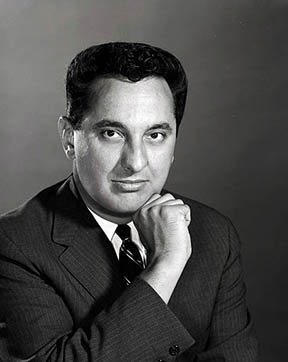
In 1993, I worked in the film, “Two Bits,” playing a husband and father who attends a wedding with his wife and daughter. Joseph Stefano had written the screenplay based on his early life in South Philly. As the PRIMO article mentions, Mr. Stefano wrote the screenplay for Alfred Hitchcock’s film “Psycho,” based on Robert Bloch's novel of the same title.
“Two Bits” starred Al Pacino and Mary Elizabeth Mastrantonio. It told the story of how Mr. Stefano grew up in Philadelphia, went into the service during World War II and, when discharged, was in New York, where he was married. He was listening to a jukebox one night and thought he could write lyrics as good as a song that had been played multiple times. He went on to become a lyricist and then a writer for film and television.
One day, I saw Mr. Stefano watching the action from a corner, away from the set, while we were shooting in South Philly. I had known of some of his scripts and there was one that had been made into a film that was a particular favorite of mine. I was not in the scene and decided to cross the street to speak with him. I said hello and introduced myself.
"You wrote one of my favorite films,” I said. He gave me a quiet, yet cordial, hello. I could see, after mentioning the phrase, "one of my favorite films,” he was expecting, and steeling himself, for one more person to say, "Psycho.” I then finished the sentence by saying, “The Black Orchid,” which had starred Sophia Loren and Anthony Quinn. If you have seen the movie, you know it's about a widowed Italian woman whose husband was murdered by a small-time gangster. She then meets an Italian widower. The two get together despite the woman's sorrow and the possessive jealousy of the man’s daughter.
When I mentioned the title, Mr. Stefano's eyes pleasantly lit up in surprise and, I noticed, with satisfaction. We talked about the movie and he told me, with what I noticed was a bit of pride, that Sophia Loren had told him, that “The Black Orchid” was one of her personal favorites of the many films she made.
We didn't have much time to talk, as I had to get back to the set, and I never crossed paths with him again. However, it's an experience I remember well, mostly because I believe Mr. Stefano was truly surprised by the film I mentioned. He epitomized for me the man who feels he can do something, like songwriting and screenwriting, without much background or education in those areas; but he stays at it to become a success through determination.
Editor’s Note: Pictured is a poster of “The Black Orchid,” screenwriter Joseph Stefano and Italian poster for “Psycho.” Mr. Primerano is a professional singer, musician and songwriter who performs regularly in venues throughout Philadelphia and New Jersey. Please visit his web site at http://www.johnprimerano.com/
Op-Ed
GOD BLESS AMERICA AND VIVA L’ITALIA
A Comparison of Two Countries
- The Author Has Lived in Both Italy and America
- Now an American Citizen, She is the Daughter of Italian Immigrants, Originally to Canada
“Do not be fooled by the beauty, culture, and history of Italy. Visiting is one thing but living there is a completely different animal.”
By Joanne Fisher
I must make a premise. I am going to discuss these two countries before COVID hit, simply because these two countries had quite noticeable differences before this pandemic.
Here we are: 2019. Italy is the garden of the world, and when I tell people that I lived there for many years, they swoon and comment: “Wow, you’re so lucky!” or “Why are you in the USA?” or “Why did you leave?”
These are simple questions with not-so-simple answers.
Do not be fooled by the beauty, culture, and history of Italy. Visiting is one thing but living there is a completely different animal.
Additionally, do not be fooled by the United States, either. We (I say we, because I am now an American citizen) have our issues and lots of them—however, certain aspects of life differentiate both countries in different ways.
Let’s begin with my favorite subject, food. Italians idolize food. They spend a good part of their day talking about food and wine, about which they are very selective and discriminating, almost snobbish. Surprisingly enough, Italians do not eat a lot. But when they do, it must be cooked right, aged right and most importantly, priced right. Italians are very closed-minded about their food. They do not like foods from other countries. Italians prefer Italian cuisine over any other—and to be more on point, Italians love their mamma’s cooking. Unfortunately, today, many young Italian women do not cook because, alas, their moms never taught them. And similarly in United States, many Italian men are learning how to cook.
Americans love food and love to eat a lot of it, causing an enormous amount of people to suffer obesity and its derivative consequences: diabetes, heart disease, high cholesterol and so forth. However, we Americans not only adore Italian food—it’s possibly our favorite—but we enjoy foods from many other countries from around the world. I believe that food is a main reason that the United States is called a “melting pot.” One of the common misconceptions that I find particularly amusing is Americans’ reliance on recipes. It’s very common for me to just throw something together, such as my biscotti, or a lasagna, and have someone say, “Can I get that recipe?” Of course, I then have to patiently explain that there is no recipe, that I just threw a bunch of things together. I must say that this answer impresses my American friends, although I suspect that sometimes they don’t believe me.
Fashionista? Well, you should live in Italy, for sure! Not even in New York will you find the everyday Maria and Giuseppe dressed like they just walked off the catwalk. Even if they buy their clothes and shoes at the “mercato,” their fashion sense is impeccable, to say the least. Americans try exceptionally hard, but sorry, there is no comparison here.
How many times have you heard “use your inside voice”? Americans are extremely careful to speak softly while they are dining, even in a fast food restaurant. When my children and I first moved to Florida, my son and daughter had conversations at a higher tone than my husband’s children. One time, my stepson asked Leonardo, “Why are you always yelling?” Leo’s response was, “I’m not yelling, I’m Italian.” In Italy, an inside voice does not exist. In fact, when Italians gather in a restaurant or trattoria, they are heard in the neighboring stores, apartments and even by the “Vigile Urbano” down the street who may even decide to join in on the conversation if it interests him.
Does Italy have immigrants? Oh yes, they do but the majority are illegal, and they come to Italy expecting the Italian government to cater to their every need. Of course, it does. The Italian government has forcefully taken small hotels from their rightful owners so that migrants can live there. The owners get peanuts. Italians, in turn, are very prejudiced towards these migrants. One episode that truly enraged me was when Balotelli (a Ghanaian soccer player who was adopted by a couple from Brescia) walked onto the soccer field and the fans made monkey sounds and indigenous dance-like moves. When I saw that, as an American, I was horrified. I realized that, even though we hear on a daily basis that Americans are racist, we really are not. America truly is the Land of Opportunity—always has been, and hopefully, always will be. Of course, Balotelli’s team was penalized for such behavior, but the damage was done. He proudly gave the “one-finger salute” to the crowd, shrugged his shoulders, and made his parents proud. He is a bit of a hothead, but can he play soccer!
Speaking of sugar-coating: In general, Americans have become very polite over the years and would never think of offending anyone in any way, shape, or form. Italians, as stated above, don’t care if they offend you. They will tell you to your face that you’re fat, thin, tall, short, pretty, or—well, not-so-pretty. Perhaps, the younger generations have learned to think before they speak, but the older crowd will tell it to your face. One thing that really made my head turn in the 1980s when we moved to Italy, was the help wanted pages. Job listings typically specified that an applicant had to be attractive, good legs, pleasant voice and so on. Civil rights and anti-discrimination laws in the States would not allow for that!
Like the United States, Italy has two paces of lifestyles: northern and southern. And like the United States, the northerners are fast-paced and the southerners are very laid back, not worrying about anything. (In the United States, that has been diluted somewhat, with the mobility of Americans—something else that differentiates the two countries.) Personally, I experienced quite a shock when I moved from Canada (the Toronto area is very much like New York, Chicago, Philadelphia, etc.) to Florida. I used to get genuinely irritated when we needed to be somewhere, and my native Floridian hubby wasn’t anywhere near being ready. To this day, I am compulsively punctual, and hubby is still that last one out the door. I used to complain a lot, but now I simply give him “the look.” He gets the message right now!
Families are quite different in Italy. Even though the man is the titular “Head of the House,” the reality is that women have always run the show—and still do! After the war, only men went to work, and women stayed home to cook, clean and raise the children. In America, it was quite similar. But as times change and the world becomes smaller, both countries are evolving when it comes to the family nucleus. One big difference between our two countries is that Americans tend to “kick out” their kids immediately after high school, whereas Italian children live with their parents until they move out on their own or they get married. When we visited Italy in 2018, my cousin, who is almost 50, was still living at home with his parents. My husband was quite surprised by this. The major reason for this is housing. It is very expensive to rent an apartment on your own. Most landlords won’t even consider leasing you an apartment that could be occupied by a family or future family, instead of a single person who may leave after a while, causing the landlord to search for new tenants. Plus, he can charge more for a family than a single person.
Which brings me to space.
In America, we have a saying “go big or go home.” We have big cars, big houses, big everything. Not so in Italy; because there is no space. The cars are tiny, the apartments are tiny, the courtyards are tiny, the malls are small (where they exist), and their city halls are small. The only large buildings are churches and museums. This is because museums are simply former palaces where the uber-rich, blue-blooded nobility formerly resided. When Italians visit America, they marvel at how much land we possess, how huge our skyscrapers are, how enormous our malls are, how much wide-open spaces we have and how large our tiniest apartments are. To Italians, owning a home is like winning a lottery, whereas to us, it’s part of the American Dream, attainable by anyone who works hard to better themselves.
Want to open a small business? If you live in Italy, don’t even think about it. The amount of bureaucracy involved in opening a small restaurant or a shoe store or a barber shop is beyond imaginable. Any Italian who has a small business most probably inherited it from relatives who passed it down from one generation to the next. Starting a business from scratch is costly and time-consuming, and the documentation is tremendous. In America, you can simply rent a space, get some financing, pay for an occupational license, and voilà! You have your very own small business! Now, I understand that in many states, it’s not quite that simple; however, for the most part it is. And if you think the IRS is difficult to deal with, you haven’t dealt with la Finanza, the Italian Financial Police. That government entity is one of the most powerful in Italy. They handle all tax fraud, business and personal, contraband, building codes, you name it. I know because I’ve heard many detailed stories from my cousin who was a colonel and worked in that law enforcement agency for forty years.
I would like to end on a romantic note. Italian culture has romance in the air, always. Italian music, cinema, books and attitudes about relationships are very romantic and exalted. Courting a woman is still a big thing in Italy and a man will do anything to prove his love to his beloved. Americans love courting, also, but tend to be more practical. Having lived in both countries, I have noticed the difference. But you can see the difference simply by watching a classic Italian movie and a classic American one. “Ah! L’amore!” as they say in Italy.
Bottom line, I personally feel that the United States is still a beacon of hope, opportunity and individualism. These are the main reasons people from all walks of life desire to come here. Even Italians. Some of them simply fly in and end up staying. Some float in on rickety boats and rafts. Some come in through our southern border and some through our northern border. I’ll bet you didn’t know that, right? For over 200 years, people have risked life and limb to immigrate to America, because it is the land of the free and home of the brave. No matter how bad we think America gets, it still is the highest-ranked destination for immigrants.
Editor’s Note: Joanne Fisher is a Canadian-Italian-American author who is renowned for her steamy romances, historical fictions and murder-mysteries. She loves writing Christmas novellas, giving them an Italian flair. She has penned two nonfiction travel guides, titled Traveling Boomers, along with the corresponding website TheTravelingBoomers.com. She has participated in various Space Coast Writers’ Guild anthologies, and has even written one of her own, Baker’s Dozen Anthology, which is free on Kindle Unlimited. She is the president of the Space Coast Writers’ Guild and lives in Central Florida with her husband Dan and two Dachshunds, Wally and Madison.
READING “I VICERE”
In a Time of Pandemic, The Best Way to Learn Italian is to Read the Best of Italian Literature
- How does “I Vicere” compare to another classic novel, also set in Sicily, “Il Gattopardo”?
- “Now after 24 sessions with the book covering 60 pages; all of it written in Italian, I am beginning to understand the dynamics and the characters, but I am still struggling with the vocabulary.”
By Susan Collina Jayne
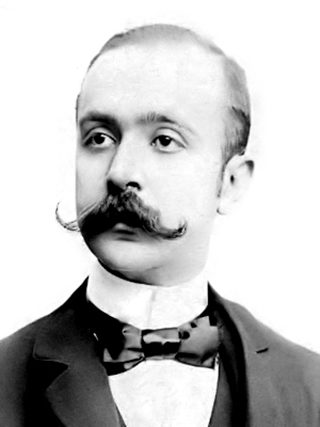 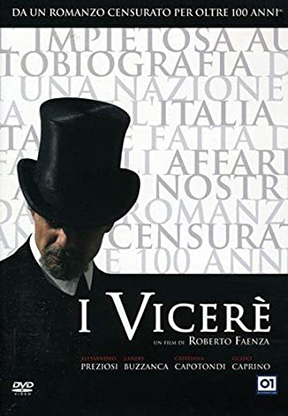
For students of Italian who are missing their sessions with tutors and teachers, I recommend reading an Italian classic, “I Vicere” (The Viceroys) 1894. Written by Federico De Roberto, the novel follows the saga of Sicilian nobility in the Risorgimento. I originally started reading the novel in 2017 but gave up after a few pages. More desperate this year, I began again. The grammar is fairly simple by Italian standards, but the vocabulary is archaic and the subjects far from modern experience; nevertheless, the book is still compelling. The story opens in the 1850s at the Francalanza Catania Palace with news of the unexpected death of Princes Teresa Uzeda ne’ Risa. There follows the arrival and non-arrival of her seven children; with their wives, one husband, in-laws, various lavapatti (hanger-ons), servants, neighbors, clergymen, etc. In one early scene, there are more than a dozen people in the Sala Galla. Most modern dictionaries may define lavapatti as dishwashers; human or machine. De Roberto’s are definitely human, but they clean their patron’s plates at the table. The term must have been considered vulgar because at the princess’ elaborate funeral (with a glass coffin, yet) someone is reproved for using it in church.
Now after 24 sessions with the book covering 60 pages; all of it written in Italian, I am beginning to understand the dynamics and the characters, but I am still struggling with the vocabulary. De Roberto gives few physical descriptions of the people; relying, instead on dialogue to define them. In the beginning, the servants and by-passers in the courtyard give us some gossip; the whole family hated each other and the mother especially hated her eldest son, Prince Giacomo XIV. Will he be bypassed in favor of the third son, Raymond, Count of Lumera? The rule demanding that the oldest son gets everything (primogeniture) can be by-passed because Teresa’s husband (Consalvo VII), a descendant of Spanish Viceroys, was so impoverished that he married a country woman of minor nobility 10 years his senior for her large dowery. Her father’s condition for the match was to allow her to manage the family’s financial affairs. So the fortune she builds up, as opposed to the title, is hers to command. She ruled with an iron hand. The whole family accepted her domination except for her brother-in-law, Don Balsco. He hounded her unmercifully from the beginning and said she had less “class” than the impoverished nobles who became lavapatti.
Prince Giuseppe Tomasi di Lampedusa’s more famous novel on the subject “Il Gattopardo” (The Leopard), 1958, is often compared to “I Vicere,” but Lampedusa (1896-1957), told his wife that the earlier book tells the story from the point of view of the servant’s hall. That might have been a dig at De Roberto’s middle class origins and lack of personal knowledge of the nobility. The characters in Lampedusa’s novel are, in many cases, based on historical figures in the author’s family. De Roberto, the son of a Neapolitan colonel, had been a successful critic and literary journalist in Milan and Florence for decades before returning to Catania to live with his aging mother. Thus, his grammar is more modern and not as elaborately poetic as is Lampedusa’s, who was much younger but lived a relatively reclusive and scholarly life after World War I. He had been wounded, taken prisoner, escaped, recaptured and escaped again, only to develop pneumonia. Lampedusa might have chosen a quiet life to avoid the Fascists who took over after the war.
The books also differ in setting. One is in Palermo and the other is set in Eastern Sicily; which was for centuries part of the Magna Greco, dominated by Mount Etna and the Mafia. Another difference is that Prince Fabrizia is the Leopard. He dominates the book as did Scarlett O’Hara in “Gone With The Wind.” In “I Vicere,” it is the late Princess Teresa who sets in motion the conflicts to determine the family’s reactions to Garibaldi’s invasion and all that follows.
Another difference between the two books is the role of the Church. The dominance of the church in Sicily was greater than elsewhere in Italy, partly because the Norman kings (1072 until about 1300 AD) gave the church a third of the land on the island, probably most of it confiscated from the Arabs whom Roger I (Ruggero I) drove out. From the point of view of the family members in the two novels, however, the role of the Church differed greatly.
In “The Leopard,” Prince Fabrizio had a mild-mannered Jesuit as his family priest, but, also, to assist in his astronomical research, even though Jesuits were technically thrown out of Southern Italy because of their role in the 1848 revolt against the ruling Spanish Bourbon. However, none of Prince Fabrizio’s children joined the clergy. At the end of the novel, but not the film, 50 years after Garibaldi’s arrival, the prince’s three spinster daughters develop a mania for religious relics, many of them fake.
Princess Teresa had sent one son and one daughter into convents to spare the family’s resources. At that time, wealthy families had to pay to place their offspring in some orders, but the amount was relatively modest compared to providing a dowery for a noble daughter or supporting son. This practice is described in two very sad chapters of Manzoni’s “I promessi sposi” (1827) set in the 1700s when the young Lombardi Princess Gertrude is forced by her father to take the veil.
At the time of Princess Teresa’s death, her cloistered son and daughter seem to have accepted their religious life with grace, but for decades her brother-in-law, Benedictine monk Don Blasco, has been raging at his loss of freedom and fortune. When the princess dies, the family does not send a messenger to the monastery to tell him the news but to the home of the woman with whom he passes the time of day. At the long awaited reading of the princess’ will, he raises cane and tries to get it overturned, even though it would not have a dried fig’s effect on him.
I still miss many subtitles, but I can now understand most of what is going on in the Uzeda family in the 1860s if not what’s going on here and now. With my slow pace and the 700 pages of the novel, De Roberto might be my tutor until next election.
Editor’s Note: Susan Collina Jayne has written several articles for PRIMO. She lives in New Orleans
PRIMO Review
“SANPA: SINS OF THE SAVIOR”
A New Netflix Docuseries Explores the Controversial Life and Legacy of Vincenzo Muccioli
Rehab Center San Patrignano is Examined
How Far Should a Person Go to Save Lives?
By Truby Chiaviello

The new Netflix documentary series, “SanPa: Sins of the Savior,” is a riveting, watchable expose on the controversial life and legacy of Vincenzo Muccioli. The founder of the innovative drug rehabilitation center, San Patrignano, conveys an important story for our time, as shown on Netflix in five episodes, each about an hour in length.
Muccioli is practically unknown here in the United States. Yet, before he died in 1995, he was one of Italy’s most popular figures. He was famous for helping addicts overcome their dependence on illegal drugs. Muccioli was a large man with movie star looks. He came with a full head of hair, broad mustache and tailored clothing. He was a frequent guest on Italian news programs when the topic arose of drug crimes and addiction.
The first episode in the documentary revisited 1975 when heroin flooded the streets of Italian cities. Young addicts, sick and homeless, crowded Italy’s back alleys, abandoned buildings and public parks. The country was overwhelmed by a plague of drug abuse. In 1980, there were some 60,000 Italians who claimed addiction to heroin.
Italy was in need of a redeemer; someone who sought a way forward. Enter Muccioli. A wayward figure, he was not unlike a character in Federico Fellini’s “I Vitelloni.” Just like the filmmaker, Muccioli also came from Rimini. He dropped out of high school and philandered his way for much of his young adulthood. He settled down only after marriage when his father-in-law gave him San Patrignano, a 50 acre farm in the countryside of Emilia-Romagna.
A farmer, perhaps, Muccioli and his wife Antoinetta embraced an alternative lifestyle. They and their friends dabbled in seances and other spiritual exercises. Muccioli was inclined to take in societal outcasts to work his farm in return for shelter and food. He soon gave refuge to young addicts under the condition they gave up drugs and alcohol. In 1978, his farm became Italy’s most famous drug rehab center.
The documentary “SanPa” was conceived by Gianluca Neri, an Italian journalist and filmmaker who was but a boy when Muccioli structured San Patrignano. Neri has won praise by many media critics in Italy for introducing Muccioli to an American audience via Netflix. His detractors, however, are found among those who manage San Patrignano today, still a popular and well-respected center for drug addicts. They claim the series is salacious and biased; a wrongful portrayal of Muccioli as tyrannical and criminally inclined.
Directed by Cosima Spender, “SanPa” moves along at a fast, steady pace. Commentary is given by Muccioli’s son Andrea, who took on management duties after his father died and recovered addicts who were once guests at San Patrignano. Some credit Muccioli with saving their lives while others condemn him for alleged abuses. The series uses dubbing, rather than sub titles. There is just too much commentary and dialogue for viewers to fully comprehend by reading lines on a screen.
As the film recounts, Muccioli’s heroic status came under serious scrutiny after an investigation of San Patrignano by journalists and law enforcement. Some addicts complained that they were not allowed to leave the rehab center until Muccioli was convinced of their recovery. Difficult patients were pictured chained to stakes and poles inside chicken coops and empty kennels. Those who left without permission were tracked down and returned to the farm by force. Muccioli and staff were arrested and charged with kidnapping. He was found guilty at the initial trial but later exonerated at appeal.
San Patrignano expanded in size and scope when Gian Marco Moretti, whose family owned Italy’s largest oil refinery, granted large sums to the center. Parents of addicts praised the founder’s methods. Stars of Italian film and television were shown extolling Muccioli when their young adult sons and daughters enrolled in San Patrignano to overcome heroin addiction.
Muccioli achieved cult-like status by the late 1980s. He was seen in an array of public relation photographs and videos leading hundreds of young recovering addicts in the countryside. San Patrignano became one of the most profitable farms in Italy thanks to free labor provided by young addicts. Muccioli soon leveraged into textiles and other services. He made a fortune as one of the best horse breeders in all of Europe.
Muccioli, now running a massive operation, divided the farm into working groups. Draconian methods were employed with a disdain for the latest innovations in treatment and care. In lieu of methadone for an addict’s gradual recovery, Muccioli opted for herbs and natural supplements. He opened a hospital on the premises to cater to guests’ physical needs. No psychologists or therapists were hired while he increasingly took a get-tough approach with addicts. Complaints were made of beatings and torture on the farm. Two patients committed suicide on the premises while a third was found murdered outside of Naples. The investigation by police discovered that a staff member and some patients had beaten the recovering addict to death in San Patrignano. The body was transferred by car to Campania and dumped at road side. Muccioli new of the killing after occurrence but kept silent, he claimed, for fear of hurting the fragile psychological condition of those involved.
Muccioli was charged with manslaughter and accessory after the fact. The trial galvanized Italy with parents, dressed in fur coats and fine apparel, demonstrating for his acquittal. His fate rested with an Italian judiciary that could go in one direction at the trial phase but another on appeal.
“SanGa” is an extraordinary documentary to be watched and remembered. The question arises as to how far should a man go, and, for that matter, society, in saving human lives. When care and treatment descends into abuse and torment, should an entire operation be shut down?
The crisis of drugs and drug addiction remains with us today. San Patrignano continues as a drug rehabilitation center with a success rate of more than 70 percent. Some 60,000 people have come through their doors since its founding. Many Italians have become productive citizens after breaking their addictions to heroin, cocaine and, today, opioid thanks to San Patrignano.
Editor’s Note: “SanPa: Sins of the Savior” can be viewed on Netflix. To learn more about San Patrignano and what they find disagreeable with he documentary, please visit their web site at https://www.sanpatrignano.org/en/
CITY OF FEAR
A Walk Around Capitol Hill
By Truby Chiaviello
 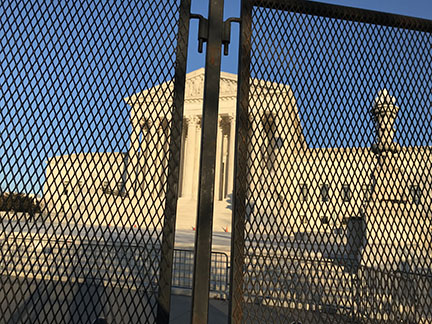
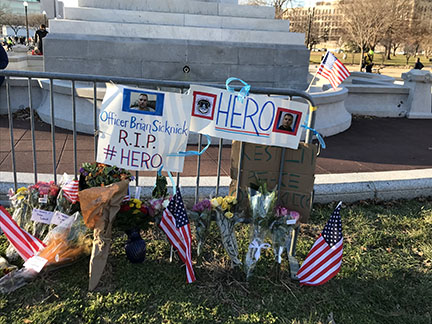 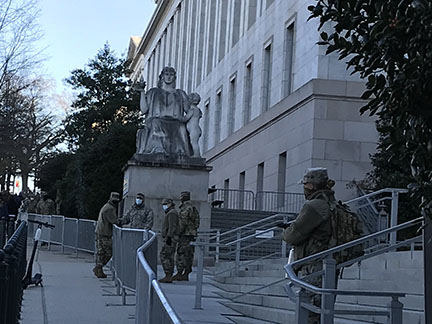
Since PRIMO is based in Washington, D.C., we can provide an insider’s view of what is happening in our nation’s capital.
Yesterday, January 9th, my son Rami and I took a walk around the area of the U.S. Capitol and took a set of photographs depicting the enhanced security now underway.
The riots of January 6th saw a group of pro-Trump rally participants enter the U.S. Capitol, to clash with U.S. Capitol police, resulting in the deaths of five people, including U.S. Capitol police officer Brian Sicknic. The assault on the Capitol has now exacerbated, what had already been, after the pandemic and summer riots, a restricted, guarded and fearful nation’s capital.
A 10 foot hight metal grading now surrounds the grounds of the U.S. Capitol, named after Capitoline Hill in Rome, and what many refer to as the “people’s house.” Concrete barricades rest alongside the massive fence in front of the building.
The presence of soldiers from the Washington, D.C. national guard are immediately noticeable with groups on every corner, manning entrance and exit ways. U.S. Capitol police officers are also many in number, well-armed and dressed in windbreakers, sunglasses and black nit hats for the sunny yet cold wintry day.
Across the street from the U.S. Capitol were contrasts in security. The Baroque inspired Jefferson building, part of the Library of Congress, was surrounded, not by a 10 foot metal fence, as is the U.S. Capitol, but, rather modest metal barricades, about four feet in height. National guardsmen and women were at the ready blocking the stairway entrance to the building.
The disparity across from the library at East Capitol Street was the U.S. Supreme Court building. A massive fence, similar to the one surrounding the U.S. Capitol is in place to contain the perimeter of the neoclassical designed building and grounds. Perhaps, the added security measures has to do with a case pending here on allegations of election fraud in Pennsylvania brought by President Trump and members of his campaign team.
The U.S. Capitol covers an area of four acres in the center of Washington, D.C. Consider how First Street crosses the north and south ends of the U.S. Capitol grounds to expose four sections of the city: First Street, N.E., First Street, S.E., First Street N.W. and First Street S.W. At the north and south ends of the building and grounds is Constitution Avenue and Independence Avenue, respectively.
Today, a metal fence surrounds the entire perimeter of the U.S. Capitol. At the corner of Constitution Avenue and First Street, N.E., lies the Russell Senate Office Building. The last months have seen considerable construction and renovation work there. Scaffolds and barricades add to the level of obstructions in place and might be confused by onlooker as part of enhanced security measures.
Several factors are to thank for a sense of foreboding and paranoia that has overtaken the city. The outbreak of the coronavirus pandemic put much of Washington, D.C. in lockdown. Although the nation’s capital has suffered much less than other cities such as Philadelphia and New York in the number of verified infections and deaths caused by the pandemic, the people here have taken the disease very seriously and have complied with a number of draconian measures instituted by Mayor Muriel Bowser.
After the death of criminal suspect George Floyd by police officers in Minneapolis, the city experienced a week of riots and violence that saw hundreds of stores looted, not to mention clashes with police too numerous to count and a number of deaths and injuries. The White House was under siege until gas canisters were ignited to disperse crowds and the national guard was brought in to restore order. Much of the area around the National Mall and downtown Washington were blocked by local police, federal officers and national guardsmen.
Now comes the inauguration of the 46th president in Joe Biden, former vice-president and U.S. senator from Delaware. The ceremonies will commence on January 20th for the exchange of power as directed in the U.S. Constitution. Security measures have always been enhanced for the ceremony and at times today it was difficult to discern which security precautions were normal and which were enhanced because of the January 6th riots.
The U.S. Capitol was famous the world over as a parliamentary forum that was open to the public with extraordinary works of art and priceless decorations inside the building. Now a massive fence separates people from where their congressional representatives and U.S. senators work. Although closed off from the public, the area outside the fenced perimeter was not unlike any other day with many pedestrians, tourists and people riding bicycles and scooters. A makeshift memorial was made for Sicknic, with flowers, words of hope and recent photographs of the slain officer. The display stands beside the pedestal of the memorial to Ulysses S. Grant at First Street, N.W.
The current state of fear and precaution did not happen suddenly but was ongoing, one incident at a time, beginning in 1994 when Frank Eugene Corder stole a Cessna 150 aircraft to crash it on the south lawn of the White House on September 11th, that year. Soon after the incident, on October 29, Francisco Martin Duran unveiled a semi-automatic rifle from China to fire at random at the White House before tackled and subdued by a pedestrian.
Based on these separate assaults, President Clinton ordered the closing of Pennsylvania Avenue in front of the White House to automobile traffic. What was once a rite of passage for members of families visiting those who lived in Washington to drive by the White House is now a remnant of the past.
Under President Bush, much of the area around the White House and the U.S. Capitol were constricted or closed off after the terror attacks of 9/11 and subsequent Iraq War. This continued under President’s Obama and Trump.
The notion that Washington will regain a sense of freedom and openness, that made this a capital city to be envied the world over, seems unattainable as the country becomes increasingly divisive with fear and foreboding a continuing theme among the caretakers of the country.
Editor’s Note: Pictured is fenced-in U.S. Capitol, fenced in Supreme Court, a makeshift memorial for U.S. Capitol Police Officer Brian Sicknick, National guard soldiers in front of the Rayburn office building and modest barricades in front of the Library of Congress, Jefferson Building.
PRIMO Exclusive
ROME LOSES ITS SOUL
Previously Rome was for Everybody; Now Many Romans are Leaving The Eternal City
In recent years, due to the rise in home prices, the poor public services, as well as the dirt and the noise, many of Rome’s inhabitants have turned their backs on the Eternal City. Before Covid-19, tourists had taken over the center. But with the pandemic, they too have now disappeared.
Text and photos: Jesper Storgaard Jensen
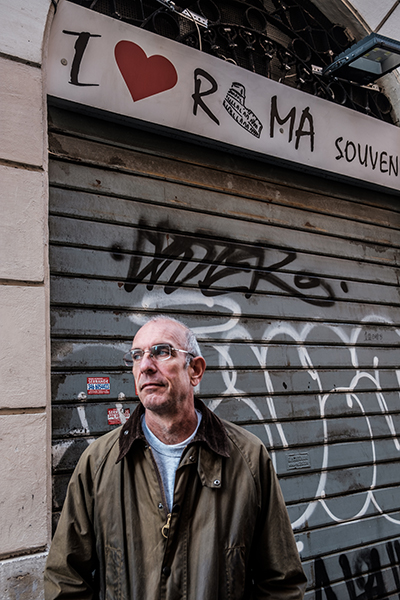 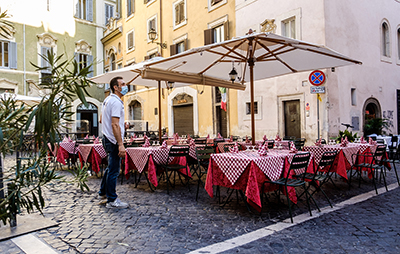
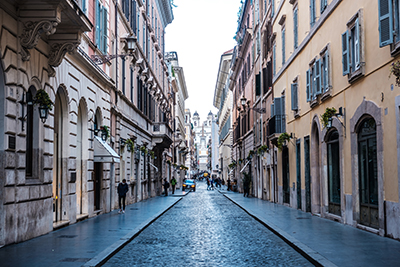 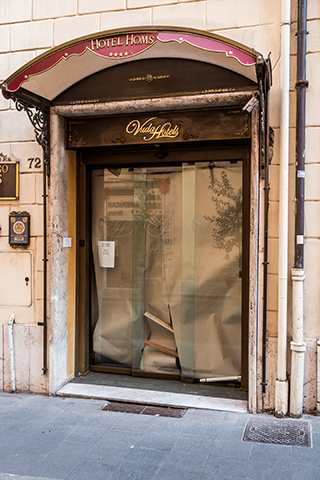
The sidewalk cafe in Rome's Jewish ghetto is sheer idyll. A generous December sun casts its long morning shadows across the ghetto's main street, Via del Portico d'Ottavia. Here and there, people stand and chat undisturbed. It is one of the few areas in the center of Rome without the annoying traffic, and so it has a completely relaxed atmosphere. Yet it is as if something is missing.
“Before covid-19, this area was usually very crowded. But as you can see, there are not many people on the streets these days. If we go back to the 1980s, both Rome's Jewish ghetto and the area around Campo dei Fiori were residential areas, where ordinary Romans lived. It was middle-class and even people from the lower-class, because house prices were low. There were not very many restaurants compared to today. The area, on the other hand, was full of shops selling everyday necessities. There were also many small workshops where people could have all sorts of things repaired, and where the prices were average. In retrospect, it was probably from the early 1990s that the city began to change. For the worse.”
Amedeo Osti Guerrazzi, 53, is a historian and author of, so far, eight books on fascism, persecution of Jews and Rome under German occupation. His essay number nine comes out in January 2021 with the title “Specialists in hate. Reports, arrests and deportations of Italian Jews.” He has lived in the heart of the city, near Torre Argentina, since 1992, and has witnessed how the city center has slowly changed over almost three decades.
“Two of the center's historic bookstores, close to where I live, Rinascita and Croce, have both closed down. And in recent years, a big number of so-called bangla grocery stores have opened. Bangla is Roman slang for shops run by Bangladeshi people. But they do not sell things from Bangladesh. They sell milk, water, fruit and tourist tinsel, such as reproductions of the Pantheon and of Venice's gondolas. Now they are everywhere. In addition, you can count numerous fast food chains and kebab shops, which are probably exclusively aimed at tourists. And then there are also the many bank branches that have opened in the center in recent years. They don’t really constitute a poetic element”.
We just got a good cup of Italian espresso placed in front of us, after which Amedeo continues to recount.
"With the pandemic, it is now obvious to everyone that the center of Rome is in a pretty bad state. But this is not just because of Covid-19. For many years, it has been difficult to live here. House prices have reached an insane level. This skyrocketing started in the 1990s, simply because people had acquired more disposable income and started buying homes in the historic center. This has pushed up house prices significantly. Later, mass tourism started quite slowly, mainly due to the low-cost airlines, which flew thousands of people to the city every day. And in recent years Rome’s historic center is suffering a huge daily invasion of tourists.”
Amedeo's story about the center of Rome shows the considerable difference between “the real Rome” and the Rome that is usually described in lifestyle articles and colorful tourist brochures.
“Prices in the center of Rome are significantly higher than on the outskirts of the city,” says Amedeo. “This also applies to prices on everyday groceries. And then there is the noise. I am consumed by noise here: Street musicians, ambulances, the sirens of police cars as they drive past with politicians. The city is dirty. Chaotic. Public services are generally poor. There are only a few schools here in the center and even fewer crèches, for which there are long waiting lists. Therefore, many families choose to move out of the city, or out into the periphery. And then there is the Bed & Breakfast phenomenon, which probably really started four or five years ago. Since then, these B&Bs, especially Airbnbs, have totally invaded the city. This has clearly changed what one might call the city's anthropological composition.”
B&Bs everywhere
Covid-19 has made it crystal clear that Rome is now in the same situation as several of Italy's most coveted tourist cities. First and foremost, Florence and Venice, but partly also Verona, Naples and Milan. They are all affected by what the Italian press calls "disneyficazione.” This phenomenon describes an area that has been hit by over-tourism and which especially lives and breathes in honor of and by virtue of tourists. At the same time, however, this mass tourism means that the ordinary residents choose to give way and search for new areas to live.
In an article about the B&B-phenomenon in Rome, the web-magazine Huffington Post writes that in 2019, in the triangular area Tratevere-Monti-Colosseum alone, as many as 15,000 Airbnb rental homes were registered. If you count the entire territory of Rome, this figure rises to over 29,000, which is significantly higher compared to other European capitals. The article further states that many Romans prefer to rent out to tourists, rather than having permanent Italian long-term tenants. If the regular tenants do not pay rent, one typically has to go through years of litigation, while the tourists who only stay for a few days rarely create problems.
"Many have left Rome's high prices and chaos to live outside the city. Instead, they have transformed their downtown home into an Airbnb apartment. And virtually no one pays tax on what they earn. But now there are problems. One of my friends is a bank employee. He says that during this period the bank has conversations almost daily with people who cannot pay their loans because the tourists no longer come to Rome due to the pandemic”.
Romans moving away
In recent years, mass tourism has spread like a thick oppressive blanket over Rome’s historic center. In 2018, Italy's statistical office, ISTAT, registered a record number of tourists in the city, a total of 28 million. Over time this has caused an increasing number of Romans to move out of the city. In 1951, about 400,000 people lived in the historic center of Rome. Today, this number is just 80,000, and over the past 15 years, the population of the historic center has fallen by about 1,500 people a year.
Today - with the pandemic and thus a striking absence of tourists - the city center appears almost lifeless. However, not only due to the absence of tourists. Thousands of ministry staff and office workers who previously worked in the city center and who flocked to the streets around lunchtime to eat, now work from home to avoid the risk of infection. Especially in the afternoon, the city streets and piazzas appear depopulated. Often, you can hear the sound of just one pair of heels walking through an empty street. Shops and hotels that have succumbed have put brown paper in the windows, and at the entrance to many shops, the employees stand with a bored expression, waiting for customers. Only 20 percent of the hotels in the city center are reopened after the summer holidays. In some streets, every fourth shop has closed down. It is only when you get outside the historic center, out into the periphery, out into the suburbs, that you can feel life again. Because this is where the Romans actually live.
However, Amedeo Osti Guerrazzi does not share the concern about the city's normally large tourist invasion. Instead, he calls for quality in what Rome offers to the visiting tourists.
“Now, take an attraction like the Colosseum. With more than seven million visitors annually, it is Italy’s, and one of the world's, biggest attractions. But the visitor organization around the Colosseum is really embarrassing. Extremely long queues. Mock gladiators who almost fight to be photographed by tourists for a fee. There is no tourist and visitor center. No organized sale of souvenirs. No website has been created with, e.g., virtual reality, which many other museums now use. And the area around the Colosseum, e.g. Colle Oppio, is mostly of all characterized by decay, beggars and homeless people. Something similar can be seen near many other attractions”.
Over the years, he has often been to Germany to lecture and had the opportunity to make comparisons between Berlin and Rome.
"Berlin is a fascinating city. But if you take an attraction like Checkpoint Charlie, then it's really not much more than a crossroads! Don’t get me wrong ... of course the place is fascinating, because it's about World War II, which I have been dealing with a lot. But if we talk about antiquity and cultural treasures, then Berlin has only a fraction of what Rome offers tourists. But Berlin still has plenty of tourists, because the Germans have been adept at creating a cultural identity around the events of World War II. Far more skilled than Italy. Mussolini's dictatorship lasted from 1930-1943. Thirteen years that have passed into history and which to a certain extent still characterize Italy to this day. Mussolini lived for ten years in Palazzo Venezia in the center of Rome. Why did Rome not create a museum that tells the story of that period? There is plenty of material available of these 13 years. In thousands of film clips, official documents, photos, testimonies, books, and so on.”
Now we are under the influence of Covid-19, with all that entails of health and economic problems. But further ahead lies the future. So the question is whether one can expect Rome and especially the city center to develop in a positive direction.
"If anything is to change in this city, it requires a political class and a future mayor with vision and a clear idea. But first and foremost vision. It's hard to believe. Many of the city's problems have been discussed for years, even decades. Rome's political class is characterised primarily by indifference. There is a lack of both initiative and courage. As far as tourism is concerned, Rome has always rested on its laurels. Most of all, it seems as if no one bothers or dares to take new initiatives, because as they say … 'the tourists come anyway'. We still have the Colosseum and the Vatican and the Vatican Museums, and the restaurants will still continue to offer their cheap tourist menus. What we are missing is a strong political voice saying, ‘We have a lot of interesting places, but we need to make better use of them. We need to organize them so that they become even more interesting to visit'. I'm sorry to say that, but unfortunately I do not think we will see that change.”
Despite the fact that the city's development right now does not seem to be going in the right direction, Amedeo declares that he and his family have no plans to move, neither away from Rome nor from the city center. “We have many friends who live around here, and it is easy to meet. If my wife and I decided to rent our apartment here in the center, we would be able to rent a house outside Rome for the same amount of money. But even with the many problems that the city has, Rome’s historic center is still magnificent. Once you get used to living in the middle of all that beauty and history, it's definitely not easy to move away."
Info on Rome:
Rome has 2.8 million inhabitants. Over the years the city's mass tourism has forced many ordinary Romans out of the city center. In the 1950s, the center of Rome had about 400,000 inhabitants, today just 80,000. The center of Rome has survived due to its many tourists, and with their absence today because of the pandemic, the area now appears both lifeless and abandoned.
Info on Amedeo Osti Guerrazzi:
Born in Rome in 1967. He has a master's degree in history. He is a researcher at the Rome Holocaust center and the author of nine books on Jewish persecution, fascism, World War II and Rome during the German occupation. He is married, the father of two and has lived in the heart of Rome since 1992.
COLUMBUS HERITAGE COALITION SEEKS TO STOP REMOVAL OF BROOKLYN COLUMBUS STATUE, CREATED BY EMMA STEBBINS; PIONEER IN WOMAN AND LGBTQ ARTS
By Angelo Vivolo
President, Columbus Heritage Coalition
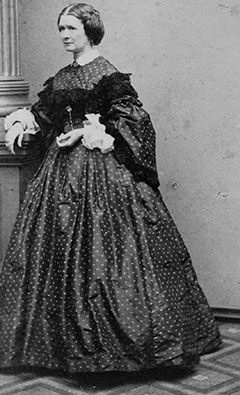 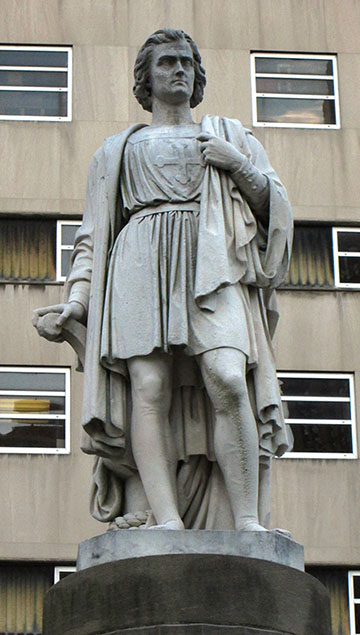
Columbus Hatred or Truth? Time to Choose.
Pioneering 19th-century gay sculptor Emma Stebbins may well be the latest victim of the irrational frenzy that seeks to wipe away all memory of Christopher Columbus.
Stebbins, described as ‘‘a rising star” by the New York Times, was the first woman to create public artworks for New York City. Now a small group has set their sights on ridding Brooklyn of Stebbins’ acclaimed statue of Columbus, commissioned in 1863, and one of her earliest works.
We know that the Italian explorer’s legacy has been twisted and misrepresented into a biased and hateful view of Hispanic and Latino cultures and of the Spanish, who were the first European settlers in the new world. And we know about the history in America of bias against Italian Americans.
The hatred now extends to the work of a pioneering gay artist.
Where will it stop?
We will not allow Emma Stebbins’ Columbus to be carried off into the night. We will join with all fair-minded groups to support more creation of more statues and the true meaning of fairness and inclusion for all.
It’s time to drop the hate and seek the truth.
Editor’s Note: The Columbus Heritage Coalition works to preserve the legacy of Christopher Columbus in the United States. To learn more about the organization, please log on to www.columbusheritagecoalition.org.
Their current Go Fund Me Page:
https://charity.gofundme.com/o/en/campaign/save-columbus1
The Rest of Fellini’s Best
THE OVERLOOKED FILMS OF FEDERICO FELLINI
Supplemental Coverage of PRIMO’s Second Edition Cover Feature on Italy’s Greatest Filmmaker, Federico Fellini
“Fellini directed a total of 24 films. In the second edition of PRIMO, we list and explain what we consider are his eight best. Now comes an opportunity for us to review his other films - the also-rans - and highlight their pros and cons.”
By Truby Chiaviello
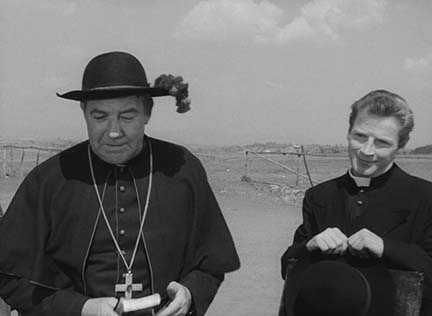 
 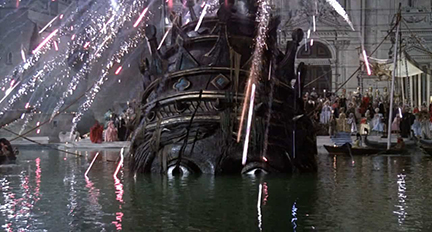
 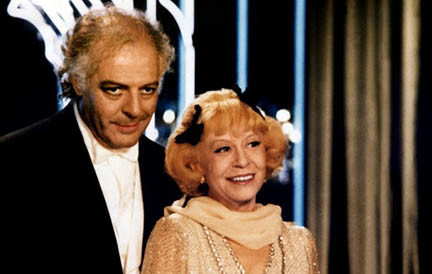
In this current 2nd edition of PRIMO, we feature an extraordinary article on the life and legacy of the great Federico Fellini. Ask any Hollywood filmmaker today whom he thinks is the best director in history, and he is likely to say Fellini.
The Italian film director, not to mention producer and writer, lived from 1920 to 1993. This year marks the centennial of his birth. Celebrations to commemorate the milestone were originally planned in Italy and elsewhere. However, they were canceled due to the current pandemic and are to be rescheduled in 2021.
Fellini was most famous for crafting shots that were considered by many to be works of art. Midway in his career, he mastered the technique of filmmaking and was able to convey the simultaneous moves and interplay of actors and actresses like no director before him. Players entered and exited the camera frame at rapid speed. He utilized a host of camera movements such as tracking, panning, closeups, tilts and zooms. A Fellini film was akin to a trip to a carnival with a caravan of surrealistic images. Yet, the director remained true to his stories and prided himself on making films that were understandable by audiences.
Fellini directed a total of 24 films. In the second edition of PRIMO, we list and explain what we consider are his eight best. Now comes an opportunity for us to review his other films - the also-rans - and highlight their pros and cons.
Not all of Fellini’s films were features. On occasion, he joined other directors to present an anthology of short films centered on specific themes. Near the start of his career, in 1953, he participated in “Love in the City.” The title suggests a romance film, but was, actually, contained episodes by different directors about suicidal characters. Nine years later, Fellini joined directors Vittorio de Sica, Lucchino Visconti and Mario Monicelli for another anthology film; this time about struggles in ethics and morality, in “Boccacio ’70.” In 1968, Fellini went to France to make a horror film titled “Spirits of the Dead.” He joined French New Wave directors Roger Vadim and Louis Malle to interpret the stories of Edgar Allan Poe for the silver screen. It should be noted that Fellini made two documentaries. The first was a strange yet fascinating undertaking commissioned by NBC in 1968 titled “Fellini: A Director’s Notebook.” He then made a documentary titled, “I Clowns,” for RAI television in 1970. That film was edited by Ruggiero Mastroianni, brother of Marcello, the famous actor who starred in Fellini’s “La Dolce Vita” and “8-1/2.”
For this article, we will only focus on films Fellini exclusively directed. We review a career to be categorized into three segments: The films that came before “La Dolce Vita,” released in 1959, the films that followed “8-1/2,” released in 1962 and until “Amarcord” in 1973 and then the remaining films until Fellini’s death, on Halloween day, in 1993.
Before “La Dolce Vita” - 1950 to 1959
“La Dolce Vita” displayed a technical mastery by Fellini only to be outdone by his ultimate masterpiece, “8-1/2.” The films Fellini made in the decade prior were consistent with the usual black and white offerings of the era where cohesive plots came with approachable characters. Fellini’s first film was made in 1950 and titled “Variety Lights.” Although listed as co-director with film star, Alberto Lattuado, much, if not all, of the direction was done by Fellini. This film offered key attributes in plot, setting and characters that were to revisited as signature traits in other Fellini films. The director was fond of carnival side shows, dance troupes and circuses. Such was “Variety Lights,” a film about a group of singers and dancers who move from village to village in Italy, barely able to sustain themselves. A young female fan joins the group only to steal the spotlight with nothing more than her sex appeal. Fellini’s films were peppered with humor and irony. He sought to use camera movements to convey the plight of characters. In one scene, players are invited to dinner at a rich man’s house. The camera pans the table showing the group gorging themselves, a sign of their desperation; all to the discomfort of their host.
Fellini’s second film was in 1952 and titled, “White Sheik.” The story is about a young woman, recently married, who travels with her husband to Rome to join her in-laws for a meeting with the pope. She reviews the latest edition of a soap-opera magazine to feature a film star, modeled after Rudolph Valentino, in the role of the White Sheik. She seeks to find the mysterious actor. Beset by abandonment, her husband tries to hide her disappearance from his family while visiting the Vatican.
Besides films from this era that PRIMO considered to be Fellini’s best, there is one that was especially noteworthy and almost made it on our list. “Il Bidone” was released in 1955 after Fellini made a name for himself as one of Italy’s best directors. He was able to recruit two stars from Hollywood: actor Broderick Crawford, who won an Oscar in 1949 for his performance in “All the King’s Men,” and the forever youthful Richard Basehart, who appeared the year prior in Fellini’s “La Strada.” Both actors portrayed characters who form a gang of crooks to swindle farmers out of their life savings. For this film, Fellini did not engage in techniques such as quick panning shots and rapid close ups. Rather, he presented a plain canvas for an intriguing film about rogue figures who struggle for redemption. In one famous scene, Crawford, dressed as a frocked priest, meets a poor family with an invalid daughter. Reluctantly, he hears the girl’s confession and is overcome with guilt at his deception. The final scene was especially powerful when he meets his end.
“8-1/2” to “Amarcord” - From 1963 to 1973
In 1963, after the release of “8-1/2,” Fellini was celebrated as the world’s best director. The content of his films were combined with a unique style for a descriptive definition in cinema known as “Felliniesque.” With color film now less expensive, he abandoned black and white to convey dreamlike scenes in his remaining films. He even went so far as to take LSD for inspiration.
Fellini made “Juliet and the Spirits” in 1965 to star his wife Giulietta Masina. The film was about a bored housewife who finds solace in the strange home of her eccentric neighbor. Fellini utilized a cadre of camera movements and angles to show scenes drenched in a wide range of colors for a dreamy atmosphere.
Fellini offered more surrealistic films in the late 1960s and early 1970s. Restrictions were lifted in Italy and elsewhere and Fellini, as did other filmmakers, pushed the envelope with more salacious content. His films offered more nudity, graphic sex and violence. “Roma” was a film he made in 1972 that was semi-autobiographical and was to cover his young adulthood in Italy’s capital city. The film was a whirlwind of activity where scenes jumped from the past to the present. In this way, the film might be seen as a time capsule since many shots were done on location in Rome. One scene depicted a motorcycle gang in the dead of night speeding through the Roman forum. The film is most famous because Anna Magnani made a brief appearance. This was to be her last film. She died just months after the release of “Roma.”
After “Amarcord” - From 1974 to 1993
Fellini was nominated 12 times for an Oscar. Four of his films won the Oscar for best foreign film, “La Strada” in the year 1954, “Nights of Cabiria” in 1957, “8-1/2” in 1963 and “Amarcord” in 1973.
His peak years were behind him. His health slowly deteriorated and a new generation of American and Italian filmmakers were soon able to match his technical expertise. Nevertheless, he remained active with seven more films from 1976 to 1990.
His most ambitious production was “Fellini’s Casanova” in 1976. The film recounted the real-life legend of the Venetian noble famous for his love affairs and sexual conquests. Although an extraordinary undertaking, much of it completed inside Teatro Five, the Cinecitta studio made famous by Fellini, the film was greeted with ambivalence by critics. Donald Sutherland was miscast as the lead and Fellini was downright negative about the project when interviewed by journalists. He went so far as to say he hated Casanova, whom he thought was superficial and devoid of intellectual insight, after reading his memoirs. Watching “Fellini’s Casanova” today, however, is to see a film far better than the initial assessment by critics. Although the director takes a darker view of the main character, the lighting, color, and camera techniques, not to mention the incredible Rococo set designs, make this a worthy film by Fellini.
In our list of Fellini’s best, we include one film from this era - “City of Women,” released in 1980. Yet, there are two other films from this time that were quite good, although not on our list. “Orchestra Rehearsal” was a film Fellini made for RAI television in 1978. A little more than an hour in length was a humorous and insightful tale of an orchestra in Rome practicing for a coming performance. What makes the film most unique is how it delves into the psyche and mindset of musicians. We get to know the players of string and brass instruments, woodwinds and percussions. Fellini criticized society for equalizing participants. The relationship between composer and musicians breaks down under the weight of union rules and political interference.
“Ginger and Fred” was released in 1986 and was the last time Fellini collaborated with his two greatest stars, Giulietta Masina, his wife, and Marcello Mastroianni. The film is about a dance duo who copied the moves of Fred Astaire and Ginger Rogers. They are invited to perform on an Italian variety show. Whisked from hotel to studio, amidst a garbage crises, they await go on stage beside a cadre of acrobats, jugglers, impersonators and an assortment of strange acts. The film was a funny and bittersweet take by Fellini on fame and modernity in Italy.
Fellini finished his career with three other films. One, titled “The Ship Sails On,” made in 1983 and prior to “Ginger and Fred” and his last two, “Intervista,” made in 1987, and “Voice of the Moon” in 1990. Fellini’s final film starred Roberto Benigni in the lead role and furthered the comedian’s ascension in Italian cinema.
Although Fellini is rightly considered one of cinema’s best directors ever, he is not as popular among audiences today as he was in his lifetime. A glut of films in the American market has overshadowed his contributions. He is relegated to Turner Classic Movies and other venues that showcase his works and those of other Italian filmmakers from decades ago. Fellini was not just an arthouse auteur. He was a popular filmmaker whose films filled theaters with enthusiastic audiences throughout Italy. His reputation today is mistakenly dependent on a style rooted in a mastery of technique. His films were far more than that. Fellini was first and foremost a story teller. He moved audiences with memorable characters in scenes that were simultaneously tragic, comedic and ironic. Even his technical abilities remain unmatched. True, film directors today are able to copy his tracking and panning shots to capture the chaos of action, often with the help of the latest technology, but they do so without his finesse or personal touch. What Fellini gave us were awesome films. His legacy will live on as younger filmgoers discover his work and celebrate his stories equal to his technical expertise.
Editor’s Note: Pictured are scenes from Fellini’s films, “Il Bidone,” “Juliet and the Spirits,” “Roma,” “Fellini’s Casanova,” “Orchestra Rehearsal” and “Ginger and Fred.” To purchase the current edition on Federico Fellini, please log on to: http://www.onlineprimo.com/back_issues.html
The New World
COLUMBUS: A HERO
A Conquistador Brings Hell to the Indies
The Arrival of Columbus’s Enemy Francisco de Bobadilla
Robert Petrone, Esq.
In the last article, I recounted how Christopher Columbus, the High Admiral and Governor of the West Indies, had freed the Taino slaves; overseen the building of multiple settlements in harmonious coexistence with their tribal neighbors; and defeated the Carib marauders, bringing peace and slowly restoring prosperity to the land. He brought to the West Indies what I call the Pax Columbiana, as his very name suggests: "Columbo," Italian for "dove," the symbol of peace.
This week's article tells the shattering of that fragile peace by the true villain of the West Indies whose deeds have, of late, been falsely attributed by revisionist "historians" to the good Admiral Columbus. The true terror of the West Indies -- the man known to the Jihadist invaders of Europe as their bane and conqueror; to the Spaniards as their war hero of the Reconquista, but to the innocent Tainos of the West Indies as the racist, rapist, maimer, murderer and genocidal maniac -- was none other than Francisco de Bobadilla. To Christopher Columbus, Bobadilla was the mariner-governor's arch-nemesis.
Even as Governor Columbus had finally brokered peace in the West Indies, a letter he had written to the Crown while still in the throes of the insurgencies of the hidalgos (the low, landed Spanish nobles) finally reached Spain. In it, he had requested the Crown send someone to aid him whom the hidalgos would respect. The hidalgos constantly rebelled against Governor Columbus for a multitude of reasons, mostly, however, that he was not of noble birth and was a Genoese, a ”foreigner.” In their words, Columbus ”had no experience of controlling people of quality" -- in other words, high-born noblemen such as themselves (Hernando Colón, Life of the Admiral, Chapter 85). The self-characterization was ironic; many of them were, in fact, low-born criminals pardoned by the Crown in exchange for their agreement to accept a noble title and settle the tropical frontier of the West Indies.
Mainly, however, the tension arose because Governor Columbus refused to allow the entitled hidalgos to enslave the tribal islanders of the West Indies, and forced those same hidalgos to build their own settlements. Betrayed by his own mayor and beleaguered by the hostilities of the conquistadors, Columbus complained to the Crown: "I wanted to escape from governing these dissolute people...full of vice and malice" and "begged Their Highnesses...to send someone at my expense to administer justice.” (Letter of Christopher Columbus to Doña Juana de Torres, dated October 1500).
The Crown answered Columbus's request, unaware that, since receiving the letter, he had actually single-handedly succeeded in suppressing the hidalgo rebellions with sheer diplomacy and without arms. As historian Bartolomé de las Casas, who lived through and personally witnessed these events, wrote in his “Historia de las Indias” (History of the Indies), by now things were calm, the land was rich and everyone lived in peace (Book I, Chapter 181), Columbus's hard-earned Pax Columbiana. It was a dark day in history when on May 21, 1499, the monarchs appointed Comendador Francisco de Bobadilla, reconquistador, knight of the Order of Calatrava.
The King and Queen informed Bobadilla of the mutual letters of complaint written by the hidalgos and Governor Columbus. The monarchs instructed Bobadilla to conduct an independent investigation of the competing claims; make findings of fact; and, if he found that the wrongdoing really did lie with Columbus, to unseat him and take over as Viceroy, a hereditary title that would be passed down through generations. This was all the ambitious reconquistador needed to hear.
The fate of the West Indies made a turn for the worst in late August, 1499, when Comendador Bobadilla set foot on the shore of Hispaniola. He conducted no investigation. He made no findings of fact. All of the primary historical sources agree that his first deed upon landfall was to arrest all three Columbus brothers on sight, shackle them and keep them in the bowels of a prison ship for exile to Spain. Then, he commandeered Governor Columbus's house, personal effects and papers, having "kept most hidden" any documents "which would have cleared" the lies that were to follow (Id., Book I, Chapter 181). Bobadilla "began to draw up a case against" the Columbus brothers, "citing as witnesses the Admiral's enemies" among the recalcitrant and rebellious hidalgos, "publicly favoring and encouraging anyone who came forward to abuse the prisoners" (Colón, Life of the Admiral, Chapter 85).
What followed may seem eerily familiar to the modern reader. "These witnesses were so malevolent and abusive in their declarations that a man would have to be more than blind not to recognize that what they said was prompted by passion, not by truth" (Id.).
Bobadilla took complete control of the settlements. "The day after he arrived he constituted himself governor, appointed officials, performed executive acts and announced gold franchises and the remission of titles...for a period of twenty years, which is a man’s lifetime" (Id.). He did so to ingratiate himself with the hidalgos. He raised "adherents" by "allying himself with the richest and most powerful" of them. "He gave them Indians to work for them" and required, in return, that the hidalgos pay tribute to him, rather than to the Crown. He sold all the known lands and possessions of the Crown in the West Indies by public auction to the hidalgos. Of his "companions,” he only required payment of one-third of the price.
Bobadilla had "no other aim but to enrich himself and gain the affection of the people" while he could. To that end, he "allowed the ill-disposed mob to speak all kinds of libels against [Columbus and his brothers] in public places." They went about "posting abusive notices at the street corners." Bobadilla "showed great delight" at the calumnious exhibitions and "each man did the utmost to rival his neighbor in such displays of effrontery" (Id.).
History, it seems, has repeated itself. As modern, entitled, recalcitrant, revisionist-history mobs in the United States -- and indeed, so-called "educators" of revisionist history in American universities, high schools and grade schools -- have modeled themselves after their lying, 15th Century hidalgo counterparts, they have again wrongly placed Christopher Columbus at the center of their cyclone of slander.
To add insult to injury, even as Christopher Columbus lay shackled and imprisoned in the bowels of the prison ship Bobadilla had commissioned to take him and his brothers back to Spain, Bobadilla gave the ship's master, one Andres Martín, strict instructions to leave the prisoner in chains. Nevertheless, as the ship sailed, Martín offered to free Christopher Columbus of the manacles, a great testament to how affable a person was Columbus. Christopher Columbus refused. He defiantly declared that "only the monarchs could do this," and insisted on principle on remaining shackled until he reached the royal Court (Bartolomé de las Casas, Book I, Chapter 181).
With his hands in chains, Columbus began penning a letter to the Spanish Crown, addressed to his friend, Doña Juana de Torres, the governess of Prince John, for whom his own sons had been made royal pages. He wrote that Bobadilla provoked the settlers, gathered "rebels and other untrustworthy people" and aroused "a quantity of people [who] did not deserve baptismal water before God or the world," including slavers "who go out to look for women [and] girls [selling them] at a premium” on the slave market (Id.); some translations of this passage refer to the enslaved girls as being nine or ten years old, others that there were nine or ten of them currently on sale by the slavers as Columbus was writing his letter of complaint. Columbus was sure to clarify matters once he appeared before the Crown. As Bobadilla’s prisoner, Columbus learned that Bobadilla "did everything in his power to harm me" and such damage to Hispaniola that "Their Highnesses...would be astonished to find that the island is still standing" (Id.).
This was just the tip of the proverbial iceberg; Christopher Columbus truly had no idea of the extent of Bobadilla’s depravity, as the worst of it occurred while the Genoan mariner was being shuttled across the sea back to Europe. Once Bobadilla had removed Christopher Columbus as an obstacle, as the new, self-appointed Viceroy, he unleashed all Hell on the West Indies.
Viceroy Bobadilla undid all the restraints on the Spanish encomienda system that Governor Columbus had effected in his years of reigning in the indolent hidalgos. Bobadilla eliminated the hidalgos’ requirement to pay all but nominal taxes. He imposed forced labor upon the tribal people as miners and cooks so his fellow hidalgos would not have to labor (Id., Book II, Chapter 1). Worse, Bobadilla assigned Indian tribes to [the colonists], thus making [the Spaniards] very happy" (Id.).
Young Bartolomé de las Casas, not yet a friar or historian, but still a settler and observer of Bobadilla's atrocities, witnessed the comendador take control of the Crown's military "force [which] was more than enough...to keep the Indians pacified, had [the hidalgos] treated them differently, but also to subdue and kill them all, which is what [Bobadilla's forces] did." Bobadilla exonerated and decarcerated all the traitorous hidalgos Governor Columbus had imprisoned for sedition and other crimes, most of whom were very violent men. De las Casas wrote, "I saw them a few days later, as if nothing had happened, safe and sound, happy and living as honored members of the community." He further lamented, "You should have seen those hoodlums, exiled from Castile for homicide with crimes yet to be accounted for, served by native kings and their vassals doing the meanest chores. These chiefs had daughters, wives and other close relations whom the Spaniards took for concubines either with their own consent or by force" (Id.). By de las Casas's accounting "three hundred hidalgos lives for several years in a continuous state of sin" after the removal of Columbus as governor, "not counting those other sins they committed daily by oppressing and tyrannizing Indians" under Bobadilla's tyrannical reign (Id.).
In Christopher Columbus's absence, Bobadilla and his hidalgos enslaved, raped and murdered tribal people, sometimes simply on a whim and as cruel jokes. Bobadilla's men called the Tainos "dogs" and plundered their villages. Now, without Governor Columbus to keep the hidalgos in check, "they grew more conceited every day and fell into greater arrogance, presumption and contempt toward these humble people." Without Christopher Columbus's humane governance and the strict discipline that he had imposed on the hidalgos, they became "[s]oulless, blind and godless." They "killed without restraint and perversely abused" the tribal peoples of the West Indies (Id.).
Bobadilla and his mob of hidalgo "grievance squads" engaged in another tactic the modern reader will recognize. In the words of de las Casas, Bobadilla enacted "the first plan of tyrants: to ... continually oppress and cause anguish to the most powerful and to the wisest so that, occupied by their calamities, they lack the time and courage to think of their freedom" and, thus "degenerate[] into cowardice and timidity." De las Casas posited that "if the wisest of the wise, whether Greek or Roman (history books are full of this), often feared and suffered from this adversity, and if many other nations experienced it and philosophers wrote about it, what could we expect from these gentle and unprotected Indians...?" (Id., parenthetical in the original).
With Bobadilla’s usurpation from Christopher Columbus of the governance of the West Indies, the encomienda, as well as Bobadilla’s own personal brand of murderous tyranny, reigned supreme. De las Casas writes of this dark time, "The Spaniards loved and adored [Bobadilla] in exchange for such favors, help and advice, because they knew how much freer they were now than under Columbus" (Id.).
Whereas Christopher Columbus, from the beginning, had always characterized the Tainos to the Crown as "intelligent" and willing and worthy to become Spanish citizens and Christians, with all the rights and privileges attendant thereto, Bobadilla, instead, spread virulent propaganda about the tribal peoples. Bobadilla deceived the monarchs into "believing them to be nonrational animals," who were "incapable" of receiving citizenship or the faith, and perpetuated this lie "throughout the world" for the sole purpose that he might "keep power over them." Of this "evil design of those deceivers and counterfeiters of truth," De las Casas lamented, "may he who persists in it burn for such beastly heresy" (Id.). De las Casas's lament merits repeating today.
Drunk with power and with an insatiable thirst for gold that no amount of Taino blood could slake, Bobadilla knew his reign of terror could not last long. In perhaps the most damning statement of record in this history, he explicitly told the hidalgos, "Take as many advantages as you can since you don’t know how long this will last" (Id.). De las Casas heard the statement with his own young ears. When he wrote of it years later in his official capacity as "Protector of the Indians," he punctuated this grizzly account with the following words: "And let this suffice to account for the state of affairs on this island under Bobadilla's government, after he had sent Admiral Columbus as a prisoner to Castile" (Id.).
Indeed, Bobadilla warned his conspirators to do what they might in what time they had because he knew that his own calumnious writings against Columbus were lies soon to be debunked. He knew that his own deeds as the new Viceroy were nothing short of the most profane wickedness, and that when the Crown heard Christopher Columbus's true accounts, Bobadilla's reign of terror would be terminated.
Indeed, in the letter to Doña Juana, Christopher Columbus had already set forth to set things right, even in chains. He wrote that he relied not only on his faith for assurance and internal strength, but on his confidence in his position and the propriety of his deeds. "Comendador Bobadilla is striving to explain his conduct," he declared in the letter, "but I will easily show him that his scant knowledge, great cowardice and exorbitant greed are the motives that pushed him into it." He added assuredly, "Their Highnesses will know this when they order him to give an account, especially if I am present when he gives it" (Id., Book I, Chapter 181).
Though confident in his rectitude, Christopher Columbus bore no hubris and still wrote with humility about his ability to govern, despite that he had proven himself to be the greatest governor the West Indies had ever seen under Ferdinand and Isabella's rule, if not the greatest governor the West Indies has ever seen. Despite having freed the Taino slaves, built multiple settlements and defeated the Carib marauders, bringing prosperity and a Pax Columbiana to the land, he lamented about the naive trust he had placed in the hidalgos to respect his authority. He admonished that he should not be "judge[d] as if I were a governor in Sicily or of a well-regulated town or city" – where the social fabric is intact and the laws "observed in their entirety." Rather, "I should be judged as a captain who left Spain for the Indies" and found himself unwittingly in "a warlike nation [with] no towns or governments," all the while opposed by villainous hidalgos and conquistadors who imposed upon him "the ingratitude of injuries" (Id.).
These days, Christopher Columbus is judged as neither. The revisionist "historians," the pseudo-academic re-educators and the mindless "grievance squad" mobs that echo their calumny have conflated the evil deeds of Francisco de Bobadilla, the terror of the West Indies, with Christopher Columbus, the first civil rights activist of the Americas and the pious Genoan who would spare no effort to unseat the reconquistador villain and undo his wicked deeds. Next week's "1492 Project" article in Broad + Liberty will recount just that. We will explore how the greatest hero of the Fifteenth and Sixteenth Century vindicated himself, vanquished Bobadilla and ventured forth on his fourth and last voyage to once again champion the denizens of the West Indies.
Editor’s Note: In the next article in PRIMO Magazine's 1492 Project, the author will explain how Christopher Columbus managed to defeat Bobadilla's slander in a court of law, unseat the villainous viceroy and start the long process of setting things right once again in the West Indies.
Primo Exclusive
DON MARIO CARMINATI
The Parish Priest of Seriate, Italy, Accepted Coffins of Coronavirus Dead in His Church
“I blamed God and asked him why he had not listened to me?”
By Jesper Storgaard Jensen
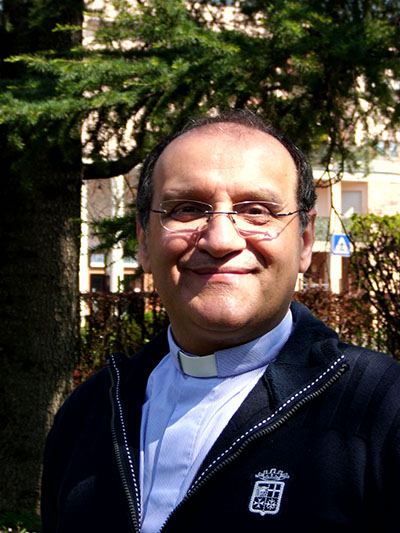 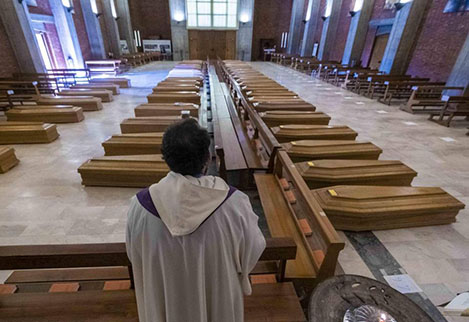
“It is normal for a priest to work alongside death. It is inherently part of the job. However, during last spring’s coronavirus crisis, I became involved not only as a priest, but also as an individual. As a human being. I lost members of my immediate family. It was incomprehensible, and to be honest, I still cannot comprehend these devastating losses".
Don Mario Carminati is the parish priest of Seriate, a small provincial town with 25,000 inhabitants, located just five kilometers from Bergamo in northern Italy. But he is also one of those people who makes it clear, that in a certain way, the corona pandemic can be compared to a war. Because this spring’s corona rage is – just like a war - the messenger of two types of narratives. There is the overall and factual history in which we read the many statistics of death, the infected and, luckily also, survivors. Then, if you delve further, you’ll find an infinite number of underlying stories that deal with human destinies, personal tragedies, anxious recoveries and dramatic eyewitness accounts. Don Mario Carminati carries several of those close to his heart.
"When I think back to last March, I remember how it all started quite slowly. At first it was just a flu from China that we had heard about. But then all of a sudden it was here, and then it started to accelerate. The feeling I most clearly remember was anxiety. People were really scared,” says Don Carminati.
The history from the Bergamo area is well-known. Thousands of small to medium-sized businesses operate here. An area where thousands and thousands of people move around every day, like small worker bees to perform their daily tasks. An area that is especially characterized by a rooted and deeply felt work culture, which entails thousands of daily contacts between people. And thus, also, a perfect breeding ground for the spread of coronavirus.
"Suddenly it started to develop quite quickly. Although several areas were turned into red zones (so no one could neither get in nor out, ed), the infection spread rapidly. And the death toll rose. The hospitals did not have space for the numerous coffins of dead corona patients. It was at that moment that I got the idea to open my church to make room for the many coffins,” says Don Carminati.
A message of love
Carminati's idea and gesture really captured the attention of Italy. It was something that was noticed, and to this day many know him as "the priest who opened his church to receive those who died of corona.” But how did he actually come up with this idea?
"A few weeks after the coronavirus had taken hold, the death toll began to rise steadily. Day after day. At one point, Bergamo city and surrounding villages had an average number of 100 deaths a day. Unfortunately, Bergamo's crematorium could not keep up. It is only capable of carrying out 24 daily cremations, so the coffins just kept piling up,” he says.
At one point, the church where Don Carminati presides, la Chiesa di San Giuseppe, received an official request from Bergamo's hospital authorities. They needed help storing the many coffins before cremations were able to take place.
“At that point I thought of the nave itself. Even though the people were dead, we are still talking about people. We are not talking about objects. So my thought was that a place in the heart of the church before the very last journey would be obvious,” he says.
During the period, Don Carminati and several other priests from the parish performed a careful count.
“Seriate had approx. 200 corona deaths over two months, but we also received coffins from the surrounding villages. In the church of San Giuseppe, where I work, we received a total of 260 coffins before they were sent on for cremation. The highest number of chests we had in only one day was 76. Bearing in mind that we only had room for a maximum of 80 coffins, the church was almost completely full. Then the military trucks came and took the coffins away, and then the next day we received new coffins with yet more corona victims,” says Don Carminati.
This went on for much of last March. It was also at this time that Don Carminati received a somewhat unusual phone call from a nurse working at Bergamo's Central Hospital.
“During that time, I often spoke to parishioners who had lost family members and who needed comfort. But that day it was a nurse. She called on behalf of a corona patient, Pio. I knew him, because he often came to church. Through the nurse, he had left a message for me, shortly before his death. I had to call his wife and confirm his love for her. I then called Pio's wife and conveyed his words to her, after which she said: ‘I am comforted to receive that message, and it confirms that what we had together was true love,’” says Don Carminati.
Absurd situations
A couple of times during our conversation, it is clear that Don Carminati is touched as he lets his mind go back to the dramatic events in the spring. He stops talking for a moment and draws breath, then continues. He speaks not only as a priest, but also as a human being. And as a human being who is able to see the absurd in certain situations.
"Due to the risk of infection, family members and relatives of patients with corona could not go to the hospital. And when the infected died, they were often carried away without the family being informed. Therefore, the family had no contact with the patient before death. Often the family was simply told that their family member had passed away and that he or she would subsequently be cremated. These families often called me to hear if the deceased happened to be in my church. The problem was that they could not come to church, due to corona restrictions. So in those cases ....well, it's really a sad story ... in those cases they asked me to take a photo of the deceased's coffin where you could also see the person's name, and then send it to them. It was the last contact they had with their loved ones before the cremation. Even today, many months later, I get sad when I think about all this,” says Don Carminati.
Throughout last spring’s corona rage, the Italian priests were often in the eye of the storm. They were in a vulnerable position and many lost their lives. Today, the number of deceased priests as a result of corona is as high as 121. Hence the question of whether or not Don Carminati himself feared becoming infected?
"To be honest, I've never been anxious. Who knows, maybe because I was not really aware of the danger. In the storm, it is important to remain strong. As a priest, you have to consider yourself as a kind of leader. As one who guides. I also said this to my parish priests: remember that when all this is over, it is important to be able to look yourself in the eye,” he says.
Don Carminati goes on to tell me that he himself has lost people in his immediate family. Even young people. Something he has found so incomprehensible that he has "protested to God".
“One was my sister's son. He died at the age of 34 after having been in intensive care for five months. He was healthy and practiced a lot of sport. It was an incomprehensible death. He was loved by everyone, and at his funeral, 600 people turned up. The other was my cousin's daughter. She had been on an extended photographic tour through South America, where she had apparently been infected. She was 38 years old. It was horrible. I must admit that I have protested to God. I asked him, ‘why have you not listened to me’. It may sound strange that an ordinary priest like myself should protest to God. But Pope Paolo VI also blamed God when Aldo Moro (formerly a prominent Italian politician, ed.) was kidnapped and killed in 1978. So I felt that I had the permission to do the same,” says Don Carminati.
Several months have passed since the dramatic spring with the many deaths and a seven-week-long lockdown, of which the Italians have not yet seriously seen the long-term effects. During that period, many have tried to find a higher meaning with the pandemic. Does this also apply to Don Carminati?
"Some time ago, I participated in a debate where a doctor from Bergamo was also present. He said something that really struck me. Something I have been thinking about: ‘If there is anything that will be worse than the virus itself, it will be if we do not manage to use these experiences constructively. It will be worse, if we do not use this terrible experience to grow socially, humanly but also economically'. I think he is absolutely right about that”, concludes Don Carminati.
Info about Don Mario Carminati:
Don Mario Carminati was born in 1956. In 1980, he completed his training as a Catholic priest and has since served numerous parishes within the Catholic Church, particularly in Lombardy and Piedmont. Since 2005, he has been in charge of Seriate Parish Church, near Bergamo, which is subdivided into five areas, Luce, Comonte, Risveglio, San Giuseppe and Serena.
Editor’s Note: Featured are photographs of Don Mario Carminati, coffins inside La Chiesa di San Giuseppe, and military trucks carting away the dead.
WHO ARE WE TO JUDGE COLUMBUS?
Historic Figures Should Not Be Appraised by the Evolving Code of Ethics of Future Generations
- Monuments and statues are symbolic inspirations for reflection.
By Vincent Arena
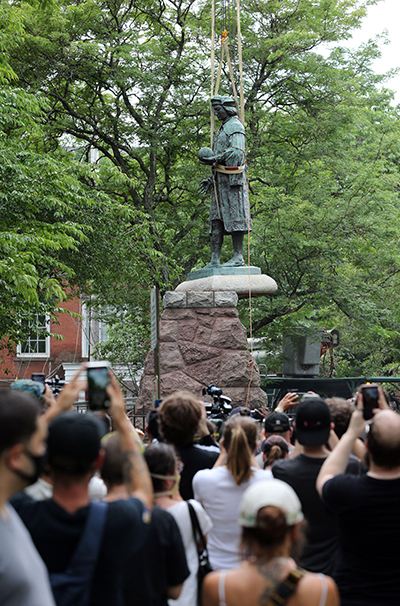
The men and women hellbent on the removal of monuments shouldn't be judged in the years to come. Likewise, they themselves should refrain from casting judgment on figures of yesteryears. If anyone is to be branded revolutionaries, rebels, anarchist or political agitators, let the people grasping the iron be an impanelment of their peers, attuned to the vast assortment of the day's ideologies.
What I write today isn't to sway the judgment I call upon, but simply to recite an individual’s perspective. I come from a society where individualism and freedom to voice one's opinion was celebrated. Not a place where the volume of one's word's is meant to outweigh its content and drown out opposition. The First Amendment granted us this fundamental right, and I impel the people to take advantage of it before it's pulled from beneath our feet.
I don’t view our monuments as solely honorific, but multi-purposed. When I had learned of the suffering of past generations, whether it were a byproduct of racial, ethnic, economic or gender inequality, I viewed it with appreciation. I didn’t contemptuously disregard them or question their existence. How could I? It was in those pieces of history that I was able to fully grasp the progress we had made. Our past is what we learn and grow from. To erase it places us at risk of unwittingly repeating it.
A large part of the pride I carry as an Italian American isn’t in the accomplishments of my forebears but in the hardships they have endured and all that was overcome. We have suffered the largest recorded lynching in American history. Dealt with derogatory and debasing stereotypes from the moment the first shiploads of southern Italians arrived stateside. We have felt social injustices and marched for civil rights. We were share croppers and day laborers working amidst harrowing conditions. Yet we persevered to become contributors of the arts, culture and physical structure of our adopted land. The struggle built character. To better understand I’d like to delve deeper into our past to pay further homage to our ancestors.
Our affiliation with the glory of Rome made us feel capable. To this day we stare wide-eyed at the Colosseum. We don't speak of the disenfranchised gladiators and call for an immediate teardown of each and every reminder of the ancient world. Religion, too, has been a notable cause of continuous bloodshed. Though if we were to dwell on the losses we would forget the countless lives those same religious beliefs have saved. When does it all end? When is enough enough? When do we recognize that our history is what created the strength and fortitude that gradually integrated into our DNA. Without remembering our past, our future would have been a plateaued existence.
Monuments and statues are symbolic inspirations for reflection. To denounce an historic figure, for example, such as Christopher Columbus, is an unfair attack on the foundation of this great nation. When five centuries have passed, we are no longer in position to properly gauge or interpret a man’s thoughts or actions, let alone hold him accountable to the opposing standards of today. This age of insecurity, self-hatred and over dramatized cries of victimization is ravaging this country. I believe it is our duty to set an example by letting our voices be heard.
Editor’s Note: Mr. Arena is a freelance writer. The photograph depicts the statue of Christopher Columbus lifted by crane on June 24, 2020 and removed from Wooster Square Park in New Haven, Connecticut. The statue was donated by the United Italian Societies and first erected in 1892, and later recast in bronze in 1955. The city has placed the statue in storage.
IN DEFENSE OF COLUMBUS
The Writer, a Native of Pittsburgh, Asks, “Where is the Outrage?”
Columbus is worthy of praise and monuments
- “Let us not allow the bad to conquer the good by denying our rightful history.”
By Joseph T. Ferruzza
In light of the recent events in Maryland, Ohio, Kentucky and Massachusetts, the question has to be asked, “Where is the outrage?” The anarchists, insurrectionists, and history revisionists have all desecrated or torn down statues of Christopher Columbus. Instead of constantly hearing the voices of the anarchist and insurrectionist mobs, why is there no competing voices of historical knowledge and reason raised in our hero’s defense? The following message is more relevant now than ever before.
In defense of Christopher Columbus:
The Spreading of Catholicism. Christopher Columbus’ devotion to God and His Church is without question. He was, without a doubt, the driving force behind the rooting of the Roman Catholic Church in the New World.
The Courage of His Convictions. Columbus knew the world was a globe with unfathomable opportunities. This courage to tackle the unknown, against all odds, is comparable to America’s early pioneers and today’s astronauts.
His Steadfastness to Overcome Obstacles. In spite of all odds such as a lack of financing, ridicule, mutiny and persecution, Columbus never wavered in his belief in God and his mission of destiny.
Great Men and Their Flaws. The history of the world is rife with men and women we cite as great and pay homage with statues and monuments. To suggest that the depiction of a historical figure such as Columbus should be removed from public view because of what some believe are his flaws, can only be viewed as an attempt to re-write history. To deny our history is a crime against our fellow men and women and those who follow us.
I believe all good Americans sympathize with the plight of racial injustice. However, we should be very careful to not join forces with those who never lose an opportunity to ride on the backs of the oppressed and move forward with their ultimate goals to bring this country down. We should not to join forces with those who attack our liberty and those who profess the ideologies that have been tossed on the scrap heap of history such as Socialism, Communism and Fascism.
Even one of God’s favorites - King David - one of history’s most celebrated leaders, had very serious flaws that often plague ordinary men. We are all human, after all. Hopefully, our good deeds outweigh the bad. Let us not allow the bad to conquer the good by denying our rightful history.
Editor’s Note: The writer is the former president of the Pittsburgh chapter of the Knights of Columbus and a member of the Sons and Daughters of Italy in America, Frank Ricco Lodge #731. The photograph shows the Columbus statue in Schenley Park, Pittsburgh. Erected in 1958, the bronze statue and granite pedestal was made by Frank Vittor, an Italian immigrant who sculpted this and other masterful works in the city and elsewhere in the Midwest. Recently, the arts commission of Pittsburgh held a public hearing on the removal of the statue.
“PLEASE DON’T ERASE OUR HISTORY”
A Plea to California Governor Gavin Newsom
From Velio Bronzini, a 90-Year-Old, Longtime, Italian American Resident of Castro Valley

Pictured are the author’s parents, Guido and Clara Bronzini,
circa 1945, two family photographs with his brother Lorenzo,
and his current photograph.
The following letter was written by Mr. Bronzini on June 21.
To:
The Honorable Governor Gavin Newsom
President of the Senate Toni Atkins
Speaker of the Assembly Anthony Rendon
Assembly Rules Committee Chairman Ken Cooley
California State Capitol
PO Box 94289 Room 204
Sacramento California 95814
As a son of Italian immigrants, I am stunned and appalled that you would even consider removing the statue of Christopher Columbus and Queen Isabella from the State Capitol Rotunda. Those monuments not only represent the contributions by Italians to California but also to our great country.
The toppling of the statue of the great navigator and explorer, Christopher Columbus, from San Francisco’s Telegraph Hill was driven by a mob mentality. It is an insult and an affront to people of Italian heritage and to the memory of those such as A.P. Giannini who was extremely instrumental in rebuilding San Francisco after the 1906 earthquake. Whether you agree with it or not, as descendants of Italian immigrants we are entitled to the preservation of our history. The contributions made by Italians to our state and country are immeasurable and should not be diminished.
I have heard the argument that Columbus was a polarizing figure; really ladies and gentlemen of the California legislature, you were not elected for the purpose of, nor do you have the right, to re-write history.
The first recorded celebration of Christopher Columbus in the United States was 1792 and he has been celebrated in San Francisco since 1869. In 1891, eleven Italians were lynched in New Orleans; they were murdered by a mob. It was the largest mass lynching in American history. In that period, Italian Americans were the second largest group to by lynched in this country. The following year, in 1892, President Benjamin Harrison issued a proclamation and urged Americans to celebrate, marking the day of October 12, in celebration of Columbus’ landing in the Western Hemisphere. In 1937, President Franklin D. Roosevelt proclaimed Columbus Day as an official U.S. holiday.
Although discrimination and abuse of Italian Americans continued, as a people we have moved forward from the dark days of injustice. The attacks on Christopher Columbus are unfair and obscure the reason why COLUMBUS DAY MATTERS to all Italian Americans. The successes of Italian Americans are being erased by a new wave of bigotry, intolerance and prejudice by a mob mentality in order to re-write history in their own vision.
If some are offended by the Christopher Columbus statues that is no excuse or reason for their destruction and removal: THAT IS NOT ACCEPTABLE. It is important to the Italian American people (and should be to all people of this country) that the statues remain in place and are looked upon as a part of history, whether individuals or certain groups approve of them or not.
The real danger lies in the fact that it will set a dangerous precedent for future movements by any other group. If something is deemed unjust or offends them, they can pressure lawmakers and have it erased from history.
Columbus Day holds a special significance for me. October 12, 1942 was the day that my father and mother became naturalized American citizens. It was also the date that President Roosevelt announced the lifting of restrictions on non-citizen Italian immigrants who, although in this country legally, at the outbreak of WWII were declared to be enemy aliens. The president lifted the restrictions, recognizing the loyalty and contributions made to our country by the Italian people. I ask that you please do not erase our proud heritage.
Sincerely,
Velio Bronzini
Castro Valley, California
Editor’s Note: On July 7, without deliberation, debate, or a vote in the legislature, three presiding members of the California assembly - Toni Atkins, Anthony Rendon, and Ken Cooley - ordered the removal of “Columbus’ Last Appeal to Queen Isabella.” The marble statue that had been in place inside the state capitol rotunda building since 1883 is no longer there.
ITALY IS THE HERO IN “SANTIAGO, ITALIA”
The Documentary by Nanni Moretti Goes Back to the 1973 Coup in Chile
How the Italian Embassy Gave Safe Refuge to Marxist Radicals
- PRIMO Review
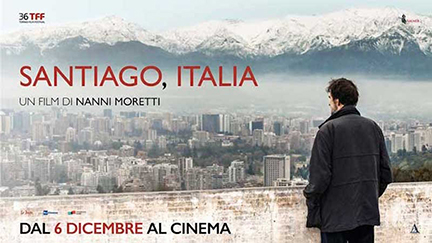
Nanni Moretti continues to ride a wave of praise among the best and brightest in Italian cinema. The producer, director and actor has a portfolio of quality films to his credit, such as “The Son’s Room” in 2001, “We Have a Pope” in 2011 and “Mia Madre” in 2015.
Not just a maker of feature length films, Moretti is also a documentarian. Admittedly left-leaning in politics, he strikes a balance in his films for mass viewership. His latest is a riveting tour de force in South American intrigue and political violence titled “Santiago, Italia.”
Made in 2018, “Santiago, Italia” is must-see cinema for anyone interested in socialist or Marxist ideology and the historic interplay between Italy and South America. The documentary considers the aftermath of the coup d'état in Chile in 1973 and the role Italy played in rescuing young revolutionaries opposed to the military overthrow of that country’s duly elected government.
The film begins with a stunning view of Santiago. The snow capped Andes in the distance frames a bustling city of some 5 million people. Chile’s capital symbolizes a model for free market prosperity in South America. Indeed, as this century began, the country Colombia modeled her resurgence on what happened in Chile 30 years prior. It was in 1975 when Milton Friedman and other economists from the University of Chicago were in Chile at the request of the dictator General Augosto Pinochet. The old socialist structure was scrapped for low taxes, minimal regulations and a tight money supply. Chile’s economy boomed and the country eventually made a peaceful transition in 1990 from a military junta into one of the most stable democracies in the world today.
Filmmaker Moretti makes no mention of the positive transformation that occurred under the years of Pinochet from 1973 to 1990. Rather, the general is seen in the film as a symbol of right wing oppression and violence. On September 11, 1973, Pinochet ordered Chile’s army and air force to all but destroy Palacio de La Moneda, the country’s presidential palace and cabinet building. The neoclassical structure was designed in 1784 by Italian architect Joaquín Toesca and is to Chile what the White House and the Eisenhower Executive Office Building is to America. Black and white archival footage shows the building in flames after an aerial assault by fighter jets. The scene is a stunning reminder of just how brutal was the coup d'état in Chile. The event shocked much of the world with a serious rebuke by many countries of United States foreign policy. American support for the overthrow came with a host of clandestine actions by the Central Intelligence Agency, not to mention training and tactics by American military advisers.
Part of the story in “Santiago, Italia” is the rise of Salvador Allende, a physician and member of the Chilean parliament who became the first Marxist elected to the presidency of a country in Latin America. He remains an enigmatic figure who was mentored in political ideology by Juan De Marchi, an immigrant from Turin who was a shoemaker in Chile and sought to lead an anarchist revolution there. Allende won the presidency in 1970 with a plurality vote of just 36 percent. He took a hard and uncompromising approach to nationalize industries, fix prices and expand government. Inflation, long lines at the grocery store and national strikes became symbolic of the country’s woes. Most objective observers consider such economic reforms a travesty, yet Moretti’s focus is on the nobility of Allende’s effort.
“Santiago, Italia” is replete with contemporary interviews of gray haired men and women who in 1973 were young committed Marxists. They were Allende’s most loyal and ardent supporters and look back fondly on those years of hope and confidence. Enthusiasm turns to fear when they recall how the army took control of the capital. Allende, still in the presidential palace, refused to cede power. After troops stormed the building, he was found dead from an apparent suicide.
The testimony of those who survived the coup remains moving and insightful. Many of them today are successful writers, teachers and artists in Italy. They were young radicals then and were rounded up by soldiers and police in Santiago. The city’s soccer stadium became a mass prison for interrogation and torture. The political apparatus of socialists, Marxists and anarchists in Chile was destroyed by the military.
On the run from authorities, many young radicals took refuge in the Italian embassy in Santiago. They scaled the large concrete wall to land in the garden and pool side of the Palladian estate. The Italian government was most generous with sanctuary for Chilean discontents. They were given safe passage to Italy and settled in Emilia-Romagna for the Communist party there to give them money, shelter and jobs.
“Santiago, Italia” is an extraordinary film that captures the complexities of refugees and how Italy helped those at the wrong end of history. The virtues of Italy are extolled by those saved in the crisis. One woman in the film compared her home country of Chile to an abusive father while Italy was the mother who gave her security and comfort. As time passed, she and others became more Italian than Chilean. They married Italians and their children were born and raised in Italy.
Moretti is a wise filmmaker who understands the emotional appeal of survivors. Feelings of sympathy for those persecuted and a revulsion of violent repression is what ultimately keeps our attention in the film.
“Santiago, Italia” is an excellent documentary with its single flaw being the embracement of political propaganda. No doubt the filmmaker is a supporter of the ideological principles espoused by Allende. A difference must be noted in the endgame between Chile and Italy. What Allende and his supporters sought was not a socialist democracy as accomplished in Italy and elsewhere in Europe after World War II. Instead, they yearned for a system that was wholly Stalinist as what arose in Cuba and the Soviet Union. Had they succeeded, Chile would no doubt have undergone many dark years of poverty and repression. Would they have been any less tyrannical than the military junta they fled? If the tide was reversed, would Nanni Morretti tell a story with such vigor and skill for refugees that espoused the virtues of Friedrich Hayek, instead of Karl Marx? These are questions we are glad are not to be answered.
Editor’s Note: “Santiago, Italia” joins a host of other films from Italy and elsewhere as previewed and promoted at Lincoln Center in New York. To find out more, please log on to the virtual cinema page at https://www.filmlinc.org.
OF NONNA AND COVID-19
My Grandmother Lived Through the Spanish Flu of 1918
What I Learned from Her
By Alfonso Guerriero
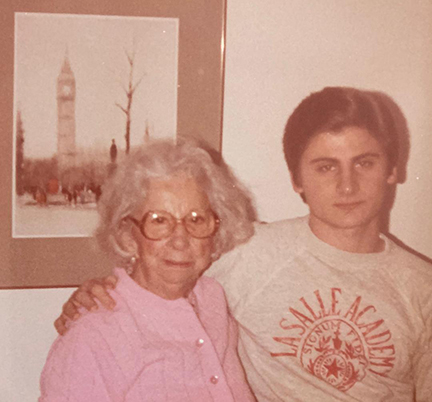
A few days ago, my brother-in-law sent me a text and news report about a convoy of military trucks ordered to collect the remains of the coronavirus victims in Bergamo, Italy. The city is one of the hardest hit in the global pandemic. Cadavers were dumped into a mass grave to prevent the disease from spreading. I am certain the government’s decision was difficult, especially in a country noted for mourning loved ones.
The article reminded me of a parallel story about my maternal grandmother, Giuseppina Zaccaria. She was born in Sant’Angelo a Scala circa 1902 and survived the Spanish influenza in 1918. Her oldest sister Filomena, a young and beautiful blue-eyed girl, however, was not as fortunate and died in her arms. My grandmother told me that her sister’s lifeless body was carried in a horse drawn wagon and dumped in to a mass grave. The family never had a chance to properly bury her beloved sister.
The 1918 influenza devastated Italy much the way the 2020 coronavirus is now. My grandmother’s tragedy was over a hundred years ago. I find myself remembering her while I and others confront the 2020 pandemic in New York. Here is America’s epicenter where hundreds die daily.
New York is is where I was born and raised, where my wife and I work and where we raise our daughters. In one big swoop the vibrant energy is sucked-out. There is a new soundscape here that is noticeably off key, accompanied by a very different sidewalk scene and lifestyle. Pedestrians and straphangers on buses and trains are covered in white or black surgical masks; some with the highly coveted N-95s, as well as in blue or lavender colored latex gloves to protect their hands from the disease. My wife and I, like the rest of the world, are working from home. We are educators who are doing our best to be on call for our students via remote learning while juggling our responsibilities as parents and maintaining a life of normalcy for our daughters.
The shelter-in-place decision in New York, like most of the country, followed the advice of many medical experts predicting the worst is yet to come. So many hospitals will be unable to maintain the onslaught of patients. Those with pre-existing medical conditions are most susceptible to the virus will likely be whisked into the ER. The strain on hospitals is predicted to be so enormous that the Jacob Javits Center is now transformed into a 1,200 bed emergency hospital and in Central Park a field hospital was erected to serve impending patients expected to arrive in the days ahead.
New York State Governor Andrew Cuomo convenes daily briefings like modern day fireside chats. As one reporter from the New York Times, remarked, “It’s no wonder that watching Andrew Cuomo’s daily briefings can make some people crave Chianti and meatballs….the governor of New York evokes the feeling of a big Italian family dinner table.”
The importance of family returns in a times like these. Family is the pillar of our existence. The contagion forces many of us to press reset and reevaluate our lives. I call or text my cousins in Italy more regularly now. I ask my mother more in-depth questions about my grandmother. I check in with my own children about what they are feeling.
The coronavirus has abruptly entered our lives like a spiteful guest who has crashed our party filled with gaiety. The U.S. economy was strong and many of us were removed from the challenges that confront the rest of the world. At the same time, my grandmother’s story of courage and perseverance has awoken in me my own self-pity during this outbreak.
After living through the 1918 pandemic in Italy and ravages of World War I, she arrived in America in 1920, unable to read or write in her native language. Almost a decade later, she and my grandfather married and raised three daughters on a modest income only to survive the Great Depression and World War II. And yet I never heard my grandmother complain.
So, then, why am I complaining?
I have electronic devices to communicate with the outside world via text, audio and video. I can buy food and have it delivered to my home and added to my stockpile. My wife and children remain safe and out of harm's way. And, I am getting paid and have medical insurance while many others have been laid off and struggle to pay the mortgage or rent.
Furthermore, we have running water and electricity and as long as no one interrupts those essentials, we will be just fine. Yes, of course this global pandemic created an inconvenience from my regular routine but compared to my grandmother’s life and the horrible experiences of so many first responders right now, I have no reason to complain.
LOCKDOWN - ITALIAN STYLE
Deirdre Pirro, Writer and Translator for PRIMO Shares Her Experience in Florence During the Coronavirus Crisis
By Deirdre Pirro
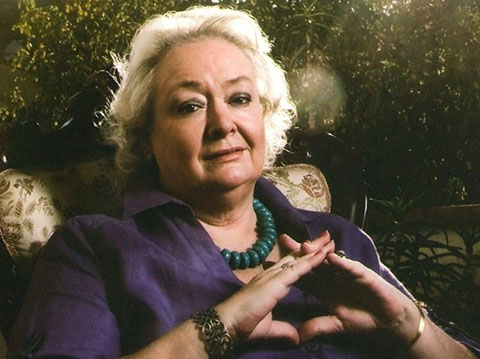
The author in her home in Florence, where next door is a school playground devoid of
children in Italy's coronavirus lockdown.
This is the third week of lockdown in Florence. I call it “house arrest.” Yet, it is for a crime I have not committed. Others call it a war; but against an invisible, insidious enemy which, at the present moment, we seem to be losing. With this in mind, I thought I would write a few suggestions that might help those in the United States who are now facing a similar lockdown here in Italy.
Pietro, my husband, and I now appear to belong to a category of potential patients called the “anziani” (old people) who, when the chips are down and there are not enough ventilators for everyone may be considered dispensable. That is because a high percentage of over 60 year olds, usually with other pathologies, have died of COVID-19 in Italy.
Health officials in Italy have told young parents to keep children away from their grandparents. Children have a high recovery rate but, nevertheless, if infected, endanger the elderly. Prepare your own children psychologically to spend extended time with other children when schools close. Some parents may not be used to spending so much enforced time with their children. They will need to invent ways to entertain the kids.
Here, thank goodness, Piero, our son, is our link to the outside world. He shops at the supermarket for us (only 5 people allowed in at a time) and takes care of all the other things that involve venturing outside the house. On returning home, he leaves his shoes outside the front door, changes his clothes and washes his hands.
Initially, on Day 1 of lockdown, I was elated to think that finally, I could have some time at home to do all the things I had been putting off for a century. With this in mind, I began tidying up my desk. I was extremely pleased with myself when I finished the job. Trouble was, it only took a couple of hours, and then what?
As the days have passed, I find it strange that I have become very lethargic and don't seem to want to do anything, not even write that best selling book! The telephone has become my best friend and I find that I am telephoning or I am being telephoned by people I haven't seen or heard of for years. It's a positive.
Things to do:
STAY AT HOME
1. Buy a good mask and a store of disposable rubber gloves
2. Stock the pantry with dry goods like pasta, rice, tinned products, etc.
3. Stock the freezer
4. Make sure you have plenty of books, DVDs (films and music), Netflix, etc., to help pass the time
5. Dust off your board games and set up the card table
6. Take out old photo albums to look at or watch you old home movies, it's fun to reminisce
7. Try to have something to do that will occupy your time manually as psychologists here say that doing something with your hands is relaxing for the brain. When I watch TV at night, I knit scarves, at which I am hopeless, but it soothes me and I will give them to the homeless when this is all over. If you can paint or draw that would be even better.
Things not to do:
1) Do not compulsively watch the TV news
2) Do not compulsively check online sites to look at the number of deaths
3) Do not let concern turn into anxiety.
Stay healthy and safe...Deirdre
Editor’s Note: Deirdre Pirro writes for PRIMO and provides new and original translations of excerpted works from English to Italian. She has written two books, now on sale through PRIMO. The first is “Italian Sketches - The Faces of Modern Italy,” a book about the most influential Italians in the arts, science and statecraft this past century. The second is “Politica e Prosa” a new book of translations in collaboration with PRIMO’s publisher and editor Truby Chiaviello. If interested, please log on to our Books Page here.
PRIMO ANNOUNCEMENT
Truby Chiaviello, Publisher & Editor of PRIMO Magazine, Appointed to the Board of Directors of The Sicilian Project
The Sicilian Project’s mission is to teach English to all children in Sicily

It is with pleasure that PRIMO Magazine announces Publisher and Editor Truby Chiaviello has been appointed to serve on the board of directors of The Sicilian Project. The term of his service began in January 2020.
The Sicilian Project is a 501-C3 tax exempt organization that raises money from people throughout the United States to fund academic grants issued in Sicily. The organization’s objective is to train Sicilian students, from elementary through high school, to read, write and think in English.
The Sicilian Project began in 2011 as an idea Massachusetts attorney Alfred Zappala had during one of his many visits to Sicily. He saw that children there could not compete in a global market without English language skills. Since then, The Sicilian Project has maintained an active all volunteer board of directors and volunteer teachers to conduct classes in Sicily. The Sicilian Project established a strong working relationship with the Babilonia School in Taormina to provide grants and use their staff and facilities. English language summer camps are ongoing in Aci Bonaccorsi, Valverde, Augusta and Palermo. The plan is to begin new camps in other locations of the region such as Messina.
“I am honored to serve on the board of directors of The Sicilian Project,” says Mr. Chiaviello. “I have been an admirer of the organization since its inception nine years ago. Alfred Zappala and his team have made incredible strides helping Sicilian children and young adults learn English. More than just an organization, The Sicilian Project is a serious change agent for Italy’s future. To be a part of The Sicilian Project is to be a part of history in the making and I am very honored to serve on the organization’s board of directors.”
To learn more about The Sicilian Project and how you can help, please log on to www.TheSicilianProject.com. To contact Truby Chiaviello, please call 202-363-3741 or email potompub@aol.com. To learn more about PRIMO Magazine log on to www.onlineprimo.com.
- Our Review
No Safe Places
By Samer Chiaviello
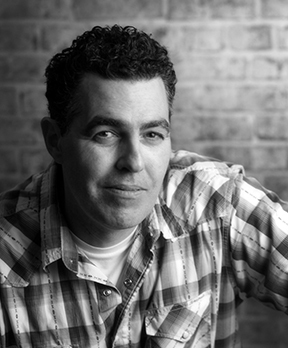
You have the right to remain silent. Anything you say can and will be used against you. Your posts on Facebook, Twitter, and social media will be saved to shame you. Anything you say that we don’t like will be used to shut you up. You cannot be funny. You cannot think differently. You can’t challenge us. There is no debate.
This harrowing warning is the underlying rhetoric of what is said to come from America’s colleges and universities in the new shockumentary, “No Safe Spaces.” The film tells a cautionary tale of how our salient freedom of speech is under attack by leftist thuggery on today’s college campuses.
“No Safe Spaces” stars Adam Carolla and Dennis Prager, two veteran radio talk show hosts and political commentators. They serve as our dynamic duo; guiding us through the discourse maze of today’s status quo and radical left.
Carolla relays his upbringing about how he grew up in a poor household, with a mother unwilling to give up her welfare benefits. His story is that of overcoming hardship through comedy. He found refuge in his opinions when he created a podcast to express his politics in a lighthearted manner. Prager’s upbringing is much different that Carolla’s. His family is Jewish Orthodox and he graduated from Brooklyn College and went on to study international relations at Columbia University. He suffered ideological persecution when he pursued Prager University; a name given to his short, well-produced videos about politics and culture. Now with over a hundred of his videos banned from YouTube, Prager is engaged in a lawsuit to get his videos back on this widely viewed platform.
Together, Carolla and Prager tour the country interviewing and seeking insight about freedom of speech from esteemed political commentators such as David Rubin, Jordan Peterson, Ben Shapiro, Alan Dershowitz and comedian Tim Allen.
“No Safe Spaces” is a documentary that paints a graphic picture of the current state of colleges and universities in America. The film’s title refers to rooms and other enclaves where students go to avoid people of different political opinions. Once a haven for the free exchange of ideas, colleges and universities are now islands of social justice and political correctness; increasingly ruled by students rather than faculty and administrators. The film contains many scenes of angry students partaking in unconventional (and extremely violent) protests to uphold leftist values of their accredited institutions. Debate, reason, and - more importantly - simple communication are absent. The diversity of thought through the use of free speech is punished with glass breaking, chair throwing and other forms of destruction.
Perhaps the most captivating and eye opening part of the documentary is the story of Bret Weinstein, former professor of biology at The Evergreen State College. He describes himself as liberal leaning and, yet, was a victim of leftist protests. He utilized his freedom of speech to pen a letter to the college administration regarding the Day of Absence; a decades old political correct “holiday” celebrated by the college. On this day, minority faculty and students do not attend class to remind others of their contributions. In 2017, however, a change was proffered where white faculty and students were urged to leave campus while only minorities remained. Weinstein expressed his distaste for the change, calling it “an act of oppression” by the students. Protests followed and Weinstein was verbally assaulted and he and his wife were threatened with bodily harm. The college president refused to contain the protests with police intervention. Weinstein resigned, sued the college and received a settlement of some $500,000.
The call to action in this documentary is one that cannot be ignored. “No Safe Spaces,” is perhaps the most visually stunning documentary released in a long while and serves as a premonition of what is soon to come. It is a must-see for all Americans who value their first amendment rights, and who still believe in the predominant principles of the foundation of America.
At The Premiere of "No Safe Spaces"
 
It was a full house at the premiere of “No Safe Spaces,” as almost 500 people attended the film’s first showing on Wednesday, November 20, at the Uptown Theater on Connecticut Avenue in Washington, D.C.
A mainstay of Washington’s Cleveland Park neighborhood, the Uptown contains one large screen, balcony seating and a grand chandelier for a trip back in time.
Absent from the premiere was the film’s star Adam Carolla. However, Dennis Prager was present, as well as the film’s producer Mark Joseph, producer and director Justin Folk, writer John Sullivan and special guests Greg Lukianoff, founder of FIRE (Foundation of Individual Rights in Education) and Karith Foster, a comedian who was featured in the film.
Most in attendance at the premiere are involved in various conservative causes and have, themselves, faced persecution on today’s college campuses. “No Safe Spaces” conveyed what many here have been warning about for years: That institutions of learning are increasingly less tolerant of conservative political viewpoints and are outright confrontational towards political minorities. Heads nodded in unison as the film showed one scene after the other of conservative speech banned and right-leaning dissenters bullied.
It was Dennis Prager who captured the mood of the audience and the ultimate meaning of the film when he said, “This isn’t a documentary about who’s right and who’s wrong, it’s about the importance of freedom of speech; something that everyone can get behind.”
Editor’s Note: To learn more about “No Safe Spaces,” log on to https://www.facebook.com/NoSafeSpacesMovie/
SISTERS IN LIBERTY
New Exhibit Compares The Statue of Liberty with “Liberty of Poetry”
Was the Florentine Statue The Model for The Statue of Liberty?
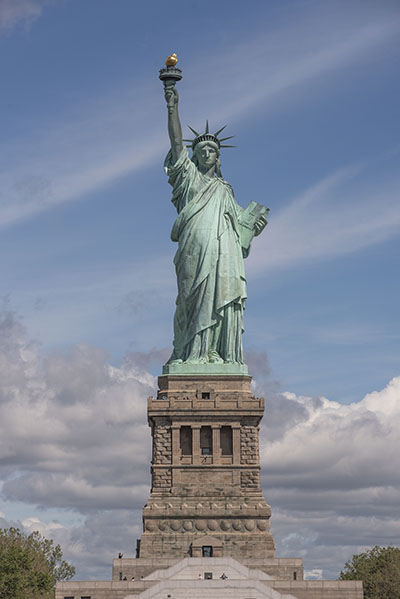 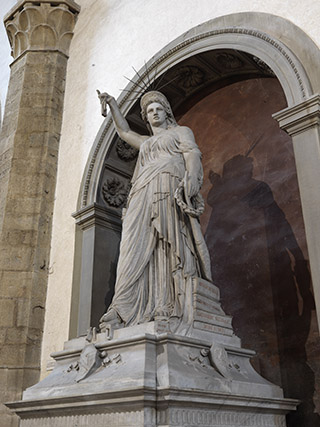
On Tuesday, October 16th, at the Consulate General of Italy in New York, a press conference convened for the “Sisters in Liberty,” an exhibit by the Opera di Santa Croce displayed at the Ellis Island Museum of Immigration in New York, from October 18, 2019 to April 26, 2020.
Central to the exhibit is the reproduction of the statue “Liberty of Poetry,” by Pio Fedi, the titular “sister” of “The Statue of Liberty Enlightening the World” by Frédéric Bartholdi, in New York harbor. Both statues, representing the search for freedom, are similar in stance and details. Thanks to the partnership with Kent State University, the statue in Florence has been subjected to an accurate 3D scanning for a perfect reproduction at the exhibition.
“Sisters in Liberty,” is curated by Giuseppe De Micheli and Paola Vojnovic (Opera di Santa Croce) and by Ann and David Wilkins (Duquesne University Program of Rome).
The project’s partners are: National Park Service / Statue of Liberty National Monument and Ellis Island, Kent State University, US Consulate in Florence, Consulate General of Italy in New York, Garibaldi Meucci Museum, and The Union League Legacy Foundation.
Pio Fedi was an Italian sculptor who lived from 1816 to 1892. Located in Florence are works by him such as “Rape of Polyxena” and the Monument to General Manfredo Fanti. Inside the Basilica of Santa Croce in Florence is the Memorial to Giovan Battista Nicolini, a hero of the Risorgimento, where standing is Fedi’s statue “The Liberty of Poetry.” The similarities between this and the Statue of Liberty by Frédéric Bartholdi are quite significant. Fedi completed his work in 1877 with drawings and a smaller model completed in 1872. Bartholdi began preliminary drawings and collecting funds for the Statue of Liberty in 1876. Bartholdi fought beside Giuseppe Garibaldi in the Franco-Prussian War and was in Italy at the time Fedi completed his scaled model accompanied by a public display of sketches of the eventual work. Above are photographs of both statues. Was “The Liberty of Poetry” the model for The Statue of Liberty? You decide.
Editor’s Note: To learn more about the coming exhibit on “The Liberty of Poetry,” please log on to https://consnewyork.esteri.it
CHURCH OF SAINT FRANCIS OF ASSISI IN MANHATTAN CELEBRATES 175 YEARS
The Franciscans Took Control of The Church Under The Leadership of Father Pamfilo da Magliano
The Church Hosts the Oldest Continuous Breadline in the United States
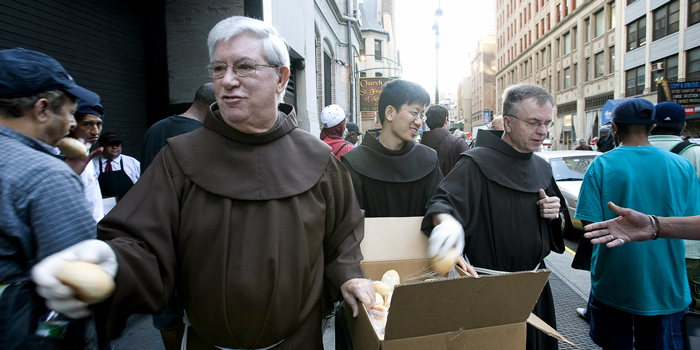
The spirit of Saint Francis is alive and well at the parish that bears his name: Church of Saint Francis of Assisi.
Located at 135-139 31st Street, between Sixth and Seventh Avenues in Midtown Manhattan, Church of Saint Francis of Assisi this year celebrates its 175th anniversary.
What began from dissension is today a multi-faceted and innovative parish.
The story begins at Saint John the Baptist. A parish formed in 1840 by German immigrants was censured by the Vatican. Disputes arose between members of the church’s board of trustees and its pastor Zachary Kunze. A Franciscan friar from Hungary, Kunze realized the best way to quell dissension was to start an entirely new parish and separate himself from Saint John the Baptist. New York’s bishop John McCloskey gave Father Kunze permission to begin Saint Francis of Assisi, just around the block from Saint John the Baptist’s, where an open lot along 31st Street awaited the cornerstone for the new church in 1844.
Church of Saint Francis of Assisi began as a modest structure to be eventually rebuilt in 1892 in the Gothic Revival style we see today. The church comes with a decorative topped steeple, narrow windows and moulded coverings. The tan brick facade and brown trim stands out among the bland warehouses of the Garment District and the sleek shops and restaurants of nearby Koreatown. The church’s interior contains beautiful mosaics, murals and statuary. A memorial exists of damaged steel beams taken from the destroyed Twin Towers. They pay tribute to parish priest Mychal Judge, who died in the terrorist attacks of 9/11. A chaplain in the New York City fire department, Father Judge was killed when the Twin Towers collapsed. His funeral Mass at the church was attended by former President Bill Clinton and former First Lady, turned U.S. Senator, Hillary Rodham Clinton. Downstairs is a chapel that features a large Italian presepe depicting the Nativity. Outside is an alleyway shrine to Saint Anthony.
The Order of Friars Minor (Franciscans) have managed the church since 1861. They officially adopted the parish under the leadership of Father Pamfilo da Magliano. He was born Giovanni Paulo Pietrobattista in 1824 in the village of Magliano de’ Marsi, in Italy’s Abruzzo region. Ordained a priest in 1846, he taught philosophy and theology at the monastery of Saint Bernadine in Sienna. He learned English at the Irish School of Saint Isidore in Rome and came to the United States in 1855 to grow the Franciscan order. He helped begin Saint Bonaventure University in Allegheny, New York and served as its first president. He was later named Custos, leader of the Franciscan order in the United States, and took control of two parishes in New York: Saint Anthony of Padua, located in Greenwich Village and Saint Francis of Assisi, in Midtown. Father Pamfilo began a school at Saint Francis administered by the Franciscan Sisters of Allegheny, an order of nuns he founded.
Church of Saint Francis of Assisi was a parish that experienced many changes. By 1920, the predominantly German, Hungarian, recent Italian and Greek working families were replaced by a transient population. To meet the changing demographics, the church initiated several innovations that were later adopted by other parishes throughout the country. Saint Francis was the first to offer a Night Workers Mass, convened at Midnight to serve Catholics who were working night shifts in the neighborhood. The church was also the first in the United States to offer a 12 noon Mass for traveling salesmen staying at hotels and tradesmen employed in nearby theaters and printing plants.
The church is most famous for hosting the oldest continuous breadline in the United Staes. It began in 1930 and, since then, has served some 12 million cups of coffee, 18 million sandwiches and 12 million slices of cake. Franciscans Bread for the Poor is a subset of the Franciscan Order that administers the breadline. Each day at 7 a.m. priests and staff are out front giving food to needy New Yorkers.
A year of tribute and commemoration for the church’s 175th anniversary will end this fall at the Feast of St. Francis of Assisi on October 4th. A special Feast Day Mass is scheduled to be oke a coil spring.
STORMING OMAHA BEACH ON D-DAY
PRIMO Reader Pays Tribute to Her Late Husband’s WWII Service
Mrs. Lola Pollastrini Gianelli wrote to PRIMO about her late husband, former U.S. Army Sergeant George Frederick Gianelli, and his service in the D-Day landing at Normandy in WWII. Here is what she wrote:
"This is a tribute to the 75th Anniversary of Normandy D-Day, in honor of my late husband George and his Army Battalion who all survived (Thank God) the war against the Germans on June 6, 1944 at Omaha Beach.
On June 6, 2019, President Donald Trump and First Lady Melania, along with Queen Elizabeth, saluted and stood at attention on Omaha Beach at noon for the raising of the American Flag and the 21 Gun Salute in honor and respect of our GIs.
Although I didn't know George until after the war, (we were married for 48 years until his death), this is a summary of his and his buddies' stories, as told at their Battalion reunions held every year after the war. The reunions lasted for 30 years. Wives and children attended in a one-week's vacation to listen to war stories.
George's battalion was in the Fifth Wave that stormed onto the beach where Hitler's army was waiting in bunkers. The worst battle was there at Omaha Beach. George said it was like going into a suicide mission. He stumbled over dead GIs who came ashore before him. The next 6th Wave of GIs wiped out the German troops. There is a GI cemetery on the hill above Omaha Beach maintained by the United States. George always said that the heroes were the guys who never made it out alive from that battle.
George's battalion spent four years in England shooting Buzz Bombs and fighting in Germany. They reached Hitler's bunker the day after both Hitler and wife Eva Braun committed suicide. Next to the bunker was a concentration camp where the battalion was allowed to go and observe. George refused to go. He could see from the gate a big pile of dead bodies.
George was drafted the day after graduation from Hayward High School at age 18. His battalion was made up of guys from Italian families in the San Francisco Bay Area. (Was this done purposely??) The families all knew each other. Actually, George received his draft notice before graduating from high school. He turned 18 in March and didn't graduate until June. George and his father went before the Draft Board and asked for a deferment so he could graduate. He was then drafted the day after high school graduation.
On your computer, you can see live movies and stories about D-Day, also photos of the cemetery. Just go to ‘D-Day Invasion of Normandy.’ I wish they would teach some information about WWII in schools nowadays, but they don't. I guess it's not ‘Politically Correct.’ (It might hurt somebody's feelings??) I wonder---if we went to war and there was draft today, would our youth go to battle or would it infringe on ‘their rights’???
PRIMO SPECIAL REPORT
NEW ORGANIZATION - "SAVE THE PERSECUTED CHRISTIANS" - UNVEILS PLAN TO STOP WORLDWIDE CHRISTIAN GENOCIDE
245 Million Christians
are Victims of Extreme Persection; 90,000 Killed in 2016 for Practicing Christianity in Africa and Asia; Focus on Nigeria
Hang a Banner at Your Church!

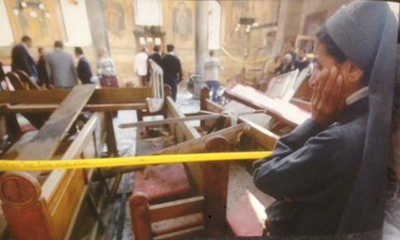 

Top photograph is the new banner by Save The Persecuted Christians organization. The next photograph is a Coptic church in Egypt that was destroyed by a suicide bomber who killed 128 worshippers. Other photographs: Somalia, Islamic boys are recruited to kill Christians; Palestine, parents hold a photograph of their son, abducted by Islamists; Iraq, statues in a church were destroyed by ISIS; Libya, Christian men were decapitated by Islamic terrorists; China, a Christian woman is attacked by soldiers; Frank J. Gaffney, president of Save The Persecuted Christians leads the organization’s press conference at the National Press Club in Washington. He said that the organization was inspired by American rabbis in the 1960s and 1970s who worked to save Soviet Jews from persecution; their logo pictured. Last photograph depicts the speakers at Save The Persecuted Christians press conference; with many from Nigeria who spoke about Christian persecution there.
A cry for help is heard.
Save The Persecuted Christians is a brand new organization headquartered in Monument, Colorado, that held its first press conference yesterday, January 17, at the National Press Club in Washington, D.C.
Their mission: Stop the ongoing genocide of Christians, worldwide.
The press conference convened inside the newly renovated National Press Club building on 14th street, N.W. Black steel beams streak above a lobby of contemporary decor that bespeaks the continued and active presence of the National Press Club in downtown.
The event was held there on the 13th floor; an ominous sign, perhaps; the number of the apostle who turned on Christ. Those gathered, however, showed no signs of despair. Instead, they were hopeful. They were unified in a cause. They seek to save their brothers and sisters in Christ.
Frank J. Gaffney, president and board member of Save The Persecuted Christians, was the event’s moderator and lead speaker.
A Washington insider since the days of Reagan and active participant in a number of conservative causes, Gaffney is the founder and executive chairman of the Washington-based Center for Security Policy. His knowledge of geo-politics will serve him well in this newfound effort.
Gaffney’s main purpose was to convey the organization’s background and grassroots strategy. He then invited others to speak, such as Bishop Keith Butler, founder of Word of Faith International Center, former member of the Detroit City Council and board chairman of the Save The Persecuted Christians. Another was Kevin Jessip, founder and president of Global Strategic Alliance and fellow board member of the organization. Only a few reporters were present. Most audience members were activists, both foreign and American, representing different Christian denominations. A political celebrity in attendance was Alan Keyes, assistant secretary of state in international affairs under President Ronald Reagan, a former radio talk show host and a Republican presidential candidate in 1996, 2000, and 2008. Prayers were said at the beginning and end of the press event.
Christian suffering was the main topic.
The reasons vary.
In China, it is to preserve the zeal of Marxism. In North Korea, it is to preserve the cult of Kim Jong-un. In Nigeria, it is to set up an Islamic caliphate.
Christians get in the way.
They praise God, not man. They seek salvation through Christ, not government. They read the Bible, not the Koran.
They are easy targets.
They attend church in day. They pray at night. They wear the cross.
In many countries in Africa and Asia, Christians are increasingly arrested without warrants. They are tried, convicted and jailed without due process. They are tortured. They are killed.
Christianity consists of 2 billion people today. Three decades ago, Roman Catholics and Protestants were on the rise in the Third World. Africa became more Catholic thanks to frequent visits there by Pope John Paul II. Protestant missions were fully established in countries such as Nigeria and Mali. Anglican, Presbyterian, Methodist, Baptist and congregational churches spread throughout the continents.
The past was for evangelization. The present, fear of persecution.
Every year, more Christians are killed for their beliefs, according to a recent report issued by A Church in Need, a Roman Catholic organization based in Germany.
Some 245 million Christians are victims of high extreme persecution. In 2016, some 90,000 Christians were killed, just for practicing their faith.
Gaffney worked in the Reagan administration as acting assistant secretary of defense for international security affairs. He witnessed from the White House the demise of the Soviet Union. He knows history well. Mostly forgotten today are the loud, unstinted efforts of America’s rabbis in the Cold War. A synagogue in Cleveland in 1963 began a movement to save Soviet Jews from persecution. They produced a banner with an illustration of a prison chain clasped by hammer and sykle that surround the words: “Free Soviet Jews.” The goal was greater awareness. Americans would know the plight of Jews in Communist Russia. Almost every synagogue in the country eventually hung the banner. Gaffney, who grew up in Pittsburgh, remembers walking by a synagogue one day and seeing a banner hanging there.
One movement begets another.
Save the Persecuted Christians pursues a similar goal and strategy as did Jewish rabbis 50 years ago. Gaffney and others unfurled a banner in white with a red colored cross and lettering “Save US.” At the bottom is the organization’s name and web site address. The group will push forward the plight of persecuted Christians. They will ask every church in America to hang one of their banners. Greater awareness will bring greater action in Congress. On an immediate basis, however, is the call for a special envoy: A person should be appointed by the president today to travel through Africa and Asia, meet leaders there to press an end to the slaughter of Christians.
U.S. foreign policy is often at odds with the persecuted in foreign lands.
Gaffney recalls reluctance on the part of the Ford administration to stop Jewish persecution in Russia. In 1974, Senator Henry M. “Scoop” Jackson of Washington sponsored legislation to withdraw most favored nation status from the Soviet Union unless steps were taken there to save Soviet Jews. The bill passed in Congress. Majorities in both chambers were large enough to override a presidential veto. Saving Soviet Jews was now the law of the land.
Gaffney reminds us that back then Washington think tanks missed the cause. It was grassroots, not professional advocacy, that won the day. American rabbis moved leaders to action. Russian Jews were saved. The Soviet Union later fell.
The current plight of Christians worldwide calls for a similar effort. This time the scope is larger. Not just one country, but many countries host Christian genocide. On display at the press conference were records of brutality perpetrated by foreign governments and their agents against Christians. They came in the way of exhibits consisting of photographs, captions and hard facts. Some highlights follow:
In North Korea: An elderly woman is photographed with black eyes and bruises. She sits, tied to a chair, under the threatening gaze of a female guard. Her crime: Praying.
In Palestine: Christian parents hold a photograph of their missing son. He was abducted by Islamic fundamentalists. Authorities claim the boy willingly converted to Islam.
In Yemen: Christians face extinction. They are caught between warring Islamic groups who agree on nothing else but their hatred for Christians.
In Sudan: Military aircraft are often sent by the Islamic government in Khartoum to destroy churches.
In Somalia: Al-Shabaab, a word meaning “young men” in Arabic, is now a call for Jihad. Children are recruited. Boys, some of whom are just 10 years old, are armed with light machine guns. They order Christian men to recite the Shahada - claim God is one and Muhammed the prophet - or be killed.
In Syria: Christian girls are taken from their families and sold as sex slaves to ISIS.
In Iraq and Egypt: Some of the world’s first churches, located in these two countries, are now under assault. In Mosul, statues of Jesus Christ and the Virgin Mary were decapitated by ISIS thugs. In Egypt, a Coptic church was destroyed by a suicide bomber who claimed the lives of 128 people worshiping inside.
In Turkey: A country where 20% of the population was Christian after World War I has seen that number decline below 1% today. Oppression by the Erdogan-led government is the reason. Only one cleric of each Christian faith can be seen in public. Only one Christian holiday can be celebrated each year. Christian celebrations are forbidden, unless approved by the government.
In Libya: One of the most horrific images in history. Christian men in orange prison clothes were marched to a beach by black clad, face masked Islamists. One by one had their heads sawed off by tormenters. The carnage faced northeast in the direction of Rome. The Vatican. The Holy See. The throne of Saint Peter. The message was obvious: All Christians are infidels. All are to be killed.
In the audience at the National Press Club event were several Christians from China.
They spoke firsthand about persecution. The latest technology is continuously used by China’s government to harass and kill Christians. Data mining and drone surveillance locate churches slated for military assault. China forbids religious education. State media mocks and misrepresents the activities of new congregations. On display was a photograph of a young Chinese Christian woman attacked by a group of Chinese soldiers.
Tracy Jiao belongs to the Church of Almighty God, an independent church founded in 1991 in China. She attended yesterday’s press conference. She says her group is frequently targeted by the Chinese government. Many churchgoers have been unduly arrested, she says, just for practicing their faith.
“You see pictures of people here who have been persecuted in other countries,” she says in reference to exhibits on display. “At least, they can show photographs of what is happening. We cannot in China. Our people are arrested. Our photographs are taken. We are not allowed to share our story. We have church members who are taken to prison camps. We cannot see them. We don’t know where they are.”
Cases of Christian persecution were well-documented at the press conference with special focus on Nigeria.
Members of the International Committee on Nigeria, an organization based in Falls Church, Virginia, spoke about their experiences.
Nigeria is a country with the most Christians in Africa - some 80 million, according to Pew Research. Yet, each day, they are threatened and harassed by Islamic forces inside and outside the government. Most pressing are the needs of Christians in the Lake Chad region in northern Nigeria. Reports of atrocities are many; such as the time when Christian children were rounded up to watch their parents executed by Islamic militiamen. Another case had as its focus the Nigerian military. The army had ordered the evacuation of Christian and Islamic villages due to civil conflicts in the region. When the battle ended, those from the Islamic villages were allowed to return to their homes, but not the Christians. The military said their villages were not recognized by the Nigerian government. They never existed.
In reference to the way American mainstream media reports violence against Christians in Nigeria, one speaker declared, “There is no such thing as sectarian violence. This is not a war of one tribe versus another. This is not a war of one region against another. These are Muslims killing Christians.”
Abduction of clergy in Nigeria is frequent. One speaker said he was kidnapped by Islamic terrorists not once, but twice. He said what saved him “was my name, Joachim. They thought I was Muslim. They did not know that Christians and Muslims can share the same name. We are named after the Jewish patriarch, Jacob.”
Cases of Christian persecution in Nigeria increased exponentially after the Arab Spring in 2010 and the rise of ISIS after President Barack Obama ordered American troops to withdraw from Iraq in 2011.
“Now everyone wants to be like ISIS,” said an audience member from Nigeria. He claimed that young Muslims there increasingly look to Islamic terrorists as models of violence.
Assaults against Christians are not limited to the body. Christians are often discriminated against and unable to find work or get an education in Nigeria. The military will frequently take church property, according to one speaker. The church building is demolished and the foundation excavated. Property records are destroyed. It is as if entire Christian communities never existed there.
Yesterday’s event contained only a few bright spots such as when one speaker admitted that there has been a market reduction of violence against Christians in Nigeria. He gave credit for this to President Donald J. Trump. Attacks on Christians declined almost immediately after the president spoke out against Christian persecution when he met with Nigerian president, Muhammadu Buhari, at the White House in April.
The future remains tenuous. West Africa is at the precipice of Islamic domination, according to several speakers yesterday. “Do not look to the Middle East,” said one Nigerian clergyman. “The real conflict is happening in Nigeria.”
The underlying cause of violence against Christians is not poverty or dispossession within Nigeria’s Muslim majority. Rather, it is the pursuance of an Islamic caliphate. What pervades there is the spirit of Wahhabism, a branch of Islam from Saudi Arabia that sees all Christians as infidels. Persecution of Christians in Nigerian is a means to an end. Tyranny awaits. The inheritor of Mohammed will come. He will control West Africa. He will enforce Sharia law, as now imposed in Nigeria, for the entire region. Islam will then be the sole religion. Christianity will be extinct in West Africa.
The struggle to save Christians worldwide is the story of the century. The worship of Christ now begets a death sentence. The future is a time for martyrs. Save The Persecuted Christians is an organization with a cause for all Americans to embrace. Psalm 7 may inspire: “God is my protector; he saves those who obey him.”
Editor's Note: Save the Persecuted Christians will provide a banner to your church to help bring greater awareness to Americans on the plight of Christians in Africa and Asia. Contact them today at https://savethepersecutedchristians.org/get-a-banner/
PRESIDENT DONALD J. TRUMP MEETS WITH PRIME MINISTER GIUSEPPE CONTE OF ITALY
President Donald J. Trump welcomed Prime Minister Giuseppe Conte of Italy to the White House.

President Donald J. Trump participates in a one-on-one bilateral meeting with Giuseppe Conte, Prime Minister of the Italian Republic, Monday, July 30, 2018, in the Oval Office of the White House. (Official White House Photo by D. Myles Cullen)
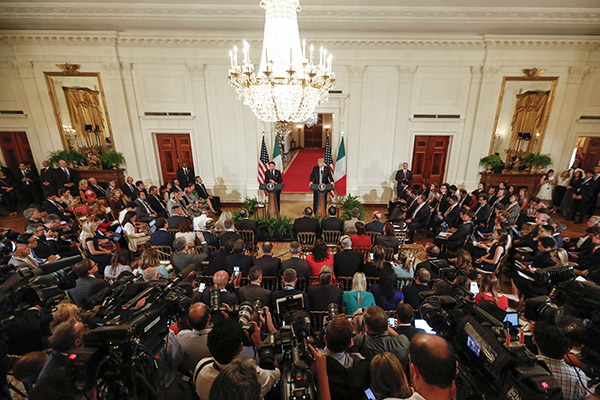
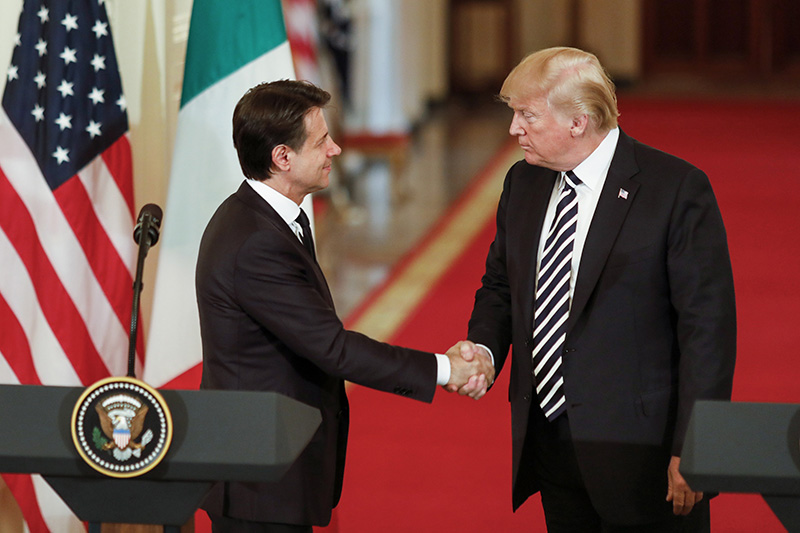
President Donald J. Trump participates in a joint press conference with Giuseppe Conte, Prime Minister of the Italian Republic, Monday, July 30, 2018, in the East Room of the White House. (Official White House Photo by D. Myles Cullen)

President Donald J. Trump bids farewell to Giuseppe Conte, Prime Minister of the Italian Republic, following their meetings at White House Monday, July 30, 2018, in Washington, D.C. (Official White House Photo by Shealah Craighead)
The joint press conference began at 2:05 p.m. and ended 2:45 p.m. on July 30.
In his opening statement, President Trump welcomed Prime Minister Conte and congratulated him on an election victory in Italy. The prime minister currently leads a coalition government in the Italian parliament composed of two major political parties, Five Star Movement and League, with support from minor parties, Brothers of Italy, Associative Movement Italians Abroad and South American Union Italian Emigrants. Mr. Conte is an independent. Although not a member of the political parties that make up the current government, he supports the underlying political philosophy as conceived by its principals, titled Governo del Cambiamento, Government of Change.
“In your election, the Italian nation has reaffirmed the great traditions of sovereignty, law, and accountability that stretch all the way back to Ancient Rome,” said President Trump. “This proud heritage sustains our civilization and must be always defended.”
The president reaffirmed the close working relationship between the United States and Italy in matters of international security. He sees Italy a major player in combating Islamic and other forms of terrorism throughout the Mediterranean.
“Today, Prime Minister Conte and I are pleased to announce a new strategic dialogue between Italy and the United States that will enhance cooperation on a range of issues,” said President Trump. “This includes joint security efforts in the Mediterranean, where we recognize Italy’s leadership role in the stabilization of Libya and North Africa. They’ve been terrific.”
United States and Italy face similar crises at their respective borders in illegal immigration. Both countries share the same goal of combating and impeding the flow of undocumented migrants.
The president said, “Like the United States, Italy is currently under enormous strain as a result of illegal immigration. And they fought it hard. And the Prime Minister, frankly, is with us today because of illegal immigration. Italy got tired of it. They didn’t want it any longer.”
President Trump sees Italy a model for other countries to follow in curbing illegal immigration.
“The people of Italy have borne a great part of the burden for Europe through the course of the migration crisis. I applaud the Prime Minister for his bold leadership — truly bold — and I hope more leaders will follow this example, including leaders in Europe.”
Prime Minister Conte opened his side of the press conference with a few short sentences in English. He then spoke Italian for the remainder of the event with a translator to convey his words in English.
The prime minister’s opening statement was noteworthy for it reiterated the claim by President Trump that Italy is today a major figure in Mediterranean diplomacy and security.
Prime Minister Conte said, “Today, we will have made a great step ahead. We will start working in Italy. It’s a directorship (booth), as it were, in the Mediterranean between Italy and the United States. I would say that we’re almost twin countries in which Italy is becoming a reference point in Europe and a privileged interlocutor for the United States, for the main threats and challenges that we have before us, terrorism, and for all the crises that we see in the Mediterranean and, in particular, in regards to Libya.”
Questions from members of the press ranged from matters concerning NATO, the European Union, illegal immigration and recent reports of the United States economy growing at four percent.
Some questions were exclusive to Italy such as continued construction of the Trans-Adriatic pipeline that will connect oil and gas fields from Azerbaijan to Italy’s Apulia region. The project is scheduled for completion in 2020.
“As far as a pipeline is concerned, I’d like to see a competing pipeline,” said President Trump. “So, Mr. Prime Minister, I hope you’re going to be able to do that competing pipeline.”
The president then ended the press conference after encouraging words about the future of trade between the United States, Italy and Europe.
THE DEVIL AND FATHER AMORTH
Full Coverage of The New Documentary by William Friedkin, Director of “The Exorcist” and “The French Connection”
-
PRIMO's Review of the Film
- Highlighted Scenes of Italian Landmarks in the Film
- To Come Later...William Friedkin Shares Insights into How and Where "The Exorcist" Was Made in Washington, D.C.
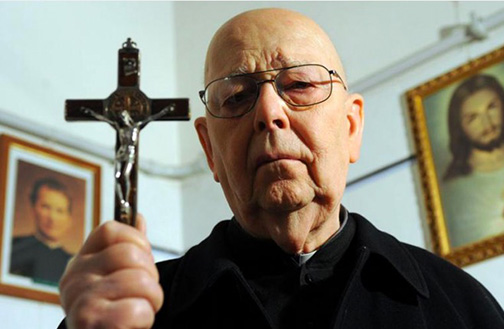
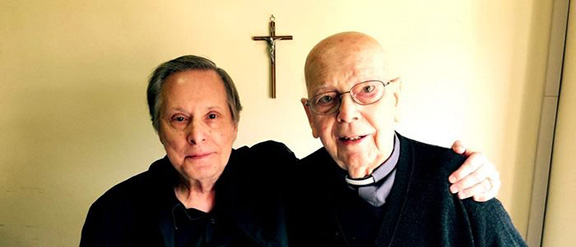
 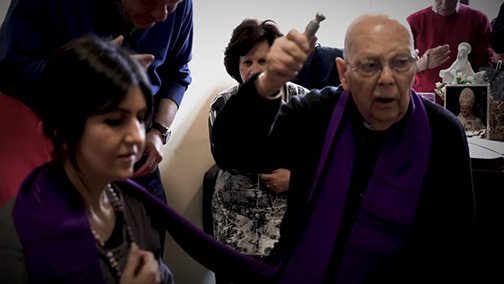
Satan is busy.
Cases of demonic possession are on the rise. We learn at the beginning of “The Devil and Father Amorth” that 500,000 people in Italy request an exorcism every year. The same goes for Spain and many countries in Latin America. More people are coming forward with claims that the devil or demons are taking over their bodies. The demand for Catholic intervention is high. So much so that the Vatican convenes a week long course each year to train priests to identify and cure demonic possessions. This workshop was first offered in 2005 and since then the number of priests in attendance have doubled to 250.
The model is Father Gabriele Amorth. He was a pioneer in the field of exorcism and a champion fighter against the devil. Father Amorth was the official exorcist of the diocese of Rome from 1992 until his death in 2016. As the foremost expert on demonic possession, he was often newsworthy. In recent years, he made a host of stunning revelations such as “Harry Potter,” yoga, and other contemporary offerings were just instruments of the devil. He said whole groups, even countries could be possessed. He thought ISIS was overtaken by Satan as were both Hitler and Stalin. He even thought the devil’s spirit had infected the Vatican.
Never mind the headlines, Father Amorth was no charlatan. The practice of exorcism has its rules and regulations. In 1990, he along with five other priests founded the International Association of Exorcists. The organization based in Rome retains a mission to review cases of demonic possession and share information on how best to combat the devil. A set of principles remain in place. An exorcism is the last resort. Only when a person is uncured after examination and treatment by licensed physicians and psychologists can she be seen by an exorcist. Often, it was Father Amorth who was called upon to expel demonic spirits. Before he died in 2016, he claimed to have performed over 150,000 exorcisms.
Now comes a new film to further establish Father Amorth’s legacy. It is “The Devil and Father Amorth,” a disturbing yet fascinating documentary now showing in movie theaters across the country. The film recounts the work of Father Amorth and shows the first ever authorized account of him performing an exorcism. The film comes to us from the man who is rightly credited, along with William Peter Blatty, for advancing the concept of demonic possession throughout the world. He is the director of “The Exorcist,” William Friedkin.
A list of America’s greatest filmmakers of the last 50 years will no doubt include William Friedkin. He is a lead member of a generation of directors that came of age in the 1970s such as Martin Scorsese, Francis Ford Coppola and Steven Spielberg.
It was Friedkin who practically kicked off the decade when he won the Oscar for best director in 1971 for “The French Connection.” The film also won an Oscar that year for best picture and for best actor, Gene Hackman. Friedkin followed that success with another. In 1973, he made “The Exorcist.” If there ever was a film that deserved an Oscar for best direction and best film, it was “The Exorcist.” But it was shockingly bypassed that year when Oscars for best director, best film and a host of other categories went to “The Sting.”
With or without Oscars, Friedkin’s two back-to-back cinematic masterpieces gave him the credibility to embark on his most personal and ambitious film, yet; one he still considers his favorite, “Sorcerer.” It was a 1977 remake or reinterpretation of the 1953 Italian-French production “Wages of Fear,” as directed by Henri-Georges Clouzot. “Sorcerer” contained Friedkin’s signature intensity and innovation. It came with tight frames, handheld shots and, as always, a fast pace. The film was bold and provocative but not a hit. It was greeted with ambivalence among critics and suffered from bad timing when it was released the same summer as “Star Wars.”
Friedkin’s career underwent reevaluation with his later films. Always a vanguard, he wrote and directed “Cruising,” a 1980 film slightly ahead of its time that starred Al Pacino. It was a dark and sinister post-noir journey of New York’s underground gay S&M scene. He made “To Live and Die in LA,” a 1985 crime thriller that featured a riveting car chase reminiscent of “The French Connection.” Good and bad scripts then came the director’s way. He could still tell a good story as he did in “Killer Joe” and “The Hunted.” What was lacking was nirvana. The critical and popular acclaim he found in “The French Connection” and “The Exorcist” went missing. That is until now…
“The Devil and Father Amorth” is Friedkin at his best. He gives us a riveting documentary for a new generation to savor his unique style. It is 1973 all over again. The film latches on to the viewer within its first few seconds and doesn’t let go until the last credits roll. The film is horrifying, disturbing and controversial. The belief in God is confronted head-on. It is a stark and mesmerizing exploration of terror and faith. The viewer is not the same after seeing this film.
Friedkin said that he is at his best when he approaches a film as a journalist. This is what he did in “The French Connection” and “The Exorcist” and what he does here in “The Devil and Father Amorth.” He gives us a record. He shows us the action. He conveys the subjects as they are. We are left to decide. Do we believe or not?
Italy was a key reason why “The Devil and Father Amorth” was made. The film came about by chance and circumstance. Friedkin had been directing opera in Italy in recent years and was given the Puccini Prize in Lucca. He was enticed by the beautiful walled city and home of Giacomo Puccini. From there, he visited the Leaning Tower of Pisa. Italy had cast her spell. He wanted to see more. Rome. The Vatican. St. Peter’s. The Sistine Chapel. He thought his friend, Andrea Monda, a religious scholar, could get him in to meet Pope Francis, but that was not possible. The pope was on travel. Was there anyone else he wanted to meet? Father Amorth, he said. And if possible, could he observe an exorcism. And if possible, could he film it.
This was a first. Exorcisms are intensely private. Only family of the person possessed and selected priests can attend. Father Amorth, however, knew Friedkin from his work in cinema. “The Exorcist” was his favorite film, he said, and one he claimed was a vital step forward in enlightening the general public about demonic possession and exorcism.
Born in Modena in Italy’s Emilia-Romagna region in 1925, Gabriele Amorth came from an upper middle class family. As a teenager, he became a partisan fighter when Mussolini returned from exile and established the Salo Republic. Gabriele fought beside socialists, communists, and anarchists. Yet, he came out of the conflict with the hope of stabilizing Italy. He worked in the youth wing of the Christian Democrat party and helped Giulio Andreotti, Italy’s future prime minister, get elected to parliament. In 1951, he was ordained a priest and joined the Society of Saint Paul, a religious institute founded by Father James Alberione in Alba, with a goal of spreading the Gospel through modern communication. In 1986, he began an apprenticeship in exorcism under Father Candido Amantini. After Father Amantini died in 1992, Father Amorth became the official exorcist of the diocese of Rome.
In an opening scene of “The Devil and Father Amorth,” we see Father Amorth make his way with a walker through the halls of the Order of Saint Paul office and rectory. It is the first day of May and his birthday. He is 91. Old and frail, the cleric is set to face his arch enemy Lucifer. The subject for dispossession is an Italian woman in her early 40s who goes by the name Cristina. Reality is apparent. The film is different than its inspirational predecessor “The Exorcist.” Cristina comes without green bile or other makeup effects. She seems normal. She is an architect. She has a boyfriend. Yet, she claims the devil is inside her. He pushes her to do things against her will. We see her sitting on a chair covered in a red sheet. Her family is there with her. She is held down by several men. Father Amorth initiates the Roman Ritual of 1614. He holds the crucifix. He calls for the intercession of saints. He leads the participants in prayer. He then orders the devil from Cristina’s body.
Friedkin was the lone filmmaker in the room. He records a fight on a simple handheld video camera. It is the devil versus Father Amorth. It is an evil parasite against the power of Christ. Cristina struggles to be released. She tries to overpower the men holding her down. She then screams in anger. The voice is deeper, scratchier and maybe not her’s.
Footage of the exorcism is just one part of “The Devil and Father Amorth.” As he did in “The Exorcist” and “The French Connection,” Friedkin conveys the complexities of a story without one part overshadowing the other. He takes the audience from Rome to Los Angeles where he shows footage of the exorcism to brain and neuro surgeons at UCLA Ronald Reagan Medical Center. He visits psychiatrists at Columbia University in New York. He then returns west to speak with Auxiliary Bishop of the Diocese of Los Angeles Robert Barron.
The film sets up the never-ending debate between the Old World and New. Ideas and beliefs collide. Faith versus science. Myth versus reality. The medical experts in the film admit to not knowing the exact cause of Cristina’s violent reaction during exorcism. UCLA surgeons surmise a malfunction in the temporal lobe. However, they are open to other causes and treatments outside the practice of medicine. There soon appears on screen a digital map of the brain. Demonic possession might be a delusion resulting from a tumor. The team of psychiatrists at Columbia University are more confident in their diagnosis. They believe Cristina suffers from Dissociative Trance and Possession Disorder. Although open to other causes and effects, the rituals of faith may have overwhelmed Cristina. The intercession of saints. The signs of the cross. The use of Holy Water. Maybe she has fallen prey to group think and the pressures of mysticism.
Then comes the most noteworthy of interviews in Auxiliary Bishop Robert Barron of Los Angeles. He is smart, calm and articulate. He begins with equivocation about demonic possession and the need for exorcism. Yet, as the interview progresses, he makes a starling revelation. He admits to being unqualified to perform an exorcism. He does not have the acumen to take on the devil. He lacks the level of spirituality as endowed by Father Amorth.
The music. The raw close ups. The tight shots and intimate framing. The unrehearsed comments by experts. This is the kind of documentary we we grew up on. What puts the “The Devil and Father Amorth” above the current fare of contemporary documentaries is Friedkin’s signature style. He remains a master of confrontation. He holds nothing back. Although he says the film is different than “The Exorcist,” we cannot help but make a connection between the two. It is the aging Father Amorth who is the film’s central character. He died some months after Cristina’s exorcism. He is in many ways a carbon copy of Father Lancaster Merrin, the aging priest played by Max von Sydow in “The Exorcist.” Either in a non-fictional or fictional setting, the two priests are the same. They come armed with Scripture. They come endowed with the Cardinal virtue of fortitude. They come to do battle. In either of them, the devil has met his match.
Italian Religious and Historic Landmarks in "The Devil and Father Amorth"
The director William Friedkin convened a press event at Georgetown University recently to discuss how “The Devil and Father Amorth” relates to his most famous film, “The Exorcist.” He was joined by Julie Blatty, wife of the late William Peter Blatty, author of the bestselling novel upon which the film was based. Friedkin and Blatty agreed that “The Exorcist” was neither a horror film nor a horror novel. It was a religious work, they said; a story of faith in the face of evil.
The same theme applies in “The Devil and Father Amorth.” Friedkin shows a number of Italian churches and other religious landmarks in the film. They come as either part of the story or as symbolic images to underscore a message of faith. What follows are the churches and historical sites in Italy that make up key scenes in the film.
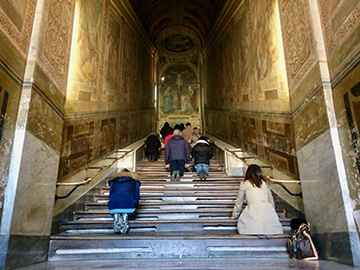 SCALA SANCTA SCALA SANCTA
Depicted near the beginning of the film is Scala Sancta, a set of 28 marble stairs inside the chapel of Saint Sylvester across from the Archbasilica of Saint John Lateran in Rome. The documentary shows Catholic pilgrims from all over the world who ascend the stairs on their knees in acts of devotion. These stairs were once inside the palace of Pontius Pilate in Jerusalem. They were removed and transported to Rome in the 4th century at the request of Saint Helena, mother of the Emperor Constantine. It are these stairs that Jesus Christ climbed to be seen and sentenced to death by Pilate.
 SANTA MARIA REGINA DEGLI APOSTOLI ALLA MONTAGNOLA SANTA MARIA REGINA DEGLI APOSTOLI ALLA MONTAGNOLA
Father Gabriele Amorth died four months after performing the exorcism that was shown in the film. The subject was a woman who went by the alias Cristina. Friedkin said that Father Amorth was the most holy man he ever met. With camera in hand, he captured the outpouring of grief among mourners at the priest’s funeral inside Santa Maria Regina degli Apostoli all Montagnola. Translated, it is church of Saint Mary, Queen of the Apostles, of Montagnola, a suburb outside Rome. Father Giacomo Alberione, founder of the Society of Saint Paul, had the church built after World War II. It was named a minor basilica in 1984 by Pope John Paul II
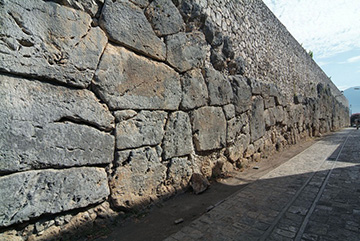 ALATRI ACROPOLIS ALATRI ACROPOLIS
Alatri is the setting for the climax in “The Devil and Father Amorth.” It is a village of 30,000 people and located 90 miles south of Rome, in the province of Frosinone, in the Lazio region. Friedkin went there to meet Cristina after Father Amorth died. The setting is the Acropolis of Alatri and its great cyclopean wall. No mortar in the structure binds the stones together. Instead, large limestone blocks were carved according to specific measurements and tilted when stacked. The wall was erected before the time of ancient Rome and stands today after surviving many earthquakes and other destructive phenomena.
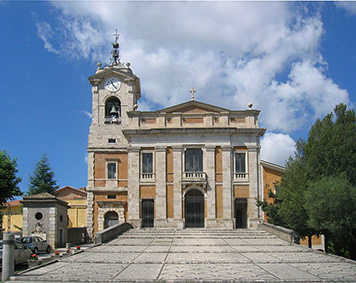 ALATRI CATHEDRAL ALATRI CATHEDRAL
Friedkin was scheduled to meet Cristina for an interview on the grounds of the acropolis at the Basilica of San Paolo, otherwise known as the Alatri Cathedral. The location was once the burial chamber for the Hernici tribe and then a temple for the Roman god Saturn. The church was completed there in the 13th century with a facade added in the 19th century. Inside are relics of Saint Sixtus, one of the earliest popes who served in the first century A.D. Cristina did not show up to the basilica as originally planned. Rather, she changed her mind and met Friedkin at the Church of Santa Maria Maggiore in Alatri.
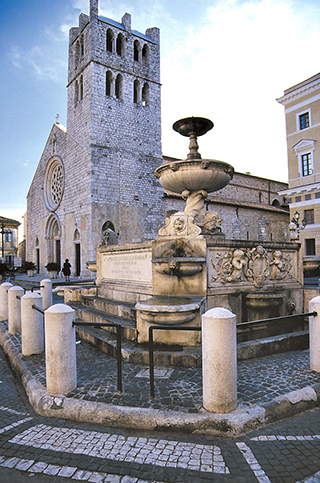 SANTA MARIA MAGGIORE SANTA MARIA MAGGIORE
One of Italy’s oldest Roman Catholic churches outside Rome is Santa Maria Maggiore in Alatri. The grounds once hosted a temple to Venus. The church was built there in the 4th century and was renovated in the 14th century with an added bell tower and an inscription by Pope Boniface IX. In the film, Friedkin met with Cristina, her boyfriend and her mother inside the church. The
BATTLE LOST - OUR LADY OF LORETO IS DESTROYED
By Truby Chiaviello, Publisher & Editor PRIMO Magazine
Before - Our Lady of Loreto once contained a beautiful interior for Mass said to a flock of devoted Italian American Catholics
 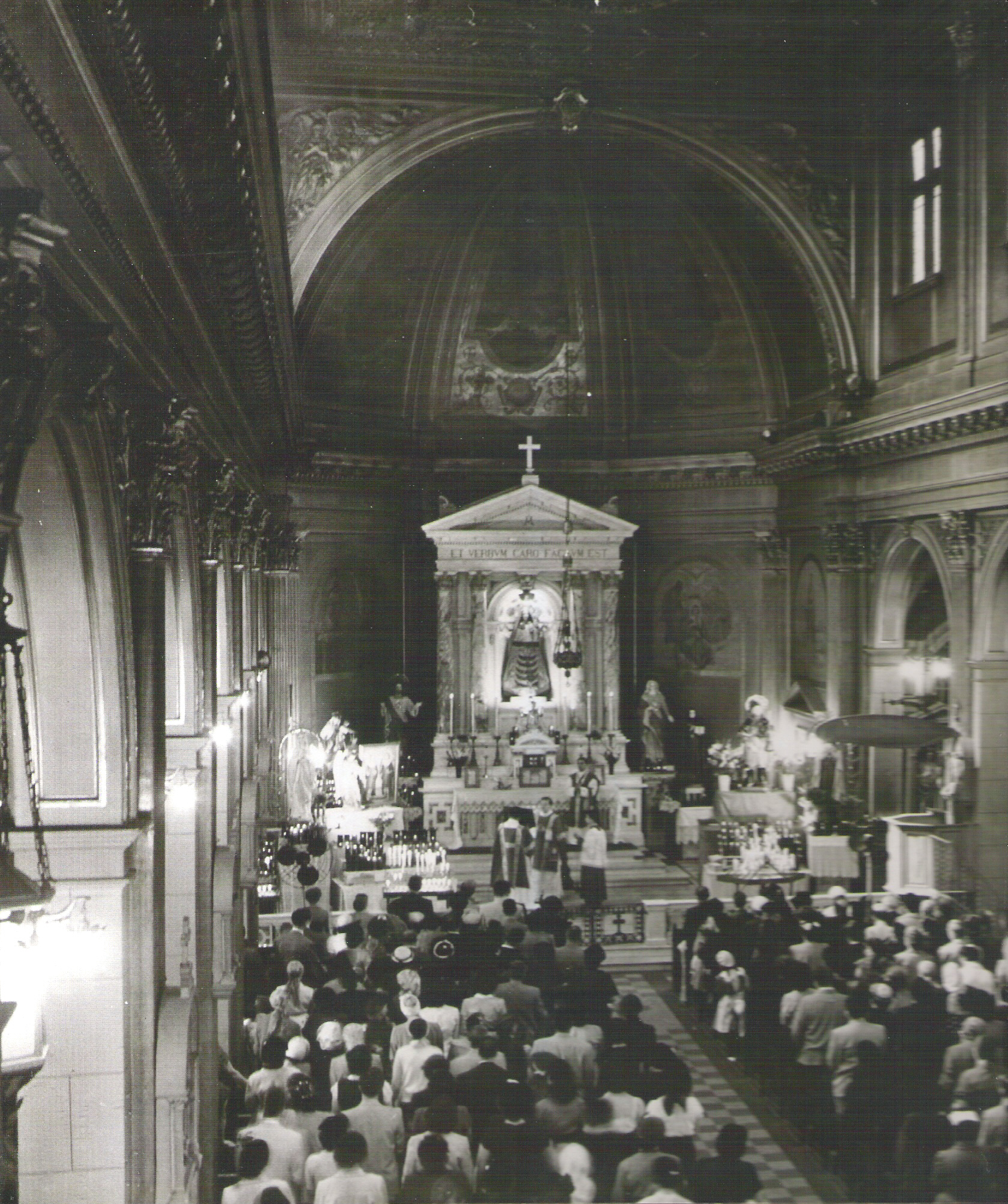
After - Our Lady of Loreto today, on the cusp of total demolition, as requested by Bishop Nicholas DiMarzio, of the Brooklyn archdiocese.
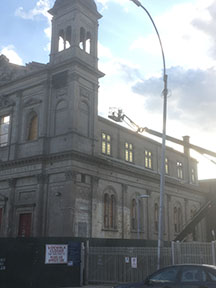 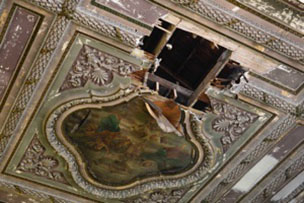 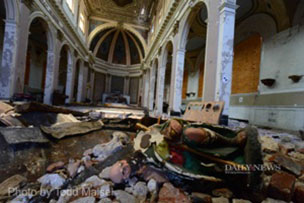
Our Lady of Loreto has been destroyed.
The Brooklyn archdiocese got its way. And the church, built by Italian immigrants over 100 years ago, is now being demolished.
One photo was taken by my son Samer last week. You can see how the church is boarded up. No doubt this is a demolition site. You can see how the roof has been removed and, thus, the interior. It is reminiscent of what happens to a building that had a bomb dropped on it.
The church was near a subway stop. I visited there in 2009. Our Lady of Loreto was located on 124 Sackman Street in Brooklyn. Part of Brownsville or Ocean Hill neighborhood in Brooklyn. Some refer to the area as East New York.
This neighborhood was once a densely populated Italian neighborhood. About 110 years ago, the Italian immigrants wanted a Catholic church of their own. A house of worship that conveyed their language, customs and traditions. So, they volunteered their money and labor. Many of the men who lived there were carpenters and bricklayers and had experience in construction.
They hired an Italian architect and built a beautiful church. You can see photos here from the web site devoted to Our Lady of Loreto, a web site maintained by Dominick Mondelli. The interior was beautifully designed. There is a ceiling mural. A statue of San Innocenzo at Loreto. Here is a photo of Mass at the church in 1937. You can see that it was well-attended and made up of many devoted parishioners.
In the 1960s, Our Lady of Loreto was turned over to the Brooklyn archdiocese. And 40 years later, the archdiocese wanted to tear it down. That’s when PRIMO got involved. I published a feature article on the effort of Italian Americans who once lived in the neighborhood, who attended Mass there at Our Lady of Loreto, who were baptized there, had their first communion and confirmation there; and so they organized to save the church.
Besides PRIMO, the Italian Tribune, mainstream newspapers and news sites in New York such as the New York Times and the Daily News and others brought a lot of publicity to the preservation effort. And all things were offered to the archdiocese including a creative development idea that preserved the church.
This was back in 2009 and 2010 and the Brooklyn archdiocese agreed to retain the church in return for demolishing the rectory next door. The archdiocese was supposed to upkeep the structure and they didn’t. And here is where one wonders about the intentions of Bishop Nicholas DiMarzio and other officials of the Brooklyn archdiocese. Did they intentionally allow Our Lady of Loreto to deteriorate so they could claim it as a danger to the community and apply for demolition? This is what happened over the last 18 months. The fight to preserve it included petitions and donation drives.
Now, you hear the news about how divided is America. Well, the activists involved came from all walks of life. Not just Italian Americans, but people who live in the neighborhood or are active in it - these were African Americas who’s ancestors come from different parts of Africa and the Caribbean - these were Latinos - Asians - everyone was involved to keep Our Lady of Loreto because they all recognized it as a beautiful church - a real work of art in so many ways.
In the end, however, the fight was lost. The legal appeals exhausted and the archdiocese had their way - and Our Lady of Loreto is being torn down.
In its place will be affordable housing.
You can see photos here, taken by Todd Maisel, of The Daily News, how the the murals, statuary, the decorative elements - all being beaten and destroyed. The time it took to build them, the craftsmanship, the artistry - all for nothing - destroyed.
Very sad.
This is not the only church to face its extinction. PRIMO reported on St Peter’s in Duluth, Minnesota and the effort there by Robin Mainella to save it. The situation began also around 2009 and I wanted both churches to survive. But I thought if one was going to face it’s demolition, it would have been St. Peter’s. Instead, the opposite happened. An artist by the name of Jeffrey T. Larson purchased St. Peters and has now turned it into an art academy.
One wonders, why couldn’t the same thing have happened to Our Lady of Loreto. This part of Brownsville is still knee deep in poverty and dispossession. It remains a place plagued by urban decay. People need more than just a roof over their heads. They need inspiration from art. They need faith. One wonders why the Brooklyn archdiocese didn’t sell the property to another denomination - perhaps a Protestant faith - now prevalent in the area. In return for keeping the church and its interior decorations, the people there could have a place of worship. It is not unusual for Catholic churches to be converted to Baptists and other Protestant denominations.
Unfortunately, that’s not the case. The turning point was when the parish turned itself over to the archdiocese. Any time you build something, you should try and keep it, because those whom you hand it over to, really don’t care and they will destroy it when the moment arises.
The silver lining are the activists, all ethnicities and backgrounds, that tried to save Our Lady of Loreto. We commend them for their efforts. We commend also the Italian immigrants who built this church. They came to build up the city and not tear it down - unlike the archdiocese and now even some others in local government that want to tear down statues of Columbus and others.
We learn from this sad situation, that the effort to preserve our Italian heritage in New York and all over America is well worth the fight and we have to keep fighting whenever we are faced with destruction of our heritage.
Here is a list the people who fought the good fight to save Our Lady of Loreto. If I missed anyone, please let me know, as I want to include anyone and everyone who fought the good fight. We commend the following people who led the effort to preserve the church.
Flavia Alaya
Gianfranco Archimede
Simeon Bankoff
Patricia Dean
Jeff Dunston
Gerald Ferretti
Barbara Florio
Lester Ford
Louis Gallo
Marialena Giampino
Monica Kumar
Farrah Lafontant
Donny Mondelli
Jillian Mulvihill
Barabara Anne Pascucci
Charles Piazza
Stanislao Pugliese
Miriam Robertson
William Russo
Joseph Sciame
Paula Segal
Zulmilena Then
Mario Toglia
Gabriella Velardi Ward
Marilyn Verna
Lakai Worrell
Here is a link to the web site devoted to Our Lady of Loreto in Brooklyn. http://www.loretochurch.com. Below is a YouTube video presentation on the destruction of Our Lady of Loreto.
REVIEW OF “FIRE AT SEA”
A Film About Italy’s Illegal Migrant Crisis and The Island of Lampedusa
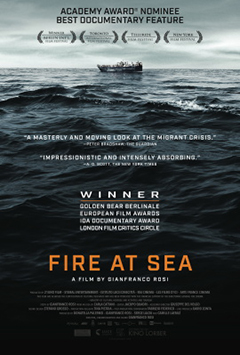
“Fire at Sea” is a documentary that came out in 2016 about the illegal migrant crisis in Italy. It is a snapshot of ground zero in the crisis - the island of Lampedusa - 120 miles off the coast of Sicily. Lampedusa belongs to the province of Agrigento; one of several of the Pelagie islands and is actually closer to Africa than Sicily - just 113 miles from Tunisia.
“Fire at Sea” is directed by Gianfranco Rosi and the film won a number of awards and was nominated for an Oscar in 2016 for best documentary.
Rosi is famous for his well crafted shots of people and places in Italy and elsewhere that exist outside the narrative of mainstream media. He made a film called "Sacro Gra" in 2013, that focused his lens on the highway that circles Rome - the Grande Raccordo Anulare. He showed the people who work there and live next to the highway.
“Fire at Sea” takes the same approach. The director lived for a year on the island of Lampedusa where he accumulated extensive footage.
He gives us two stories in one.
The first deals with the Sicilian families of the island who rely on the sea for their livelihood. These are fishermen who either cast nets or dive down in the water to catch fish.
The second centers on the Italian coast guard and others who are called to rescue illegal migrants at sea.
As we learn in the beginning of the film from text on screen, some 400,000 illegal migrants have entered Italy by way of Lampedusa the last 20 years, resulting in some 15,000 casualties. Rosi said the purpose in making the film was to bring greater awareness to the plight of migrants.
Lampedusa has a history that dates back to antiquity as the first step in foreign invasion, be it the Greeks, Phoenicians, or Saracens. This time, it is the people from Nigeria, Eritrea and the Arab nations of Africa who are invading, not to conquer Italy, but to find work and live outside the law.
As the film shows, the perilous journey from Africa is made in boats that are old and subpar. They are terribly overcrowded and come with faulty engines that leak diesel fuel to seriously burn passengers. Quite often, passengers on these boats call for help and the Italian coast guard and navy are sent to the rescue. Lampedusa is a temporary holding center before migrants are transported to the Italian mainland.
There are several key characters in the film; one of whom is Dr. Pietro Bartolo - the sole physicians on the island. He originally came there to treat the fishermen and their families. Now with waves of illegal migrants coming ashore, he is recruited to give them emergency medical care. Many suffer from heat stroke and dehydration. In one scene, we see him in the middle of the night examining all arrivals for viruses and infectious diseases. In another scene he speaks about examining cadavers - those who died at sea.
The film goes back and forth between the daily lives of Italian islanders and African migrants.
It opens with another main character - a 12 year old Italian boy Samuele Puccilo - who sometimes works with his uncle, a fishermen on the island. His is an existence reminiscent of Huckleberry Finn. We see him break a branch off a tree to make with it a slingshot. He and his friend take target practice at cactuses that grow wild there. We follow the boy as he explores the rugged seashore and back country of the island.
“Fire at Sea” is an exceptional film to be watched by all who are interested in Italy. For me, this was a special film because over the years, I have spoken to some PRIMO readers, who came from Lampedusa. They work as fishermen off the coast of California. With “Fire at Sea” I was able to attain a better understanding of their homeland. Here is a place where Italy is at her best, be it the fishermen and their families or the Italian first responders who rescue illegal migrants.
These Italians stand in stark contrast to the EU officials who have done practically nothing in stopping this crisis. Italy is bombarded by illegal migration and there seems no end in sight. One only hopes of leadership to come to stop this problem. To learn more about the film "Fire at Sea" please log on to http://www.fireatsea.com .
PRIMO REVIEW
“GOMORRA” - SEASON TWO
Italy’s Action-packed Series Continues to Mesmerize

“Gomorra” is Roberto Saviano’s non-fiction masterpiece that continues on the small screen, this time in the way of a television series from Italy: Season two - the story of Camorra crime families who fight it out in Naples.
Season one of “Gomorra” left off last year in a bloody cliffhanger. Young upstart Genny Sevastano had taken over the family reigns while his father, Don Pietro remained in jail. Genny was gunned down by rival, and once loyal soldier, Ciro Di Marzio. A violent yet cunning figure, Ciro had allied himself with drug lord Salvatore Conte, who together, they killed off many of the members of the Sevastano clan. All seemed lost for the family that once had total control of Scampia-Secondigliano, a drug-dealing haven in North Naples. Yet, Don Sevastano made a stunning escape. Pretending to be insane, he was transferred out of a maximum security prison only to have the police caravan attacked by his most loyal soldiers and he was finally released from bondage. Now in hiding outside Italy, he must strategize a return to Naples. Meanwhile, son Genny opened his eyes while laying in a pool of his own blood before the series ended last year. No doubt, he survived the shooting.
“Gomorra,” comes back to America, for its second season, direct from Italy, by way of SundanceTV, beginning on Wednesday, April 26, 10/9C.
Viewers who enjoyed season one of “Gomorra” will find season two equal, if not better. The series contains 12 episodes that are amazing in all their fare, from compelling plot twists and turns to intense action-packed scenes, both shocking and alluring in choreographed violence. The acting is excellent as is the direction and other elements, including cinematography, editing and score. It is a quality production from Italy, from beginning to end.
Ciro Di Marzio is once again the central character of the series. A gangster who has achieved a lifelong goal of becoming the lead boss of Naples, he is played superbly by actor Marco D’Amore. He may be the top of the criminal food chain but still finds himself in a fragile existence. Ciro has set up an Alliance of Camorra clans to work out problems and disputes. He hopes peace among the disparate gangsters will allow them all to reap huge profits in the drug trade. Yet, his plan is undermined by top drug dealer Salvator Conte, who is played with icy perfection by actor Marco Palvetti. There is also the pending threat by Pietro Sevastano and son Genny who seek to take back the reigns of power of the underworld. Played to excellence, respectively by Fortunato Cerlino and Salvatore Esposito, Pietro and Genny are a father-and-son team who find themselves estranged from one another by ambition and jealousy. The challenge is not just their return to Scampia-Secondigliano, but to recover a familial bond, which at the outset of the series, seems lost.
Like season one, season two of “Gomorra” was filmed almost entirely on location in Naples. There are many scenes where the city comes to life in all its glory. We see beautiful landmarks, stunning resorts, and the bright lights and energetic sounds of thriving commercial districts, restaurants, and nightclubs. Naples is one of Italy’s great cities; yet, too often overlooked by travel writers and travel agents who only know the city as one drenched in poverty and decay. Although Naples is far more than that, it may nevertheless take a TV series built upon the notoriety of crime and violence associated with the city, to allow people to see its better side.
If so, then “Gomorra” does an excellent job. Not a single scene in the series can be greeted with indifference by viewers. New engaging characters are introduced to give the series a freshness in every episode. For instance, there is Patrizia Santoro, a beautiful young woman, now responsible for her younger brother and sisters, after her father was killed. Played with soft supremacy by Italian actress Christiana Dell’Anna, Patrizia is the niece of Malammora, a loyal underboss of Sevastano. She is recruited to be the don’s messenger, while he hides out in an obscure apartment, somewhere in Naples. Another female lead, played with cool distinction by Cristina Donadio, is Annalisa Magliocca, aka Scianel, a blond tigress who takes over her brother’s drug dealing section. The two woman must hold their own in a world of criminal machismo where their courage and tenacity are continually tested.
Memorable scenes are many in “Gomorra.” They come not only in screen action but also in an array of lines that give resonance to the series. One highlight is a poker game that is invaded by armed robbers. Scianel is one of the players who is unflinching while a gun is pointed at her head and her cash winnings are stolen. She reminds one of the masked bandits that “Scianel” is a nickname given to her for a mastery of perfume. All in the frame of a deadly warning, she tells their leader before their escape, “And you already stink of death.”
Series writers, one of whom was Saviano, convey Neapolitan wisdom in the way of dialogue. One scene shows Don Sevastano, still in hiding, despondent and forlorn over not trusting his son. He expresses his disappointments in himself as a father to Patrizia who is there with an enlightened reply: “My father always said little children need milk, but grown children need trust.”
What sets the series apart from others is its imaginative action. In one episode, friends of Genny find themselves left out of the booming drug trade. They are in their early 20s but are given the worst of turfs in the way of back alleys and the littered ground under highway bridges. Practically weaponless, they seek their own clan to overtake one apartment building where older gangsters make a fortune selling drugs. “We have our hatred,” answers their leader Track to a budding member who expresses doubt in their lack of arms and resources. In a strike reminiscent of a well-planned military operation, the young clan attacks in the dead of night wearing black clothes and masks and swinging metal clubs. All tenants are taken out of their homes while drug dealers and gangsters on a top floor are killed and beaten. It is a fast paced riveting scene, unlike any in television.
The story of “Gomorra” is one of survival in the most brutal and ruthless of settings. The series is a watershed reminder of the crisis of Naples and other European cities that have allowed breakdown of law and order. Politicians and government officials see not the desperation of Scampia-Secondigliano, a well-designed apartment complex that was built for the purpose of giving a safe and functional homestead to Italy’s poorest and most in need. Instead, what we see today are criminal gangs who employ terror and violence to control entire sections of a city. Something must be done. And, perhaps, this series will wake up the political class to once-and-for-all take Naples out of the hands of criminals.
As we did for season one, “Gomorra,” season two, is highly recommended by PRIMO. It remains an awesome television series, one to be watched and cherished in the United States this year and the years to come. For more information on the series “Gomorra,” please log on to www.sundance.tv.
GOMORRAH PREMIERES WEDNESDAY AUGUST 24 AT 10/9c SUNDANCE TV
What remains one of the best films of the past 15 years, “Gomorrah” now comes to the television screen, by way of the Sundance channel, as an ongoing series, direct from Italy.
Based on the novel by Roberto Saviano, “Gomorrah” is a relentless and immersive analysis of the social, economic and political effects of the Camorra (the Neapolitan Mafia), the forces fighting against them and the evolution of the Italian criminal world. The series tells a completely original story chronicling the fate of a great criminal empire and paints a reality in which values often follow perverse, criminal logics dictated by the instinct of survival. However, “Gomorrah” also delves into the family ties and interpersonal dynamics within this emotionally fraught and dangerous world.
The tale depicts a powerful clan and the complex mechanisms that regulate the management and maintenance of a traditional mafia empire, from the everyday exercise of power to new expansion strategies to the ultimate tool for victory: armed struggle. Within the clan are figures both big and small who battle alongside and against their ‘family members’ and rivals, committing deeds ranging from heroic to insidious while attempting to maintain the family’s stronghold and ascend its ranks.
“Gomorrah” was filmed on location in the Scampia suburb of Naples, as well as in Milan, Ferrara, Rome and Ventimiglia, with some exteriors shot in Barcelona; 156 locations were used for indoor scenes. Shooting lasted over 30 weeks for a total of 216 days, 92 of which employed special effects. Filming was made possible thanks to the support of the Regione Campania Film Commission.
The screenplay of “Gomorrah”, written by Stefano Bises, Leonardo Fasoli, Ludovica Rampoldi and Giovanni Bianconi, is based on the deep and thorough research of journalist Roberto Saviano, which culminated in the 2006 non-fiction book Gomorrah. The novel went on to win numerous literary prizes and found worldwide success, boasting over 10 million copies sold and eventually being translated into 51 languages. A 2008 film adaptation was an international smash, garnering the Grand Prix at that year’s Cannes Film Festival.
“Gomorrah”, the television series is directed by Stefano Sollima, Francesca Comencini, and Claudio Cupellini and produced by Sky Atlantic, Catteya and Fandango in collaboration with La7, in association with Beta Film. The stars are Italian actress Maria Pia Calzone and actors Marco D’Amore, Fortunato Cerlino, Salvatore Esposito and Marco Palvetti. For more information please log on to http://www.sundance.tv/series/gomorrah.
THE RUSSO BROTHERS MAKE A GREAT FILM IN “CAPTAIN AMERICA: CIVIL WAR”
Whether you’re Team Cap or Team Iron Man, there is one thing we can agree on: The most anticipated movie of the summer, “Captain America: Civil War,” is a triumph in every way.
“Captain America: Civil War” is not only an excellent comic book film, which pleases comic book fans, but it is also an excellent action thriller that everyone will enjoy. The Italian American masterminds of “Captain America: Civil War,” are directors Joe and Anthony Russo. The brothers deliver compelling action and storytelling, with likable characters, a compelling plot and great moments of drama and comedy.
There is no doubt that their directorial debut in the Marvel franchise, “Captain America: The Winter Soldier,” was a huge success. They surpassed the first Captain America film in terms of critical reception. They managed to maintain their credibility by giving us a movie this summer that has all that, and more. One aspect are characters and we mean the newest additions in the Marvel universe, along with the returning favorites like Iron Man, Black Widow, Hawkeye, etc. Anyone who went see to this film knew what they wanted: The surprising reappearance of Ant-Man, the reveal of the mysterious Black Panther, and probably the most important addition, the uplifting and exciting Spider-Man.
If you are not a comic book fan, the film has plenty of action for you. Fight scenes are excellently choreographed and leaves you on the edge of your seat wondering what’s going to happen next. Another plus in the film are its numerous film locations. Berlin, Vienna, and of course the great city of New York, accompany a fictional location in the country of Wakanda, the residence of Black Panther. All of these locations co-align with one another, to drive the plot forward. The film’s pace is perfect, not too fast and not too slow.
Direction, being the most important part of any film, is especially vital here. The style of the Russo brothers appeals to the eye. The story here is more unique compared to previous Marvel films. The superheroes organize themselves in two rival groups when they disagree about a new governmental policy. We will not spoil as to what makes the story more than it is; but we can tell you that this is the Marvel film that makes you sympathize with the characters, as to what their motives are when why they fight each other.
One of the best features of the film is how the Russo brothers handle all the characters. There are over 15 iconic heroes and each has a distinct purpose in the story. The challenge was to retain their unique attributes without making the film feel overcrowded. Characters such as Iron Man, Spider-Man and Ant-Man call for unique directing styles, and the Russos capture them perfectly.
Although this is one of the best comic book films to date, we nonetheless could not overlook a minor flaw, (and we hate to be nit-picky). The overall story seemed at times more of an “Avengers” film rather than a “Captain America” one. It is not because of the new characters, but the way the story revolves around key heroes which, at times, takes your attention away from our beloved Steve Rogers, aka, Captain America.
Besides that minor flaw, the film is excellent, from start to finish. The characters and their motivations keep you captivated. The action will keep you on the edge of your seat. “Captain America: Civil War” is fantastic in every way, a must-see film, no matter if you are a comic book fan or not
REMEMBER FDR'S SURVEILLANCE OF ITALIAN AMERICANS IN WORLD WAR II
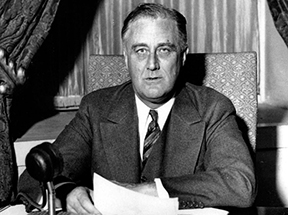
By John Romano, Attorney at Law
On this anniversary of this night of infamy December 7th, as a postscript to your story on President Franklin Roosevelt which gave the impression that he was a trusted friend, admirer, and respected Italians, you should have added an asterisk to the article, since FDR issued Presidential Executive Orders in WWII 1942-1944, proclaiming and declaring Italian Americans as "Enemy Aliens", requiring massive government family registrations with the Justice Department, internment of 13,000 Italians, and FBI squads of 24 hour surveillance on all Italian American families, late night searches of apartments, kidnapping, arrests, travel restrictions, etc.
The FBI campaign ot Terror, Fear and Horror was called, "The Secret War" against all Italian Americans who were labeled Domestic Enemies of America.
Today, you the Reader must answer these questions: There were 100,000 War casualties of Italian Americans in WWII and 1 million servicemen in the Armed Forces. Was the Mother who buried her son after he was killed fighting overseas an enemy alien, as declared by FDR? America wants no memory of this time. The silence of America remains today a betrayal of all the Italian Americans who served in WWII.
Yes - We Shall Not Forget FDR.
THOMAS JEFFERSON'S INTEREST IN ANCIENT ROME
The Library of Congress Contains Many Books from Jefferson Written by Rome's Greatest Philosophers and Historians
In a letter to his granddaughter Anne Cary Bankhead, Thomas Jefferson praised the work of the great Roman historian Tacitus. He wrote: “Tacitus I consider the first writer in the world without a single exception. His book is a compound of history and morality of which we have no other example.” After he was president, he wrote John Adams “I have given up newspapers in exchange for Tacitus and Horace.”
Jefferson read Tacitus and other Roman historians to help him establish a longlasting republic in America. Tyranny was to be avoided. Jefferson was especially interested in the fall of Rome and how transgressions among the political class there led to corruption and weakness. He did not want America to repeat the mistakes of Roman history.
The Constitution was a guide to retain the American republic. Laws enacted by the legislature had to be consistent with democratic principles. Jefferson and many of the founding fathers studied the Justinian Code, a set of laws necessary for a democracy. Justinian was one of Rome’s last great emperors who ruled in Constantinople. A man of immense energy, Justinian reformed Roman law and established what became known as the Justinian Code; a key reference for many of the laws enacted by Congress and state legislatures in America.
Many figures from ancient Rome penned histories and firsthand experiences that were read by Jefferson. Julius Caesar’s accounts of the Gallic War and Civil War in Rome helped Jefferson understand not only military strategy but how political divisions in a country could unravel and lead to armed insurrection and war. He read Titus Livius (Livy), the Roman historian who lived from 59 B.C. to 17 A.D. Originally from what is today Padua, Livy published an extensive history of Rome titled “Ab Urbe Condita Libri” or “Books since the city’s founding”; more commonly known as “The History of Rome.” Another historian Jefferson read was Plutarch. Born in Greece, Plutarch became a citizen of Rome and wrote biographies of famous figures of the classical period, many of whom were Romans such as Julius Caesar, Cato, Cicero, Fabius Maximus and others.
Since Jefferson was fluent in Latin, he could read the works of Roman historians and philosophers, written in their native language. He comprehended an unvarnished version of history and knew better than his educated peers the ideals and experiences of Rome.
More than any other figure from ancient Rome, Cicero had the most influence on Jefferson and other founding fathers such as John Adams and James Madison. Cicero’s writings expounded on the nature of Republican democracy and its laws. Yet he wrote on other topics, as well, such as old age, friendship and skepticism. A key political figure during the era that preceded and followed Julius Caesar’s reign, Cicero conveyed through his model the fragile nature of democracy, as he was eventually put to death by orders of Mark Anthony after Caesar was assassinated in the Senate.
The books are many that Jefferson sold to the Library of Congress. Those written by Roman philosophers, statesmen and historians remain a key source of reference, not only for members of Congress and their staff, but all Americans who wish to retain the republic as begun by the founding fathers.
BOOKS READ BY THOMAS JEFFERSON
A Current Exhibit at the Library of Congress Underscores Italy's Influence on
America's Third President
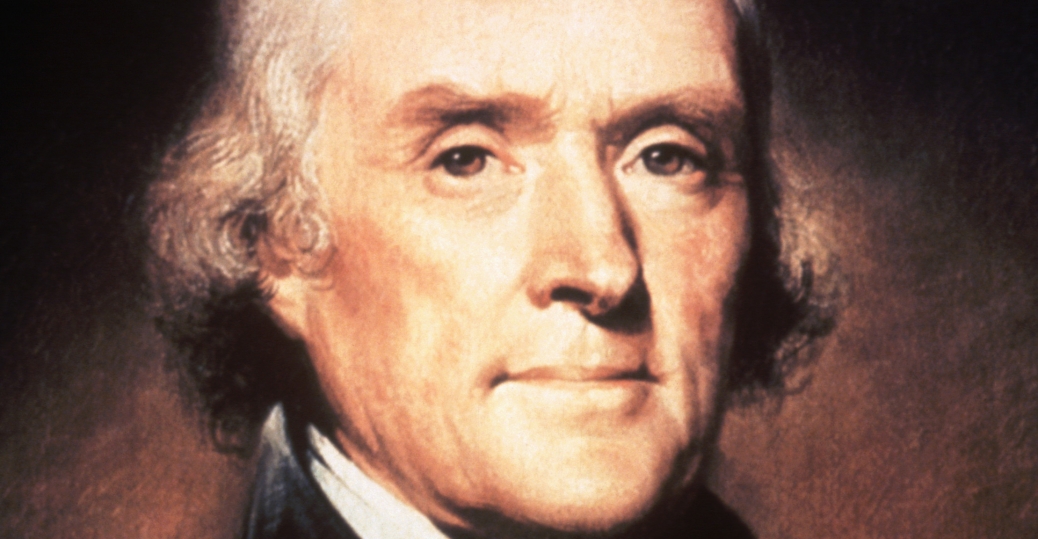
A win-win.
That’s one way to describe the deal brokered between Thomas Jefferson and the U.S. government in 1815 that brought back to life the Library of Congress after a fire destroyed it.
Our third president and author of the Declaration of Independence was famous, among other things, for an immense library at his home in Monticello, Virginia. The United States government wanted to equal, if not surpass, Jefferson's and all other libraries. However, during the War of 1812, the British burned the U.S. Capitol building, which at the time housed the Library of Congress, and the government lost its entire stock - some 3,000 volumes.
To restart the Library, Jefferson agreed to sell his collection of books and journals to the United States. An accumulation by him of some 6,487 volumes was more than double the size of the government’s lost inventory. He transferred his repository to the Library of Congress for the price of $23,950.
Today, the Library of Congress pays tribute to the historic transaction with an exhibit titled “Out of the Ashes.” Free to the public, the display is a portion of the books Jefferson sold to the Library. On the second floor of the main building, visitors can examine the titles and authors of books through glass enclosed bookshelves. The collection highlights the scope of Jefferson’s interests in science, art, history and language.
The exhibit is most notable for its inclusion of books published in Italy and written by Italian authors. As Jefferson was fluent in Italian, he was able to read and comprehend Italy's best writers and scholars. Such books underscore the enormous influence Italy had on Jefferson and the founding of America.
Take for exampe, one book, positioned at the outset of the exhibit, titled “Navigazioni e viaggi” (Navigations and Travels). Published in Venice in 1555 and 1556 by Giovanni Battista Ramusio, the two volume anthology details first-hand accounts of great explorers from Marco Polo to Ferdianand Magellan. Included in the book is an in-depth description of Africa, translated from Arabic to Italian, originally written by Leo Africanus, an explorer from Morocco who was captured by Spanish pirates, taken to Rome, and then freed after he was baptized by Pope Leo X.
“Navigation e viaggi” is one of many books from Italy and other countries that inspired Jefferson to acquire and explore new land for the country when he was president from 1801 to 1809. Under his watch the government brokered the Louisiana Purchase, which added much of what is today the country’s Midwestern region. As president, he sponsored the Lewis and Clark expedition to explore and record the country's geography from the Appalachian Mountains to the Pacific Ocean.
Next up is Jefferson’s interest in Ancient Rome.
To find out more about the Library of Congress exhibit “Out of the Ashes,” please log on to http://www.loc.gov/visit/maps-and-floor-plans/thomas-jeffersons-library/.
SAVE SAINT PETER’S
A Plea by Advocate Robin Mainella to Prevent Demolition of Her Beloved Church

From top: A recent photograph of St. Peter's, a plaque showing the year built, an interior shot of the stained glass window,
and a historical photo of some of the Italian immigrants who built the church for their Italian community in Duluth.
I would like to tell you about a wonderful, one-of-a-kind historic church.
Closed in 2010 by the Duluth Diocese, St. Peter's Church in Duluth, Minnesota's 'Little Italy' is For Sale. Their asking price is $150,000. I pray that somebody will buy this gem and restore and repurpose in a manner that would celebrate the lives of the Italians who built their very own church out of necessity.
The Old-World skills of the Italian stonemasons make this 'landmark' stand out as a treasure that beckons awe. St. Peter's is located at 810 W. 3rd St., Duluth, MN 55806.
Standing tall and proud on hallowed ground on the steep, rocky hillside overlooking our beautiful harbor, this structure is the only example in Duluth of a Romanesque/Gothic Revival Church built of solid stone. St. Peter's needs a lot of TLC by someone who will understand and appreciate its rich history.
St. Peter's represents the cultural heritage of the Italian immigrants who settled in Duluth in the early 1880's. Closed churches are successfully being repurposed; Historical and Cultural Centers and Museums, Music Centers, Restaurants, Microbreweries utilizing the high ceilings, just to name a few. St. Peter’s meets four out of seven criteria for Local Historical Landmark designation. Only one criteria must be met to be eligible.
January 2015, after 4 ½ years of perseverance, the Nomination for Landmark designation finally went before the Duluth City Council for their decision, but the Duluth Diocese opposed and the Council therefore unanimously voted against Landmark status. That was a huge disappointment. A new owner of St. Peter's would have the opportunity to nominate again and I will help! Without opposition St. Peter's will certainly be given the recognition it deserves. With Landmark Designation there are many benefits; it would be eligible for Legacy Grants, CLG (Certified Local Government) Grants, and state tax credits which would help with restoration.
May this plea find that special someone who will love St. Peter's Italian Church as much as I do. Learning from our past is crucial to our present and future.
St. Peter's is looking for a new purpose to serve our community today and tomorrow. Thank you for this opportunity to share.
Editor’s Note: If you would like to help save St. Peter’s Italian Church, please contact Robin L. Mainella at rlmainella@charter.net. The location of St. Peter’s is 810 W 3rd St, Duluth, MN; MLS 6014323. Real estate agent is Frank Messina.

Special Announcements:
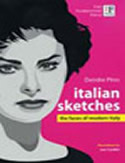 |
Buy "Italian Sketches: The Faces of Modern Italy," a new book offered exclusively by PRIMO Magazine. "Italian Sketches" profiles the most influential Italians of the 20th century. From Maria Montessori to Sophia Loren, from Federico Fellini to Bruno Cavalieri Ducati, "Italian Sketches" brings the stories of modern Italy's greatest men and women to Americans. Extensively researched, written, and edited, the book comes with original drawings from one of Italy's top illustrators. You won't read about Italy's modern icons anywhere else. Buy "Italian Sketches" today! |
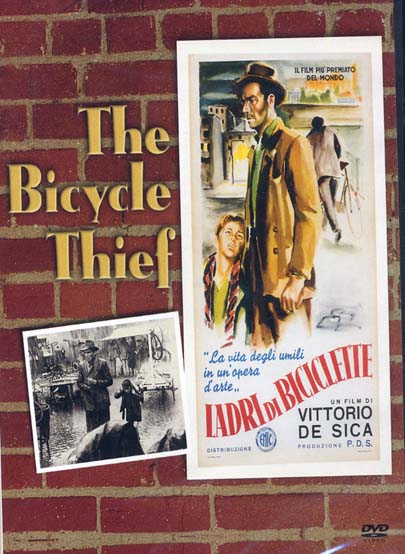 |
Browse Our Inventory of DVDs and CDs.
From Italy's classic era of cinema to contemporary documentaries on all things Italian and Italian American, PRIMO has a film perfect for you and and your family. Our inventory grows each day. Now on sale is our newest addition: "The Bicycle Thief," directed by Vittorio DeSica; considered one of the best films in history. Also, we have CDs of Italian folk music on sale. These are songs sung in Italy's regional dialects. Check out our DVDs and CDs today!
|
 |
Buy PRIMO Earrings
Italian pride never looked so beautiful. Our earrings are handmade, right here in the USA, from the finest material: Sterling silver, beads of jade, carnelian and agate - in the colors of the Italian flag – red, white and green! Buy them today! Just $14.95; the price includes shipping and handling. |
|
PRIMO In Italy..
3rd Edition 2014 Article Locations On The Map
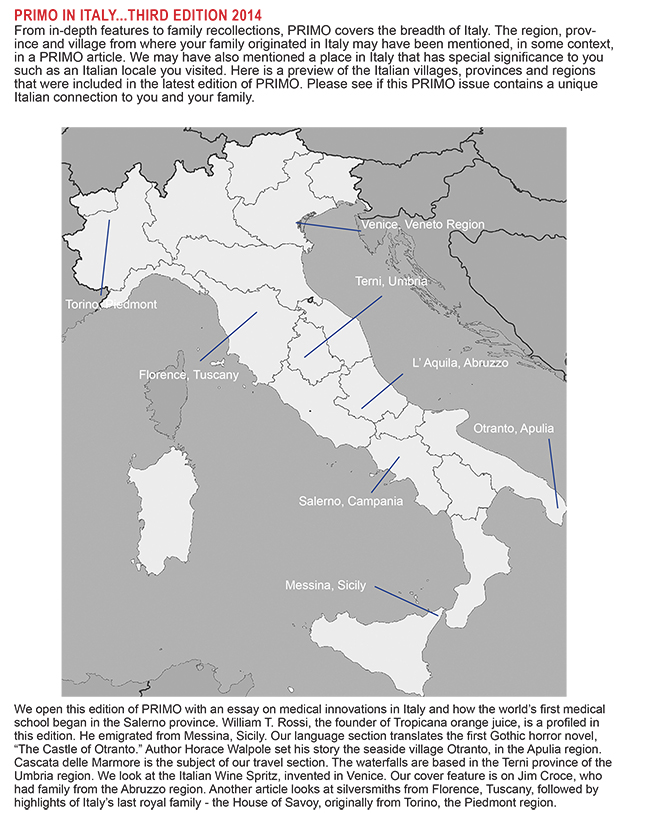













.jpg)













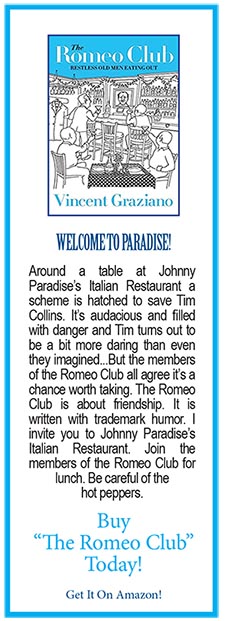

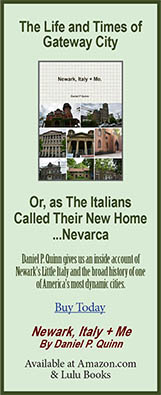

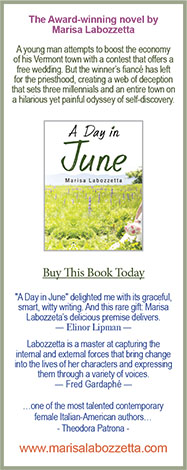




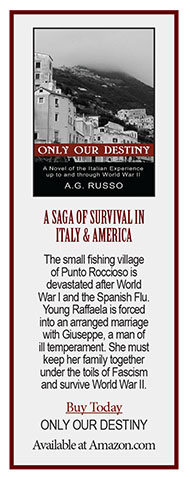


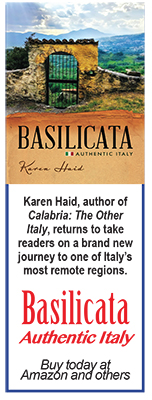
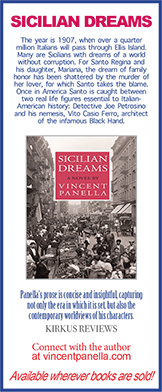


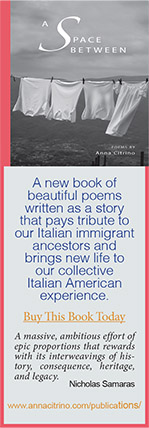



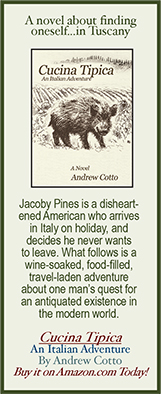
















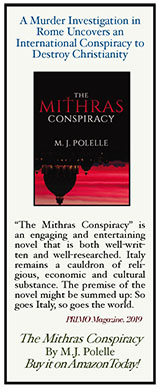







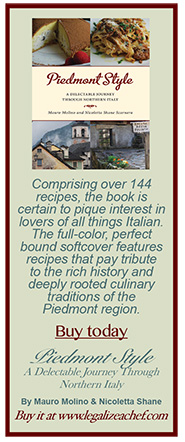

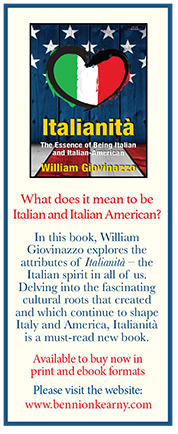 


















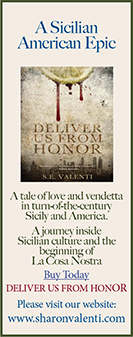
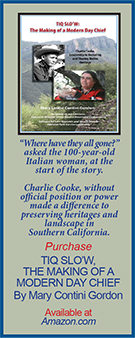

 









|

































































































 SCALA SANCTA
SCALA SANCTA SANTA MARIA REGINA DEGLI APOSTOLI ALLA MONTAGNOLA
SANTA MARIA REGINA DEGLI APOSTOLI ALLA MONTAGNOLA ALATRI ACROPOLIS
ALATRI ACROPOLIS ALATRI CATHEDRAL
ALATRI CATHEDRAL SANTA MARIA MAGGIORE
SANTA MARIA MAGGIORE

























.jpg)























































































